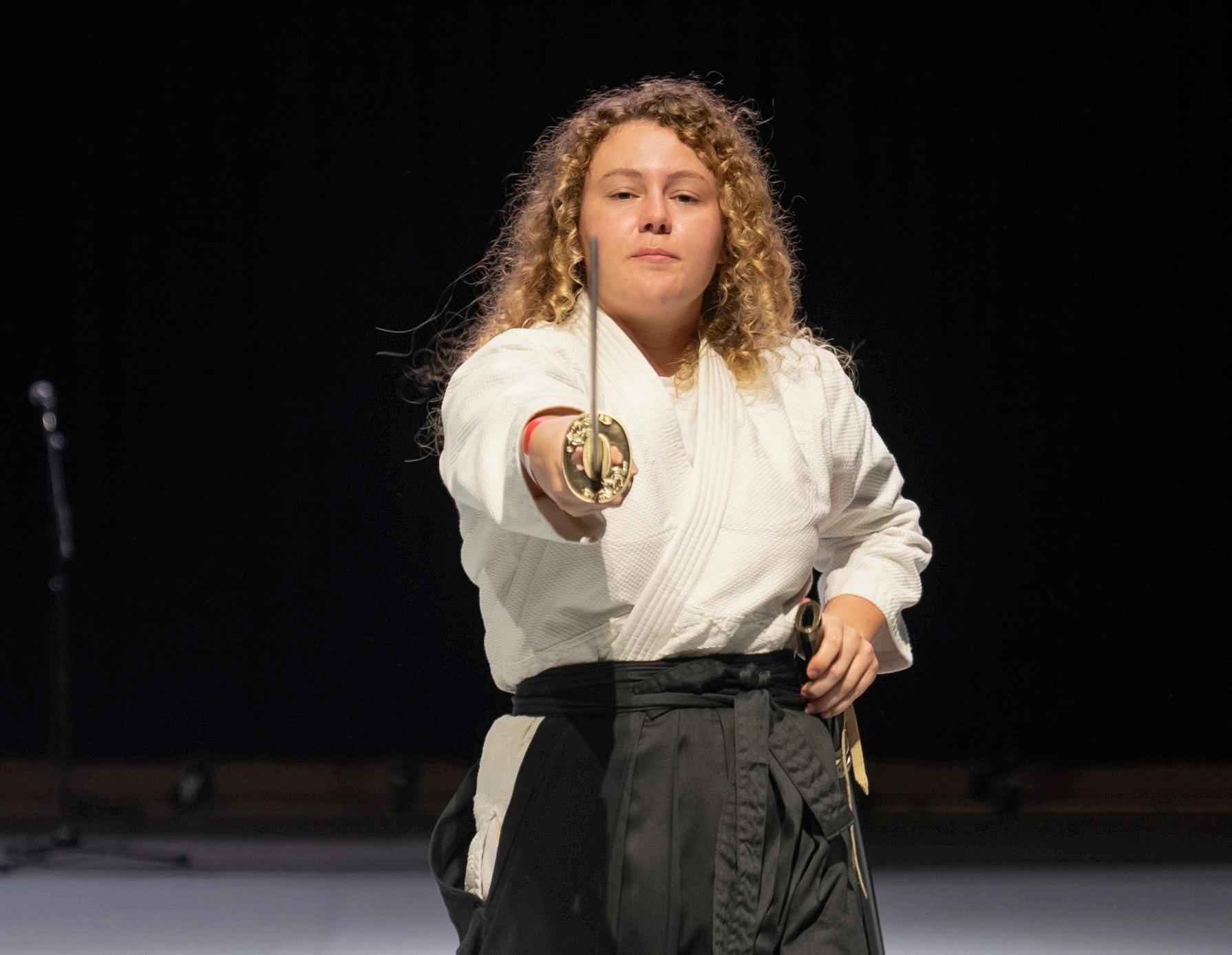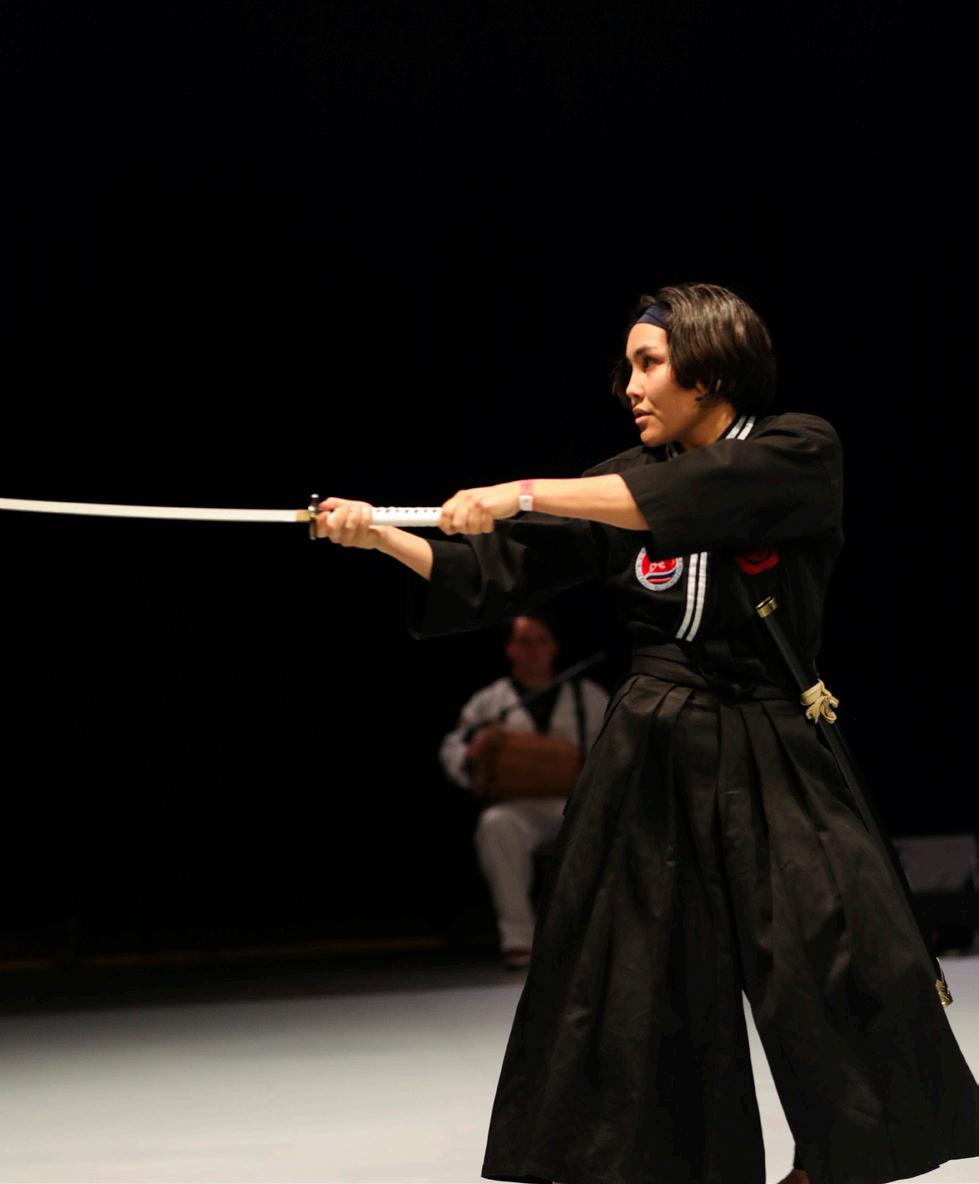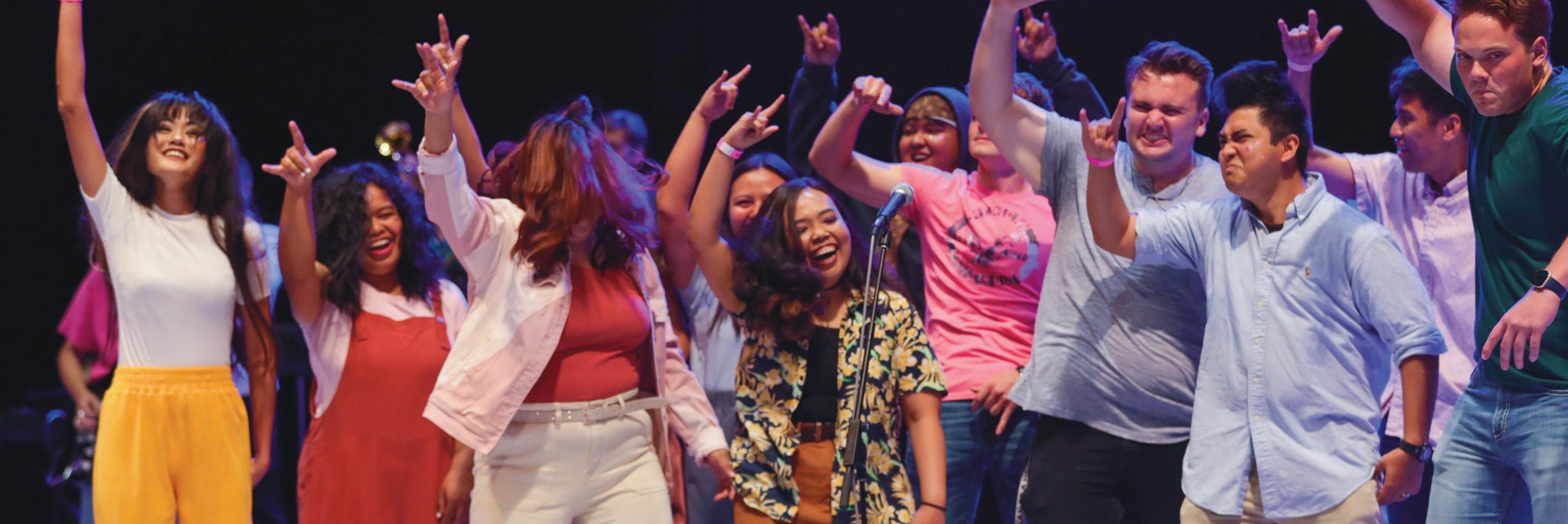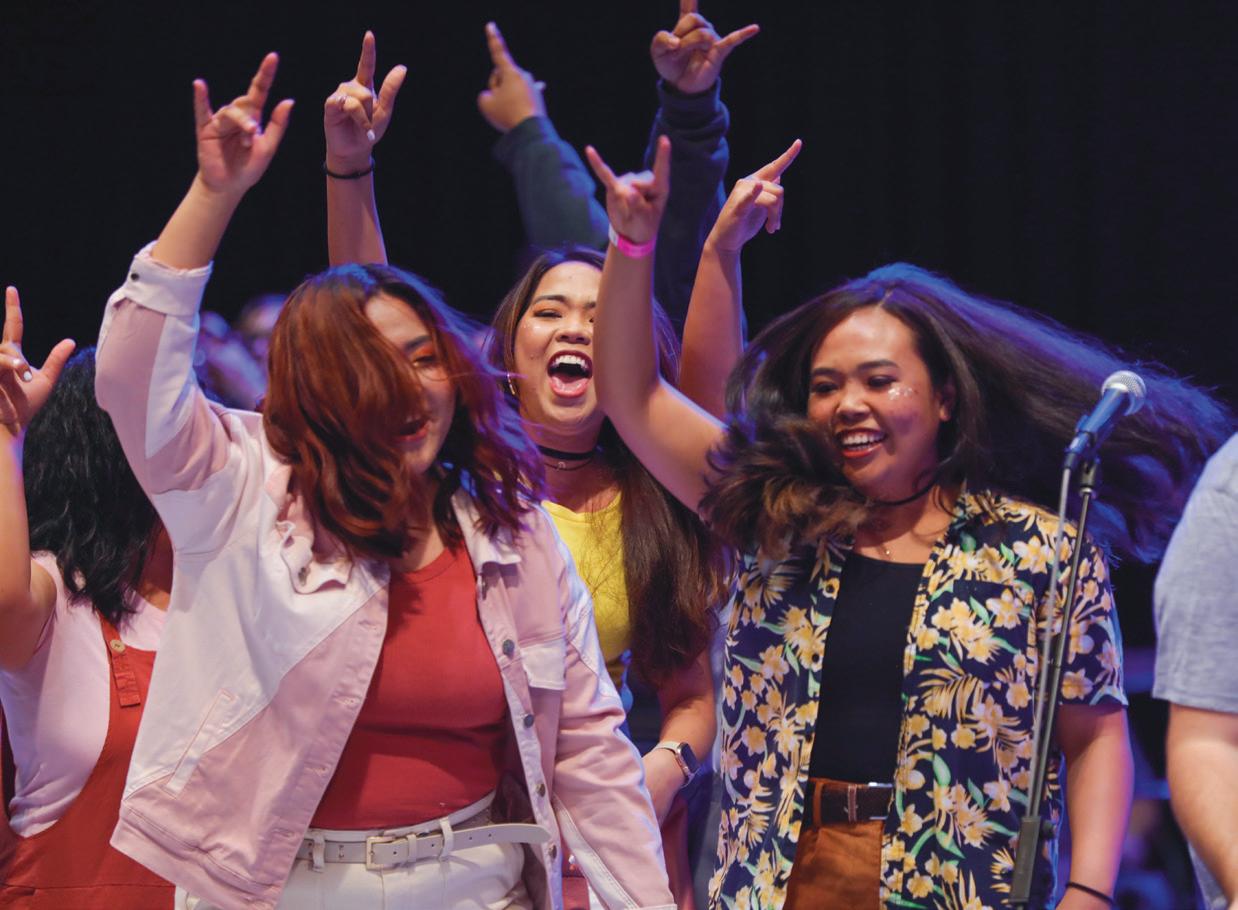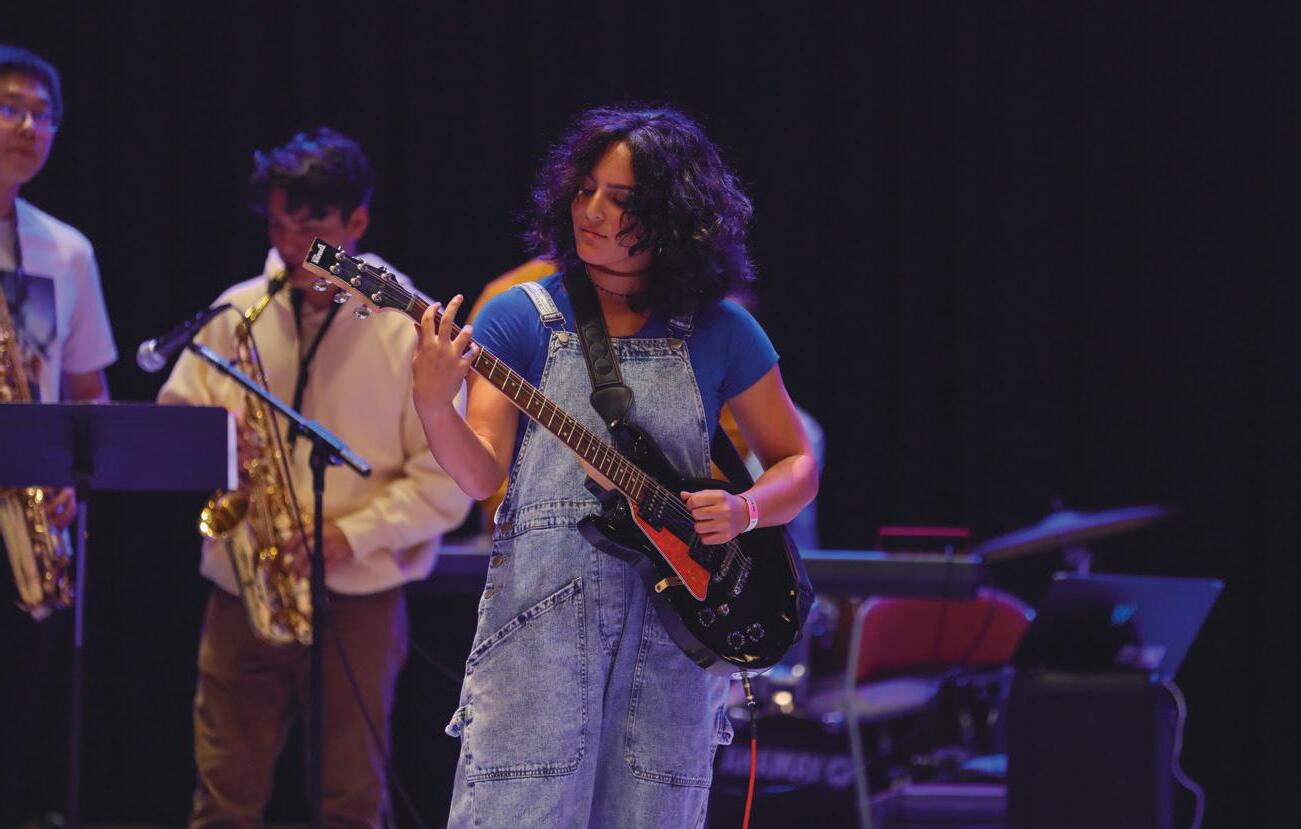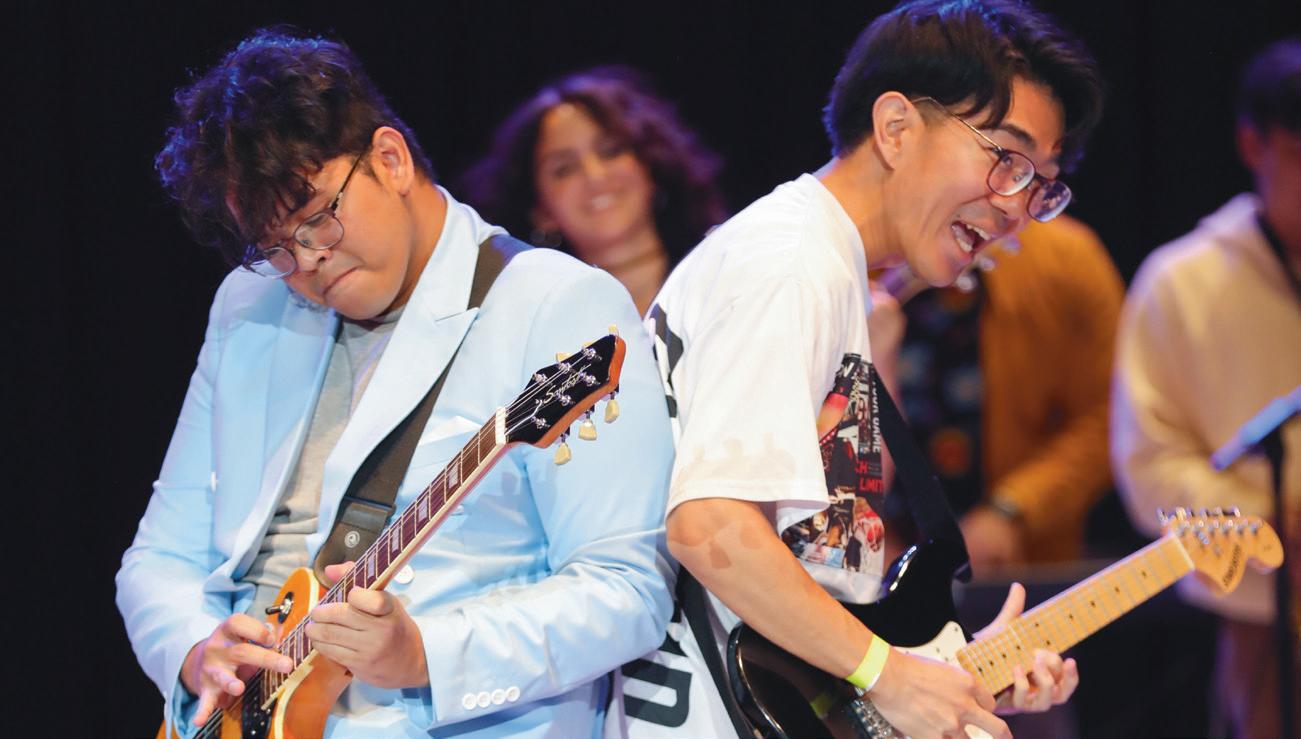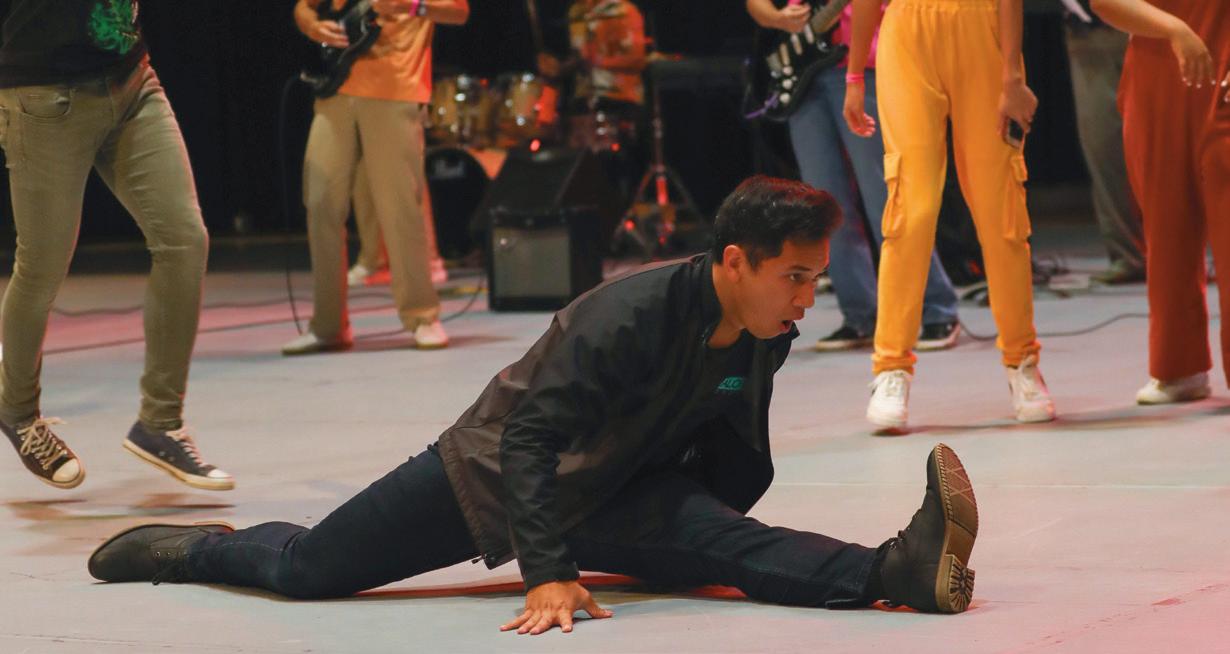THE LEADER THE LEADER

SPECIAL ISSUE






Advisor_Leeann Lambert
Editor-in-Chief_Rahel Meyer
Managing Edior_Hadley Wurtz
Managing Editor_Antoniette Yee-Liwanag
Art Director_Sugarmaa Bataa
Lead Photographer_Yui Leung
Copy Editor_Manhattan Ethington
Copy Editor_Hiu Ching Wan
Copy Editor_Lexi Langley
Copy Editor_Nichole Whiteley
Journalist_Abigail Harper
Journalist_Chenoa Francis
Journalist_Eli Hadley
Journalist_Linda Laulu
Journalist_Mahana Tepa
Journalist_Mutia Parasduhita
Journalist_Natasha Krisanalome
Journalist_Ranitea Teihoarii
Journalist_Sharini Shanmuganathan
Graphic Designer_Marlee Palmer
Graphic Designer_Yichi Lu
Photographer_Enkthuvshin Chimee
Photographer_Joseph Ariono
Photographer_Uurtsaikh Nyamdeleg
Photographer_Zane Saenz
NEWS CENTER: Box 1920 BYUH Laie, HI 96762
Editorial, photo submissions & distribution inquires: kealakai@byuh.edu
To view additional articles go to kealakai.byuh.edu
CONTACT: Email: kealakai@byuh.edu

Phone: (808) 675-3694
Office: BYU–Hawaii
Aloha Center 134
ON THE COVERS: Collage of Culture Night performers. Pictures by Monique Saenz.
ABOUT
The Ke Alaka‘i began publishing the same year the University, then called Church College of Hawaii, opened. It has continued printing for more than 60 years.
The name means “the leader” in Hawaiian.What began as a monthly newsletter, evolved into a weekly newspaper, then a weekly magazine and is now a monthly news magazine with a website and a social media presence.Today, a staff of more than 25 students work to provide information for BYU–Hawaii’s campus ohana and Laie’s community.
© 2023 Ke Alaka‘i BYU–Hawaii All Rights Reserved
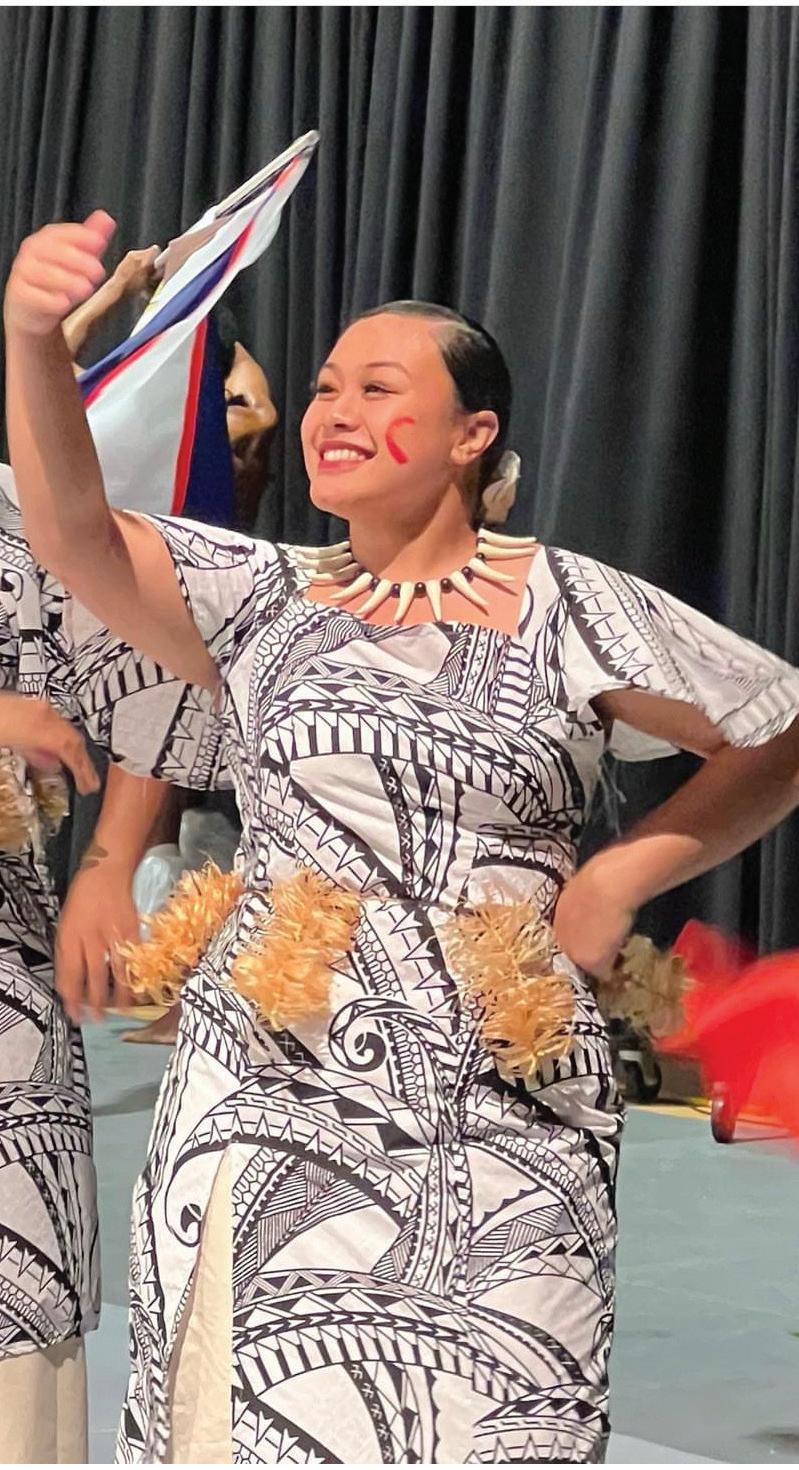
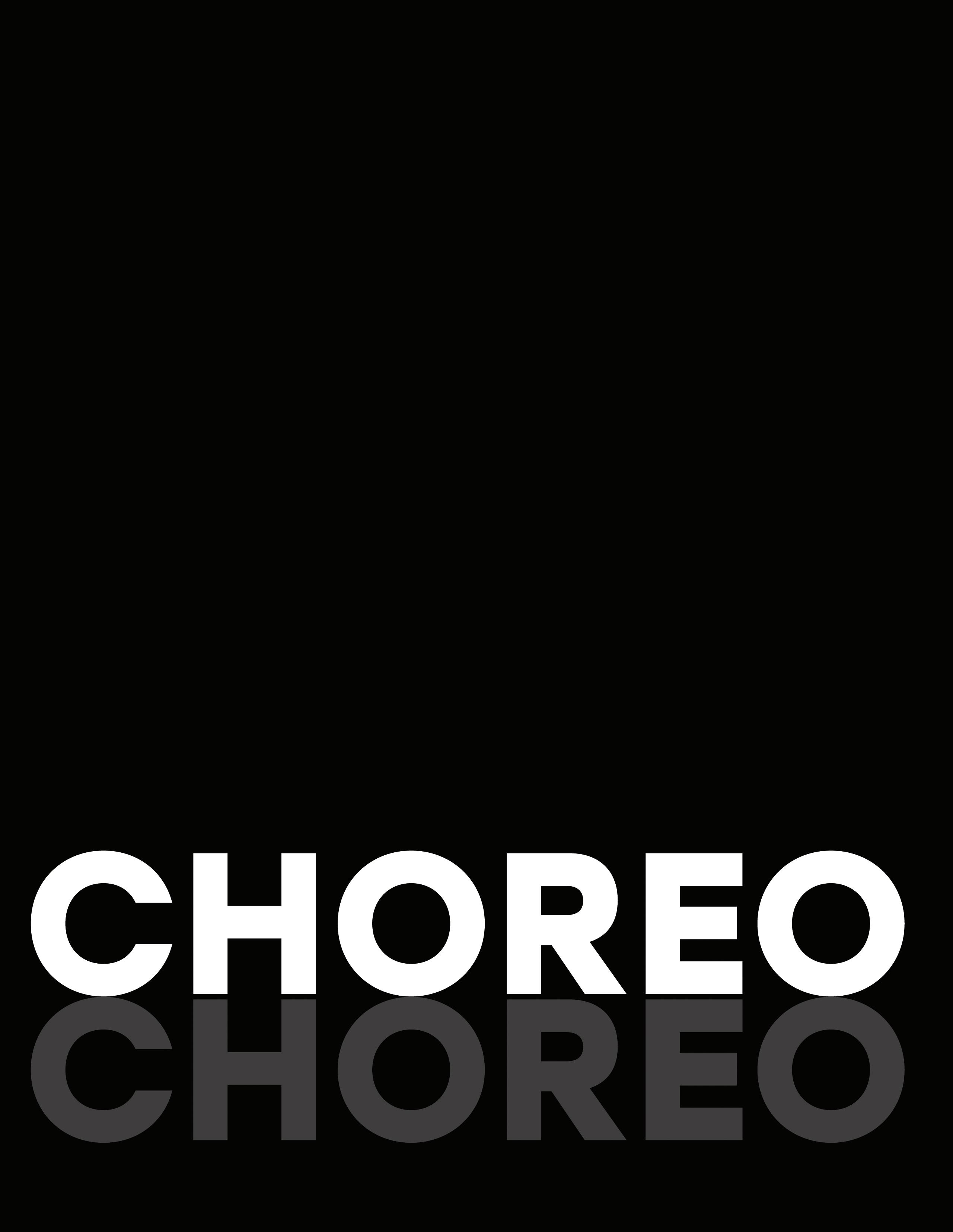
 Portrait of Krisha Terrobias representing the Filipino Club.
Photo by Monique Saenz.
Graphic by Sugarmaa Bataa (Kendra).
Portrait of Krisha Terrobias representing the Filipino Club.
Photo by Monique Saenz.
Graphic by Sugarmaa Bataa (Kendra).
Choreographers of the Filipino Club talked about the themes of their Culture Night performances, and how a combination of motion and emotion led to their dances having personal meaning.
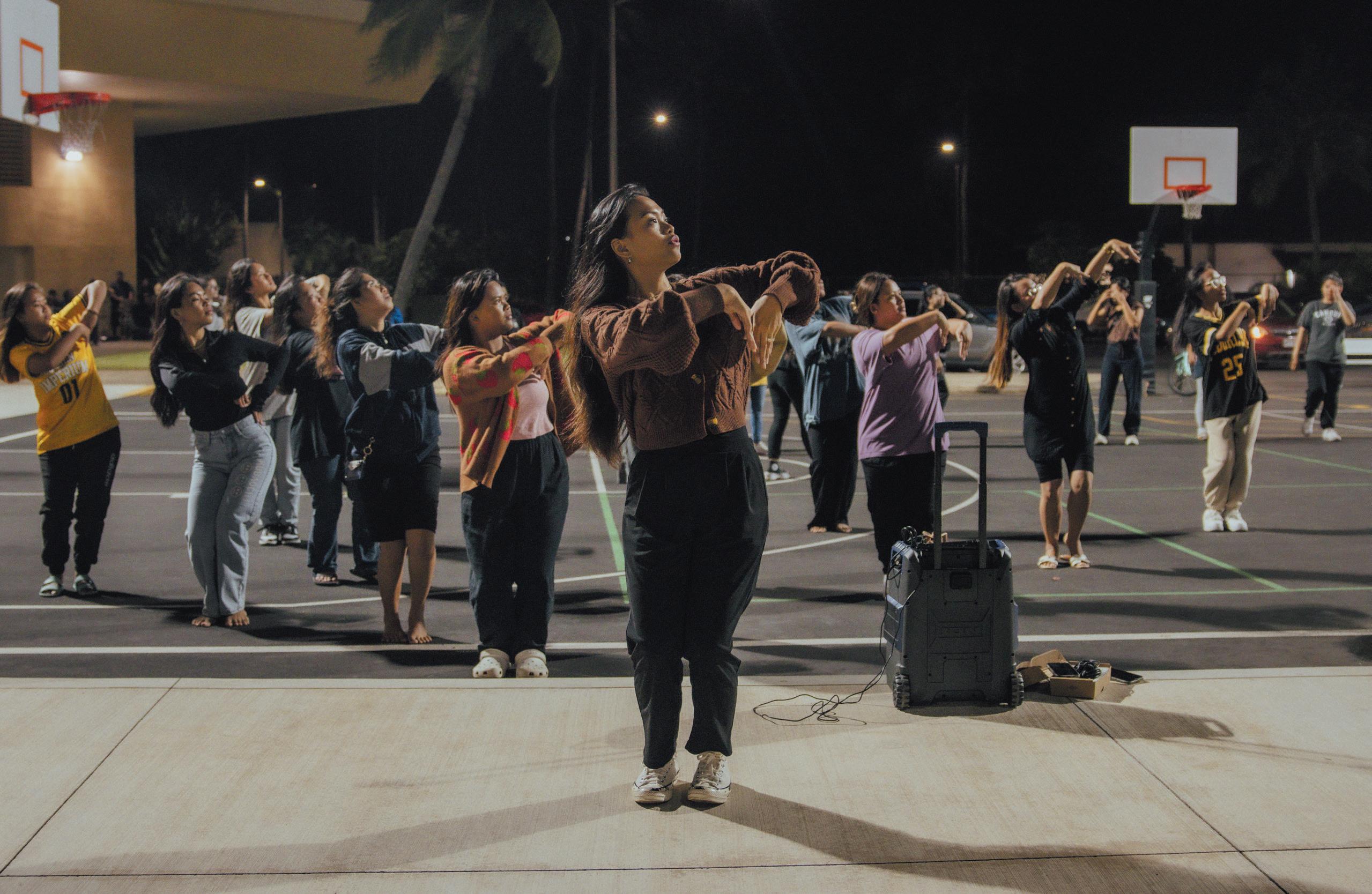
Jennly Vidal, a freshman from Davao City, Philippines, majoring in political science, stated “the theme of their piece that was performed at Culture Night is called Kadayawan.
“Kadayawan is about celebrating life and giving appreciation and thanksgiving for nature, which also means they get to celebrate their bounteous harvests.”
According to Vidal, Kadayawan in Filipino culture is a weeklong celebration held every third week of August and is defined as one of the holidays in Davao City. “This specific dance is always performed on this special holiday,” said Vidal, “to highlight the indigenous and Muslim tribes of Davao city, including the city’s dances
and competitions representing their nations, extravagant parades, fruit contests and other delicacies.”
Pia Sandra Querido, a sophomore from Pampanga, Philippines, majoring in biology, said, “The introduction song that we used to dance for is called ‘Nais Ko,’ meaning ‘I want to.’
“This symbolizes the dream every Filipino has, to willingly engage to show gratitude and love towards the beauty of the world and all the creations that they are blessed with.”
Nance Regold Micaban, a freshman from Davao, Philippines, majoring in hospitality and tourism management, said, “In the beginning of the Filipino cultural performance, there was a scene that showed a plot that represented the beauty of life with a couple who are expecting their first born - just like every propitious family with a newborn baby,”
Micaban said “their child symbolizes a beginning of blessings.”
He added, “In our cultural performances, there are times where we rotate and revolve around each other. This symbolizes the way they continually expressed their gratitude for the abundance of things around them in this world.”
Vidal added, “My favorite motion was the move created by our main choreographer Nance Micaban, which was the Pagapir dance, where the ladies dance with their fans waving in their hands, as they take small steps forward, side and backwards.
“This movement represents good upbringing. It is usually performed by ladies in the royal court from one of the tribes called the Maranao.”
Micaban concluded, “There is also another motion where the males were merging in the middle with a pile of leaves, which also symbolizes how they gather
together the blessings they are blessed with every day.”
Querido expressed the challenges they have faced while preparing for this special event. “When preparing for Culture Night, which is one of the biggest events here in Brigham Young University–Hawaii, there were times where we had hard time trying to gather most of the students who signed up and agreed to participate, for they were busy with school and work activities at the same time,” said Querido.
However, as choreographers, that challenge did not stop them from having fun, learning together and celebrating their culture, said Querido. She explained the choreographers shared their positive experiences while students from different countries made time to participate in practices and represented the Filipino culture proudly.
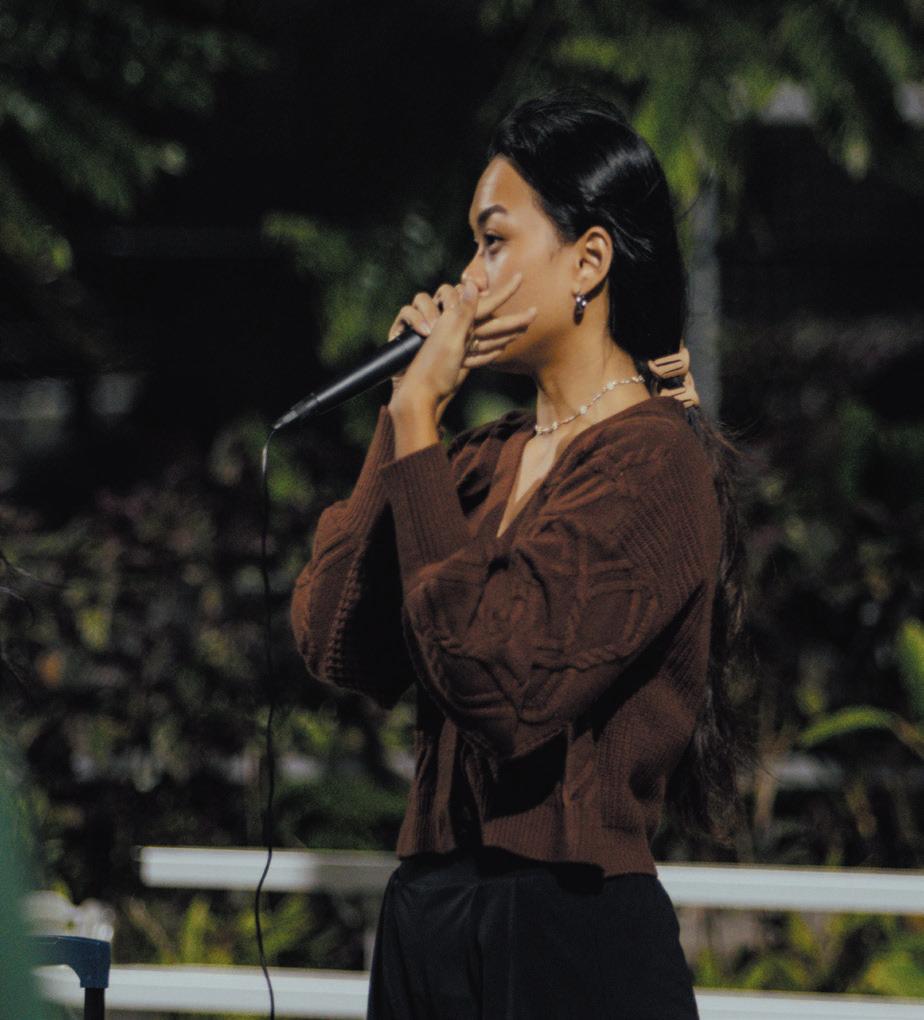
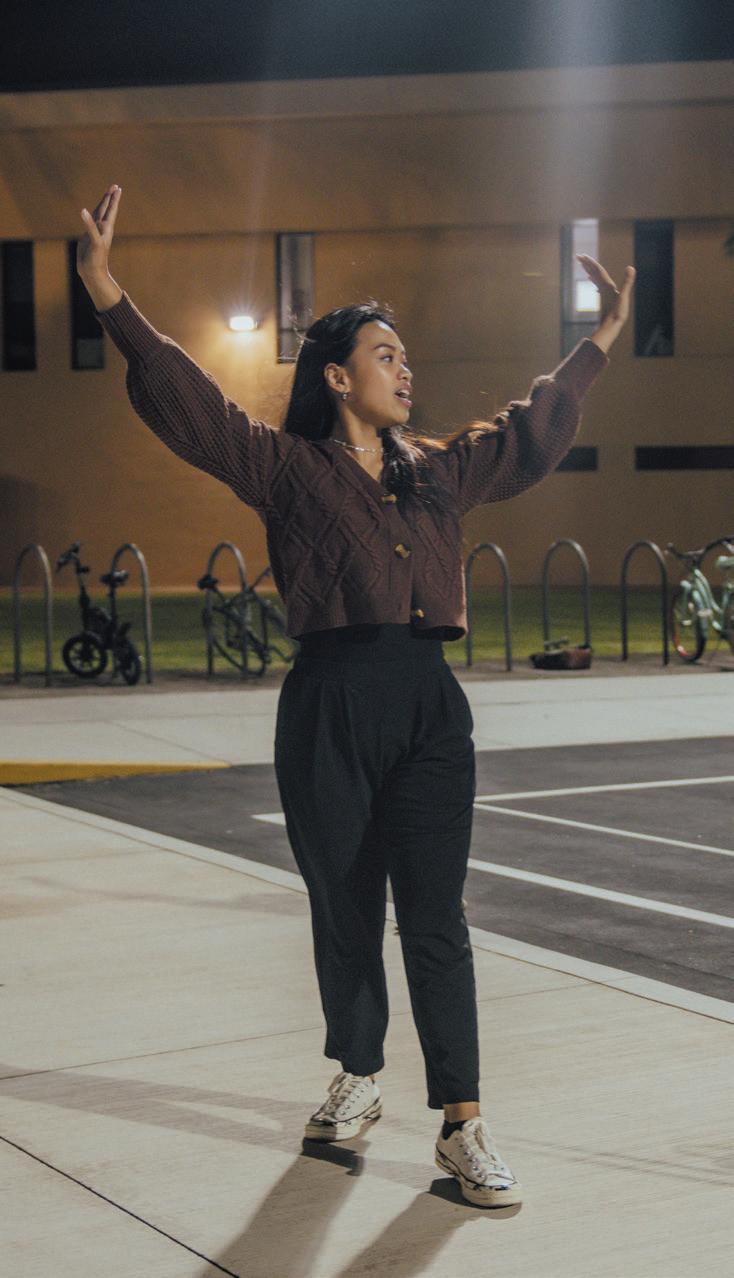
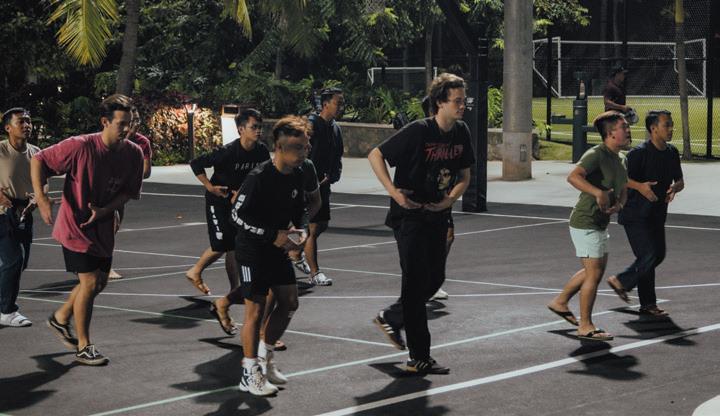
“The most amazing experience of being one of the choreographers was witnessing everyone who participated come together and enjoyed one another’s company.
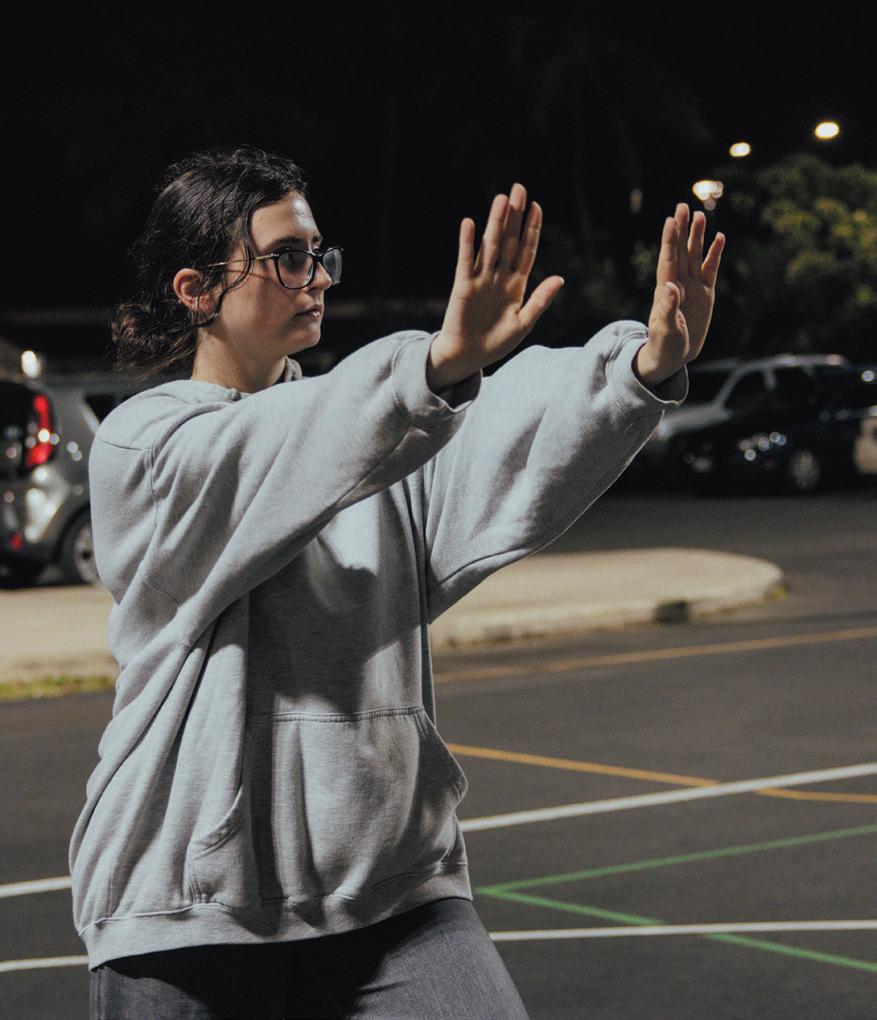
“It was a blessing to see their motivation and willingness to learn movements properly, knowing how to immediately transform into formations faster than they’ve expected, and feeling the love for one another as one ohana,” Querido concluded. •

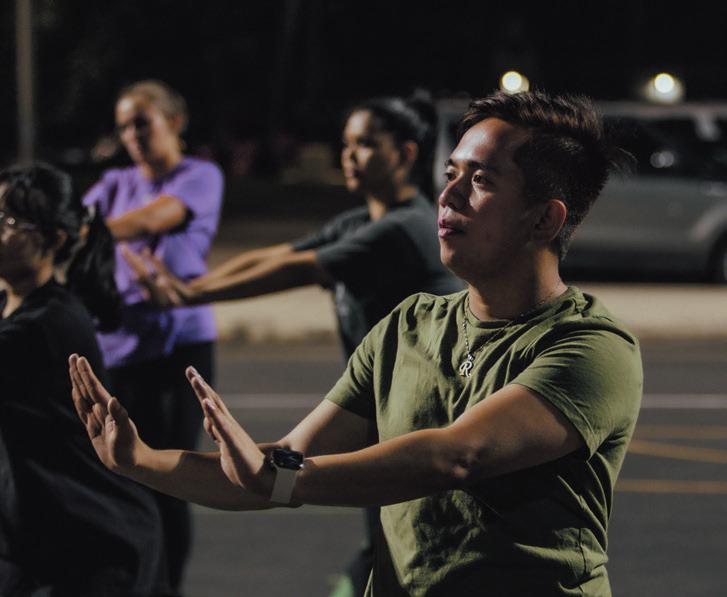
 Club members practicing the dance movements on the basketball court.
Photos by Joseph Ariono. Graphics by Sugarmaa Bataa (Kendra).
Club members practicing the dance movements on the basketball court.
Photos by Joseph Ariono. Graphics by Sugarmaa Bataa (Kendra).
Native Hawaiians share experiences of feeling the presence of the ancestors while dancing hula

 BY ABIGAIL HARPER
BYUH students practice hula movements.
Photos by Uurtsaikh Nyamdeleg. Graphics by Marlee Palmer.
BY ABIGAIL HARPER
BYUH students practice hula movements.
Photos by Uurtsaikh Nyamdeleg. Graphics by Marlee Palmer.
Everything to be known in the Hawaiian universe was contained in mele oli, or chants, and mele hula, or dances, as they tell the existence of the stars, heavens, land, sea, plants, animals, love, chiefs and genealogies, said Cy Bridges, a Laie kupuna, or honored elder.
The opening oli the Hawaiian Club did at Culture Night asked the Savior to be present, said Ian Carroll, president of the club and junior from Waianae studying psychology. “Look for that special spirit when we walk in,” he said, because they are dedicating the hula to someone living and someone passed, calling upon both sides of the veil.
Bridges, a kumu hula, or hula teacher, helped choreograph the dances for the club, specifically dedicating them to BYUH President John S. K. Kauwe and his late cousin Bill Wallace, who founded the BYUH Jonathan Napela Center for Hawaiian & Pacific Studies.


Dancing hula is a spiritual experience, said Teacher Advisor for the Hawaiian Club Jersuha Magalei. Magalei, who is an assistant professor in the Faculty of Education & Social Work and daughter of Wallace. She said she can feel her ancestors near when performing the hula.
Bridges choreographed the dances in the style of the island of Molokai, she said, which brings back a lot of memories for Magalei. “I grew up on Molokai, and [the dances] take me back there,” she said.
Hawaiian Club members practice with the group.“I think about my grandparents who raised me and my dad who has passed away.”
One of the olis the club chanted is also tied to the past for Magalei, she said. When her Māori grandmother passed away, she had a funeral in a Murai, or a Māori temple. Magalei said her dad chanted the same oli there, connecting them with their ancestors and extended family.
Laie Kawai, another one of the dances performed at Culture Night, is a modern hula that reminds Magalei of her connection to Laie, she said. Her paternal grandmother raised her in Laie. Her great-grandparents went with members of The Church of Jesus Christ of Latter-day Saints to Iosepa, Utah, to be close to the temples in the area until President Joseph F. Smith told them to return to Hawaii to be near the Laie Hawaii Temple.
There is a Hawaiian belief, explained Magalei, that those living have benefited from seven previous generations, and whatever they do will benefit seven generations to come. “You are always thinking about your relationship with those who have gone before and those who are coming in Hawaiian thought. The chants do that for me.”
Carroll explained that, culturally, only kumu hula can choreograph a hula because they have gone through an uniki, or a hula graduation. Bridges explained, “Uniki means ‘to tie’ or ‘to fasten [or] make fast.’ [A hula student] takes all of the knowledge they have been given and ties it together. It is fastened to them.” •

The theme was inspired by a Cook Island legend, says president of the Cook Island Club
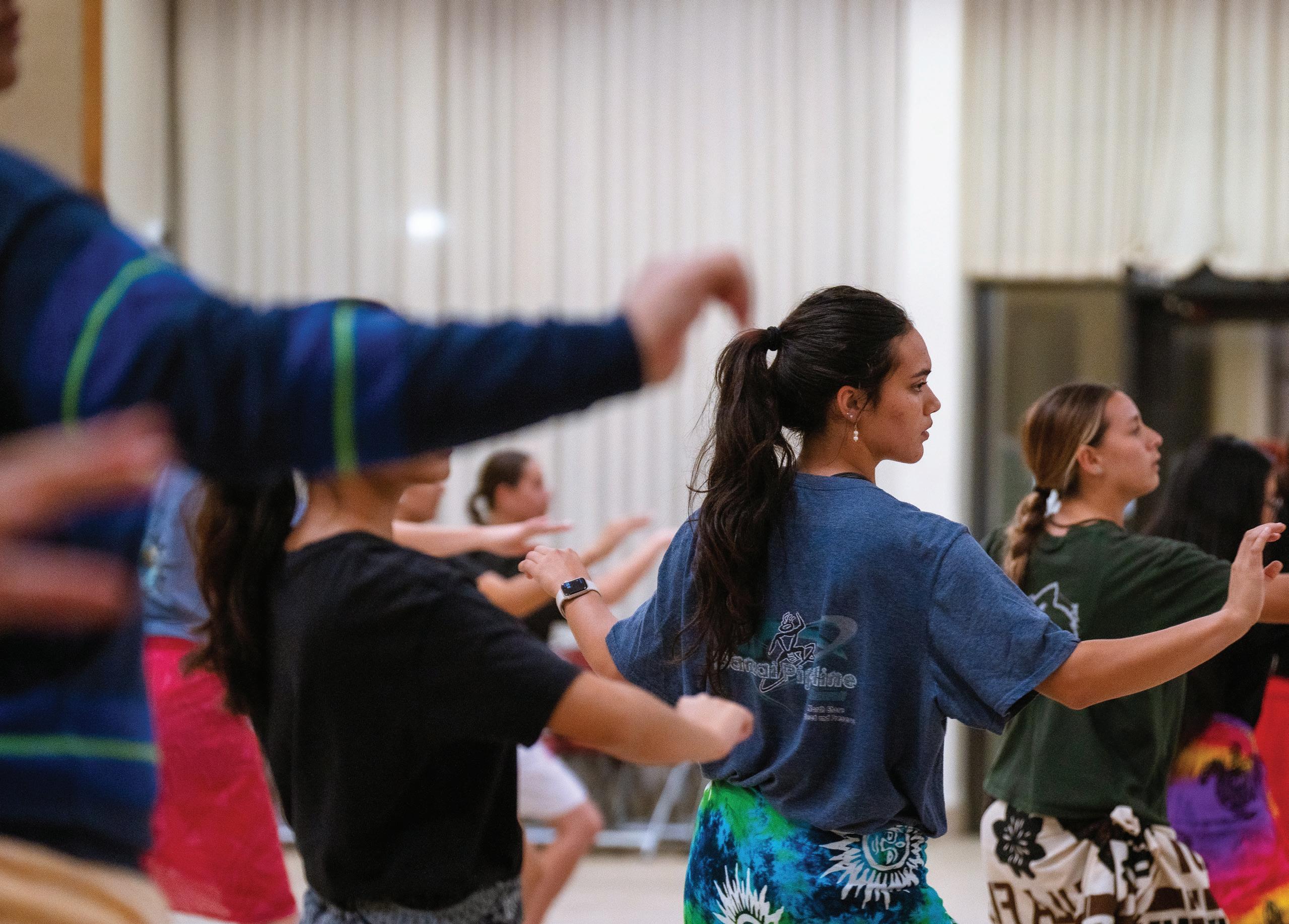 BY CHENOA FRANCIS
BY CHENOA FRANCIS
President of the Cook Island Club
Harlie Fa’alogo, a freshman majoring in psychology from Australia, said the Cook Island theme for Culture Night was to honor “our loved ones. Whether they have passed on or we are away from them.”
Fa’alogo explained the club’s theme came from the Cook Island legend Ati’Ve. “Ati’Ve was the son of an underworld Momoke (albino) who [was] separated from her husband and child to return home. Ati’Ve means separation.”
According to Fa’alogo, the first dance is called a Kapa Rima, which is a slow-beat song. “We are dancing about the separation each of us knows and feels from our loved ones. We then will go into our Ura Pa’u, which is a faster beat. As the Plan of Salvation, it is a celebration of knowing we will be with our loved ones again. Whether on this earth or after, it will be a happy reunion.”
Senior Anatevka Ah Loy, a senior majoring in English from Hawai’i, described how her experience performing in Cooks Islands Culture Night 2018 influenced her decision to perform again in Culture Night 2023. Ah Loy explained, “I was in Cook Islands for the 2018 Culture Night, and it was so much fun. Maybe I am biased, but I think we were the best performance.”
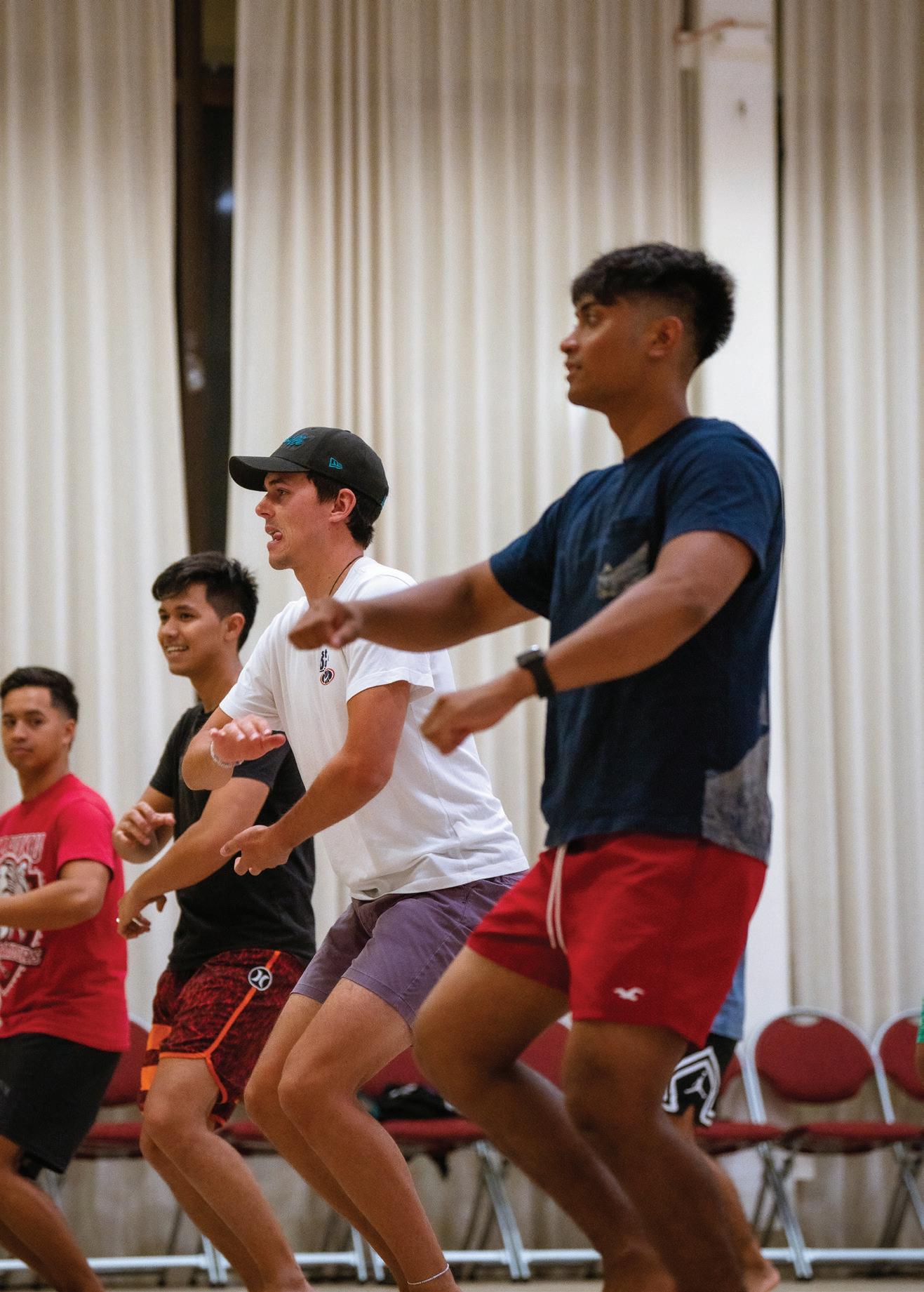

Sumiya Munkhbaatar, a sophomore finance major from Mongolia, said, “I have come to love their [Cook Islands] dance, music, and culture through my work and friends… [and] I wanted to be a part of it.”
Lauren Gunnell, a senior from Washington state majoring in hospitality and tourism management, commented, “I just think [Cook Island Māori] is a beautiful culture ,and I honestly didn’t know too much about
it… So I jump(ed) in and learned straight from the source.”
Fa’alogo explained how Cook Island Club encouraged and enjoyed participation of people from other cultures.
She remarked, “I am a big advocate for all cultures to join and immerse themselves into the Cook Island culture. I myself am not a Cook Islander, but I have felt the outpouring of love and family unit that this culture and its people have given me.”
She expressed, “I want [other students] to feel loved, welcomed and needed. It doesn’t matter where you have come from and what path you have walked, there is always a place for you.”
Gunnell shared, “I think the instructors have done a really good job at teaching. I’ve really come to understand it.” She said through
their teaching she has learned about Cook Island culture.
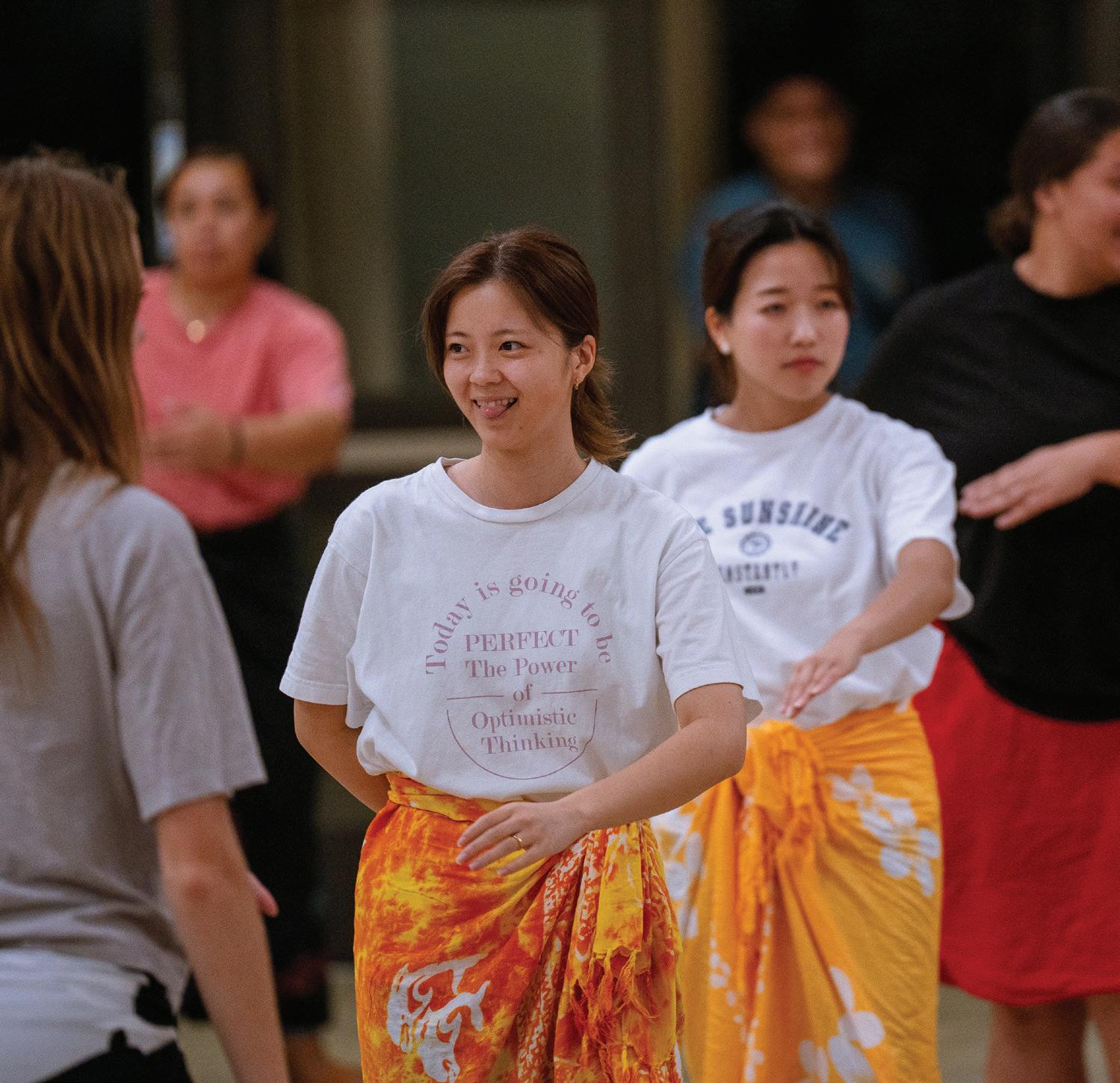
Ah Loy mentioned, “I think that the cultures of Cook Island and Hawai’i make sure to honor those who came before us and make sure we remember and appreciate what they have done for us.”
“I love the dance because it’s more than just the movements. It has a story behind it and I think the story is beautiful,” said Munkhbaatar. She added even though her culture and Cook Island culture is different, she sees similarities, “I think our cultures are similar [because] it’s centered on families and how we respect our elders. We think we are so different, but the more you get to know each other, the more you realize how similar we are.” •
 BYUH students participating in Cook Island practices. .
BYUH students participating in Cook Island practices. .

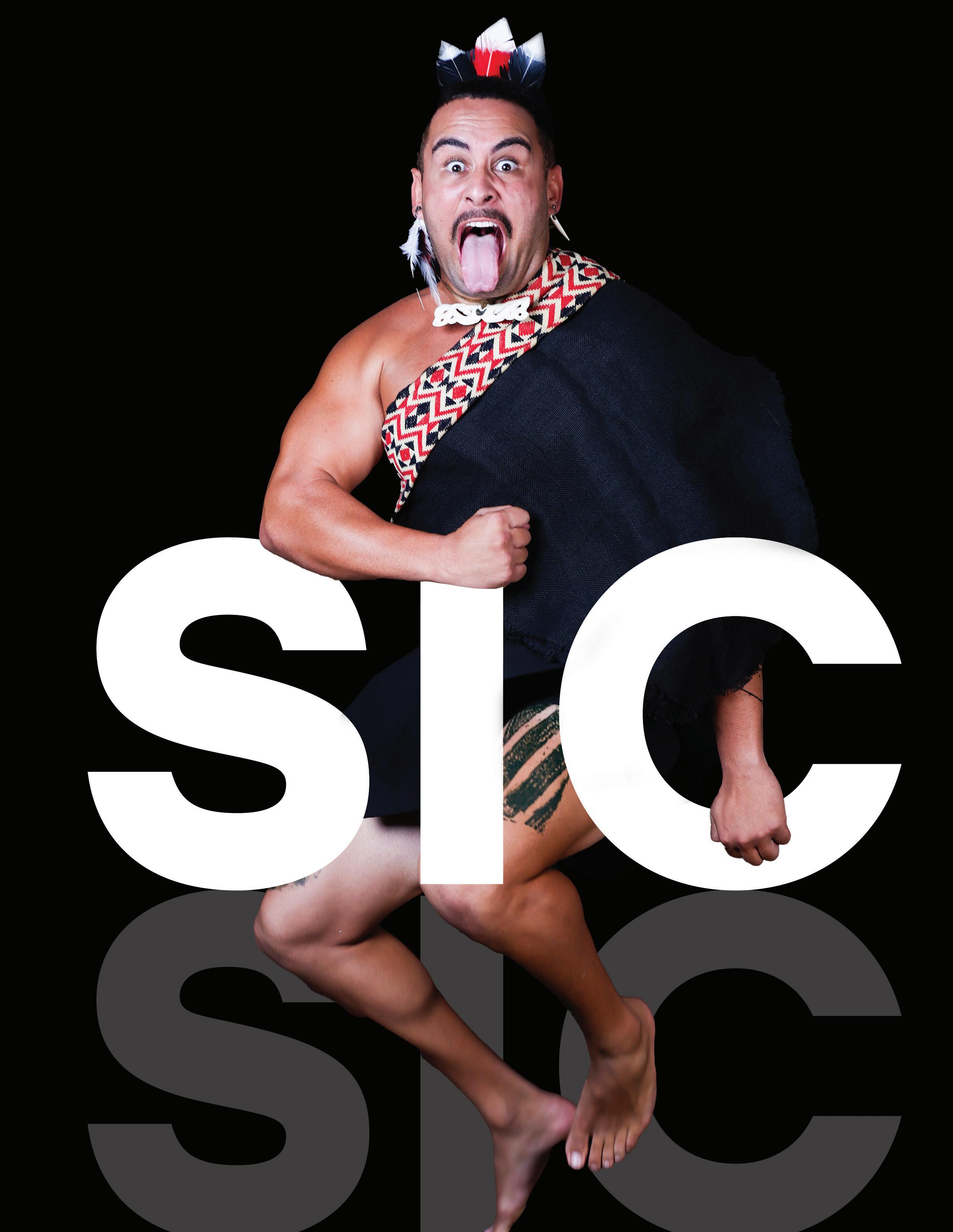 Portrait of Jayson Tarawhiti representing Aotearoa/New Zealand Club.
Photo by Monique Saenz.
Graphic by Sugarmaa Bataa (Kendra).
Portrait of Jayson Tarawhiti representing Aotearoa/New Zealand Club.
Photo by Monique Saenz.
Graphic by Sugarmaa Bataa (Kendra).
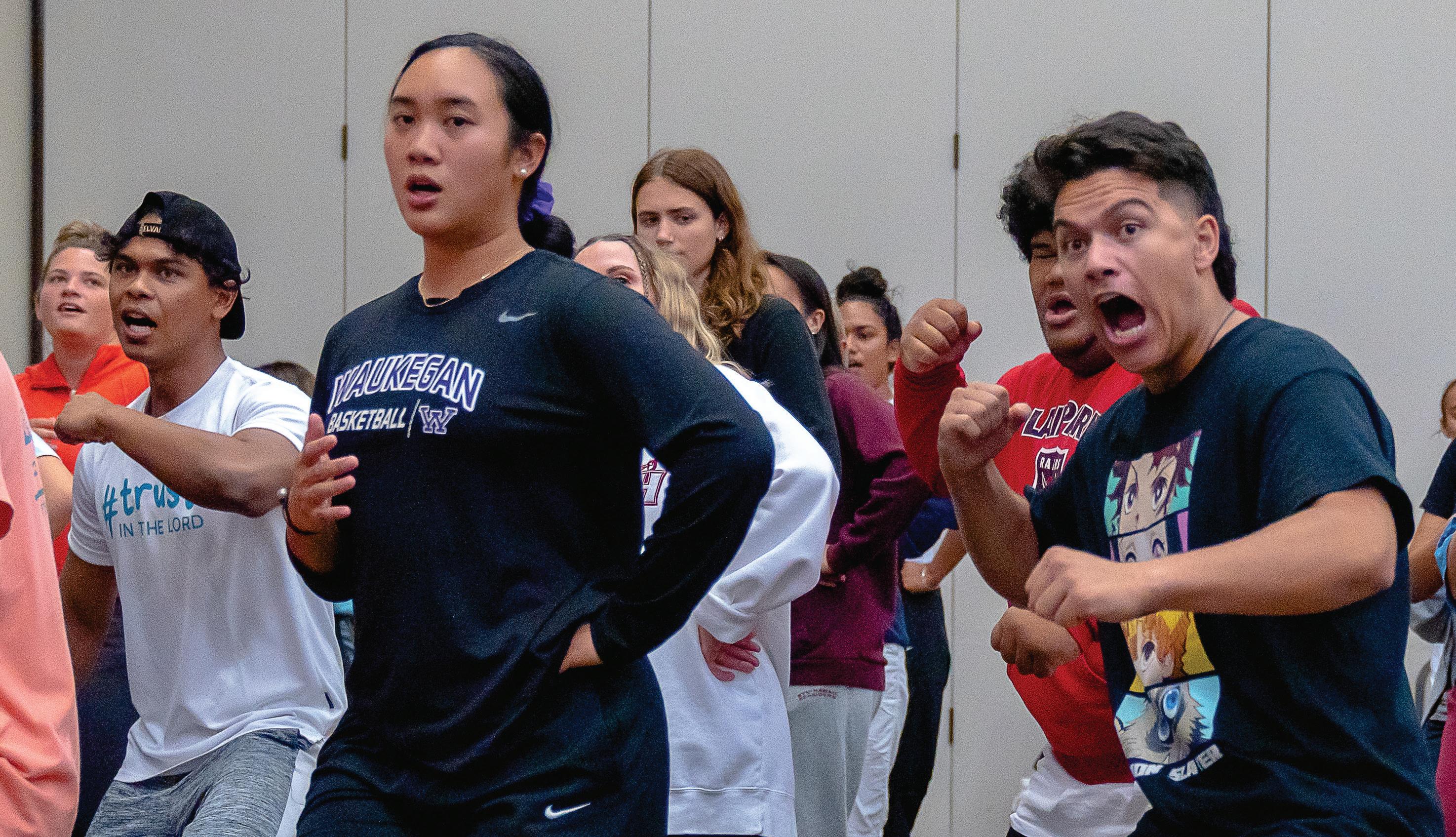 BY RANITEA TEIHOARII
BY RANITEA TEIHOARII
Waipapakura Bailey, co-writer of the songs performed in Culture Night 2023 and New Zealand native, said coming up with a theme was easy but working on the song was the difficult part. The freshman from New Zealand majoring in accounting said, “Māori is [very] figurative.So you got to think creatively.” She added while creating the pieces of music, she had to think in both English and Māori, going back and forth between the two.
Bailey said they used familiar chants from overarching traditions in Māori culture as part of the songs they created, such as “Toia mai te waka,” which means to bring the canoe together. She said, “It was
a bit tough, but we had a group with a great set of skills. Everyone had a different set of skills that they could bring to the table. So it made it a lot easier.” Bailey acknowledged the help of fellow Māori students Irene Tawa, Maania Spooner and Bitner Matautia who worked together before practices even started. Bailey described the musical numbers they created to rowing a canoe that takes work to get to a destination.
President of the Aotearoa Club Hinekura Kingi added, “[We are] telling our life story here at BYUH.” Kingi, a junior from New Zealand majoring in exercise and sport science and co-writer of the songs in Aotearoa’s Culture Night performance, said, “In terms of culture and the music, you have to be fierce. You
have to feel it, feel its meaning within yourself and how you can apply it to your life.”
Kingi said the club’s performance represents three major events in the life of students who come to BYU–Hawaii to further their educations.
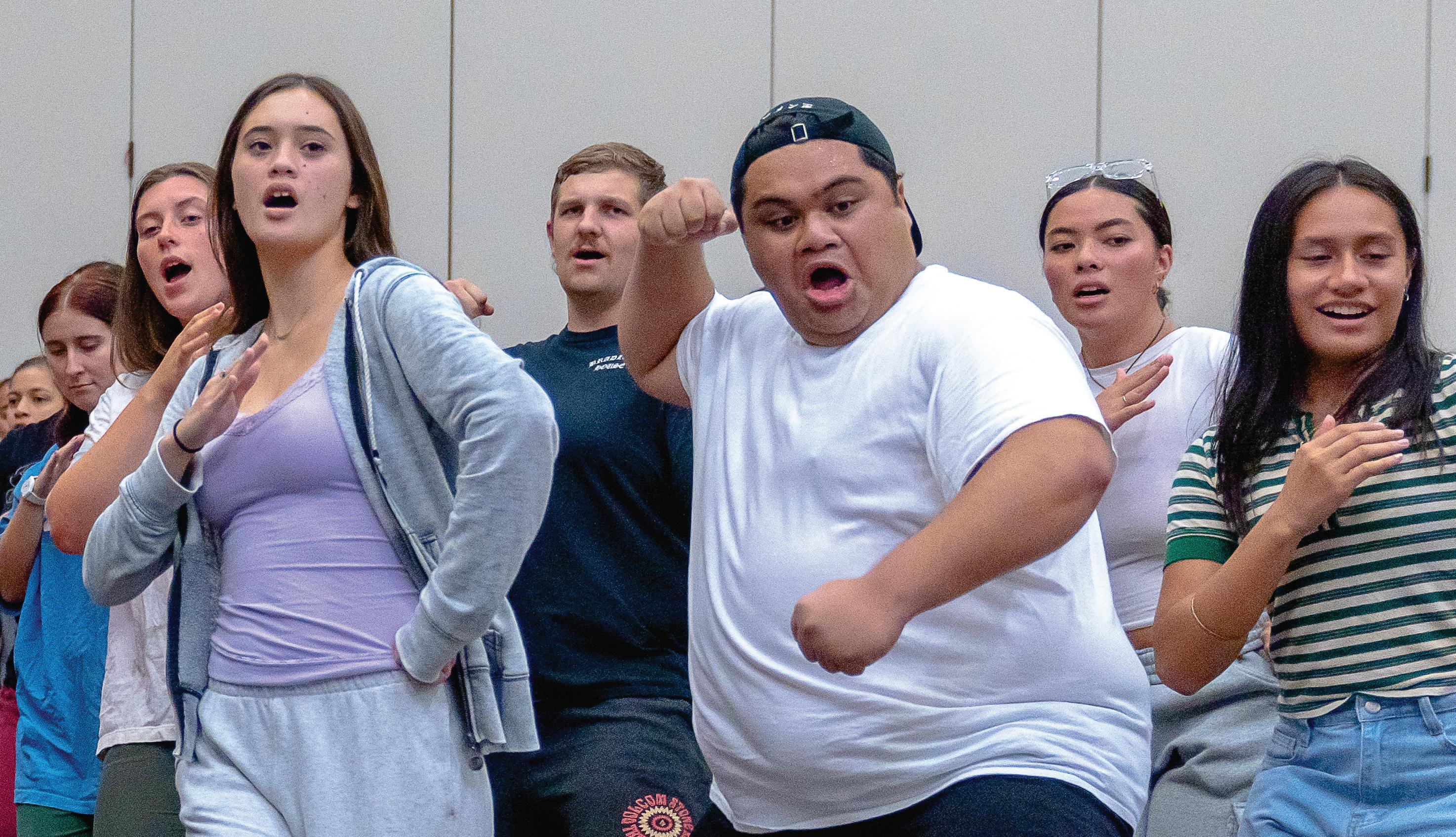
The first song in the performance was a description of new students leaving their families and friends and arriving at BYUH, explained Kingi. “We’re coming from home to an unsettling environment, but we’re joining canoe [a team] here, settling here,” said Kingi. She explained a canoe is a metaphor for a team in Polynesian culture, and as different cultures join Aotearoa Club, it is like they are all joining one big canoe. The entrance of the performance showed how students coming here have to find new friends and create a family at work and school, Kingi said.
The second musical number was “The Haka, which shows fierceness [and] how you overcame the challenge to connect, excel and gain the degree that you want,” Kingi said. As a song about taking action, it expressed the feelings of creating a family here with other people from different cultures and being on the same journey together, said Kingi.
TŌIA MAI TE WAKA
KI TE AKOMANGA
TŌIA MAI TE WAKA
KI TE MAHI E
KOREKAU HE PŪTEA
TŌIA MAI TE WAKA
KI TE AKOMANGA
TŌIA MAI TE WAKA
KI TE WHAREKAI
TŌIA MAI TE WAKA
KI TE MAHI
KANIKANI IA RĀ
KOREKAU HE PŪTEA
Lyrics for the Haka which was performed as the second musical number during the Culture Night performance. Members of Aotearoa club practice the entrance song which depicts new students leaving their homes and families. Photos by Enkhtuvshin Chimee. Graphics by Marlee Palmer.The last song talked about going home and serving the mission of the school, which is “Enter to learn, go forth to serve,” said Kingi. “At the end of the day, when our four years here at BYUH [come to an end], you realize you [didn’t get] here alone. You have your teachers, workmates, classmates and new friends you make every semester and how they’ve helped and shaped you,” she said.
Kingi said the music conveys how the family created at BYUH inspires people as they gain knowledge and achieve their goals. Kingi said while working on the original songs for the Aotearoa Club’s Culture Night performance, she was reminded of a Māori proverb: “Ehara taku toa i te toa takitahi, he toa takitini,” which translates into “Teamwork makes the dream work.” •

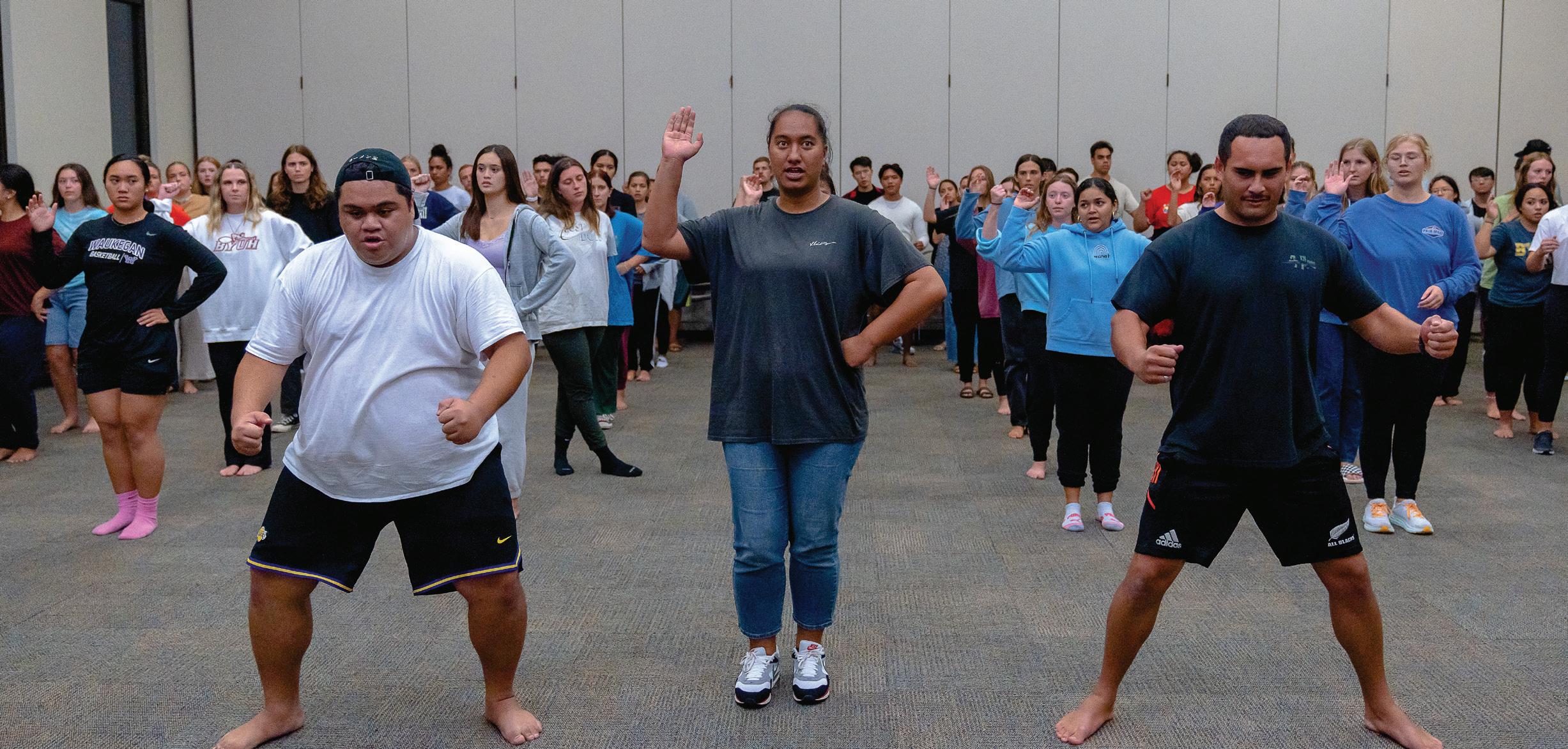 Right: Aotearoa Club members practicing for Culture Night.
Bottom photo from left to right: Enekosi Moleli, Hinekura Kingi, Jayson Tarawhiti. The three dancers lead the members in practicing the entrance dance for the culture night performance.
Right: Aotearoa Club members practicing for Culture Night.
Bottom photo from left to right: Enekosi Moleli, Hinekura Kingi, Jayson Tarawhiti. The three dancers lead the members in practicing the entrance dance for the culture night performance.
One important part of Korean culture is to share the excitement for dance and music with friends, says club president
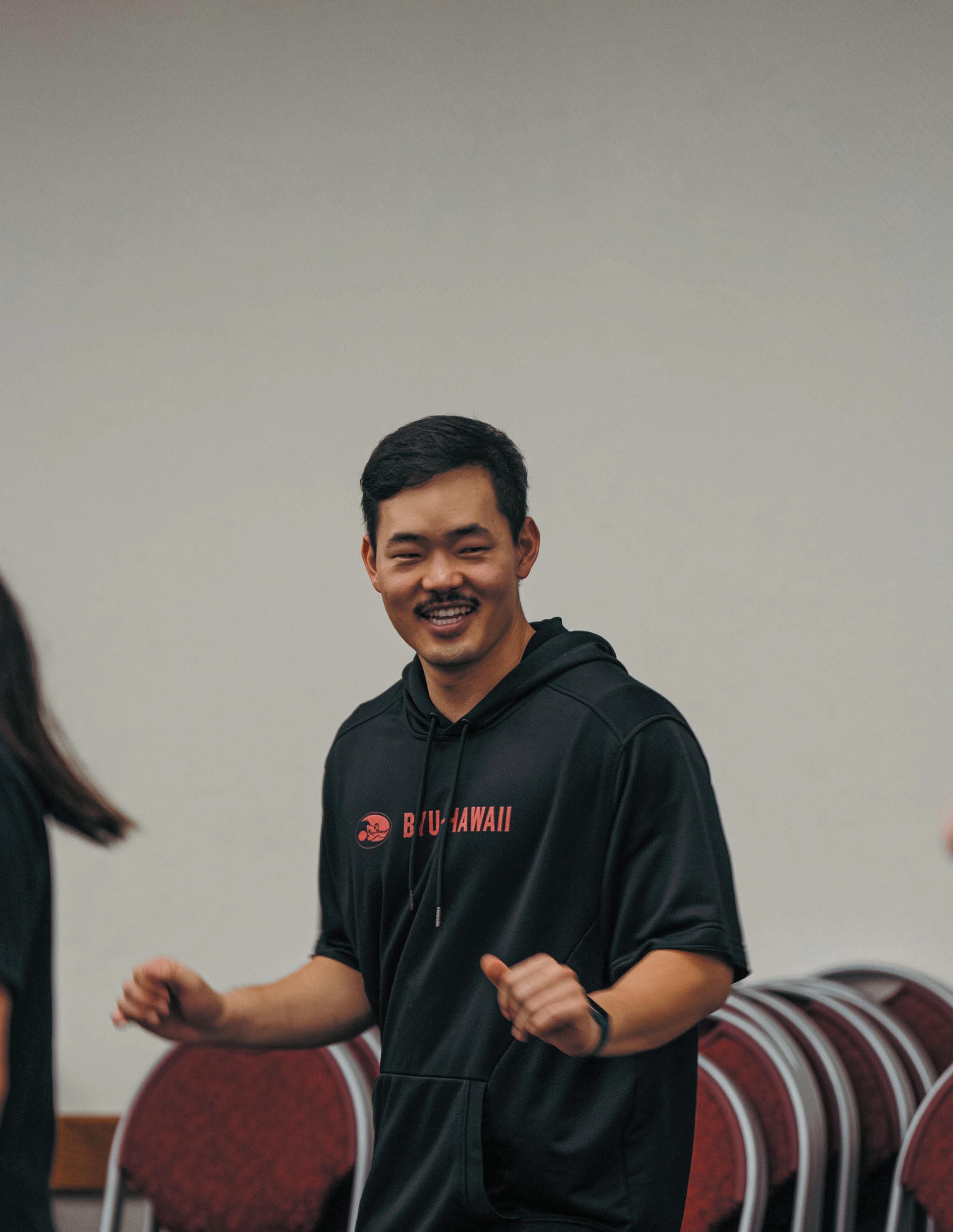 Korea Club President Helaman Kim leads the Culture Night practices.
Photos by Joseph Ariono. Graphics by Marlee Palmer.
Korea Club President Helaman Kim leads the Culture Night practices.
Photos by Joseph Ariono. Graphics by Marlee Palmer.
Performing K-Pop in Culture Night was a perfect way to introduce their culture to the BYU–Hawaii, said members of Korea Club. Korea Club chose five K-Pop songs to perform at Culture Night that were popular from different eras to show the genre’s musical evolution from 2007 to 2022

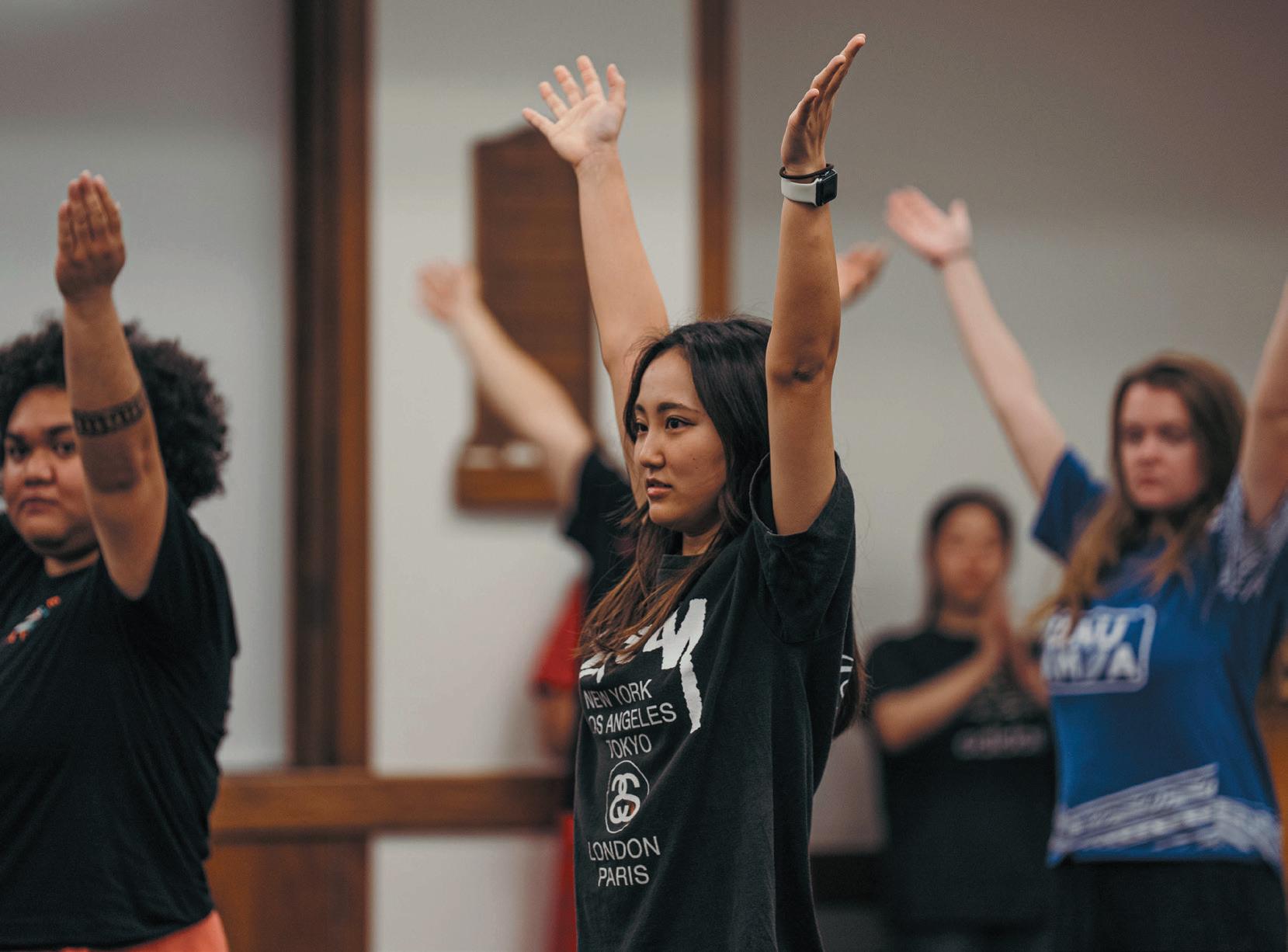
Jihyun Park, the choreographer of Korea Club’s performance and a freshman in business management from Korea, said she wanted people who know the early generations of K-Pop to appreciate the performance as well as the current K-Pop music lovers. She said she noticed a common response from people when they listen to K-Pop songs. “If you hear the song and see the moves, you will want to dance and match them all together with the beat.”
Korea Club President Helaman Kim explained, “In Korea, there is a spirit of ‘heung.’ It is something that brings excitement and also a feeling that comes from a joyful person.” Kim, a junior majoring in biochemistry from Korea, explained Korean people are very exciting people because they have a lot of heung with them. “Back in the old days… if we have
friends and music, even if we just have a drum with us, we can have a great time singing and dancing along with the songs,” said Kim.
He said everything Korea Club performed in Culture Night represented the spirit of heung their ancestors being exemplified.
The first number Korea Club performed was called “Into the New World” from Girls’ Generation, a girl group popular in 2007, said Park. This song was well-known in its era, she shared, and it talks about someone who left behind the past and is excited to embrace the new chapter in life. She said, “I think it was a very good introduction to show what K-Pop is.”
Park said she purposefully let the men be in the center of the stage for the song “Fantastic Baby” to give the audience a sense of what it was like in 2012 when the boy group BigBang went viral. This song was followed by “Dance the Night Away” by Twice, “Kill This Love” by Black Pink and “Permission to Dance” by BTS.
“All the songs we picked connect to heung, [and] you can see from the song’s fast beat where everyone can jump and enjoy.
Minjeong Jo practices for the Korean Club performance.“Through these songs we also wanted people to know that they are included at BYUH,” said Park.
“Most of the dancers are not from Korea,” Park continued. “They joined because they love K-Pop culture, and I bet they know better than me. I only follow BTS, but [many of them] follow more.”
Ebbygael Mocodompis, a junior majoring in hotel and tourism management from Indonesia, said she decided to join the Korean performance for Culture Night during her last trimester of pregnancy. She said when she heard that Korea Club was going to perform “Kill This Love” by Blackpink, she immediately consulted with her doctor and joined the club.
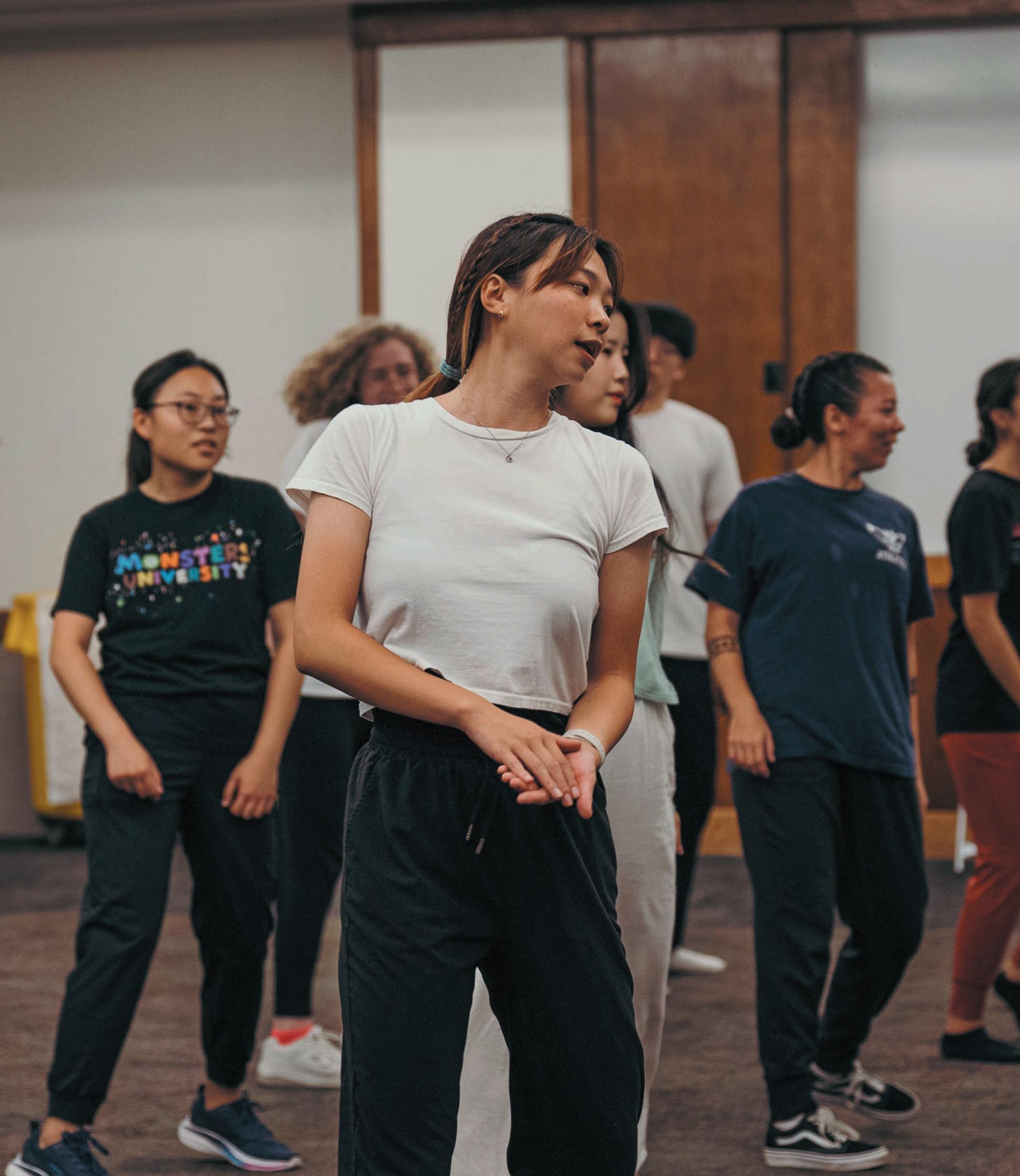
Mocodompis said she couldn’t resist dancing with them because she has been a fan of K-Pop since 2010. She said, “When I was in high school, I always dreamed of performing this dance. Even though it seems like I’m taking a risk, this opportunity is such a dream come true for me.” She also shared her gratitude for joining the performance, because the music, dance and people in Korea Club have helped her to cope with the recent loss of her father.•
 Left and right: Korean club members practice for Culture Night.
Left and right: Korean club members practice for Culture Night.

 Portrait of Akari Rogers representing Japan Club.
Photo by Monique Saenz.
Graphic by Sugarmaa Bataa (Kendra).
Portrait of Akari Rogers representing Japan Club.
Photo by Monique Saenz.
Graphic by Sugarmaa Bataa (Kendra).
Cynthia Stephen, a sophomore from Delhi, India, majoring in hospitality and tourism management, said one of the costumes being worn during Culture Night was a sharara, a pair of flared pants that hang loose around the legs to allow for more movement in dancing, but resemble a skirt. The sharara is topped off by a long upper–body garment called a kurti and a long scarf placed over the head and shoulders called a dupatta. “We’re gonna perform a few songs wearing that,” said Stephen.
Caroline James, a junior student from Mumbai, India, majoring in information technology, served as choreographer for the India Club. “For the first song, we have five different colors, which we want to represent how diverse and vibrant India is. And for the rest of the songs, we have different colors that will be really colorful and show the diversity of India.”
According to James, India is now the world’s most populous country, surpassing China at 1.42 billion people. She said it was difficult to represent such a diverse country in a single club, emphasizing, “We all have different cultures. We don’t have the same culture.
“We are not only performing Hindi songs. We have Tamil songs. We have Telugu songs. We’re gonna show all the cultures all together in our performance.
“The first song itself is a folk dance and we’re wearing our nauvari sari,” said James. A sari is a long stretch of fabric draped over the body like a robe, and nauvari means nine yards, according to Sundarisilks.com. “And that is typically worn in the dance we’re going to do, which is a Marathi folk dance,” said James.
Thanush Prathapan, a freshman from Bengalaru, India, majoring in psychology, said the clothes for Culture Night come with the culture and the history of India. “Usually the women’s dresses they wear are heavy and more costly than what the men wear. Usually they wear white, with a white shirt on and white-colored dhoti,” which is a white piece of unstitched, knotted cloth wrapped around the legs and waist. •
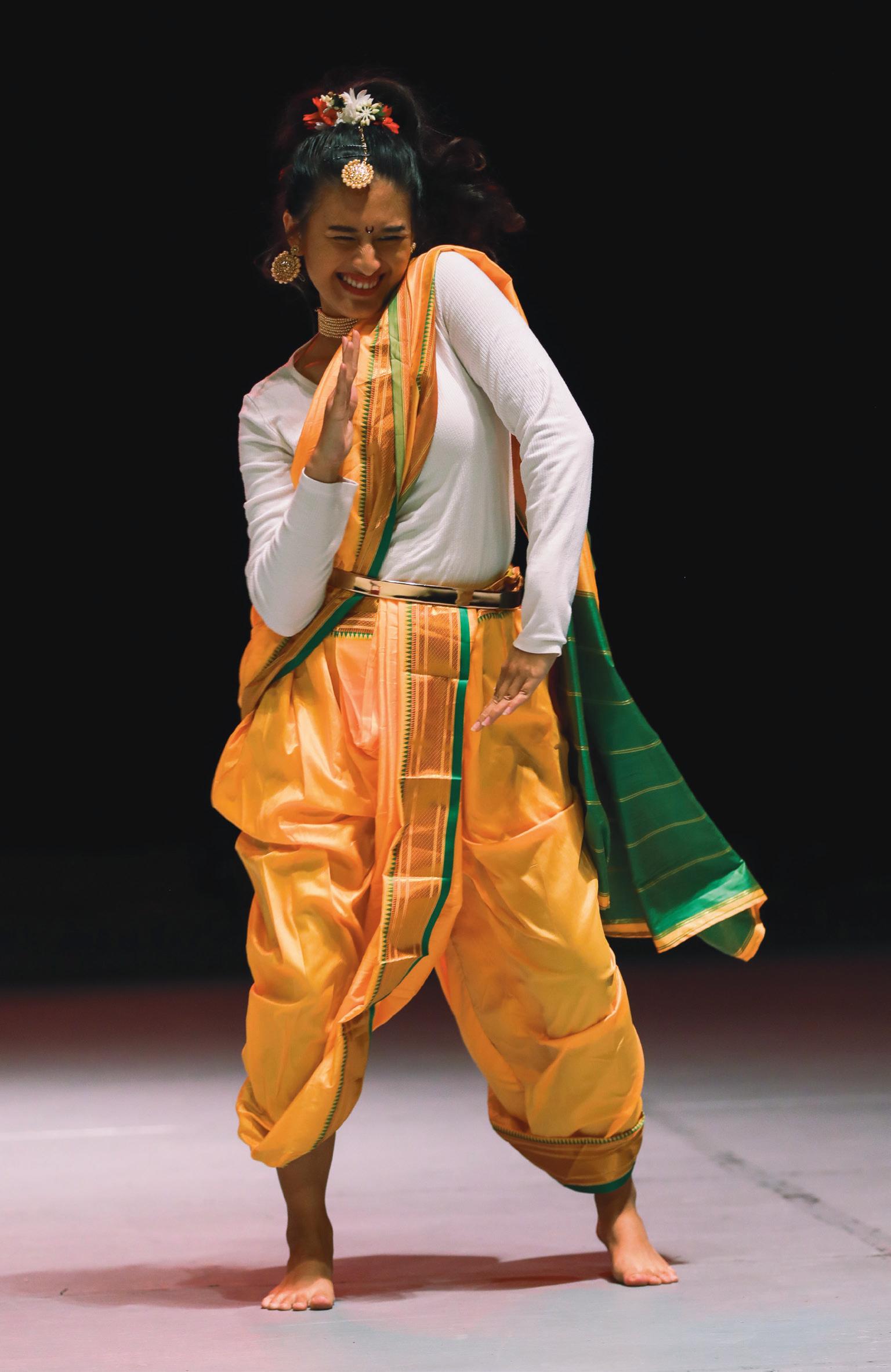
India is not just one culture, says India Club choreographer
Nandy Gordillo Caceres, a junior from the country of Guatemala majoring in TESOL Education said the Latin America Club had costumes for each Salsa, Brazil, Peru and Mexico dance. She said Salsa had three different female costumes that contain different patterns, works and designs. “We had a shimmery dress with tassels for the Salsa dance so it can show off when the girls do the spins and turn,” said Caceres.
Brandon Thomas, a senior from Las Vegas majoring in Computer Science, who is one of the choreographers, said, “Salsa is a multinational dance. It is widely popular in Latin America and North America as well.”
Sofia Carolina Benjamin Garcia, a freshman from Provo, Utah, majoring in Cultural Anthropology, said, “My mom has a storage room full of costumes from all over Latin America, and my dad is flying here and bringing them for Culture Night.” Garcia’s
family dances professionally and they have every costume for the Mexico dance.
Garcia said here was a lot of footwork for men and skirt work for women in the Mexican dance. The shoes men wear had nails at the bottom that makes the stomping sound on the floor specific, shared Garcia. “Without the costume, there is no dance. The costumes add so much color and liveliness,” expressed Garcia.
Thomas explained, “It is important to recognize how much dancing is to Latin culture, especially in many social settings, and how that kind of interaction and intimacy is made within the culture. It is a great way to connect with others and to celebrate. “
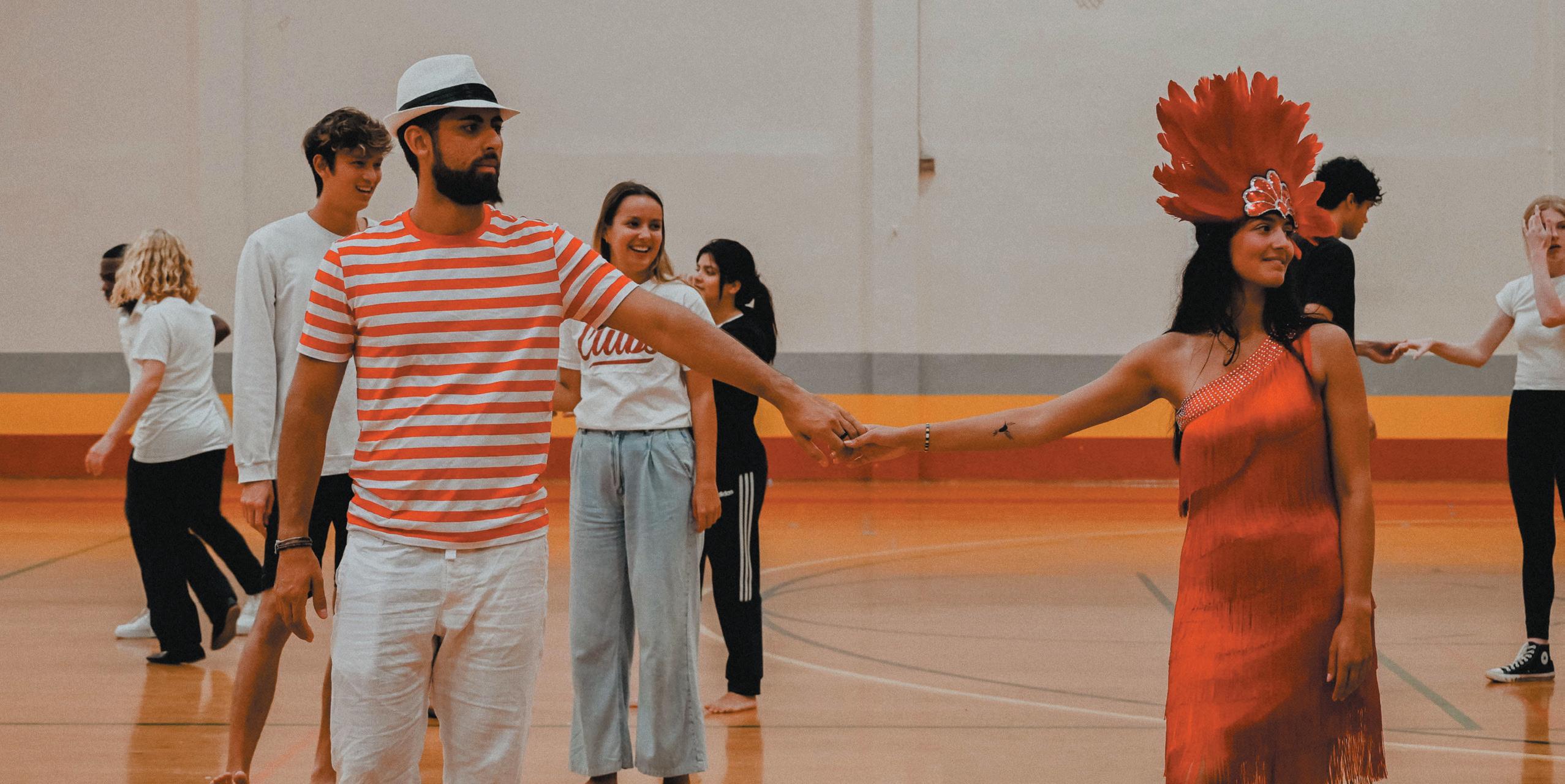
Commenting on the performance, Thomas said, “Look at the girls. They’re the best part of the dance because the costumes bring out character.” Garcia shared the costume for Mexico was white and represented the ocean.
Garcia said, “This dance is all about grace. It represents purity, which is very beautiful.” She also shared the costumes are hand-made, which makes them expensive.
Caceres shared she grew up dancing. “I was probably 6 years old, and I remember my grandfather putting me on his feet, teaching me how to follow the marimba. I know for every birthday party, New Year or Christmas when we gathered with family, there was always music, and I will dance with my cousins, siblings. It is just how we learned.
“My mother said by dancing, everything gets fixed. When you think about a way of celebrating life, you think about a colorful, beautiful, sunny day. It is why very likely you will find all cultures in Latin America use color a lot to represent their dance - even with the mind as well,” shared Caceres. •
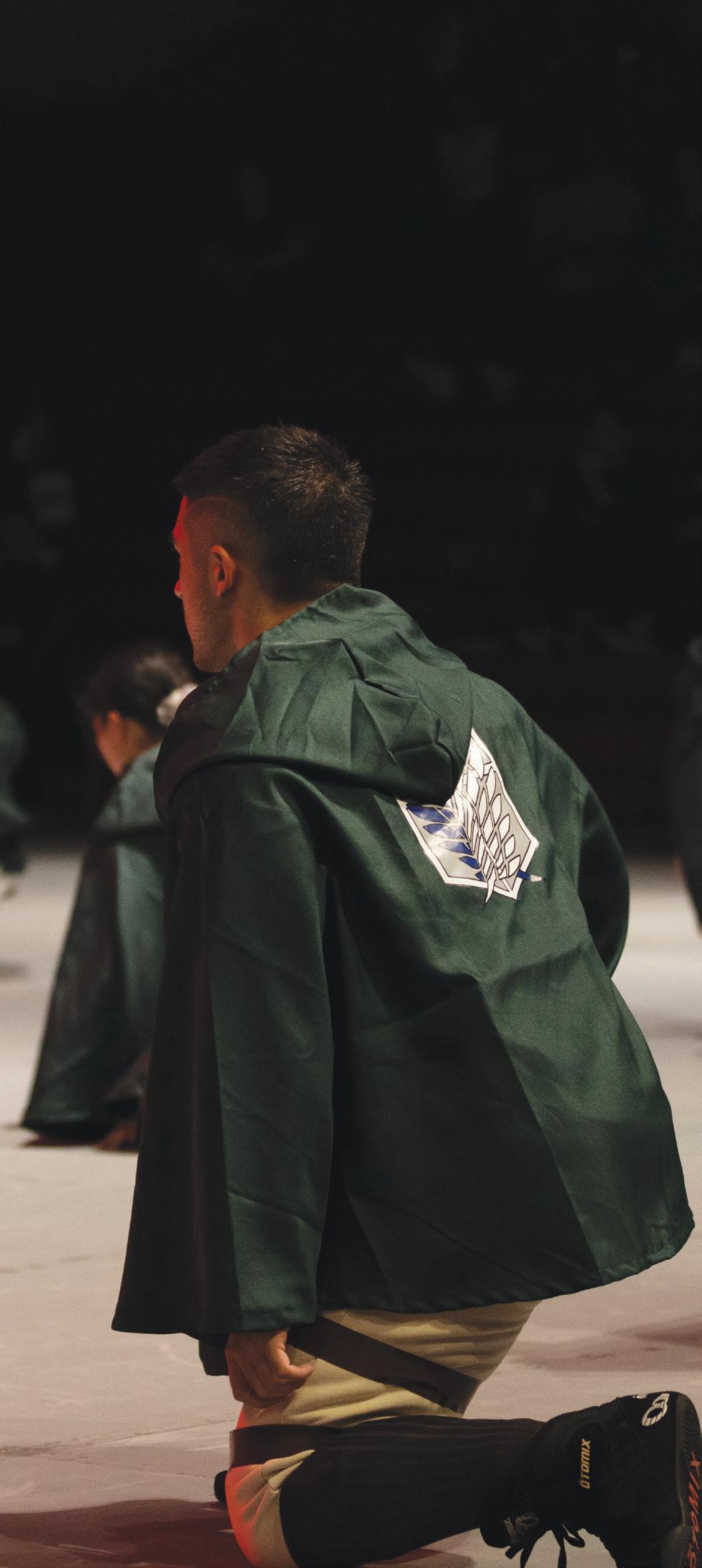
Samuel Nagahama, a junior from Japan majoring in biology and one of Japan Club’s Culture Night committee members, said the club’s performance was divided into three parts: modern anime, lighting and traditional dance. He explained each dance was performed with a different song and costume.
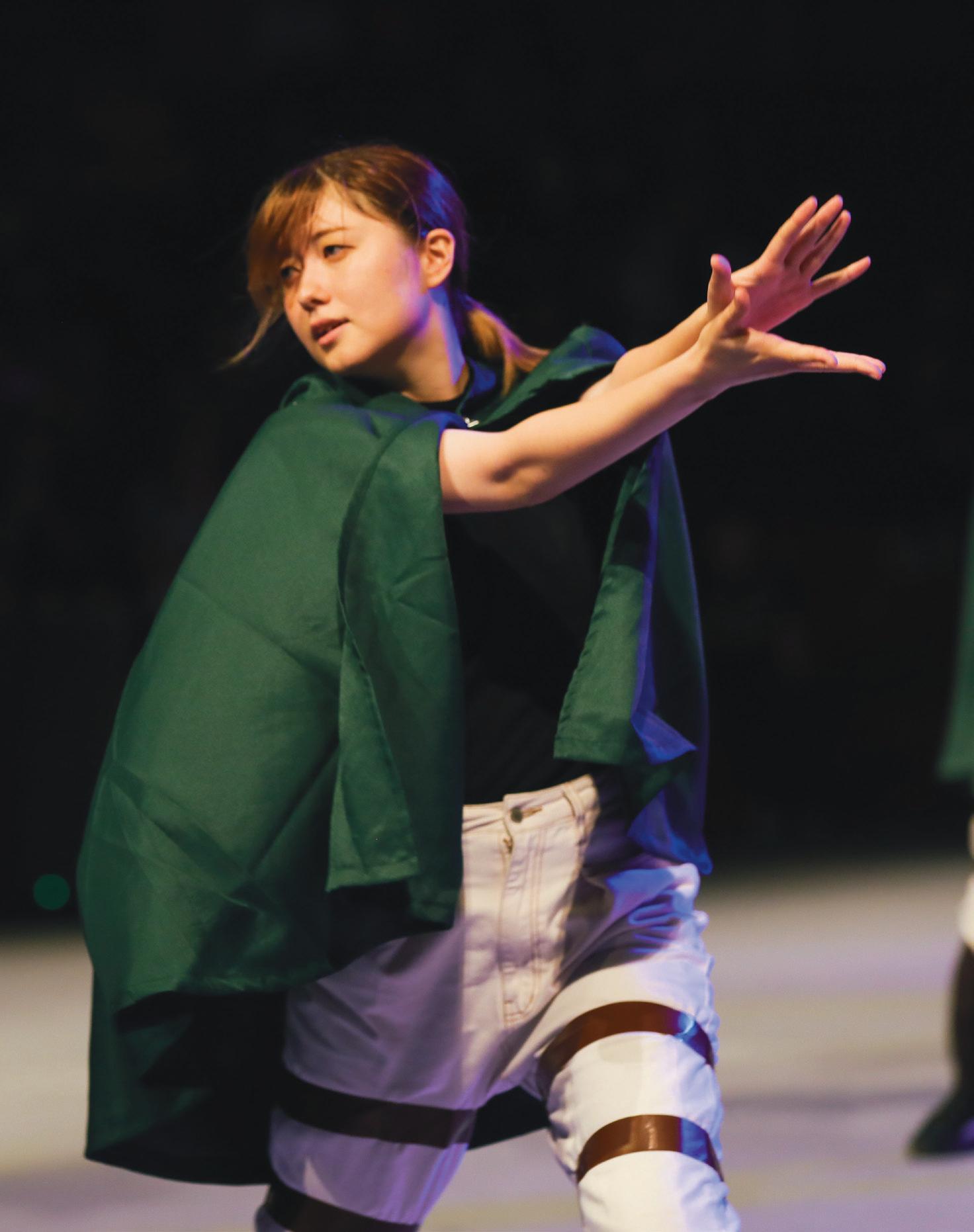
The first part of the performance was the modern anime dance, said Reika Iwano, a junior from Japan studying elementary education, who was in charge of this section. Iwano explained people who participated in the modern anime section wore the uniform of anime characters from the anime “Attack on Titan.” She said all characters from this anime wore military uniforms with a jacket and belt on their waist and legs.
Yuji Hyodo, a senior from Japan majoring in hospitality and tourism management, said the second dance, known as Wotagei, is a modern dance from the southern Japanese culture. This was performed in the dark with light sticks, he said.
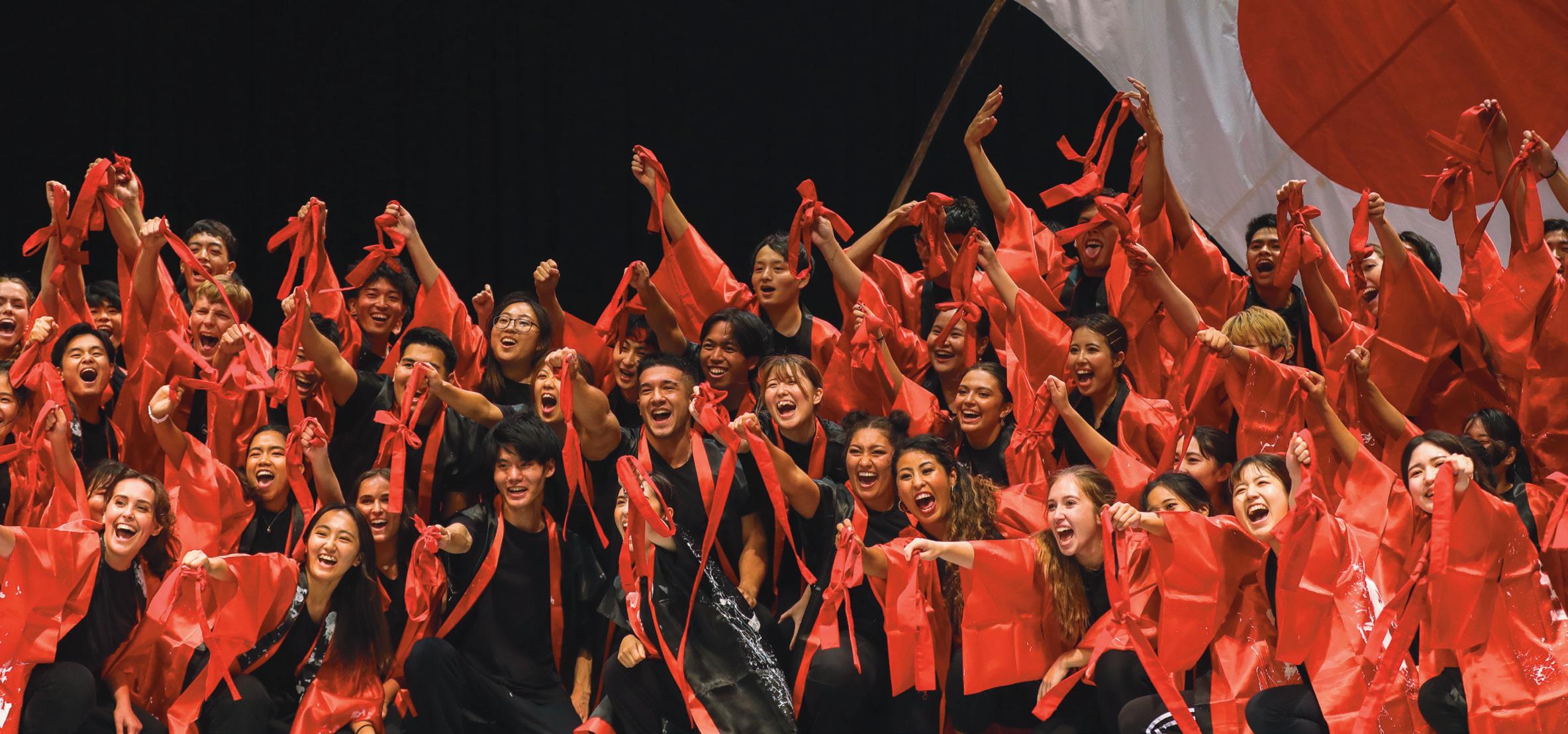
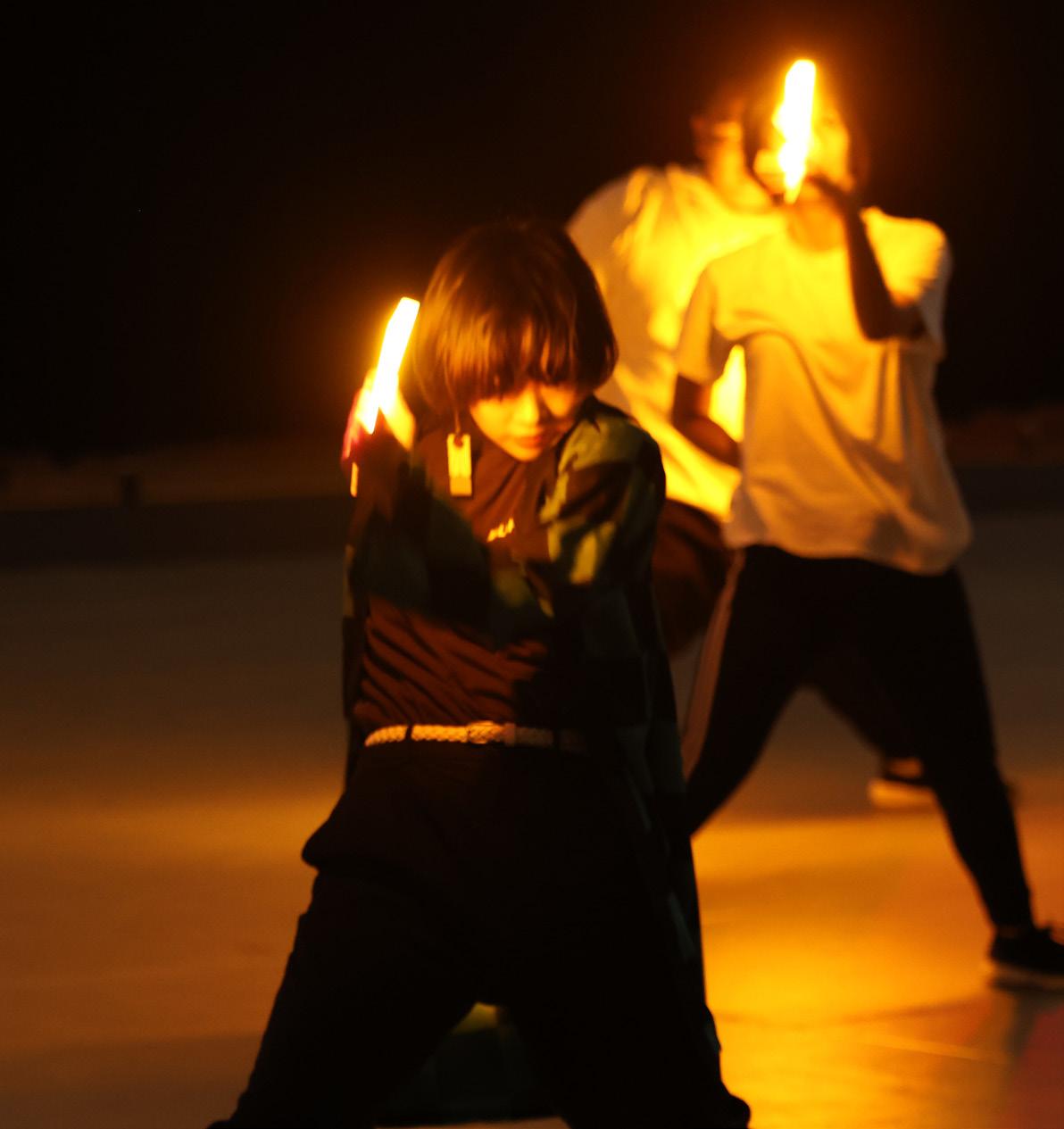
“Our costume is simple. [We wore a] white shirt and black pants,” said Hyodo, the leader of the second dance. He explained performers wore white shirts so the audience can see the performer’s body movements while dancing in the dark. Iwano added some of the performers also wore Japanese costumes with a traditional pattern called Ichimatsu Moyou during the Wotagei dance.
Nagahama said he was responsible for the movements and arrangements of the third dance in the club’s performance, a traditional fisherman dance known as Sōran Bushi. Nagahama said those who performed this dance wore Japanese headbands with the Happi costume, which Iwano explained is typically worn during Japanese festivals. He said their Happi for Culture Night was a black and red coat.
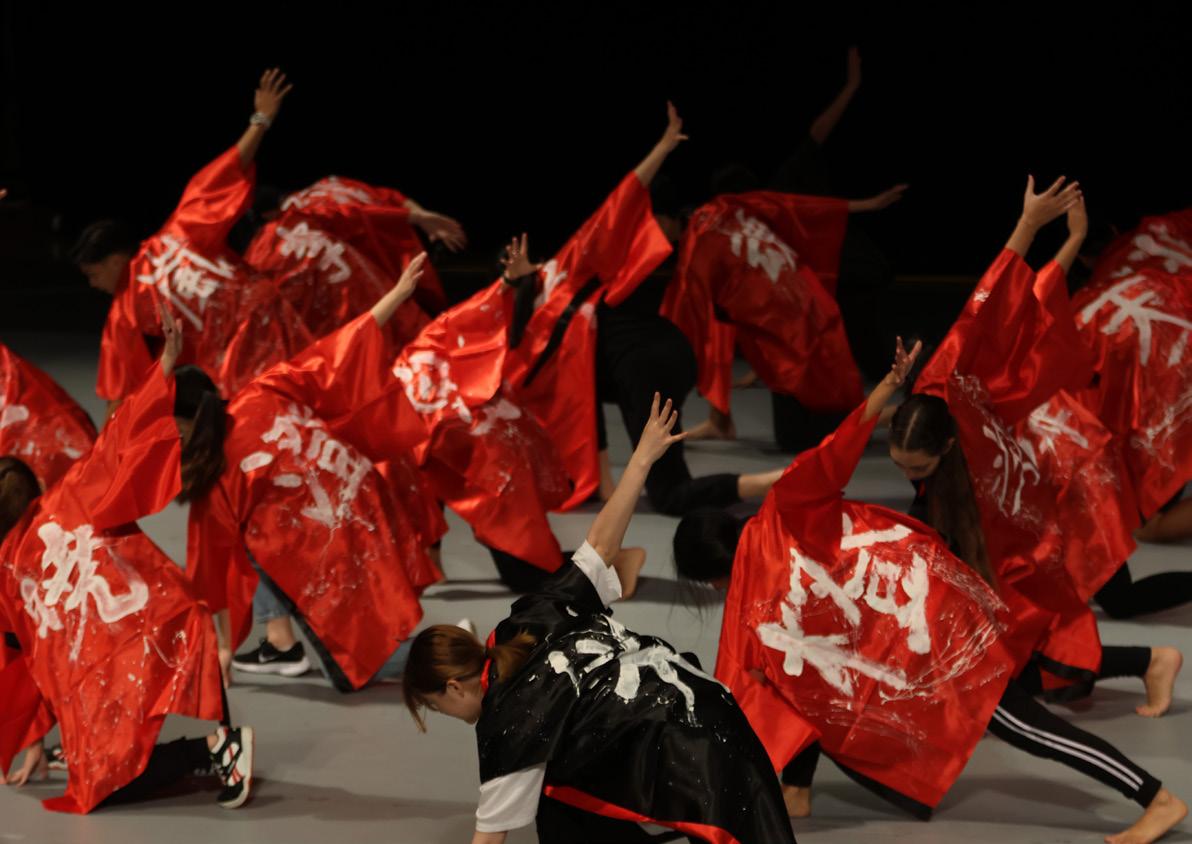
In the traditional dance, Nagahama explained, “It’s all about the fishermen in one of the islands of Japan. So, all the [movements are] pulling the nets, trying to grab a basket full of fishes. You will see a lot of those powerful moves.”
He added the costumes for the last dance will be related to fishermen. Nagahama said the headband represents the people’s hardworking labor that causes them to sweat. So they wear a headband to prevent the sweat from getting in their eyes. •
Japan Club members dancing in their modern anime and Happi costumes. Photos by Zane Saenz, Yui Leung and Yichi Lu. Graphics by Yichi Lu.
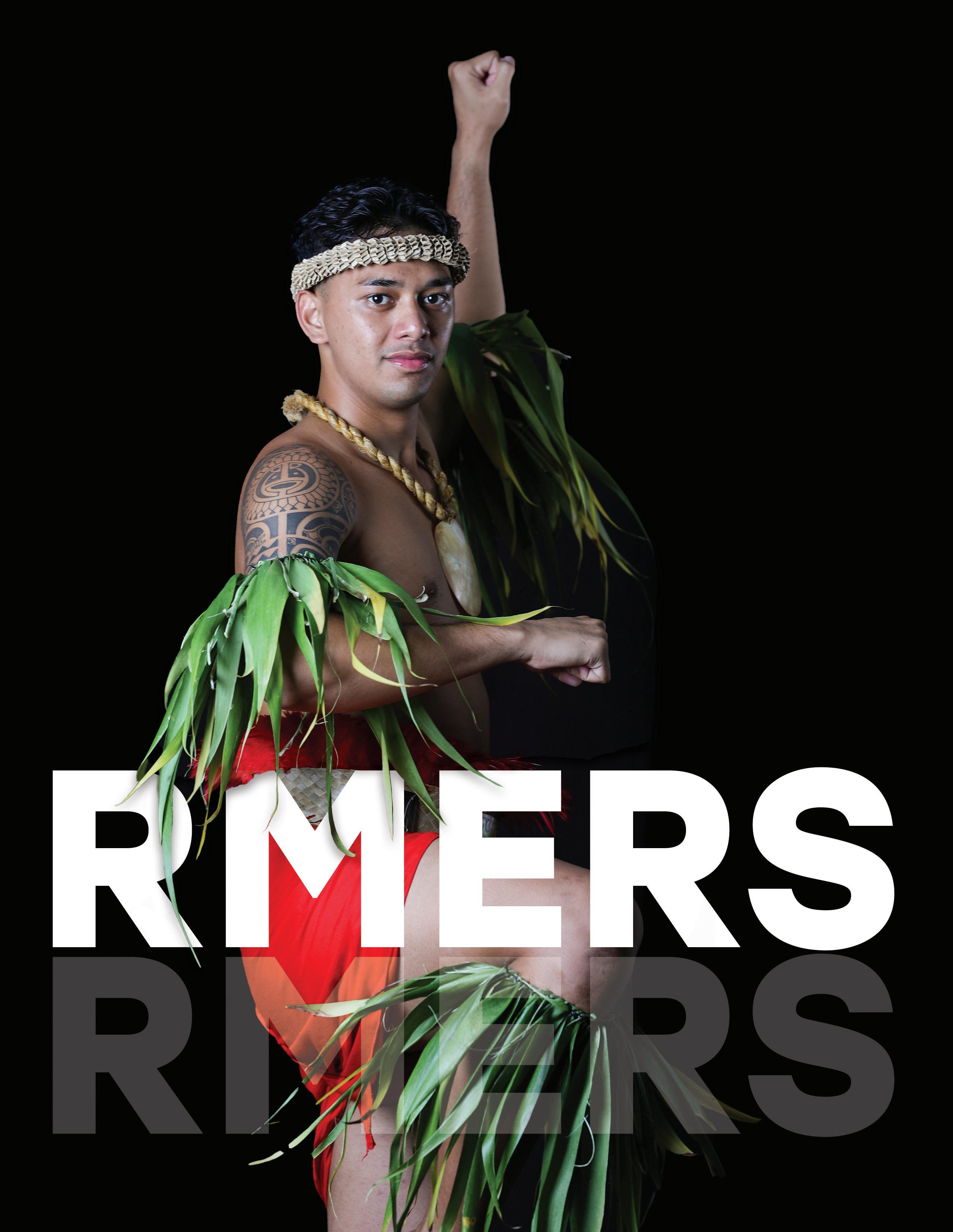 Kekoolani Huria representing Tahiti Club.
Photo by Monique Saenz.
Graphic by Sugarmaa Bataa (Kendra).
Kekoolani Huria representing Tahiti Club.
Photo by Monique Saenz.
Graphic by Sugarmaa Bataa (Kendra).
Having people from other cultures in the Fiji Club strengthens Fijians because it “helps us look outside the box,” said Paula Taukei, an exercise sports science major from Fiji.
Taukei, who is a senior, shared, “The main purpose of the club is to be diverse because when you have only Fijians inside [the club], it doesn’t grow. Growth comes when you’re not in your comfort zone.”
“Having diversity within a culture just hones in on the idea of unity,” said Blake Collier, a junior from Arizona majoring in social work. She explained looking at a group of people who share the same culture and understand one another “is something special.”
Taukei explained Fiji is a diverse country, so the presidency of the club worked hard to portray the concept of diversity through Culture Night. “When it comes to Culture Night practice, we must always remember we’re representing Fiji,” he said.
When Collier joined Fiji Club, she said she worried about not being able to represent the culture well, but she said the choreographers “have been so good at realizing we’re all coming from different places and have broken it down to [help us] not only excel but also feel like we’re a part of the family.”
Collier said the choreographers were excited to share their culture and dances with her, and this acceptance and welcoming environment surprised her. “I was expecting it to be harder to mesh into a culture I’ve never
been a part of. But it was seamless and easy. They wanted me to be there.”
Taukei said seeing a diverse group of students dancing for Fiji helped the audience realize that they can also be part of the club and participate in cultural dances, even if they might have previously thought otherwise.
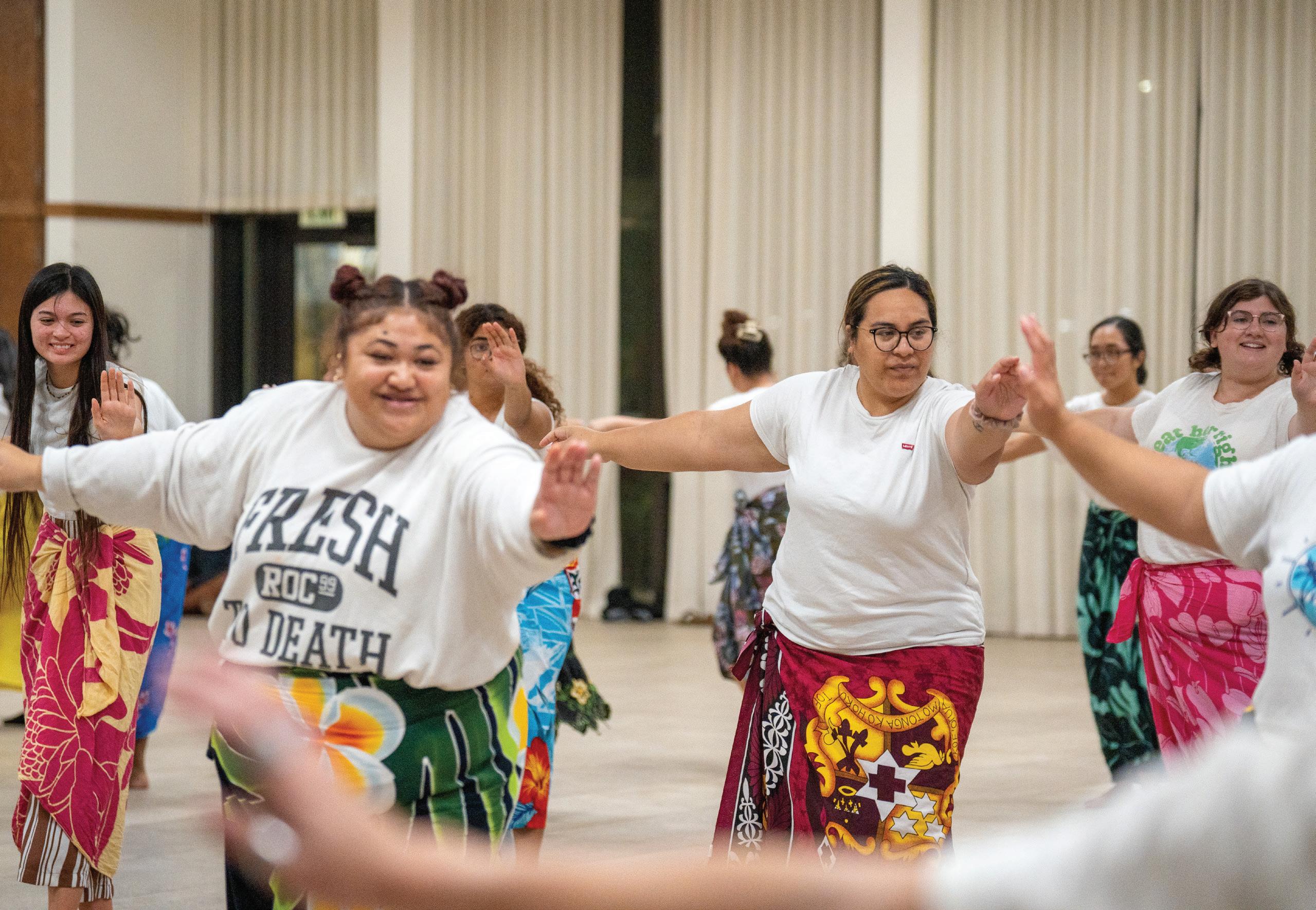
Brooke Dutro, a sophomore from the Big Island of Hawaii majoring in hospitality and tourism management, said the inclusion of other ethnicities and cultures was seen through the placement of the dancers. “They don’t just put all the Fijians in the front,” she said.
Taukei explained the placement of the Culture Night dancers was based on the students’ dedication and participation in
practice rather their cultural background. Each person who was in the front deserved the spot because, “Hard work beats talent,” he said, quoting a common Fijian saying.
Collier said she noticed certain cultures were not singled out to do the easier parts of the dance. Fiji Club leaders expected each dancer to step up “because they trust in other cultures,” she explained.

Many students, including Fijians, attended practices early, Taukei said, to recall moves they had not yet perfected. He complimented the club members on their diligence in dancing in synchrony, and shared that audience members might have even thought all of the performers were Fijian because of their matching movements.

Taukei stated the first three Culture Night practices in Fiji Club were spent doing get-to-know-you games where members were encouraged to stand beside and talk to people other than their friends. These games created lasting friendships, so members could help each other catch up if they missed a practice later, said Taukei.
Each practice began with a chant, called Nai Ucu ni meke, which is used in Fijian dances to prepare performers with the energy and motivation to dance. Taukei explained the chant is “to unify everyone.”
Collier said opening the performance with everyone coming together to sing the chant showed the inclusion and unity of the club. “[Neither] a person [nor] a group [is] being highlighted to open the show. It’s the whole club being the focus of the whole performance.”
Kelera Uluiviti, a freshman from Fiji majoring in accounting, said during practice, “It wasn’t just the Fijians working together but also all the other cultures dancing. … We’re all just united, dancing the same move.”
She shared something she loved about Fiji Club was how willing every member was to help one another. Upon learning that a club member needed to fly home due to the death of a loved one, Uluiviti said Fiji Club members pitched in financially in any way they could to help the person book the flight back home to Fiji. •
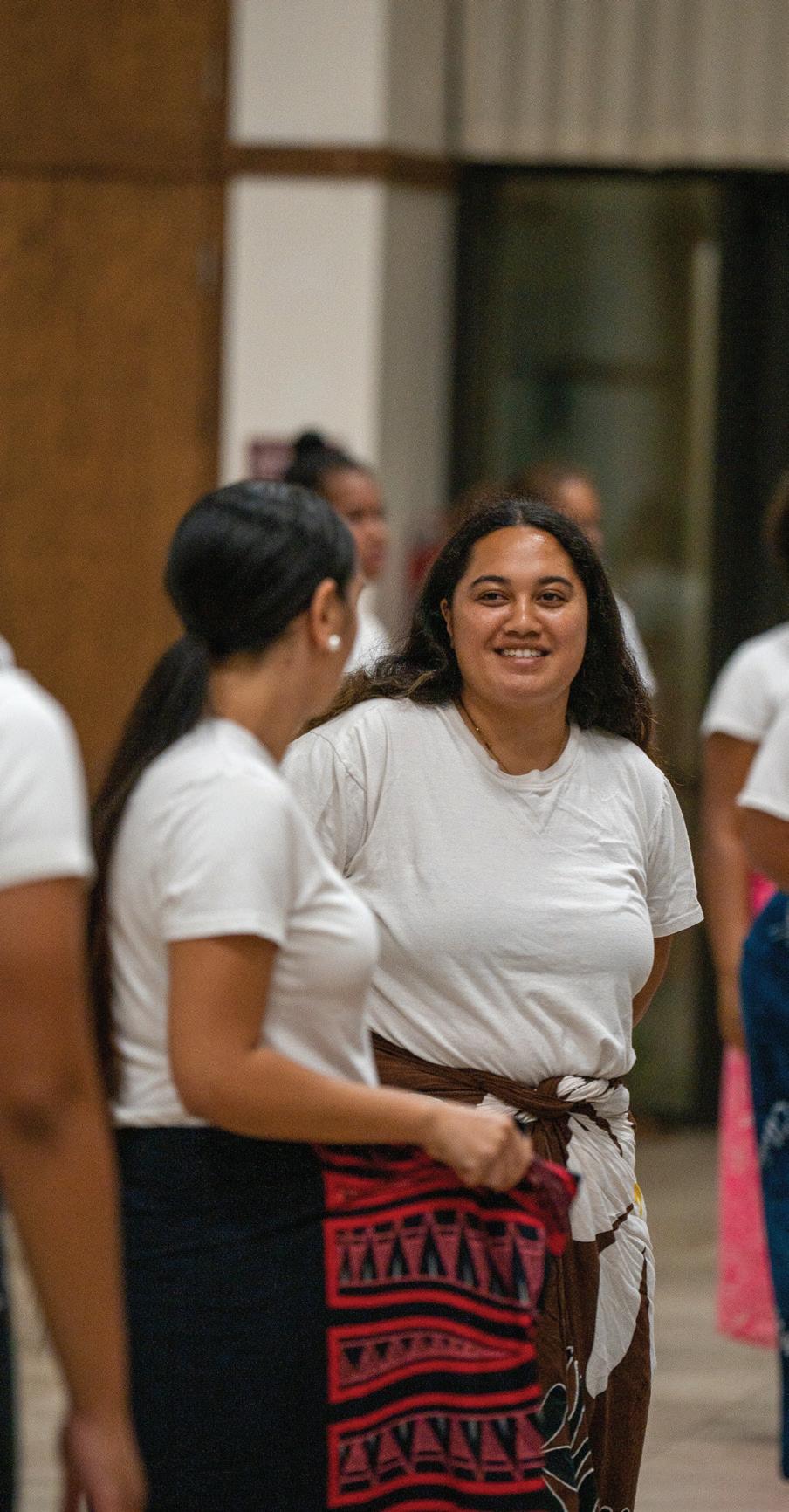 A group of performers practice different formations.
A group of performers practice different formations.
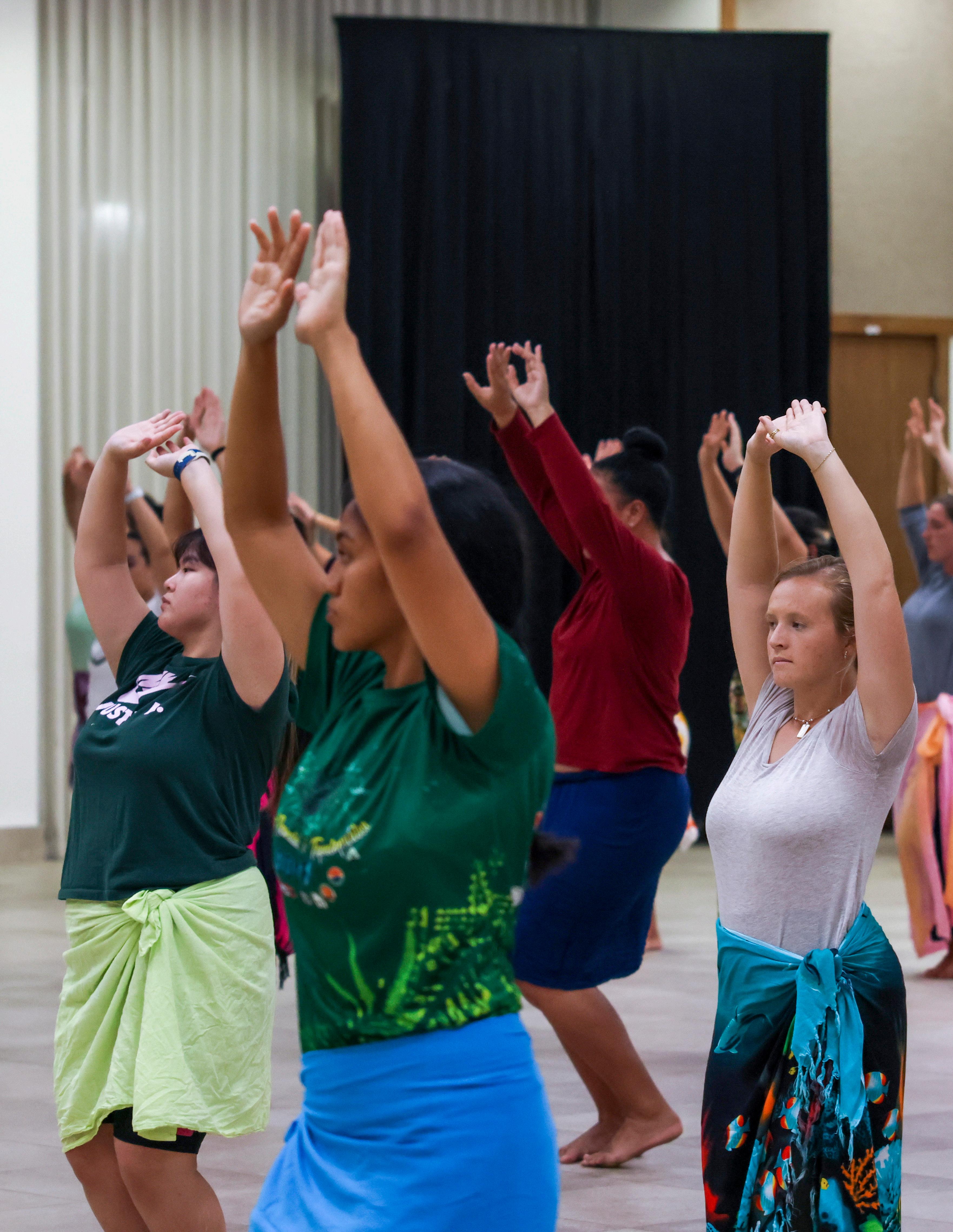 BY MAHANA TEPA
Female BYUH students practicing for the Tahitian performance in Culture Night.
Photos by Zane Saenz. Graphics by Marlee Palmer.
BY MAHANA TEPA
Female BYUH students practicing for the Tahitian performance in Culture Night.
Photos by Zane Saenz. Graphics by Marlee Palmer.
Tahiti Club President Klaus Tuera, said the presidency of Tahiti Club was inspired to create it Culture Night performance by the words in Malachi 4:6, “… he shall turn the heart of the fathers to their children, and the heart of the children to their fathers.”

Tuera, a senior from Tahiti majoring in business management, explained, “Through our ancestors’ traditional songs and motions, we wanted to share [our ancestors’] authentic way of life.”
Tuera continued, “My ancestors are dear to me, even the ones I have never met. I could feel our Tahitian ancestors’ gathered together during each practice, watching and cheering on us for sharing and teaching students from diverse cultures about the traditions they once created and fought hard to protect.”
Tuera said Tahiti Club portrayed and brought back to life the humble yet joyful expressions and traditions of their Tahitian forefathers for new generations. “This period truly happened when the missionaries came to Tahiti and forbade our ancestors to perform their traditional dances. For [the missionaries], the traditional dances were too alluring and provocative. Still, for our ancestors, it was the joy and happy way of life they tried to express through motions and dances,” Tuera shared.
Poevai Ienfa, a freshman from Tahiti majoring in English education, said each story should never be forgotten, nor the tears, sacrifices and joy of those who came before. Ienfa expressed as a Tahitian, it is a source of pride and joy for her to represent her home, and its history, culture and identity. “This Culture Night was related to our ancestors’ past because they are the ones who started the dances and the Tahitian culture. By representing my culture this semester, I want to encourage the next generation to maintain and preserve our Tahitian identity,” Ienfa shared.
Alma Wilson, a freshman from Colorado majoring in visual arts, said the theme of genealogy and honoring ancestors was demonstrated not only through dances and music but also through the connections between family and generations. “When I perform, I feel honored and connected to my ancestors who have been performers at the Polynesian Cultural Center through many generations. They started the way, and I am continuing their legacy through performing and learning about different cultures,” Wilson shared.
Wilson said his favorite part of Tahiti Club is its social aspect. He explained, “The happiness and the smiles I see around me, [helps me to know] that all of us are in this together. There’s not one of us who stands above the other, but we’re all learning and growing as a family should be.”
Ienfa expressed her gratitude for the people from around the world who joined Tahiti Club this semester and wanted to learn about the Tahitian ancestral way of living. “It makes me happy to know people are interested to learn about my culture. Anyone who joined Tahiti Club will get to learn everything about our ancestors through the storytelling in each dance, gesture, step and every other detail such as smiling when performing and have fun.”
Ienfa continued, “We are the new generation, we are responsible for sharing our culture and our knowledge about story of old times with the world and our future children.”
Wilson invited people to honor their cultures by sharing with others the love they have for their ancestors. “Always remember the stories from the past. These stories made you who are you. Be proud of who you are because this is your identity,” Wilson shared.
Iris Zavala, a senior from Honduras majoring in elementary education, said expressing what can’t be spoken through languages can be shared through dances and motions. “The traditional Tahitian dances reminded me of my mom, who would take me to our traditional folklore dances and practices,” shared Zavala.
Zalava added the Tahitians implemented motions for words like “water” and “sand” in their dances, which reminded her of her parents who have passed away. She explained, “I remember how we would all take family trips to the beach. This is special to me because it created a connection with my family, and when I dance, I feel them watching and cheering on me.”
Falatapuita Matthes, a senior from Samoa majoring in psychology, said seeing the Tahitians performing their culture with pride reminds her of her pride in her Samoan culture.
Matthes said she admires her ancestors, saying, “My ancestors were incredibly hardworking people who enjoy working to provide for their families and those around them.”
Matthes said attending Tahiti Club practices helped her connect Samoan culture to the Tahitian culture. She shared several Tahitian club members, such as the choreographers, leaders and costume supervisors, worked tirelessly to ensure Culture Night succeeded.

While the choreographers worked hard on the music and dances, Matthes said the costume supervisors made certain everyone had their costumes ready for Culture Night. “As for the leaders, they ensured we were always fed with Tahitian food each practice. This is the Tahitians’ hard work for the people around them, and I know my ancestors were just as hard workers as they are,” explained Matthes.
Tuera said becoming the president of the Tahiti Club was unplanned. He explained, “Nobody wanted to take over Tahiti Club this semester, and I understand it because this is a heavy responsibility to take.”
Tuera explained when he was told Tahiti Club would not be represented during the Culture Night this semester, Tuera refused to let that happen and decided to accept the offer to lead Tahiti Club.
Although the unknown was terrifying, Tuera said, adding Heavenly Father in every detail, including planning and deciding who to have in the presidency, made a huge difference. “He inspired me in every possible way to know what to do, how to do it and who I can turn to for help. It has not been an easy journey to take over the presidency, but it has been rewarding.”
Tuera explained his goal was to have at least 100 students participating in Tahiti Club’s Culture Night performance. “As a final count for this semester, we have 204 dancers excited to represent the culture of my ancestors.”
Tuera expressed his love and gratitude towards all those who participated in Culture Night, including Quincy Tahiata and his fiancé, Michellae Timata, the choreographers and music leaders, Costume Supervisor Kimberley Brothers and her team and all the performers. “I’m very proud of you guys. When I see you all on stage and at practices, I don’t want to dance anymore. I just want to watch you guys because I’m really proud you and of having you represent my culture.” •
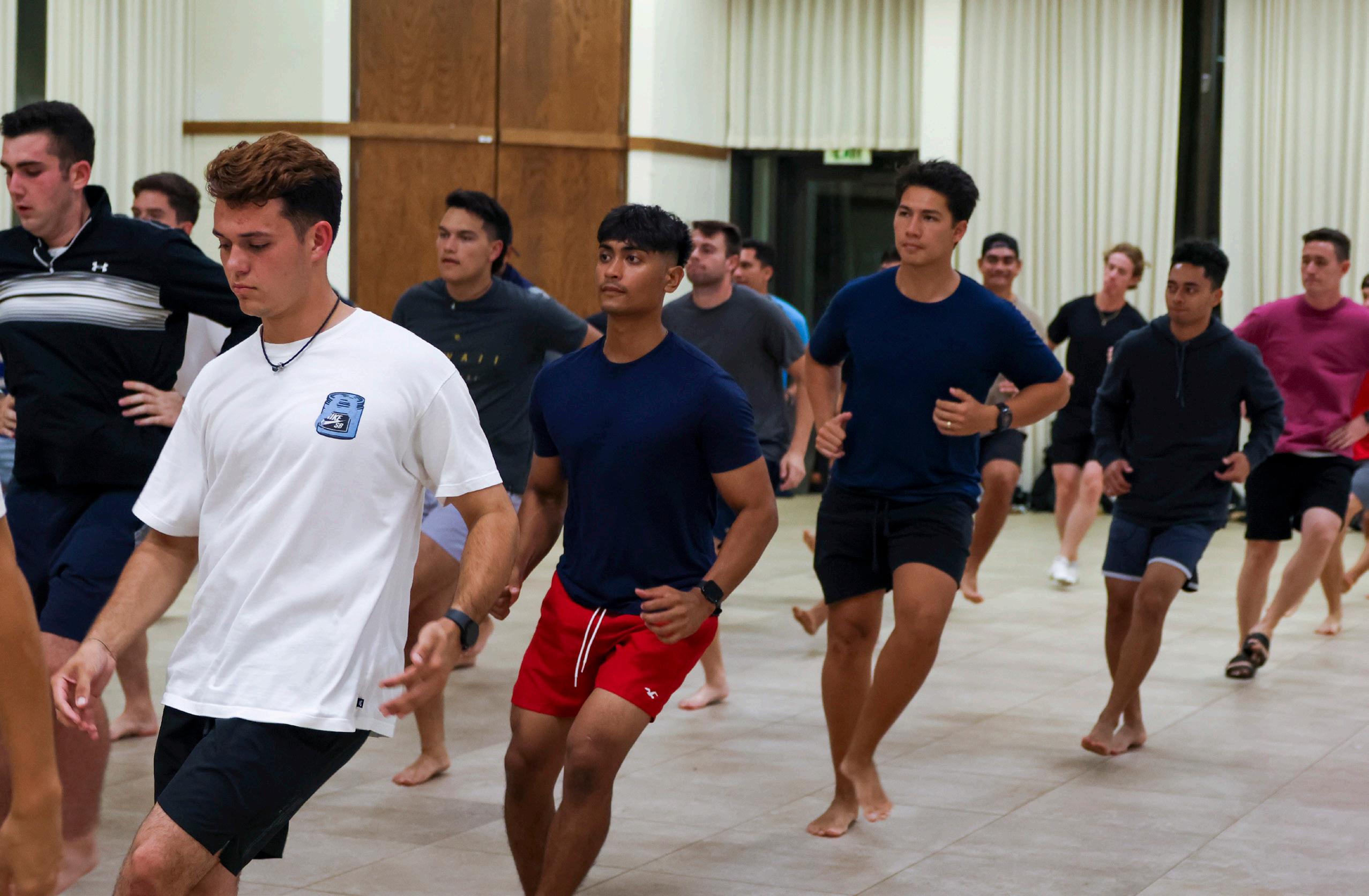
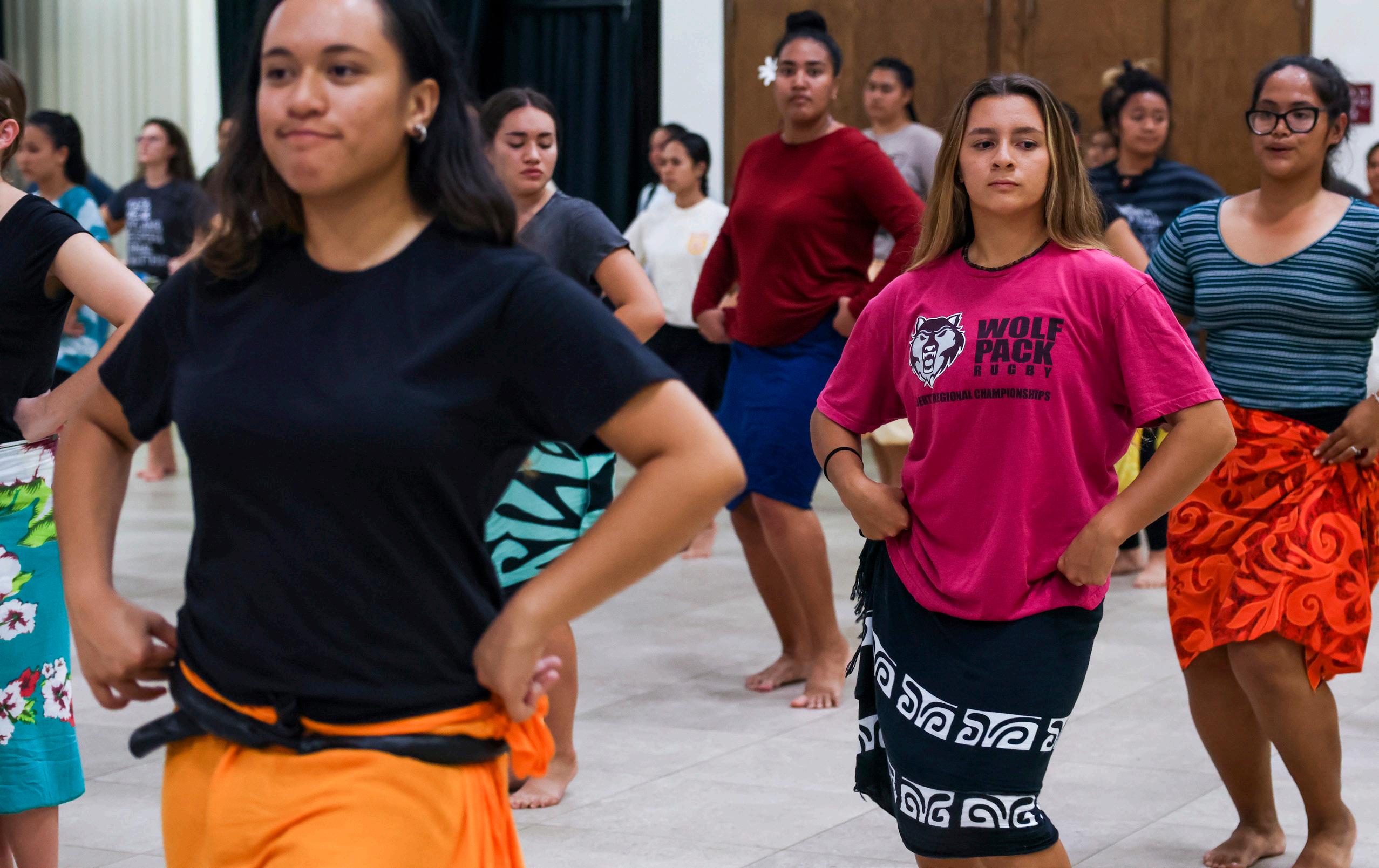 Top and bottom: BYUH students practicing for culture night.
Top and bottom: BYUH students practicing for culture night.

 Close up Selai Vuetibau wearing traditional Fijian clothing.
Photo by Monique Saenz.
Graphic by Sugarmaa Bataa (Kendra).
Close up Selai Vuetibau wearing traditional Fijian clothing.
Photo by Monique Saenz.
Graphic by Sugarmaa Bataa (Kendra).
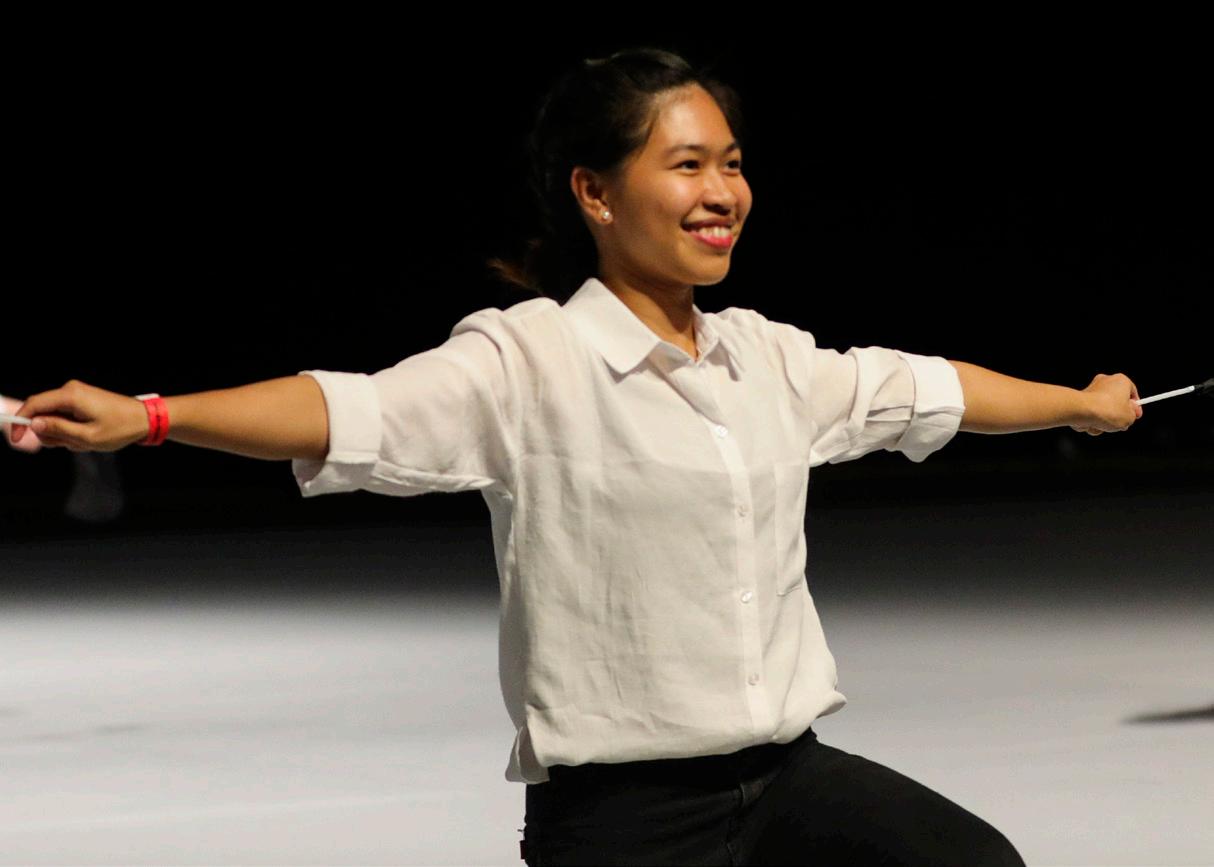
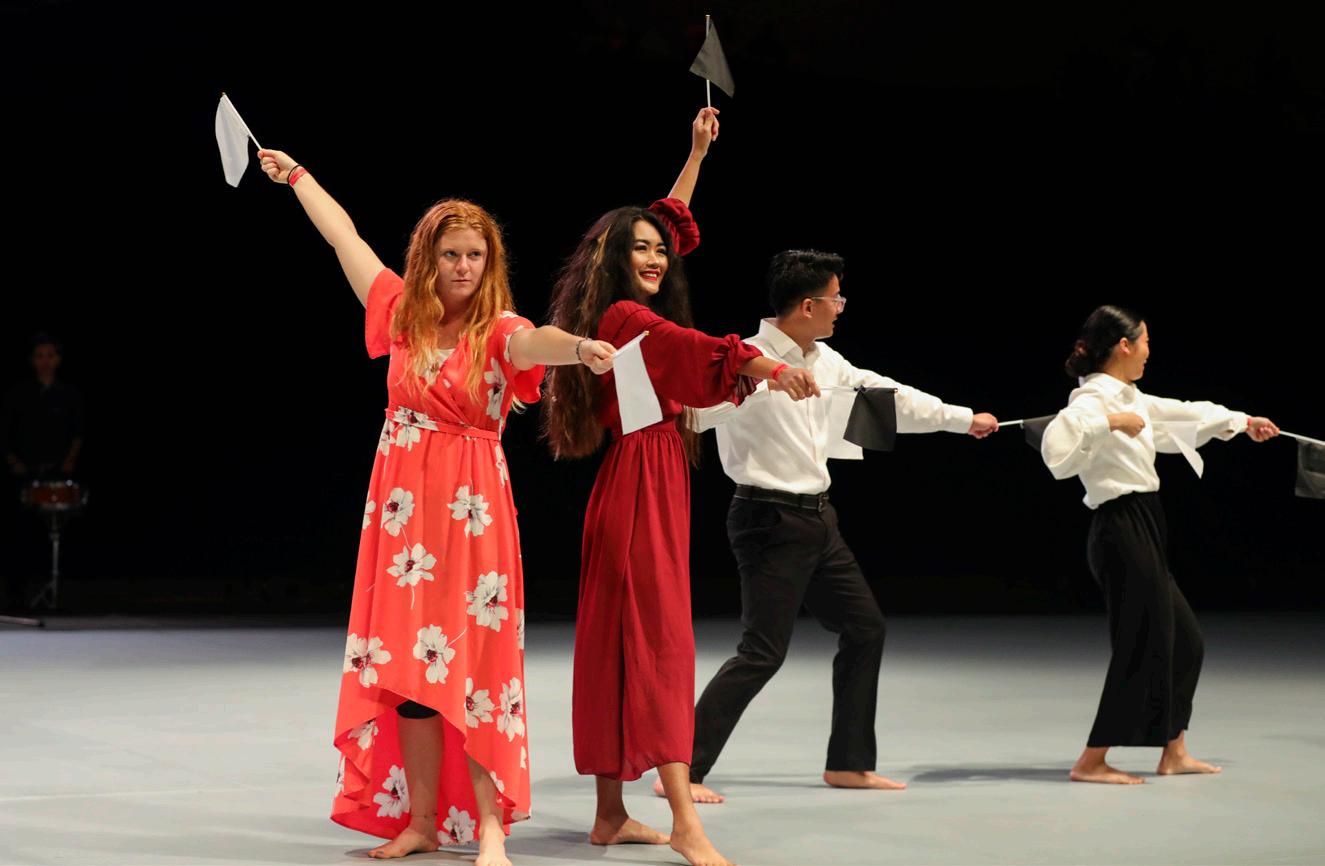

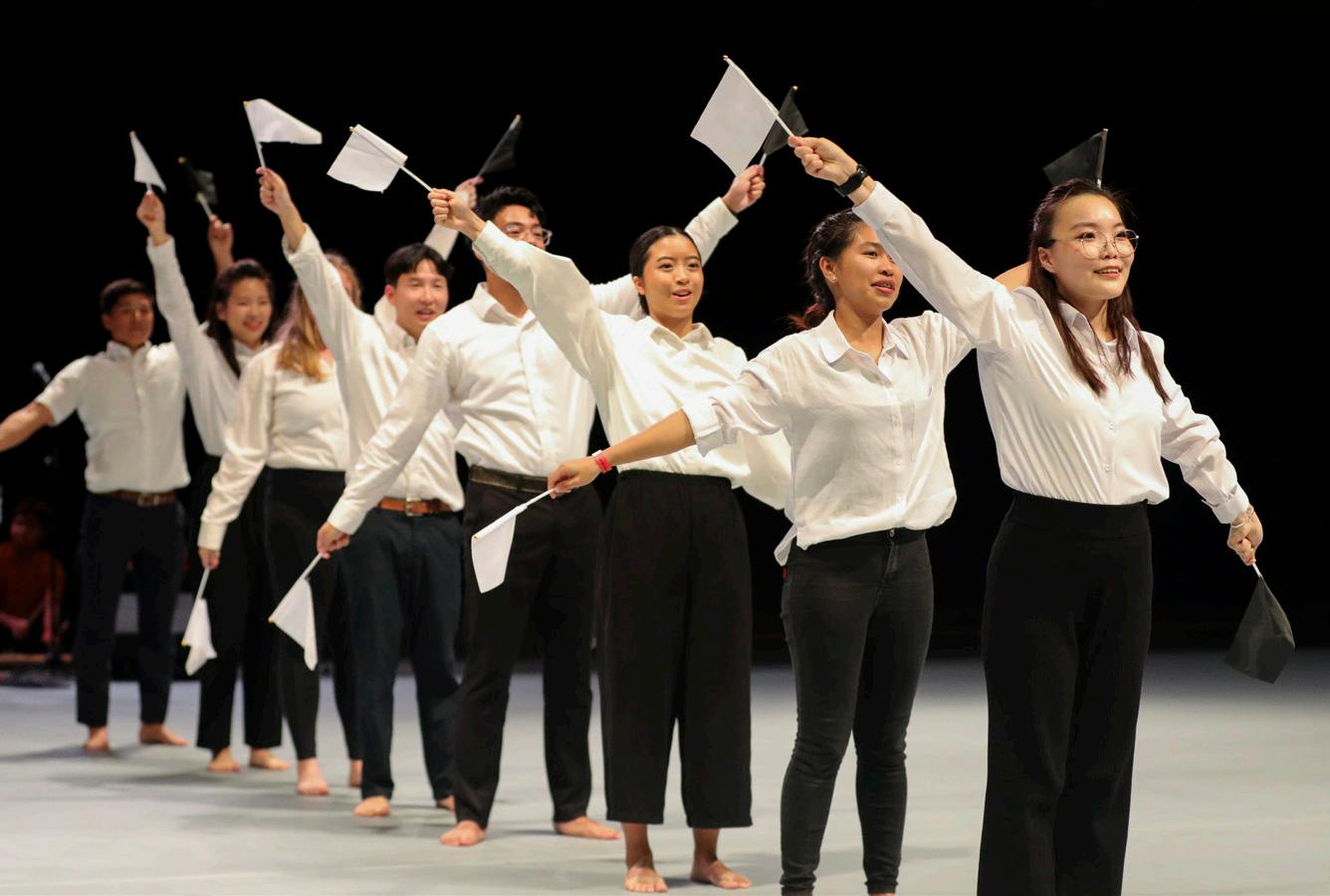




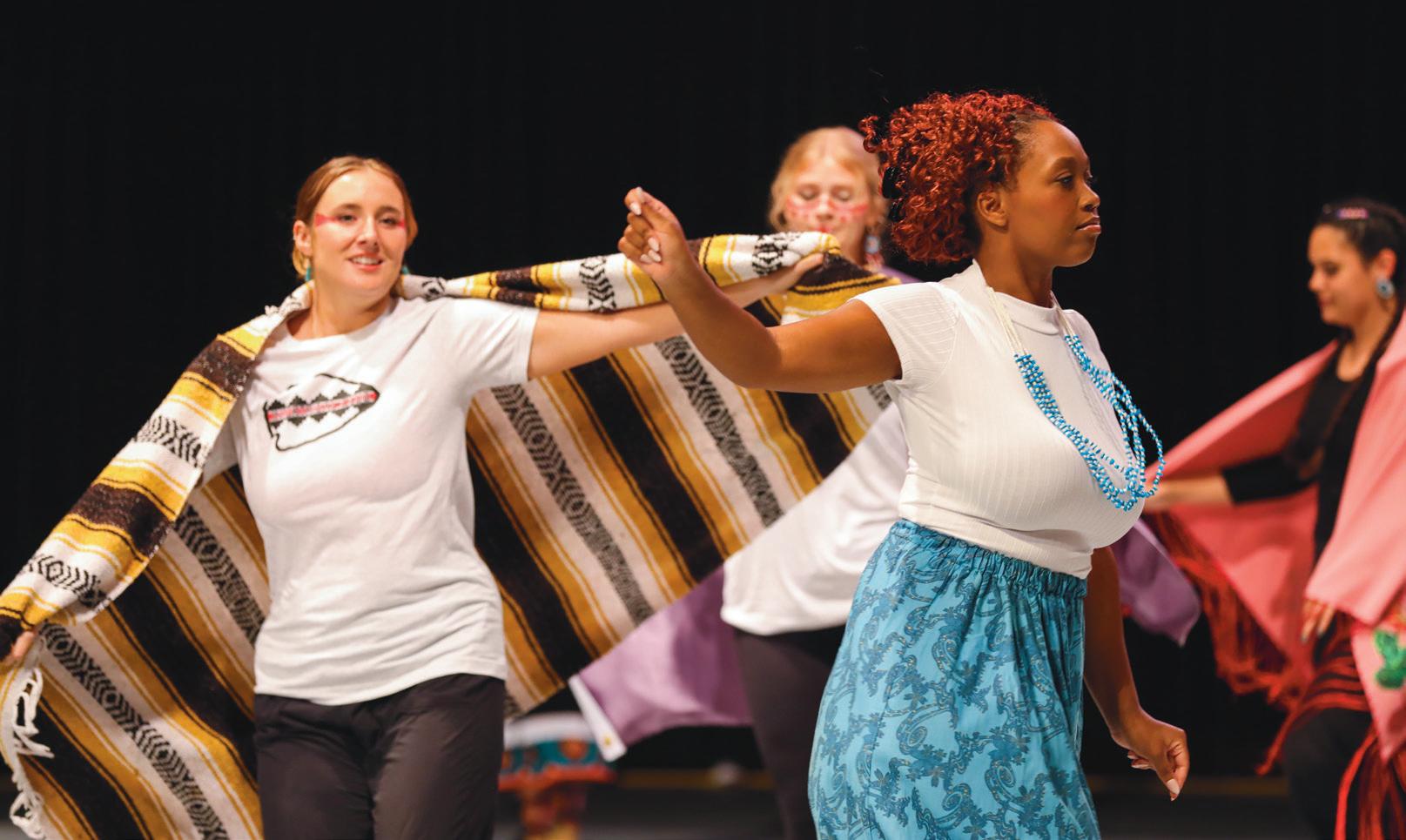

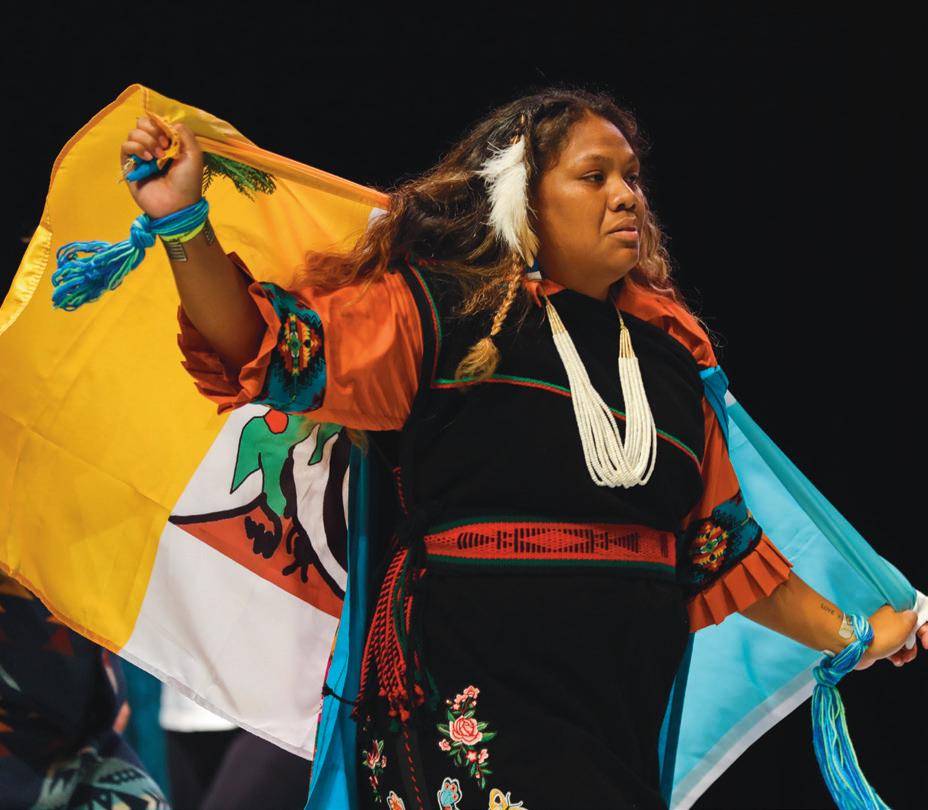
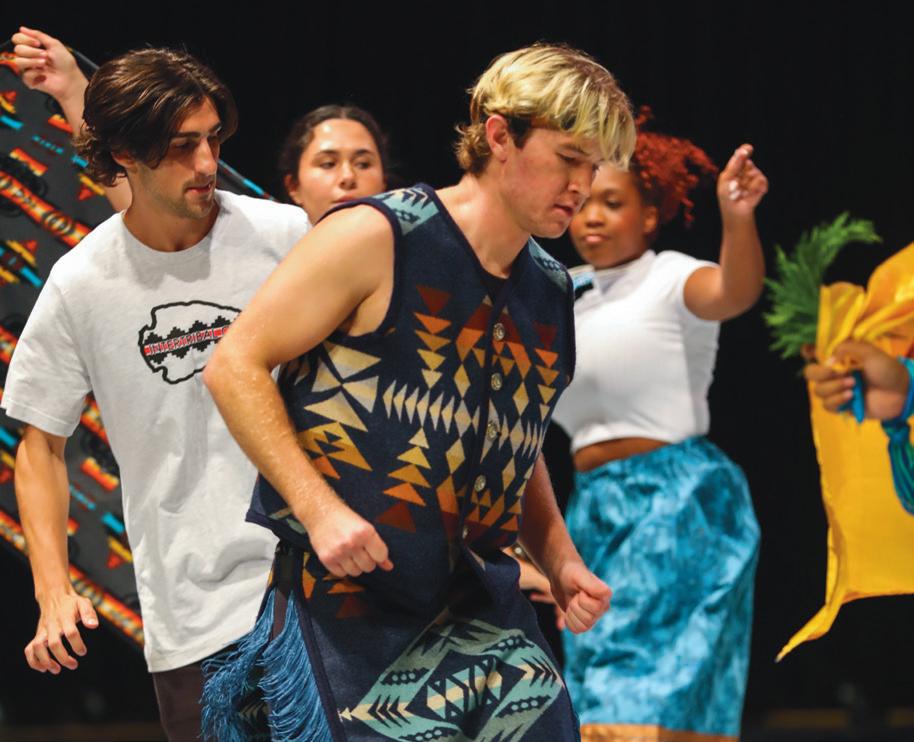
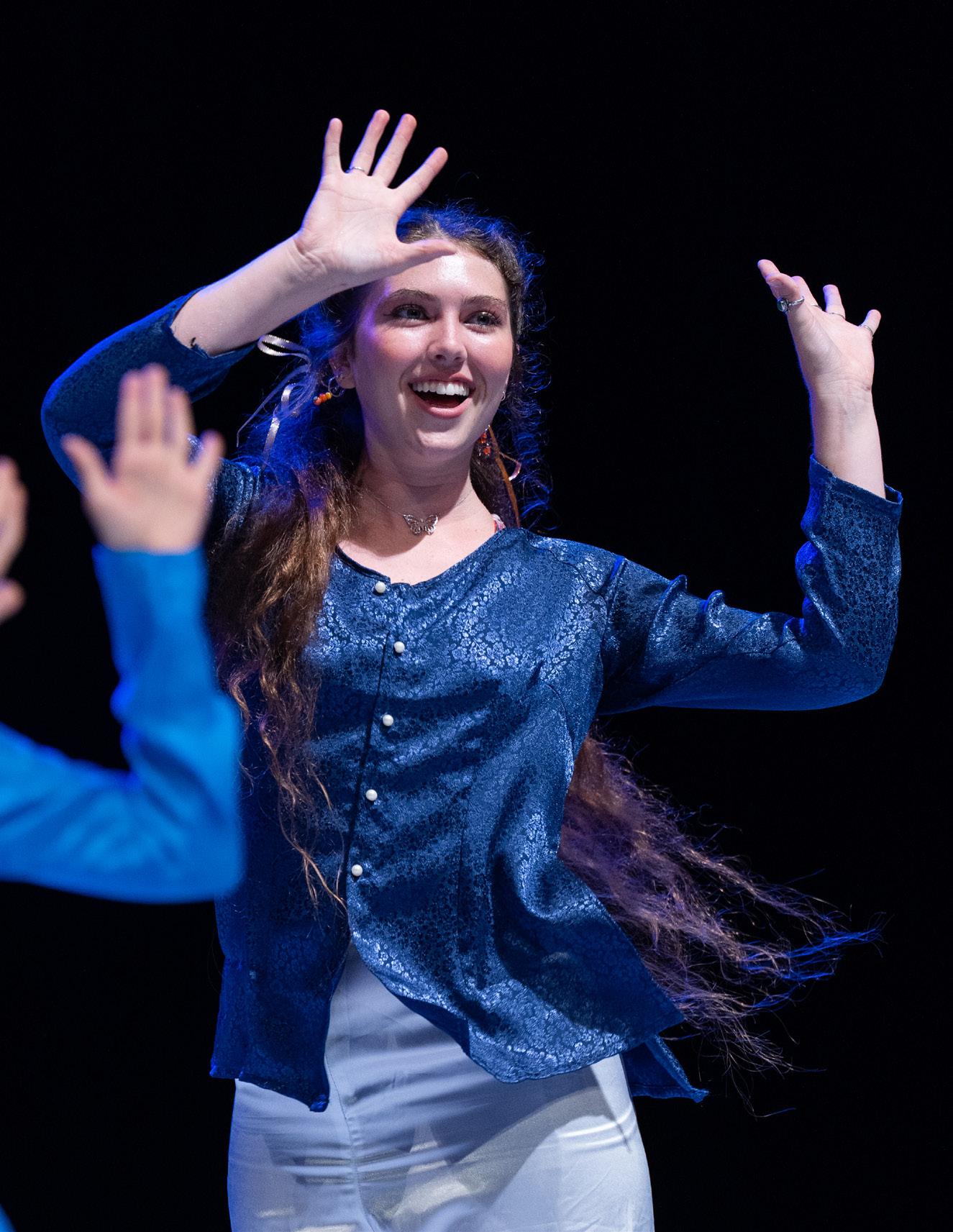


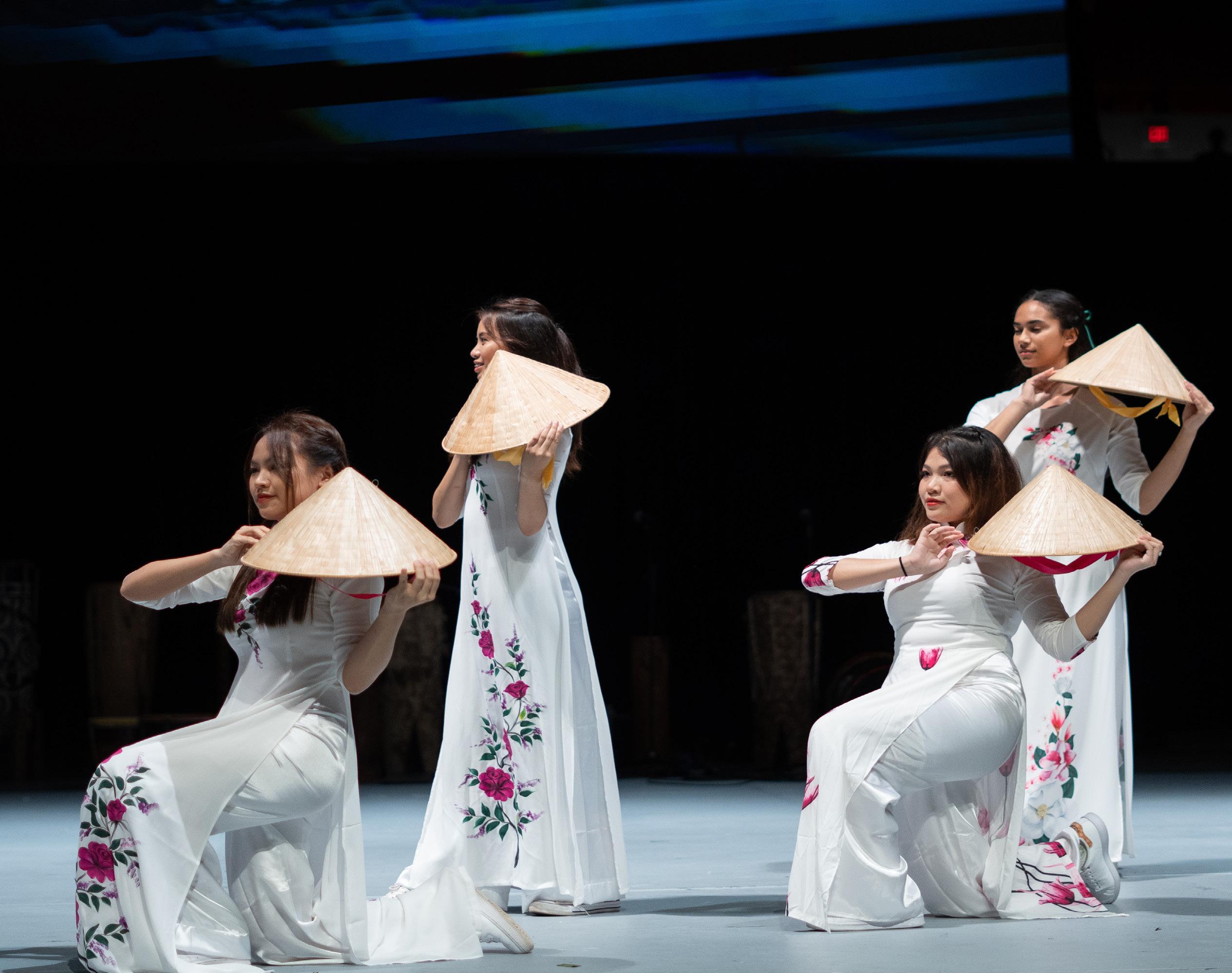
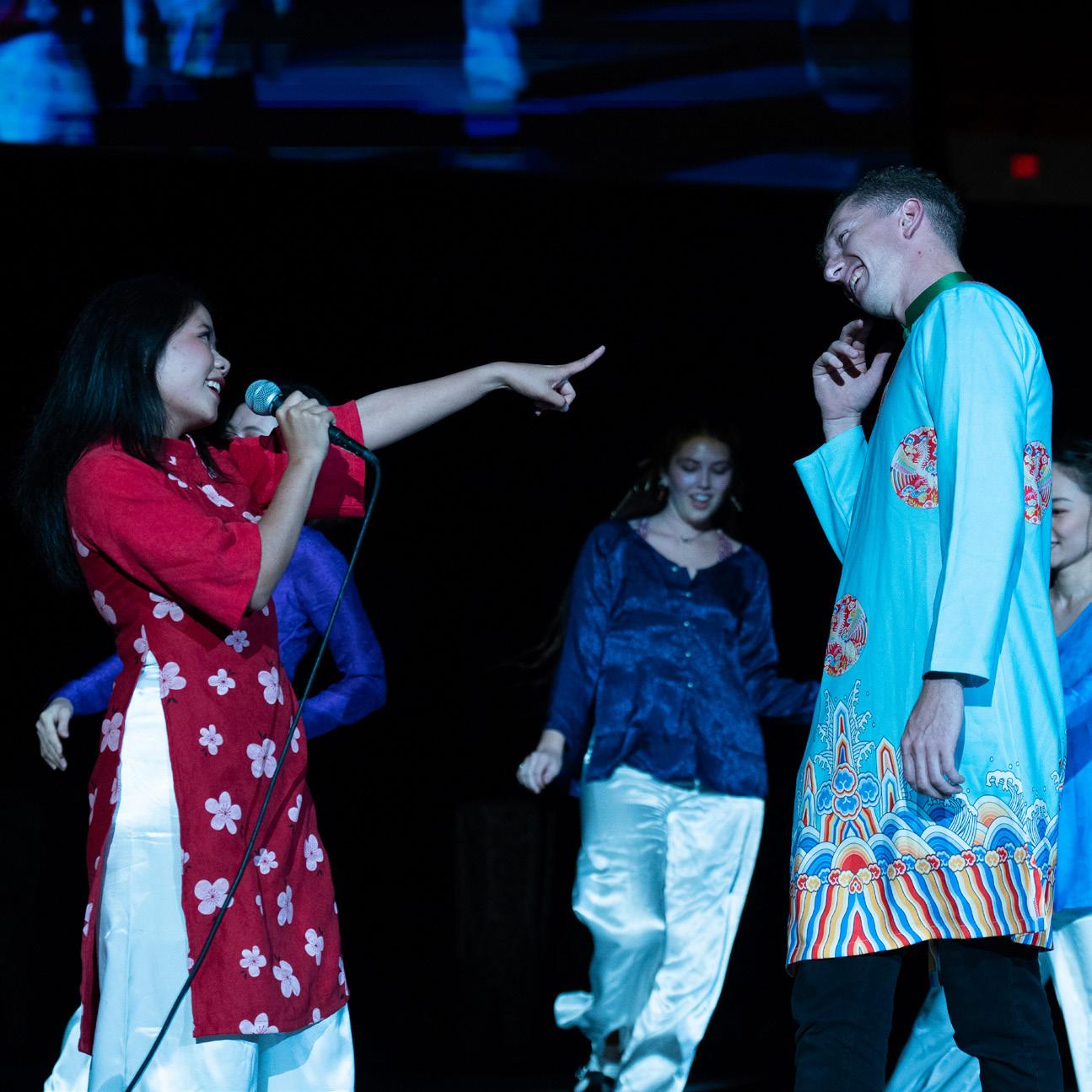
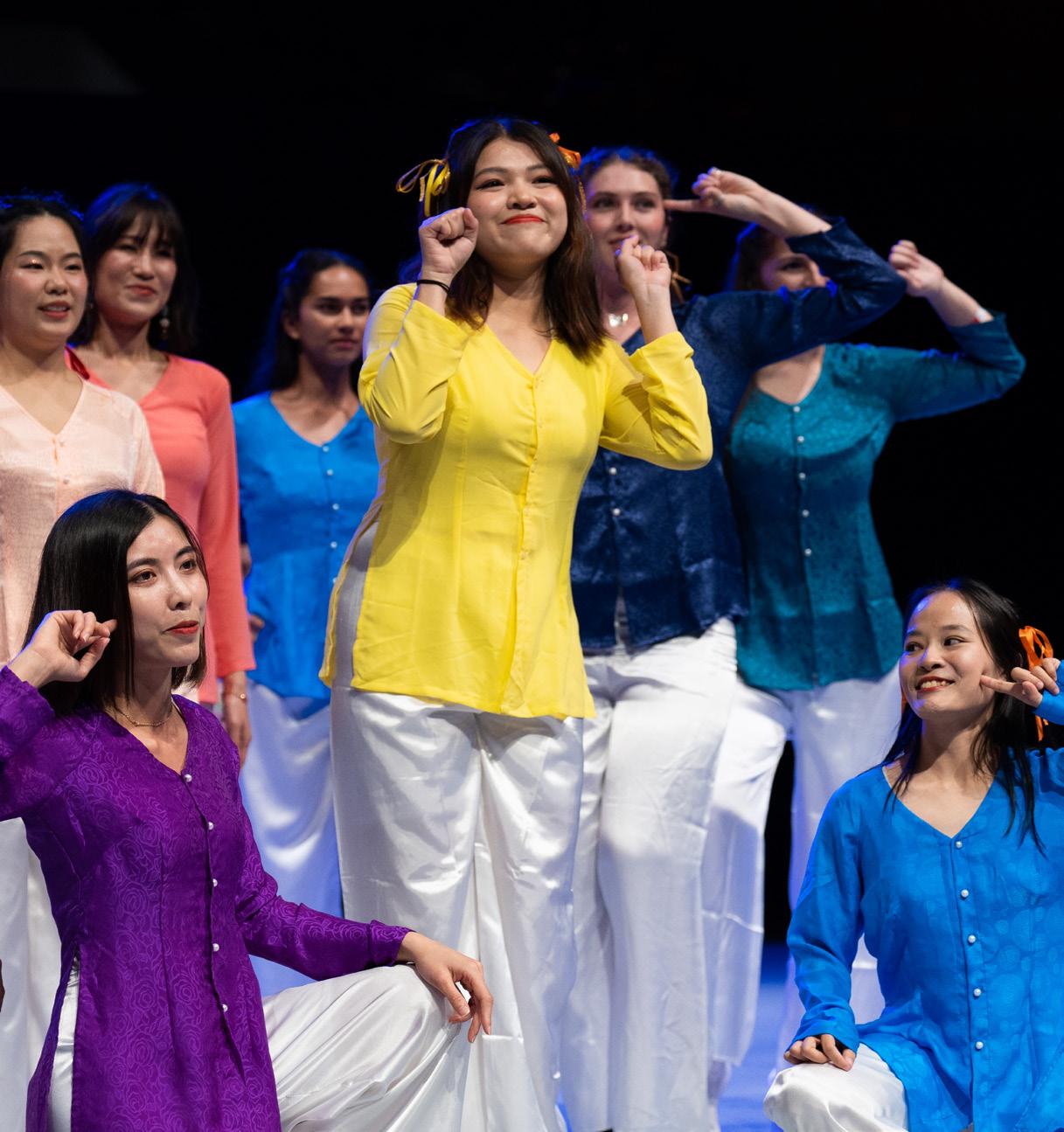
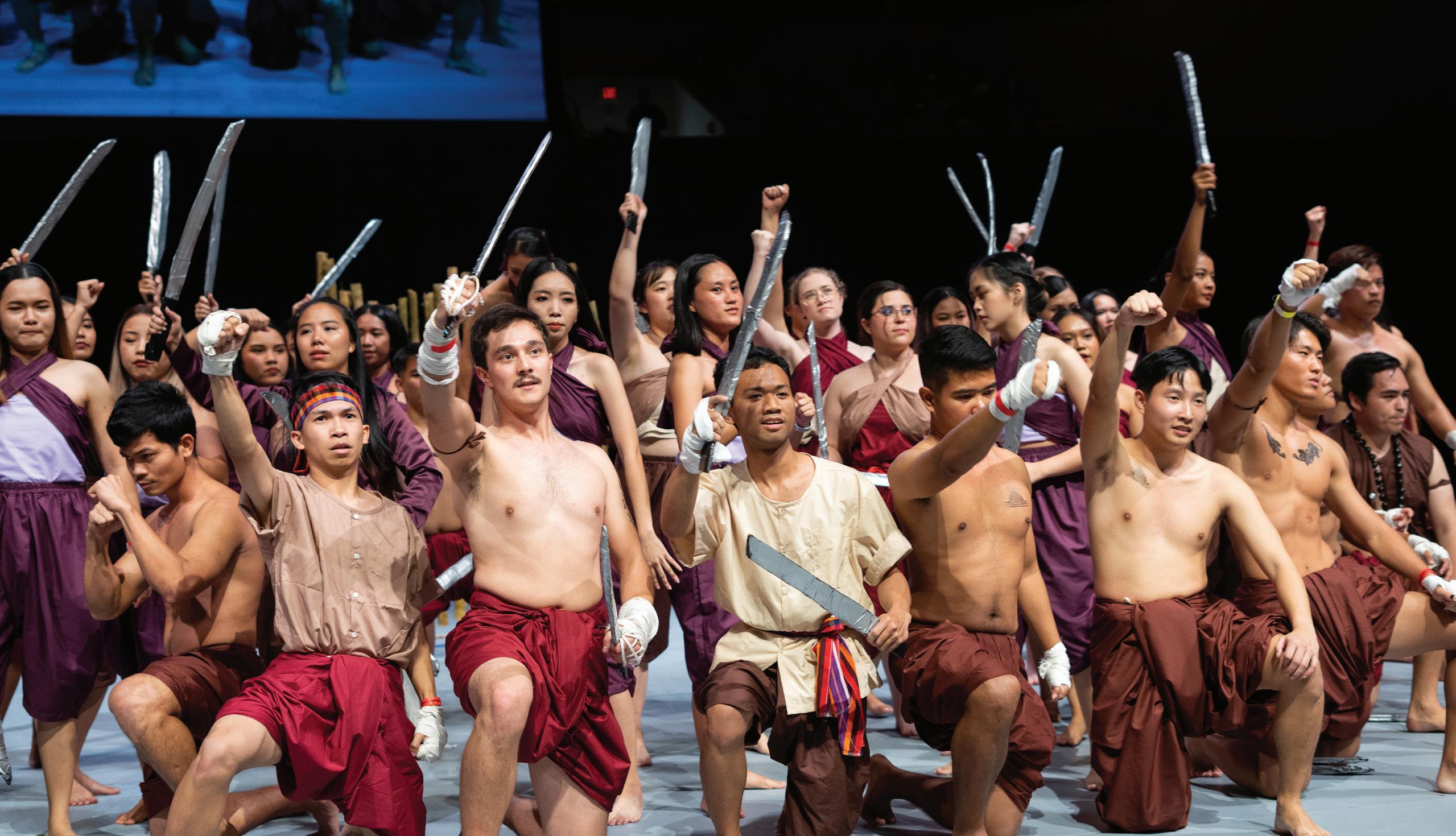
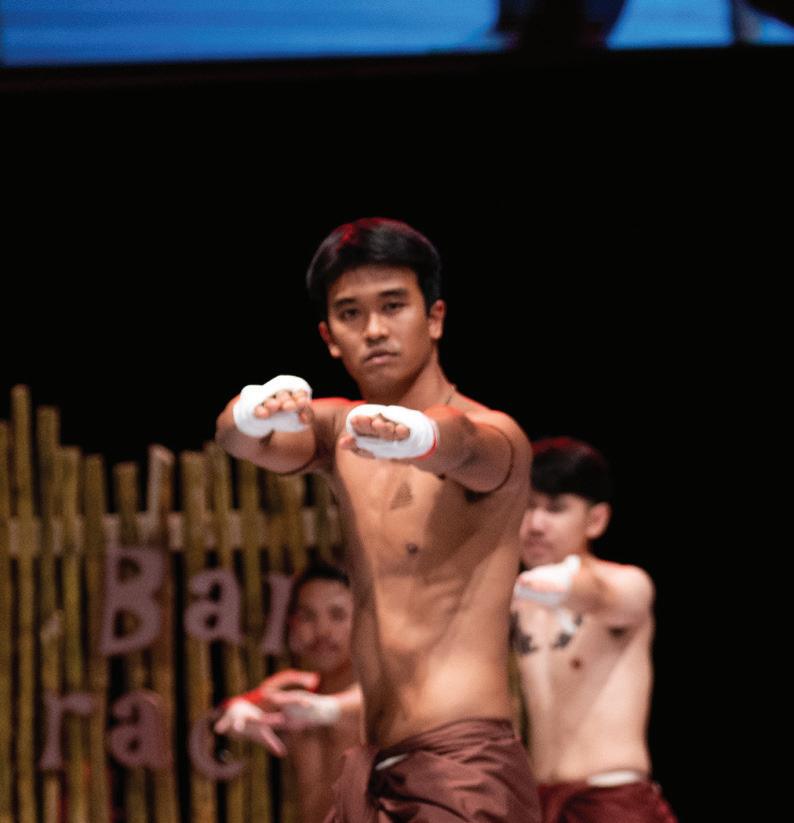

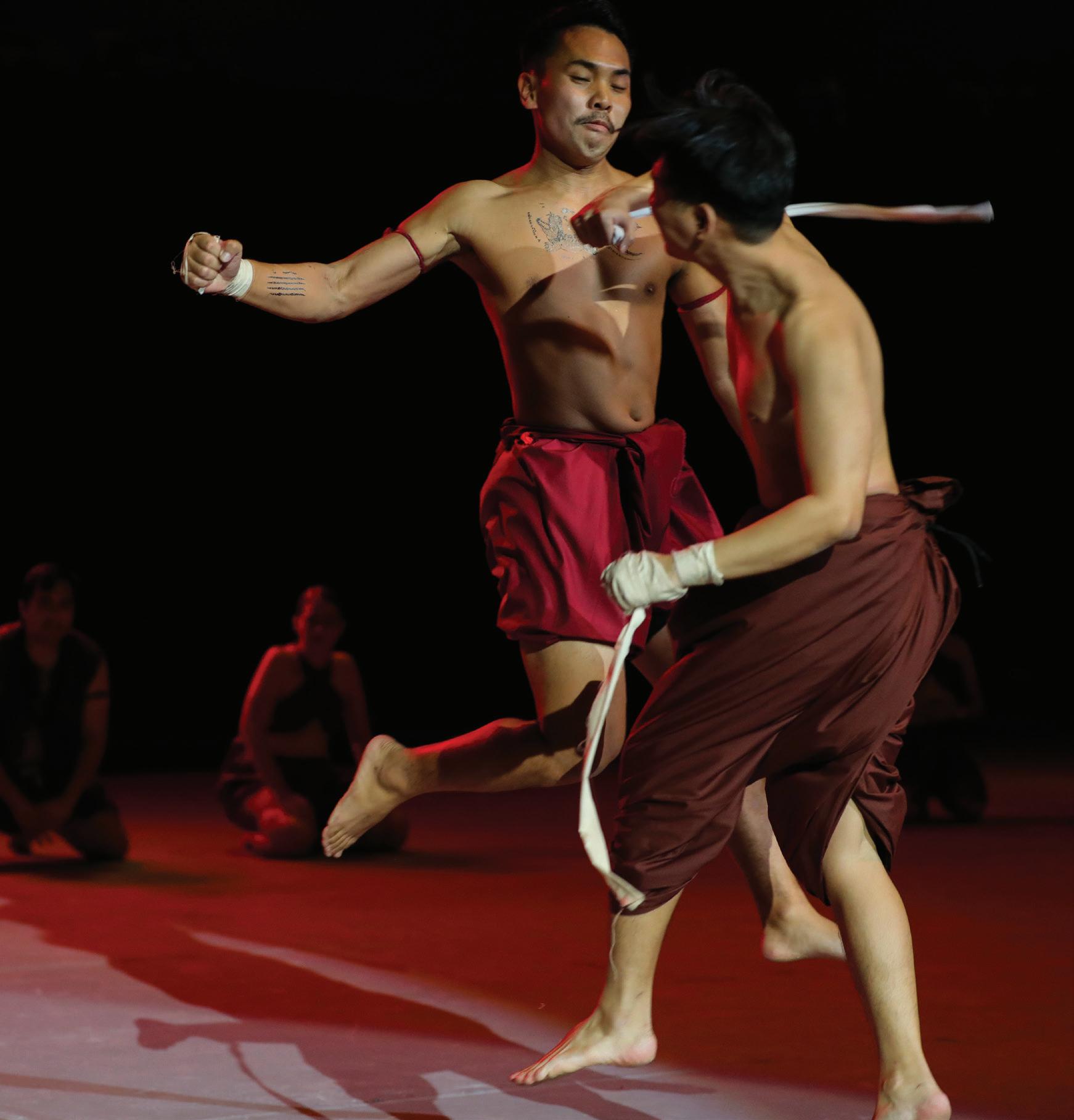
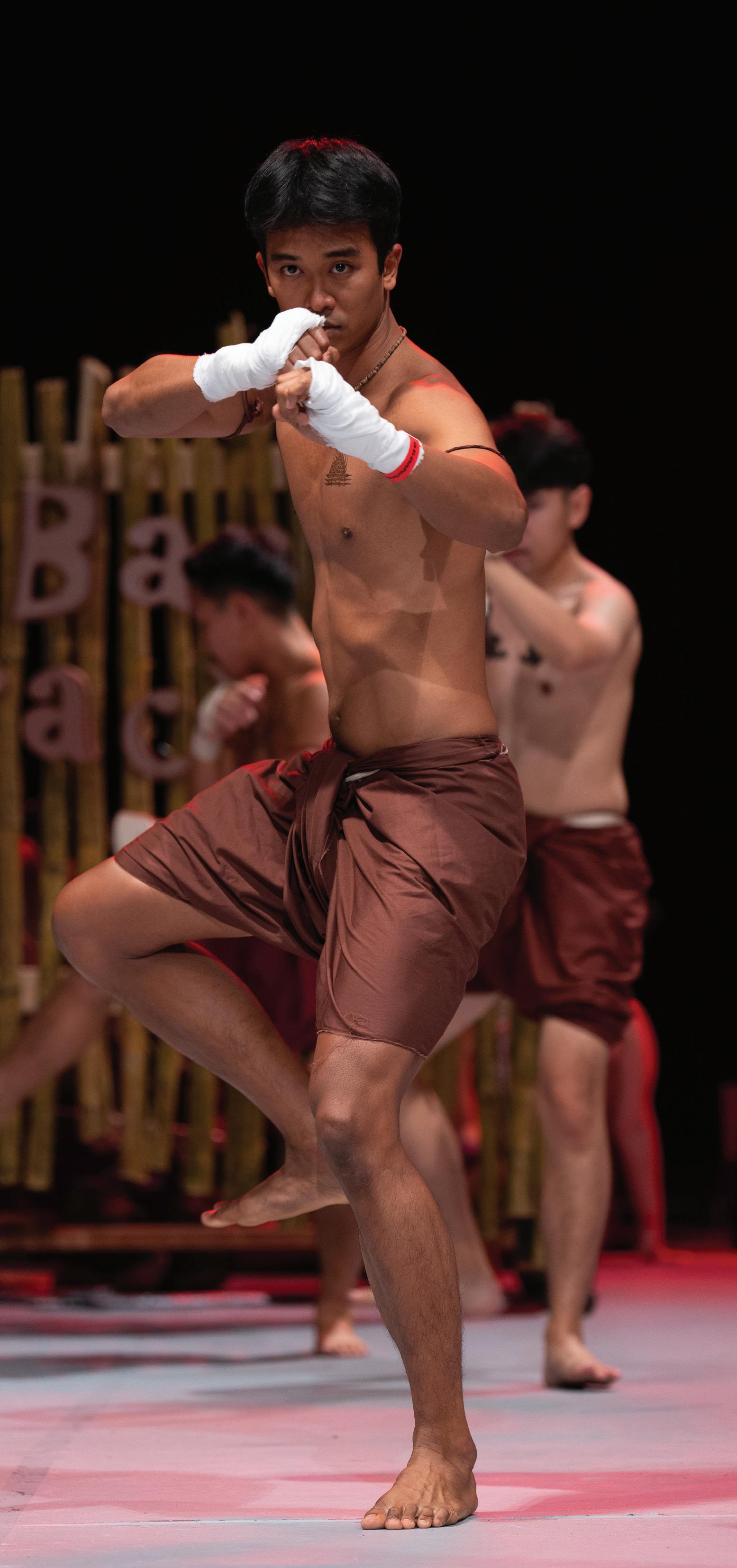
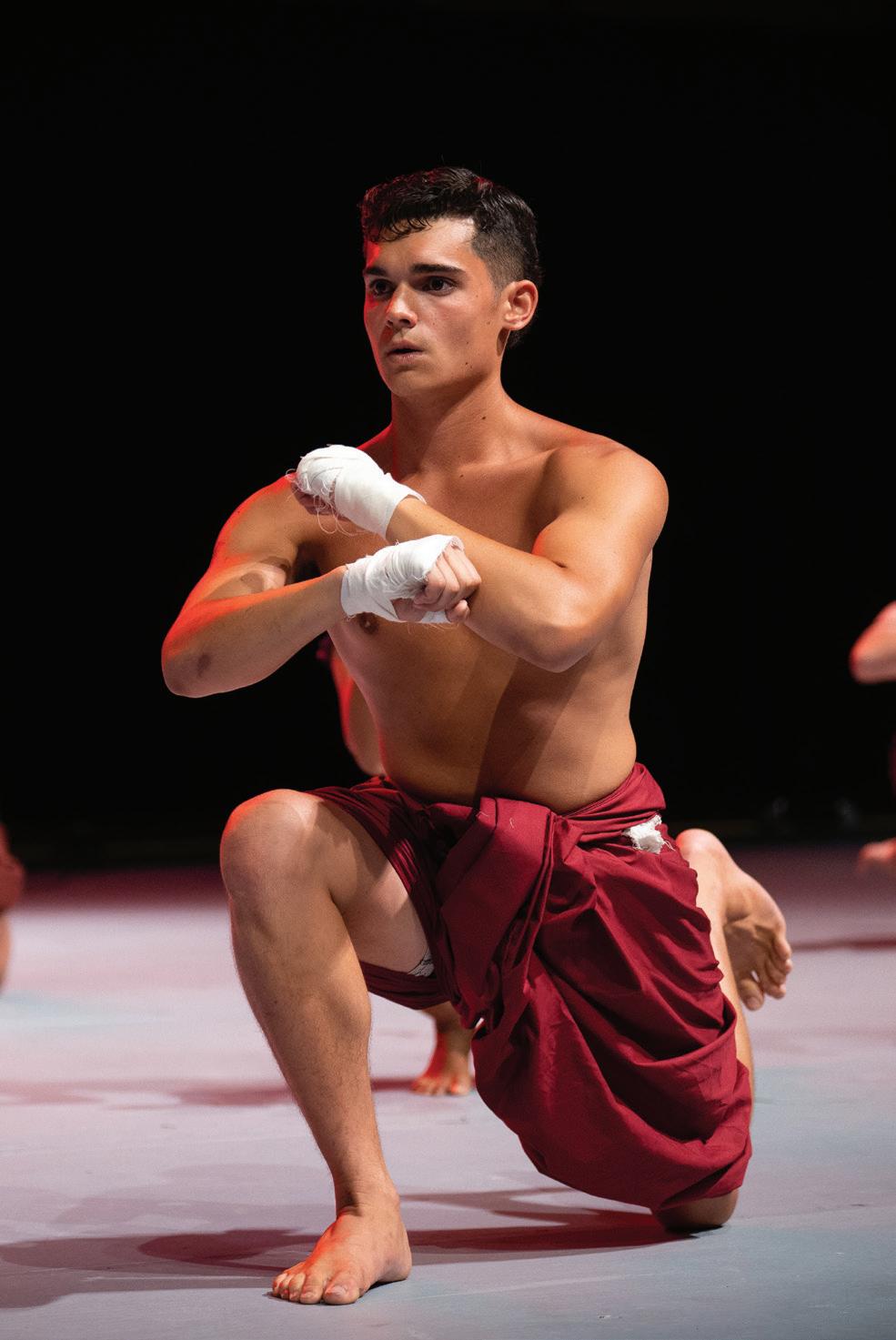
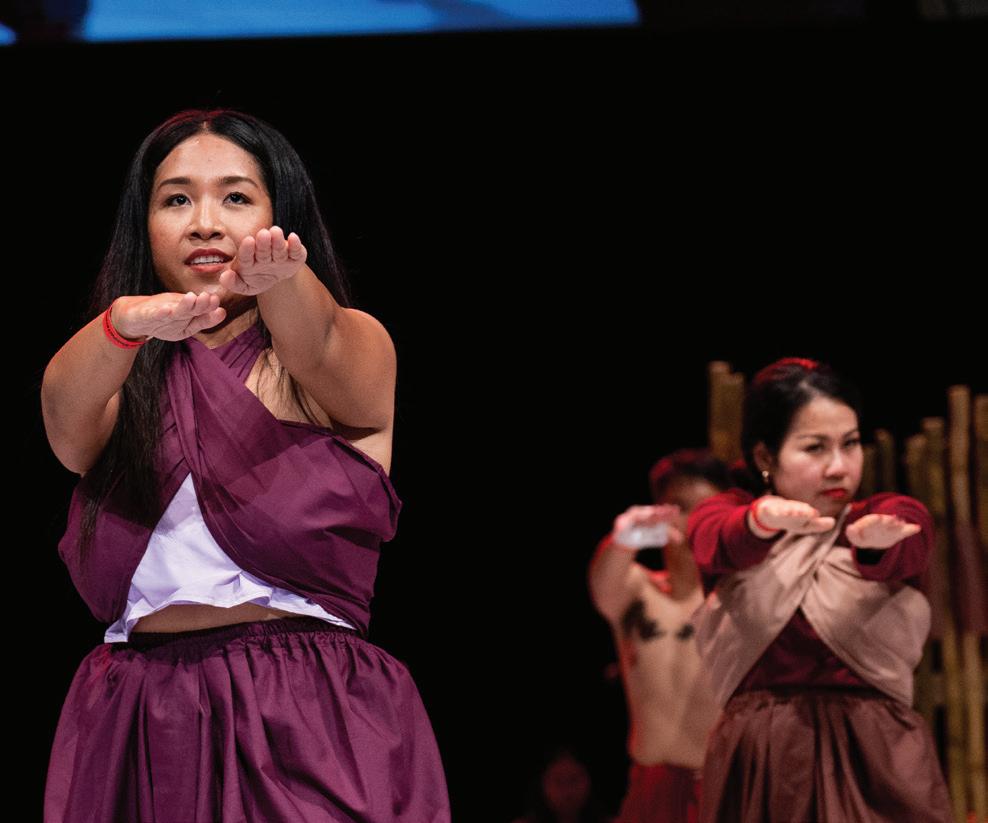
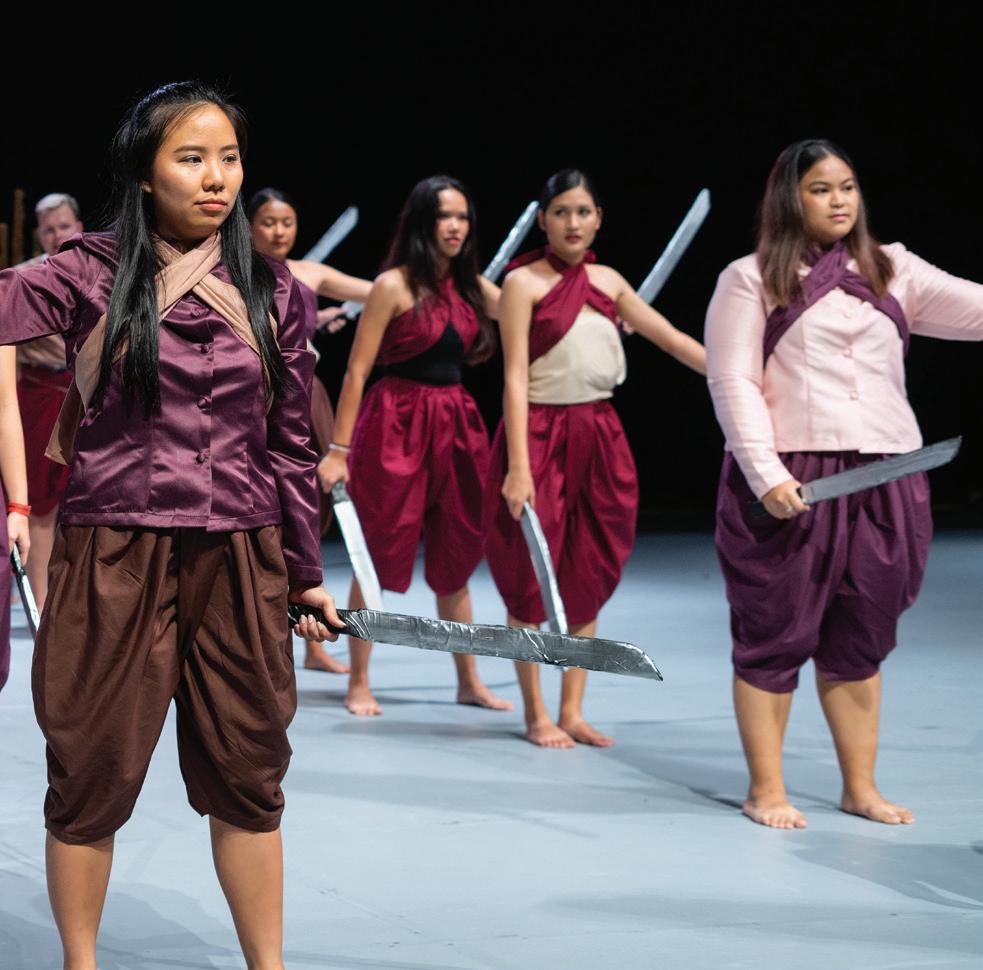

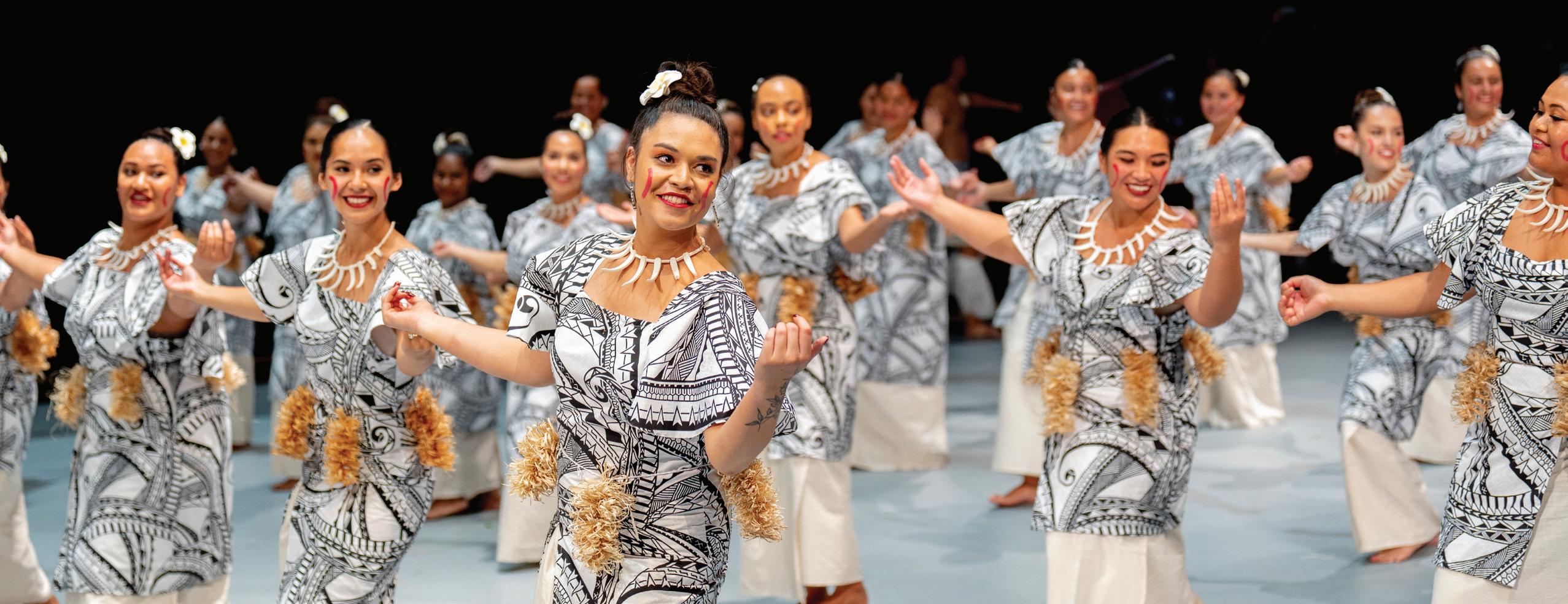


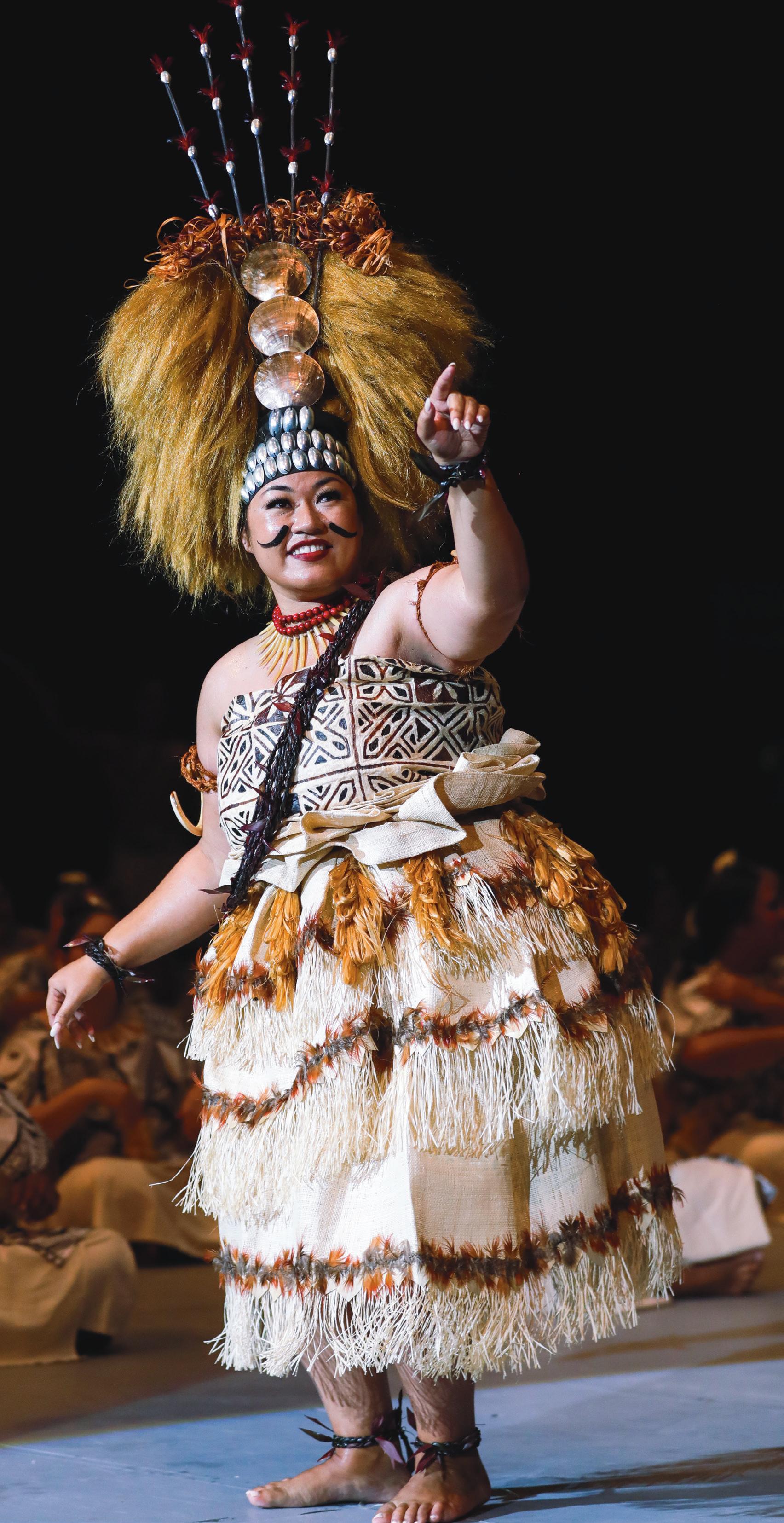
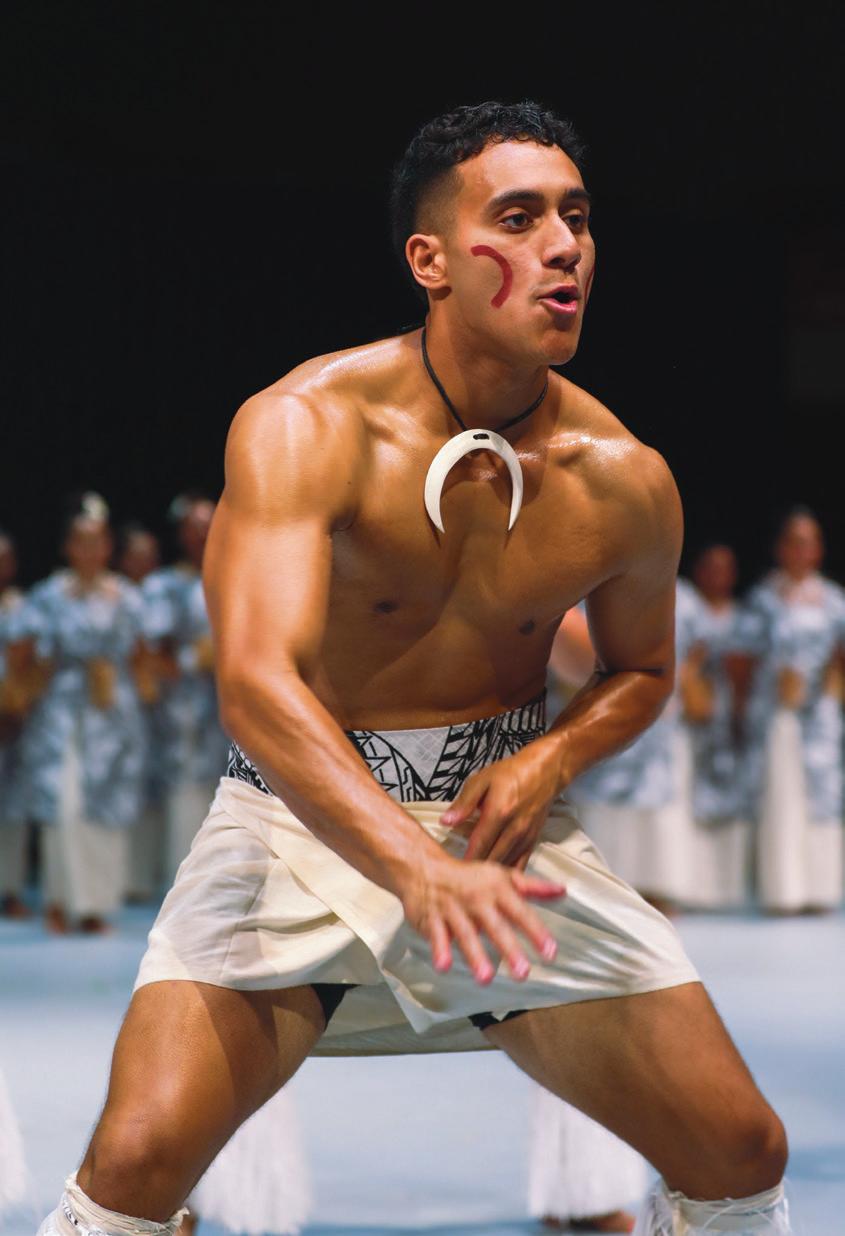
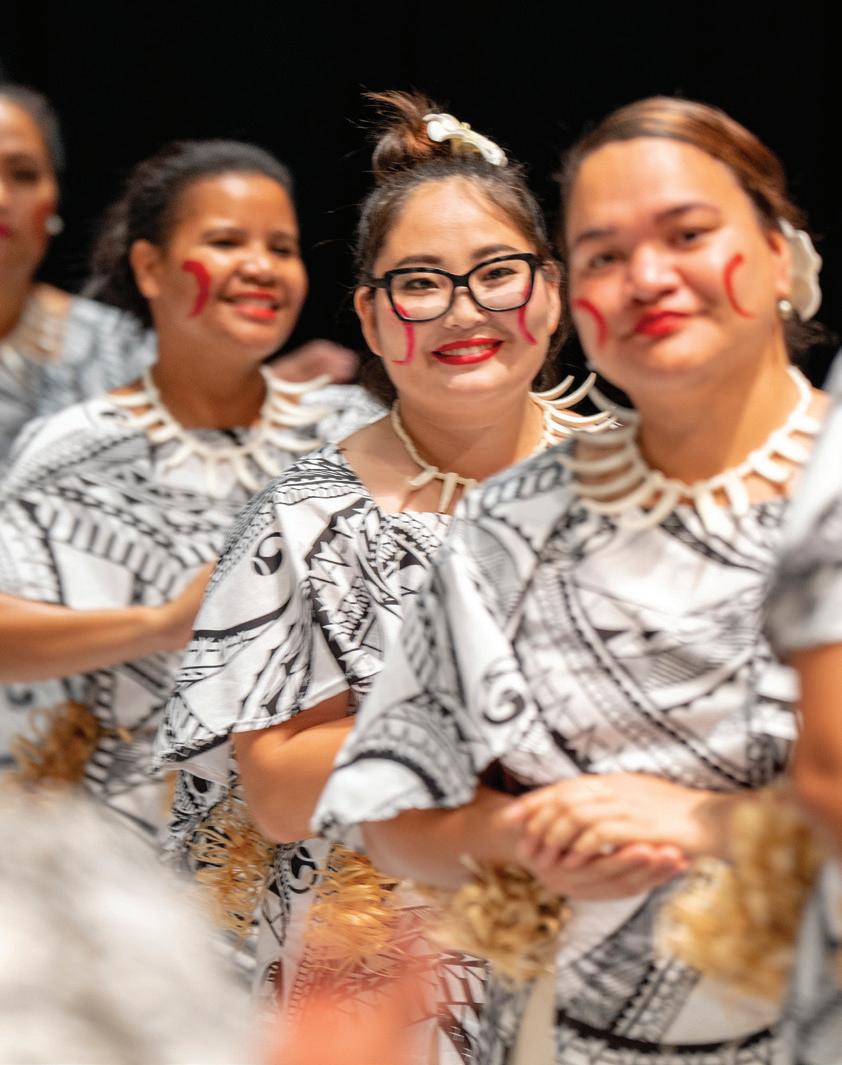
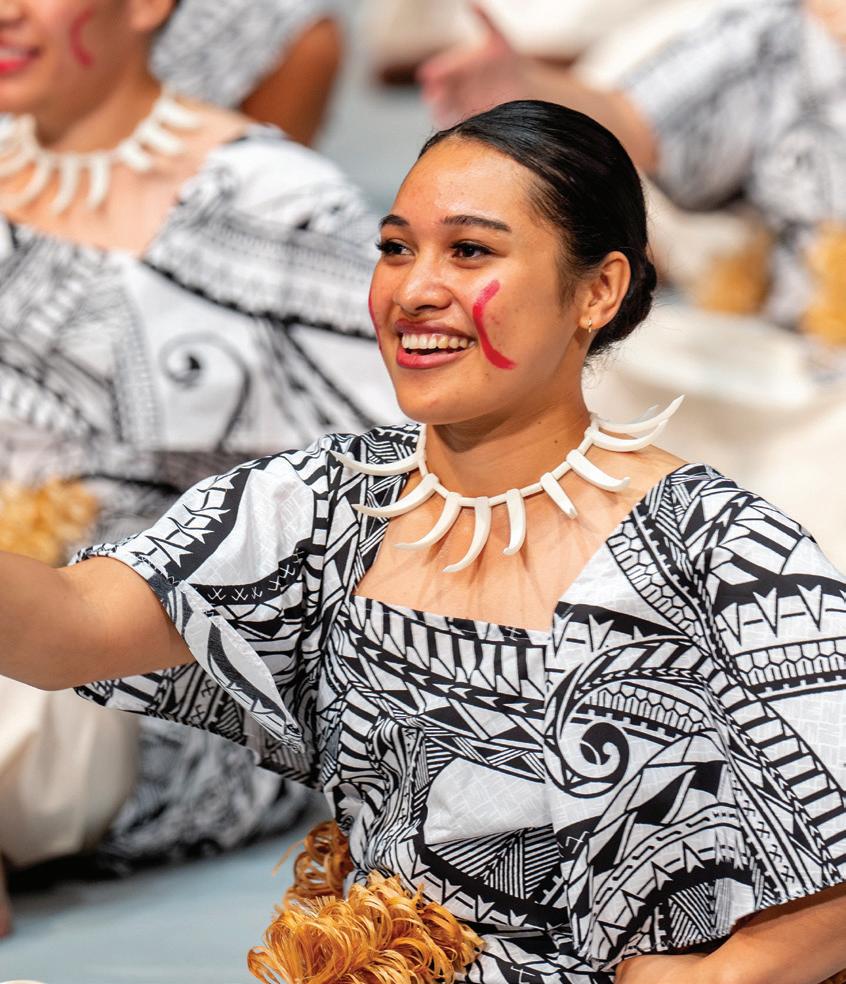

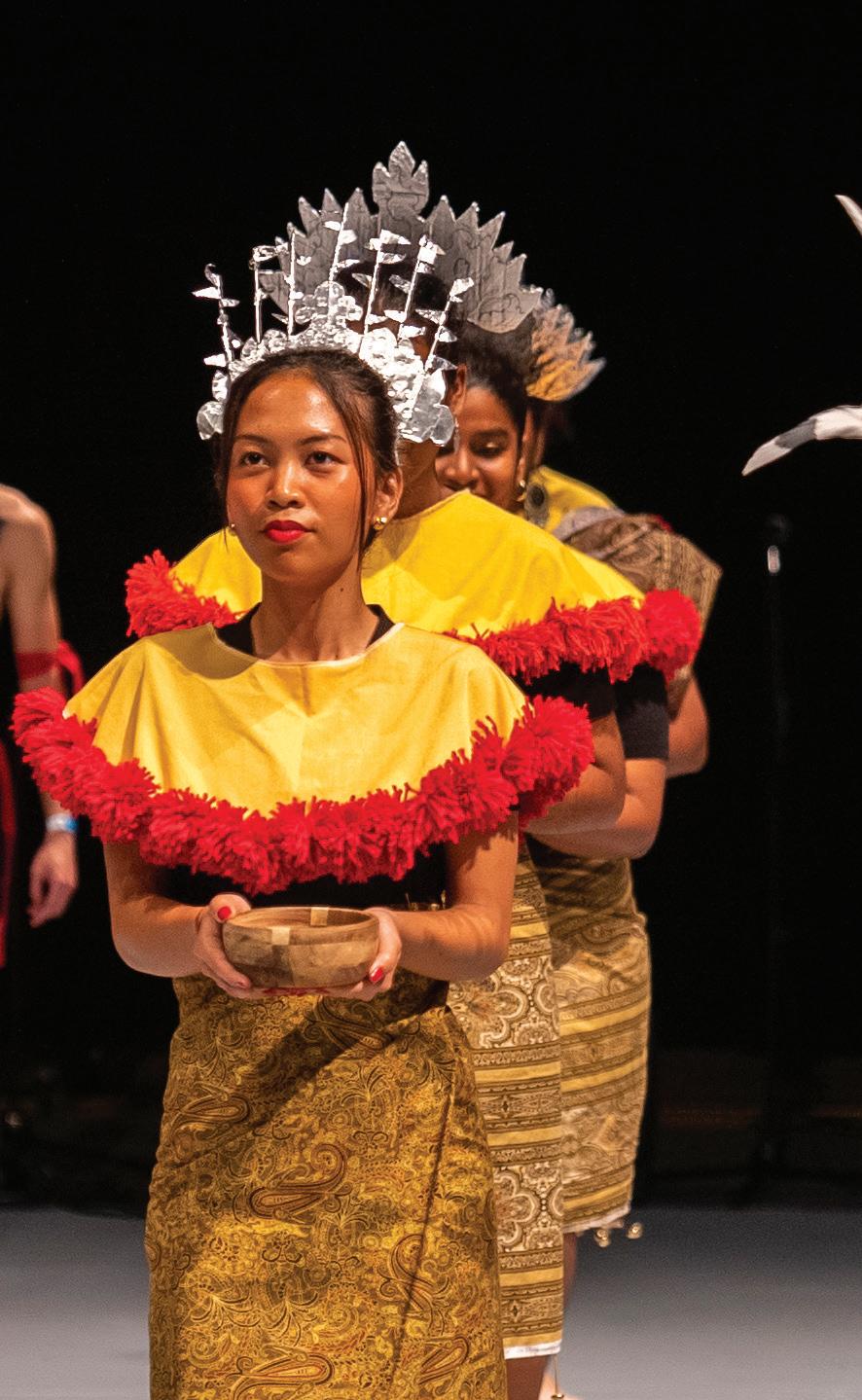



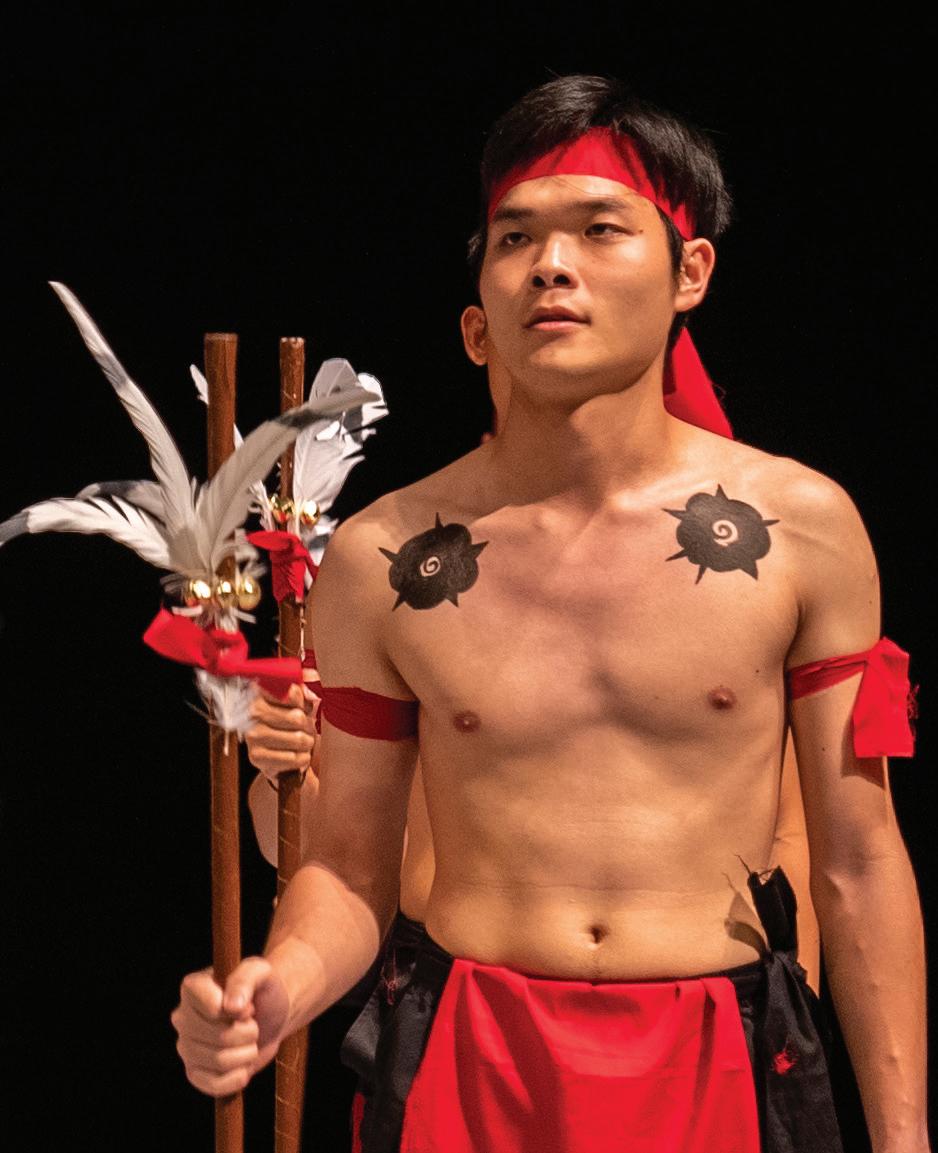
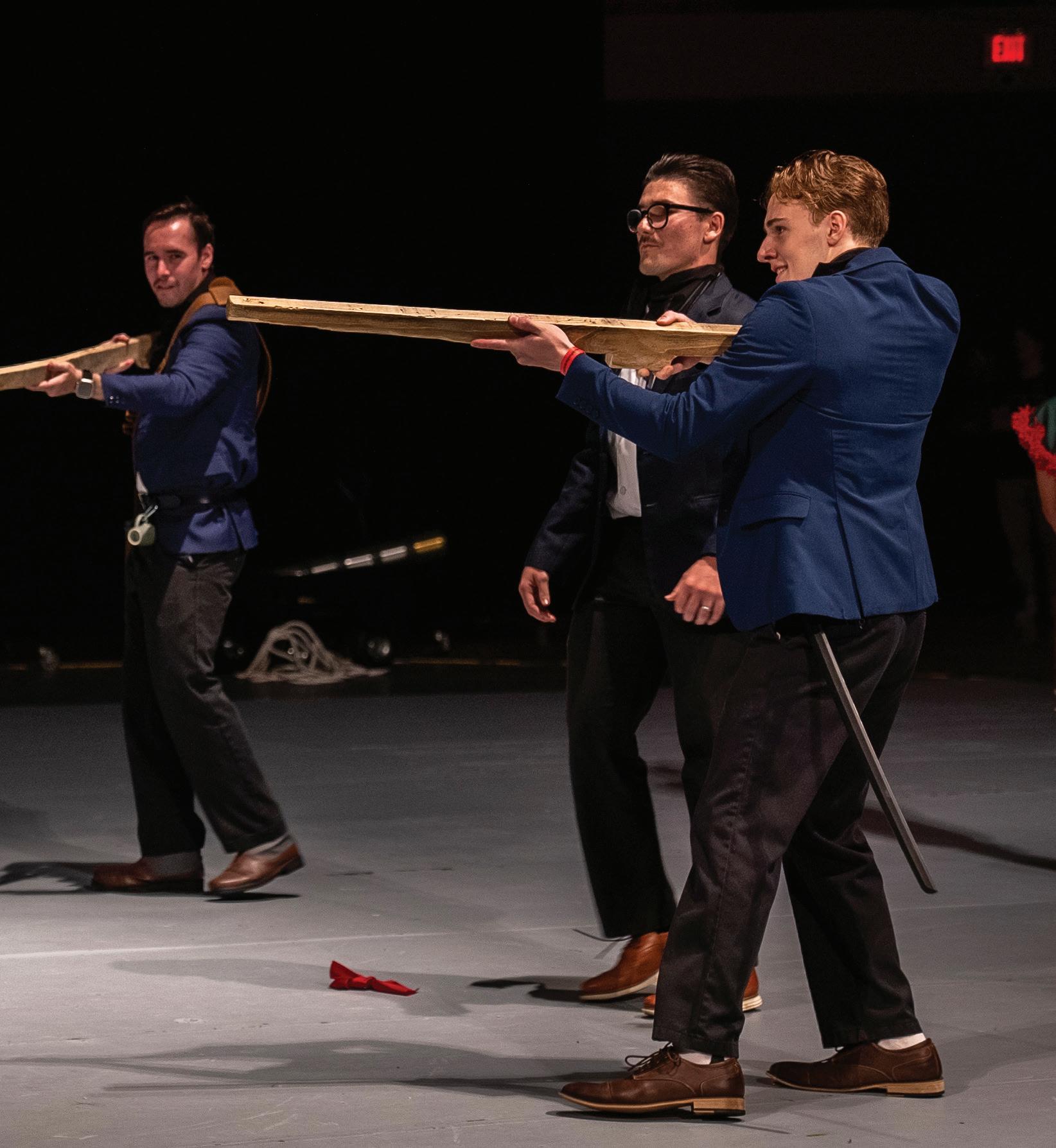
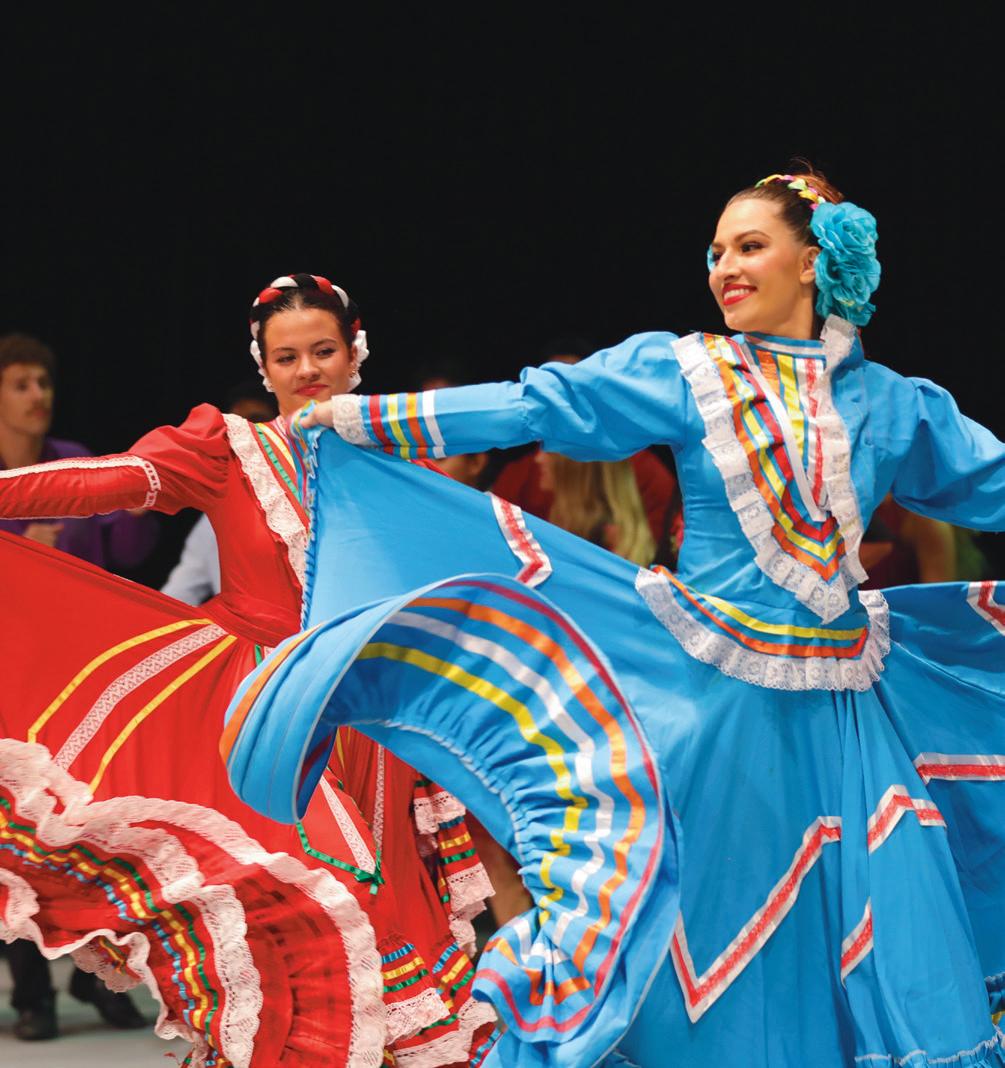
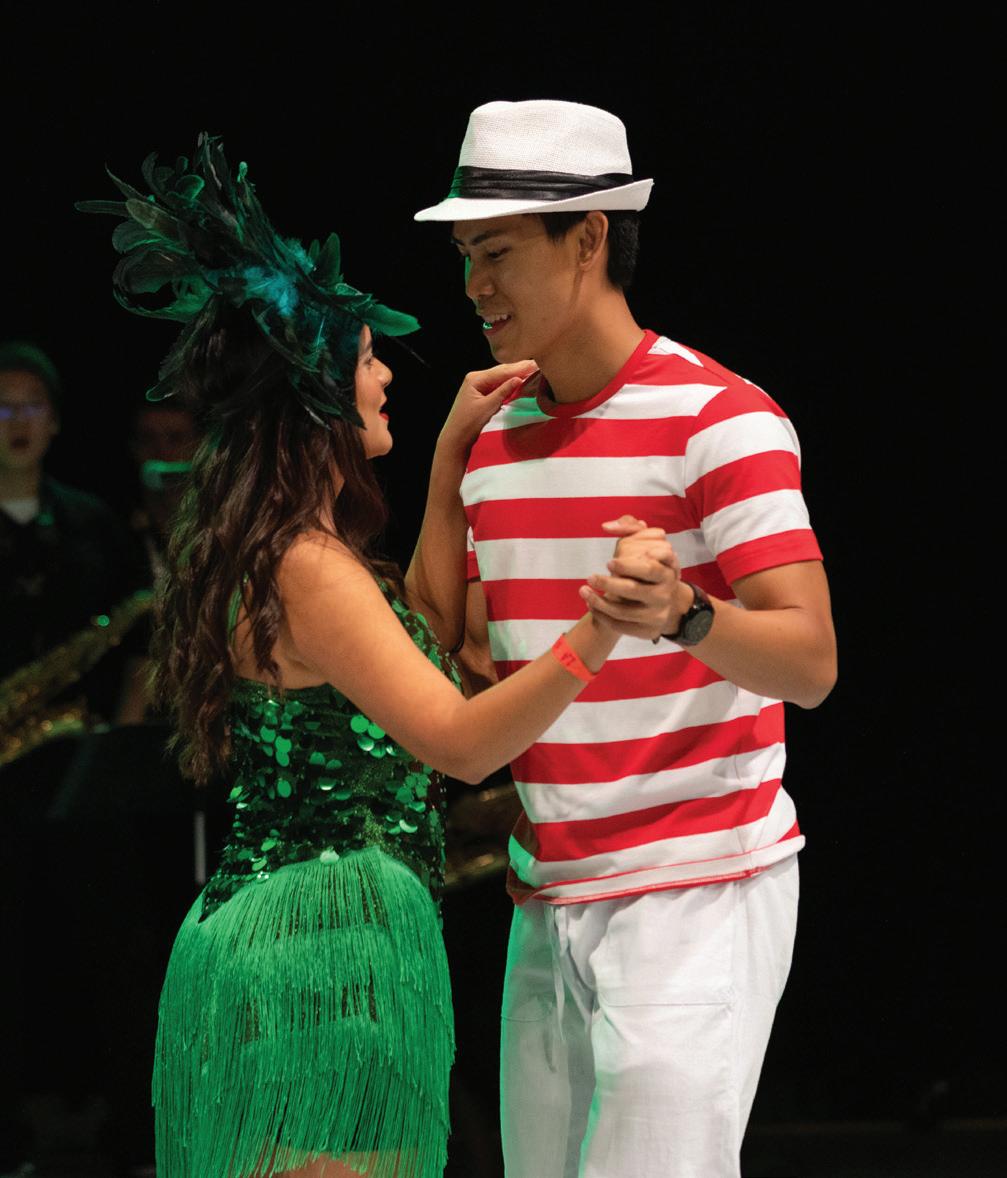
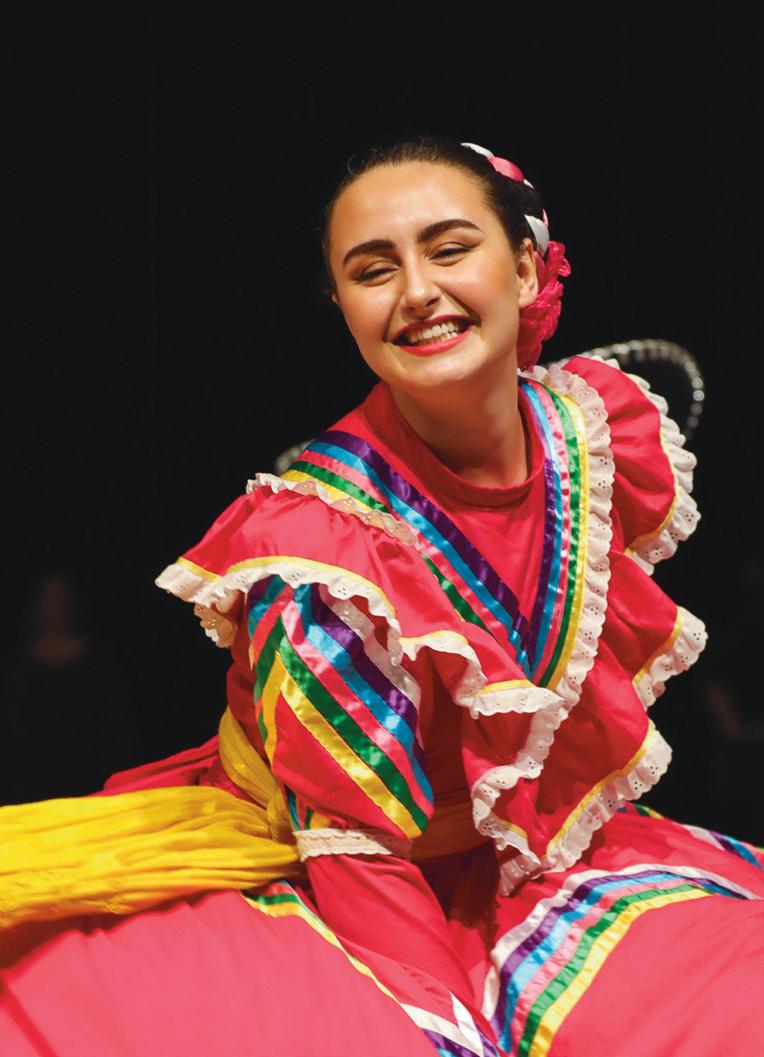
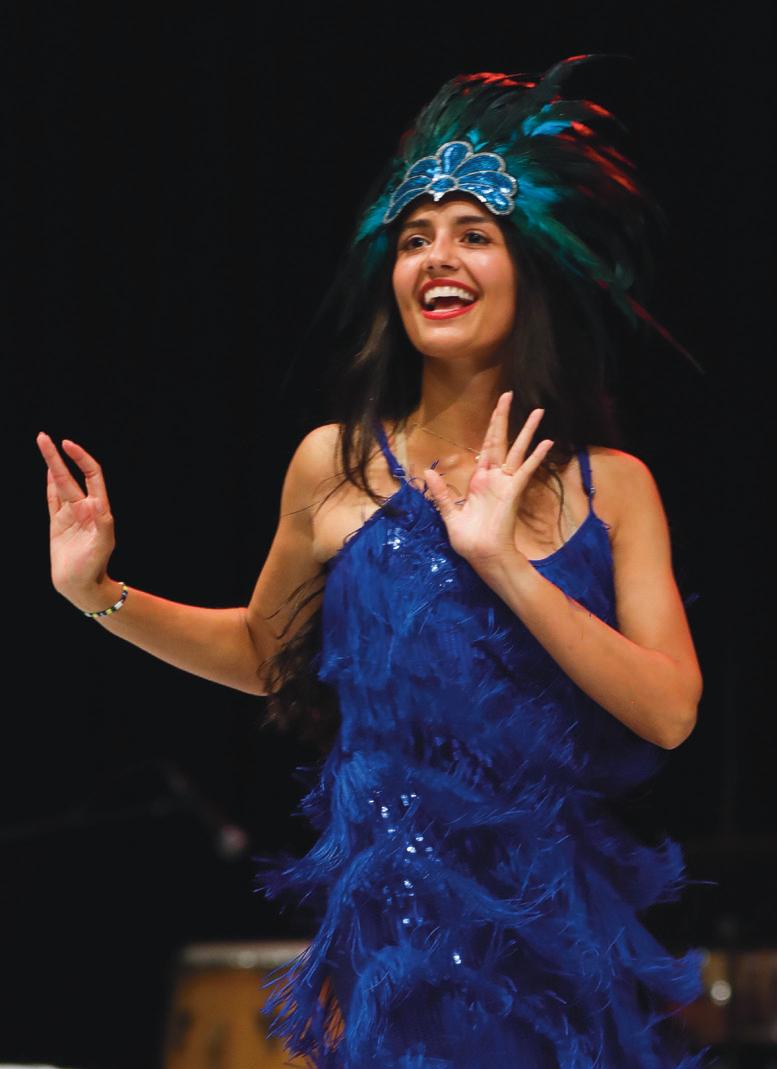
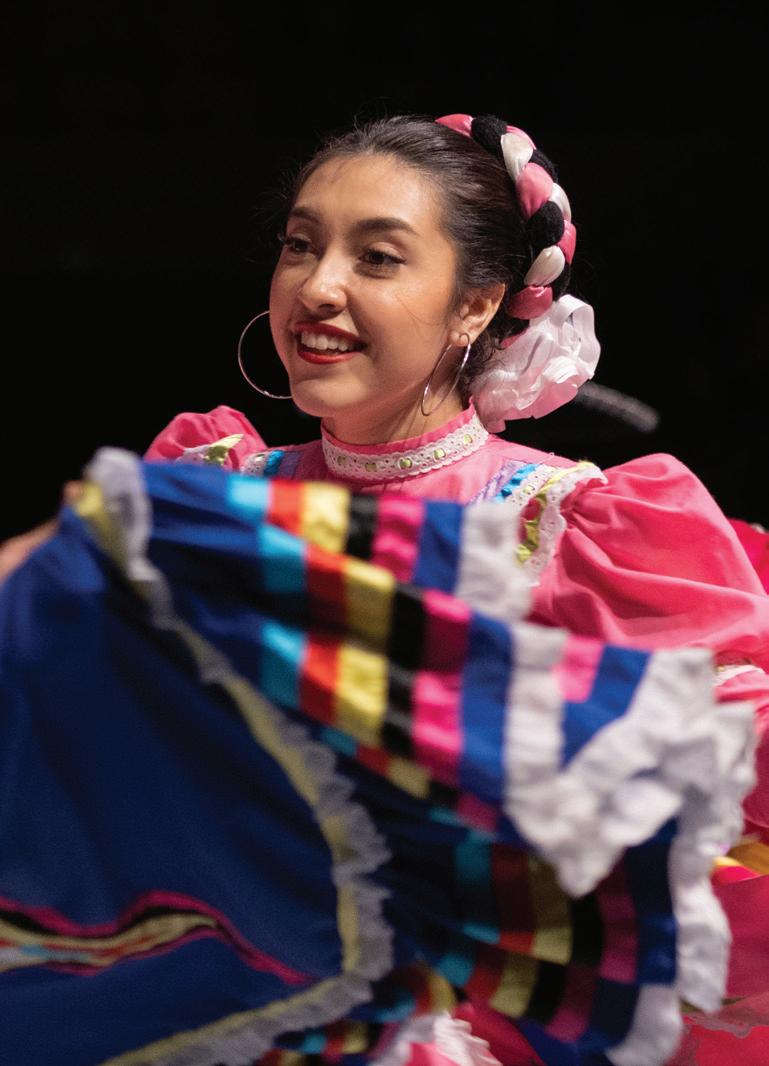
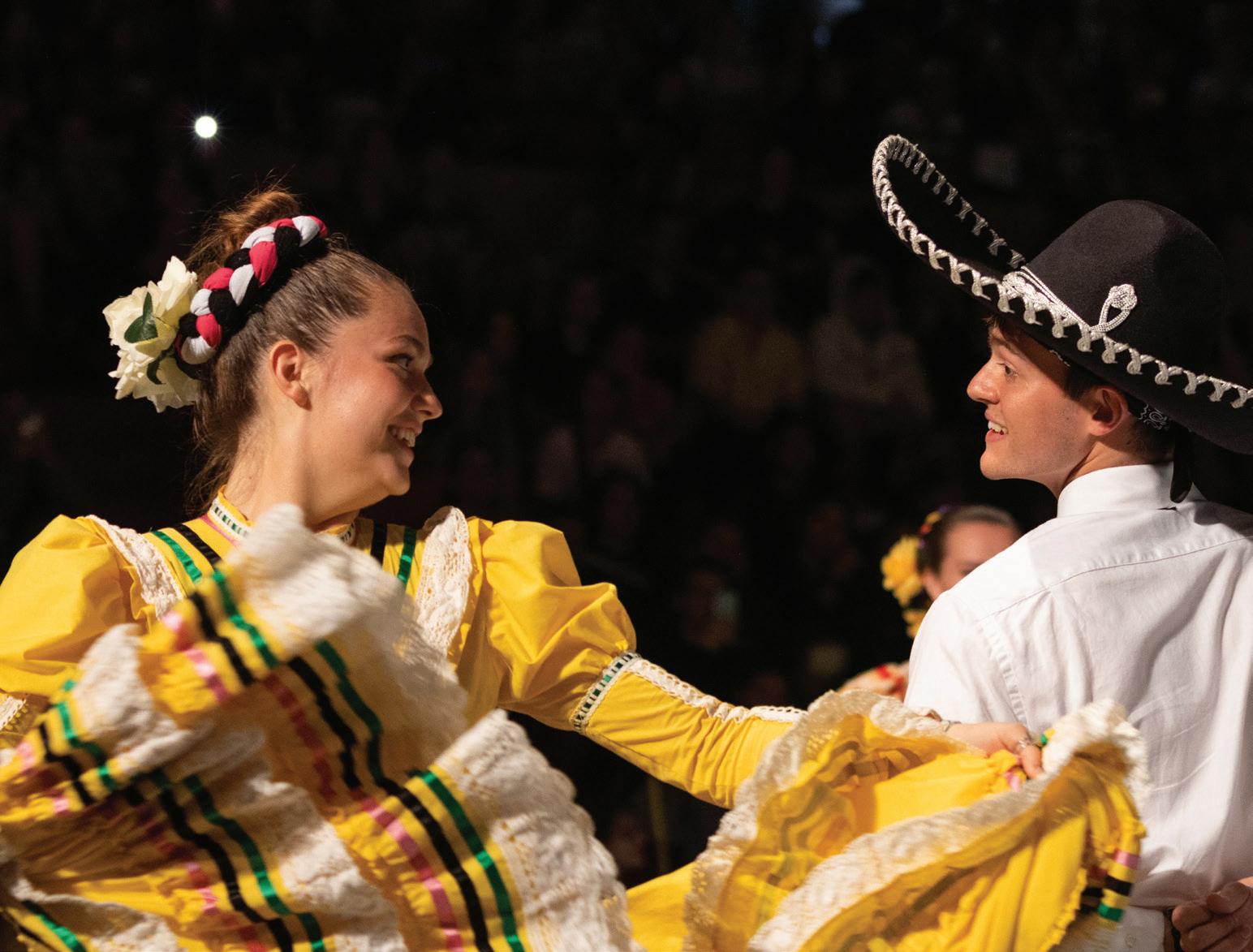

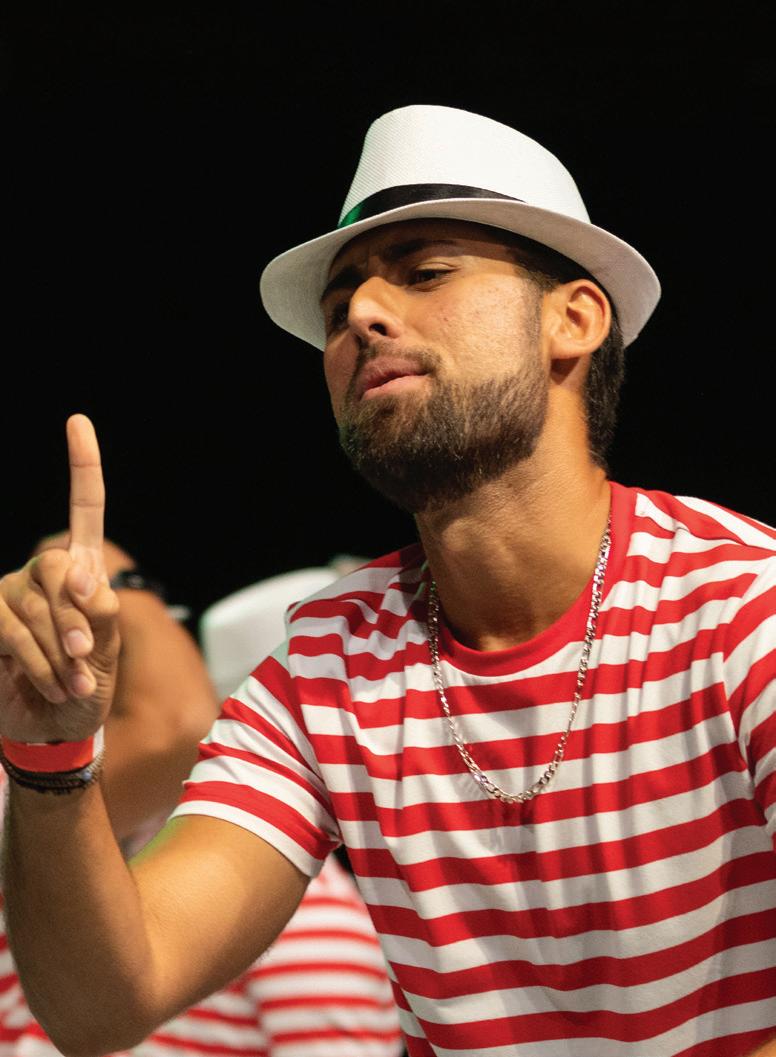



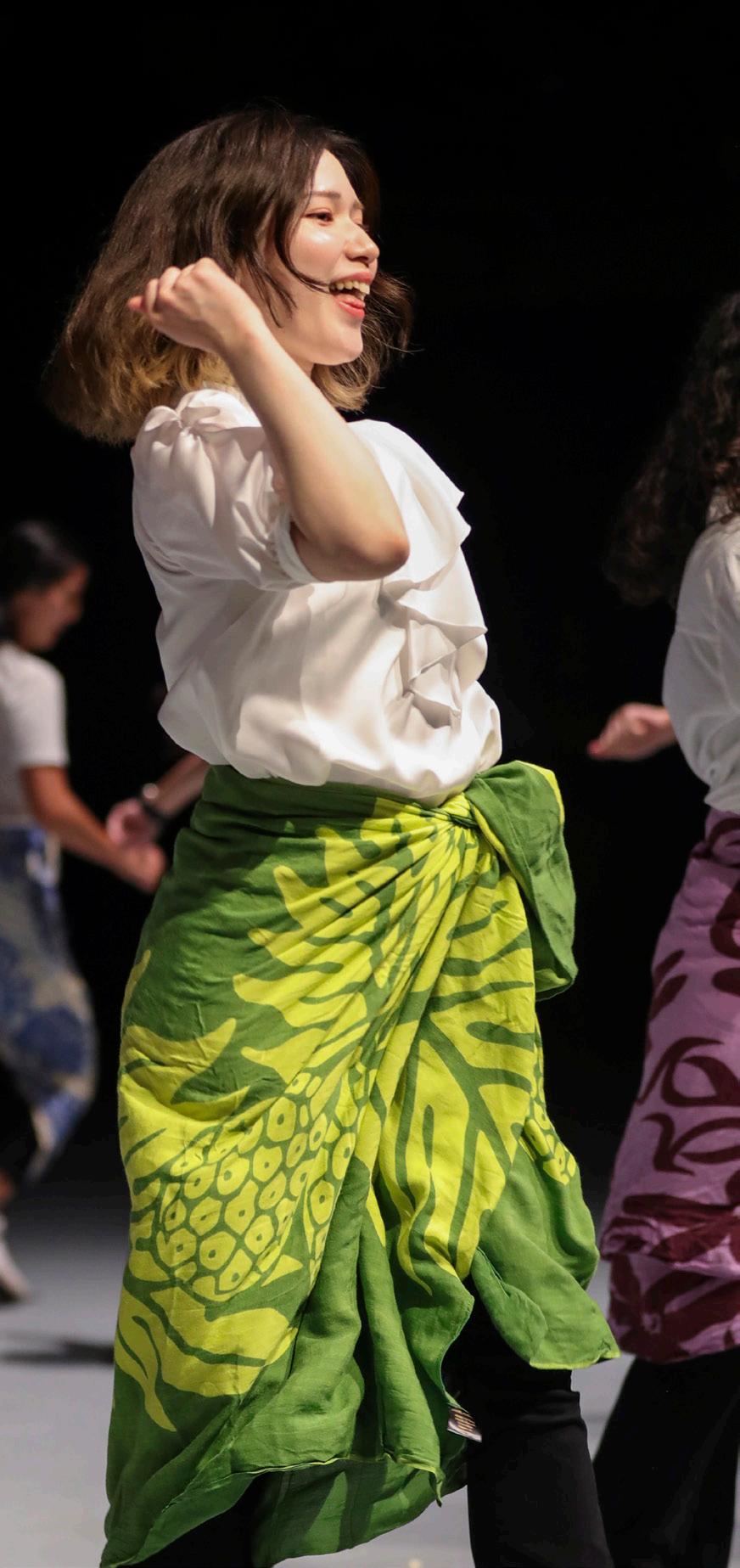

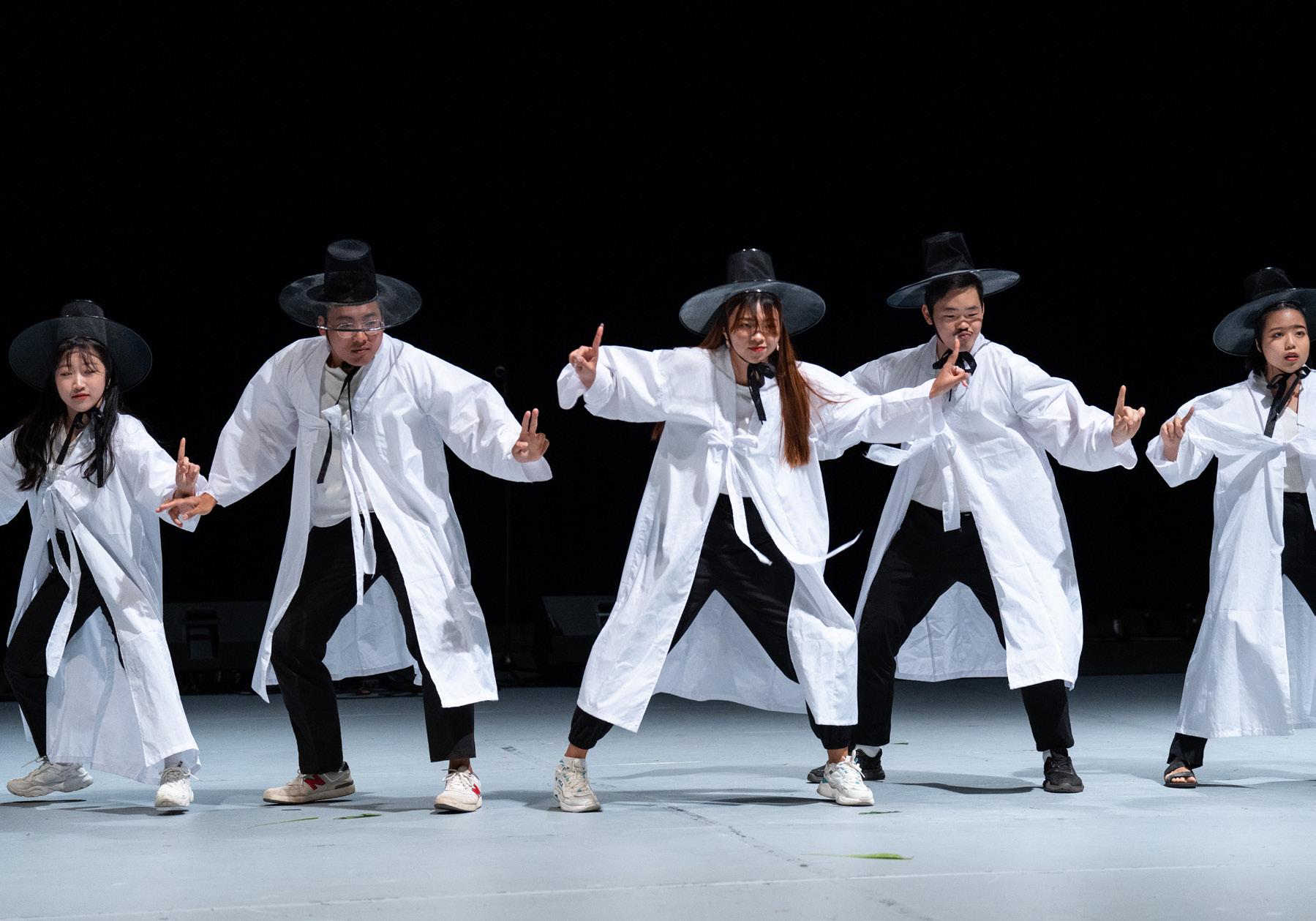
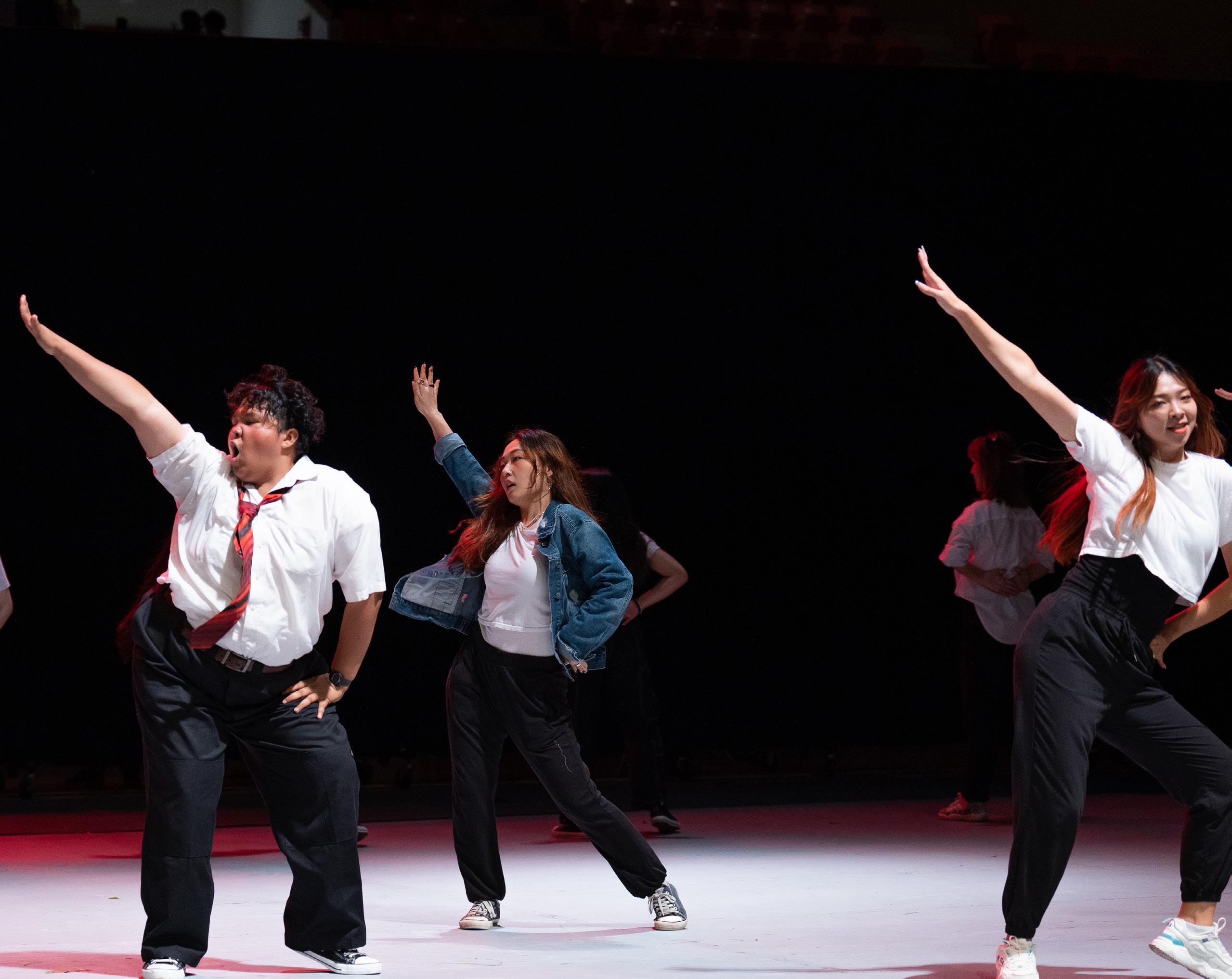
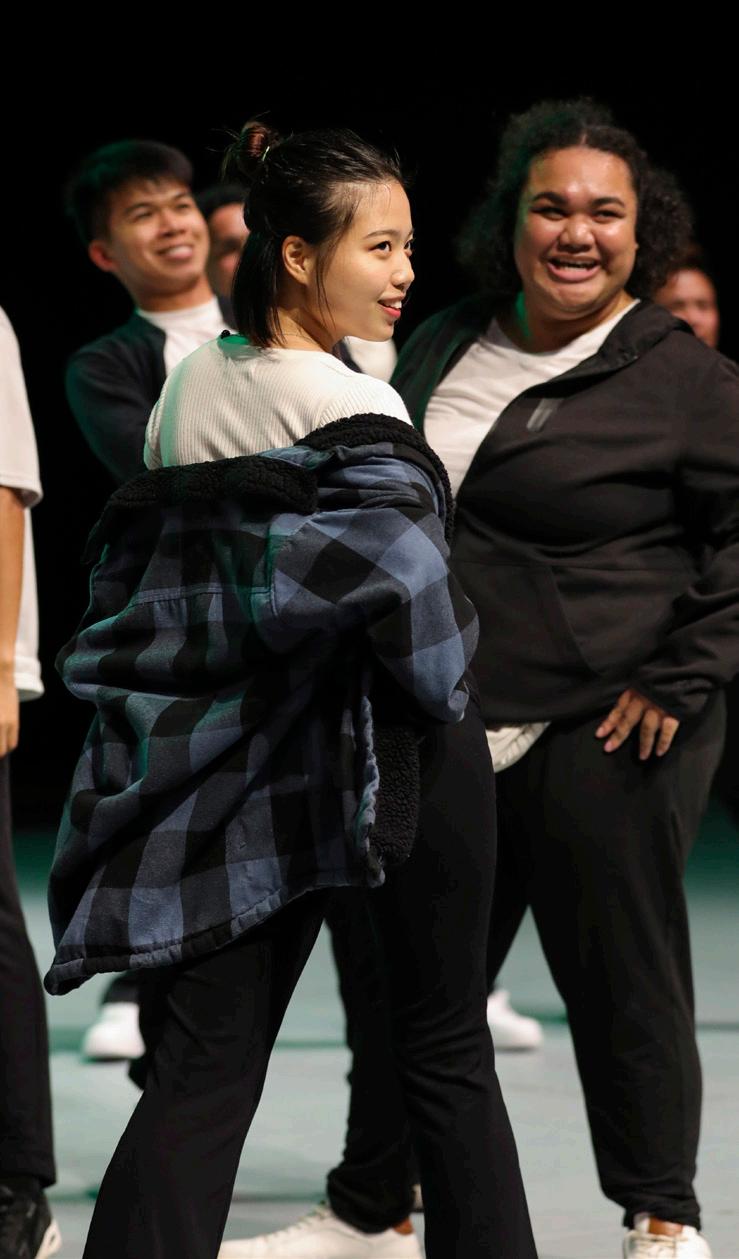
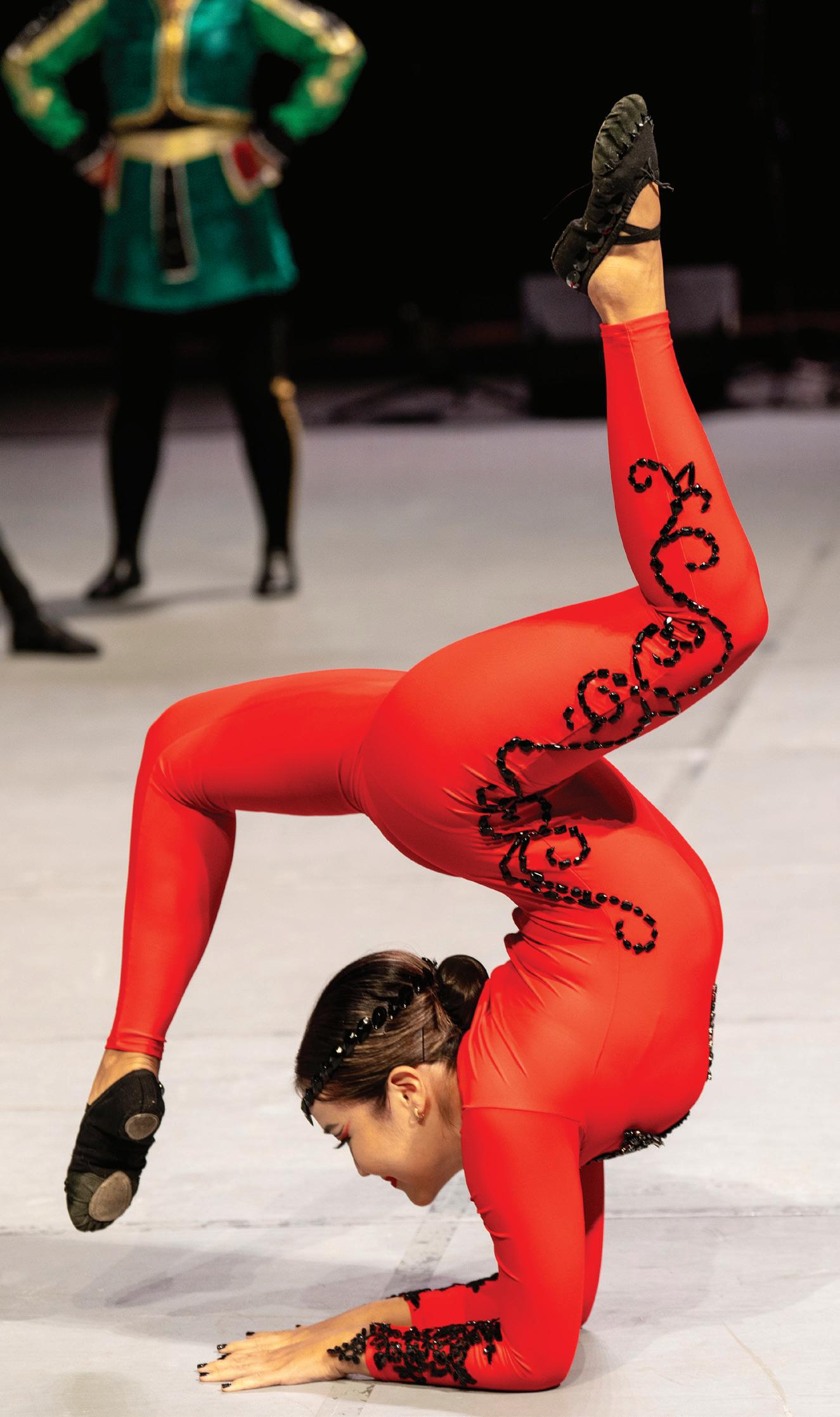
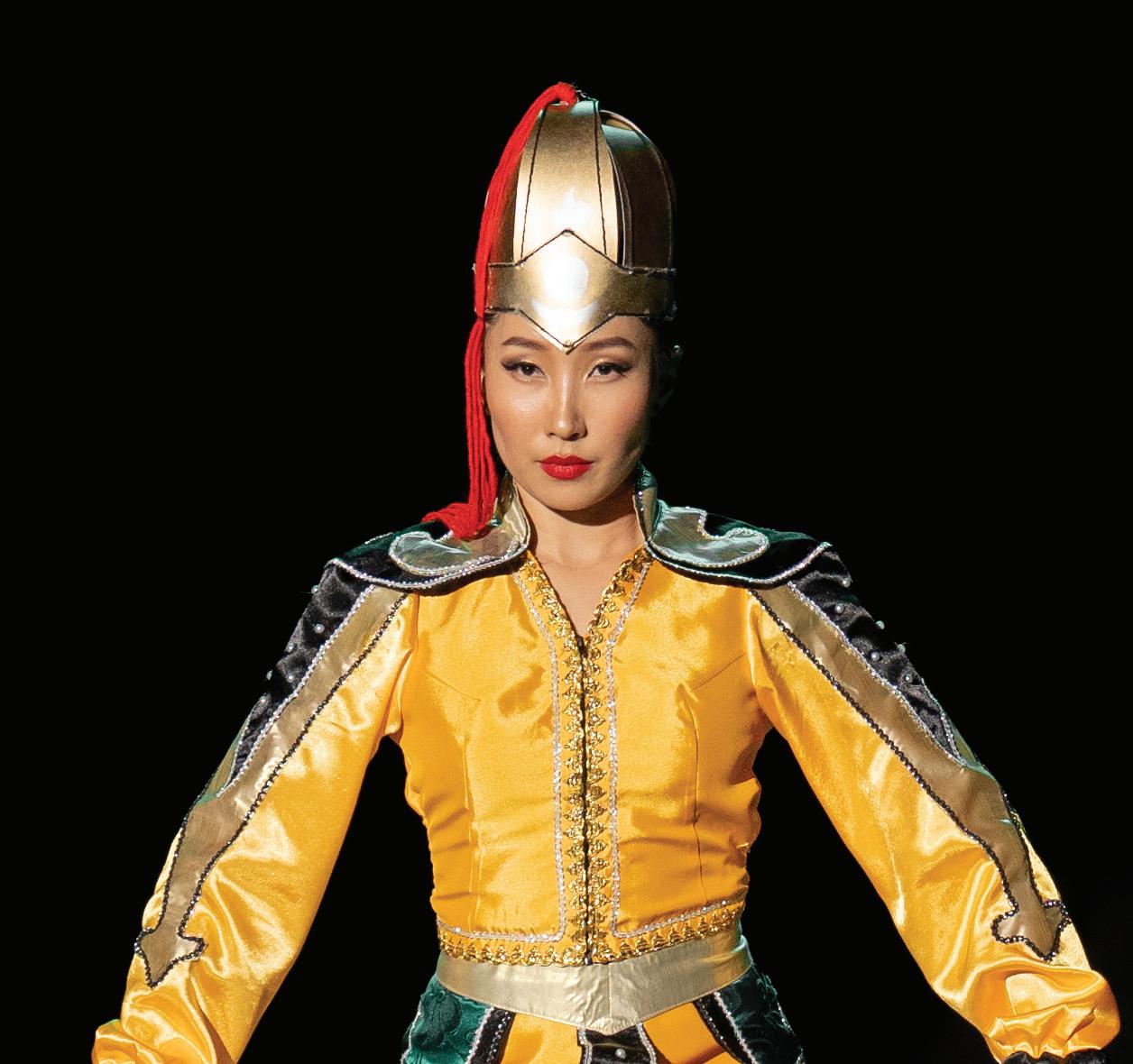
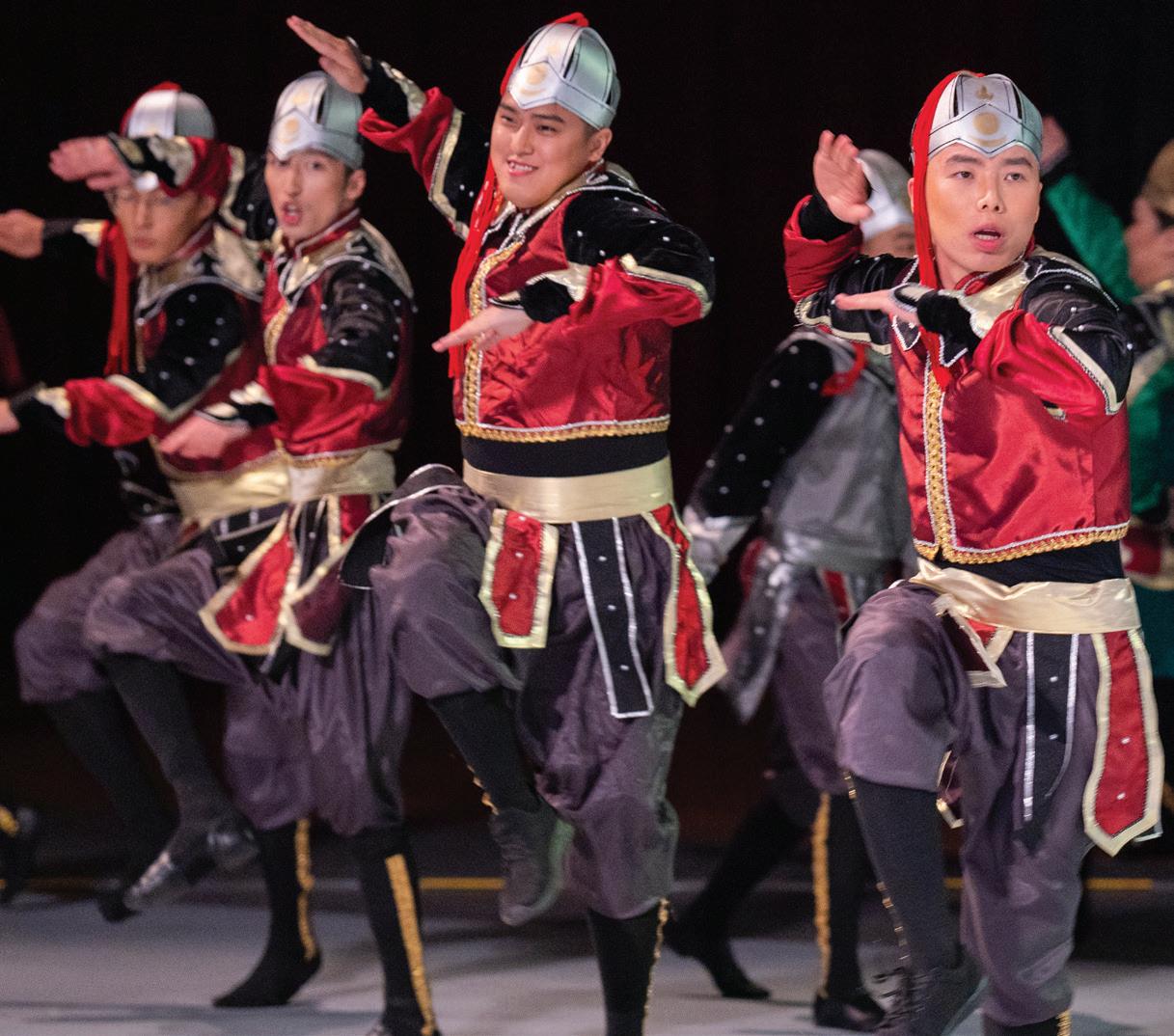

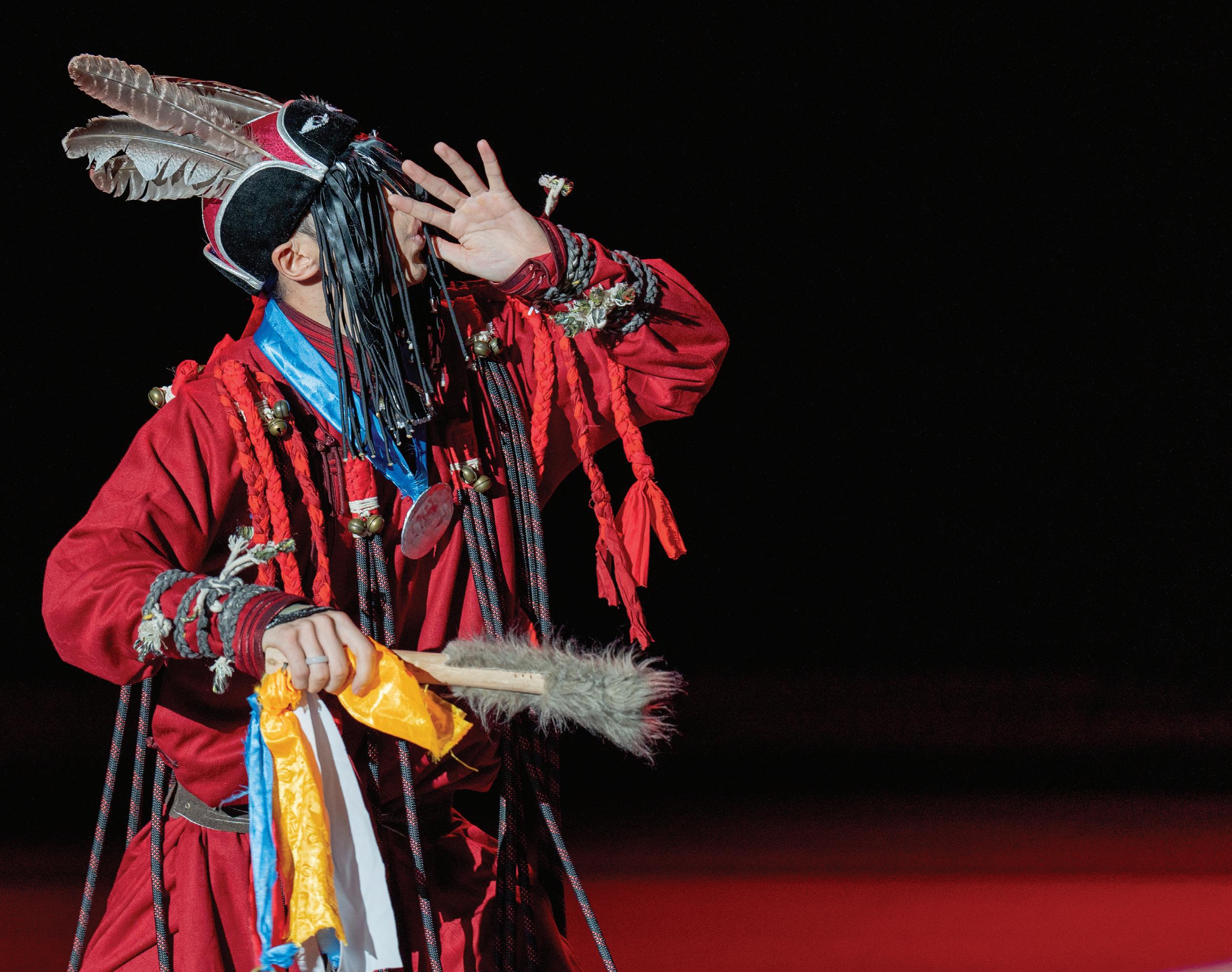
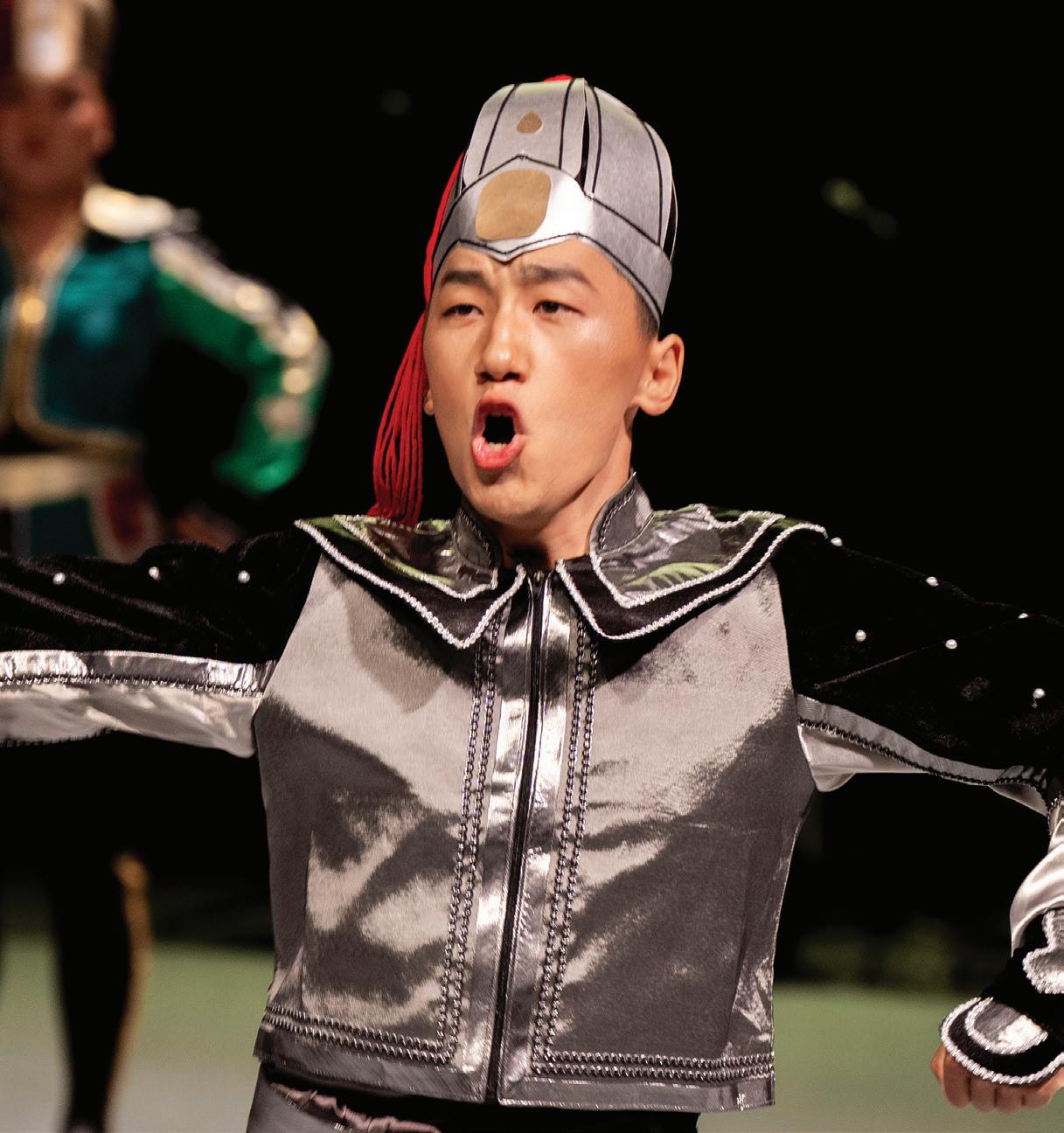
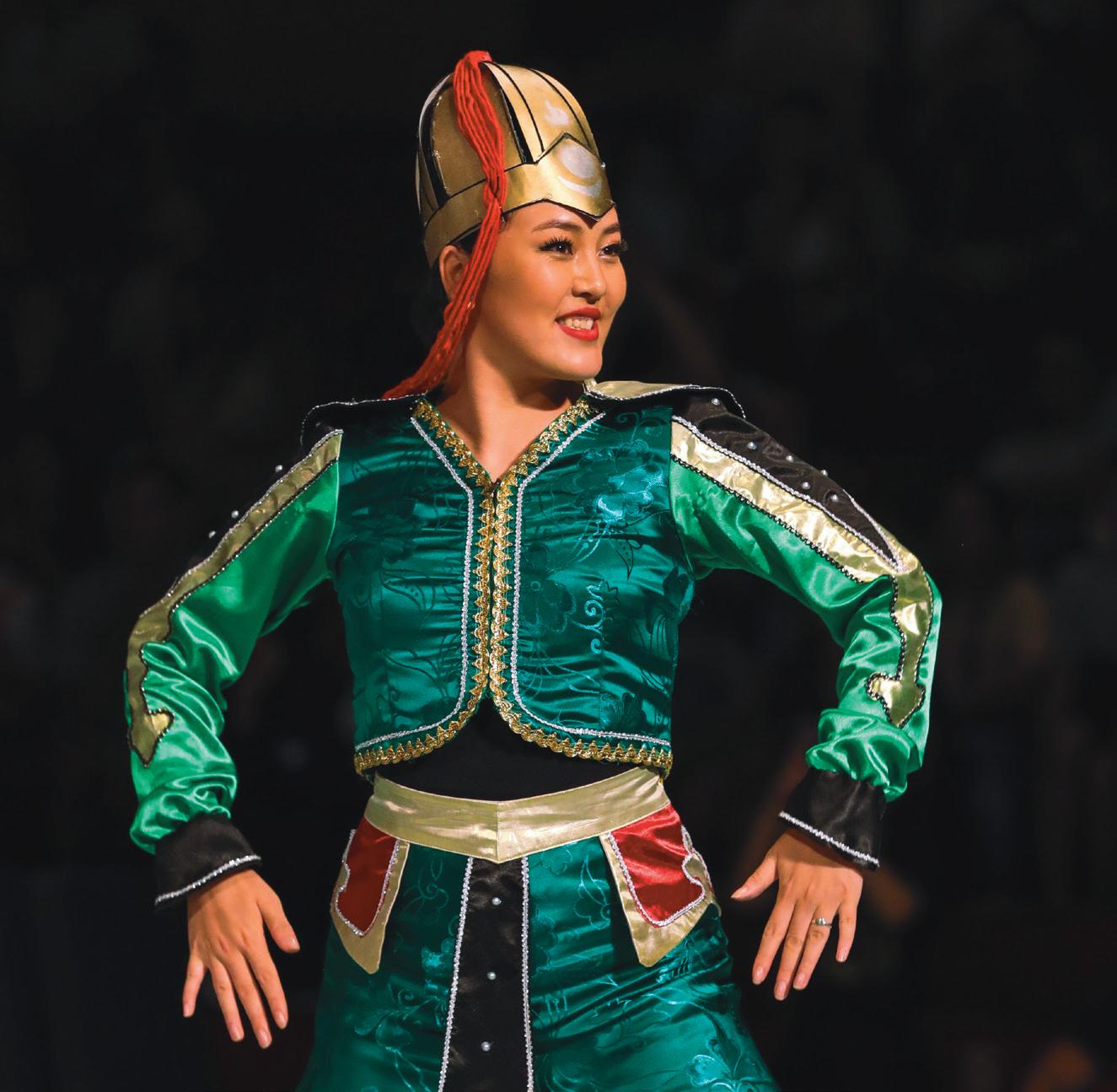
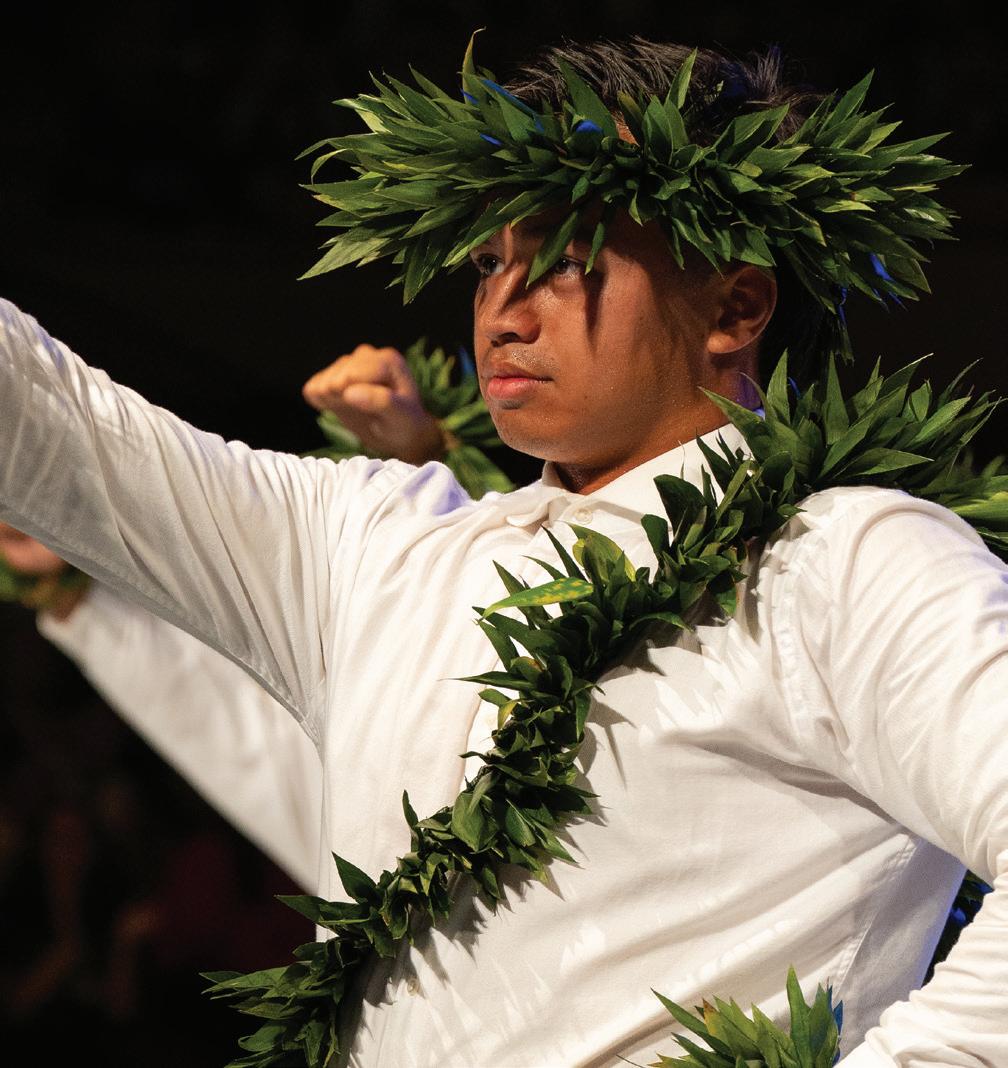

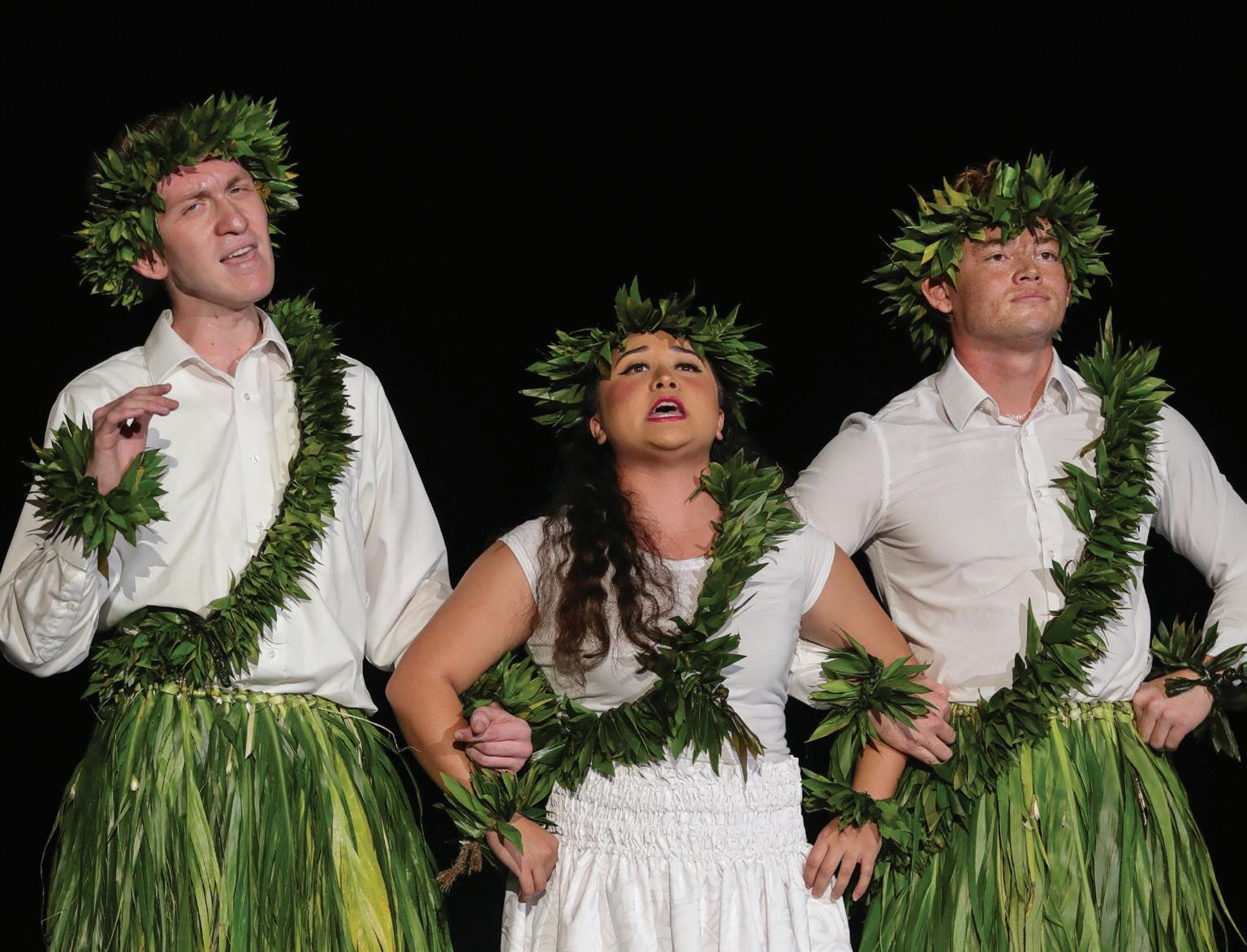
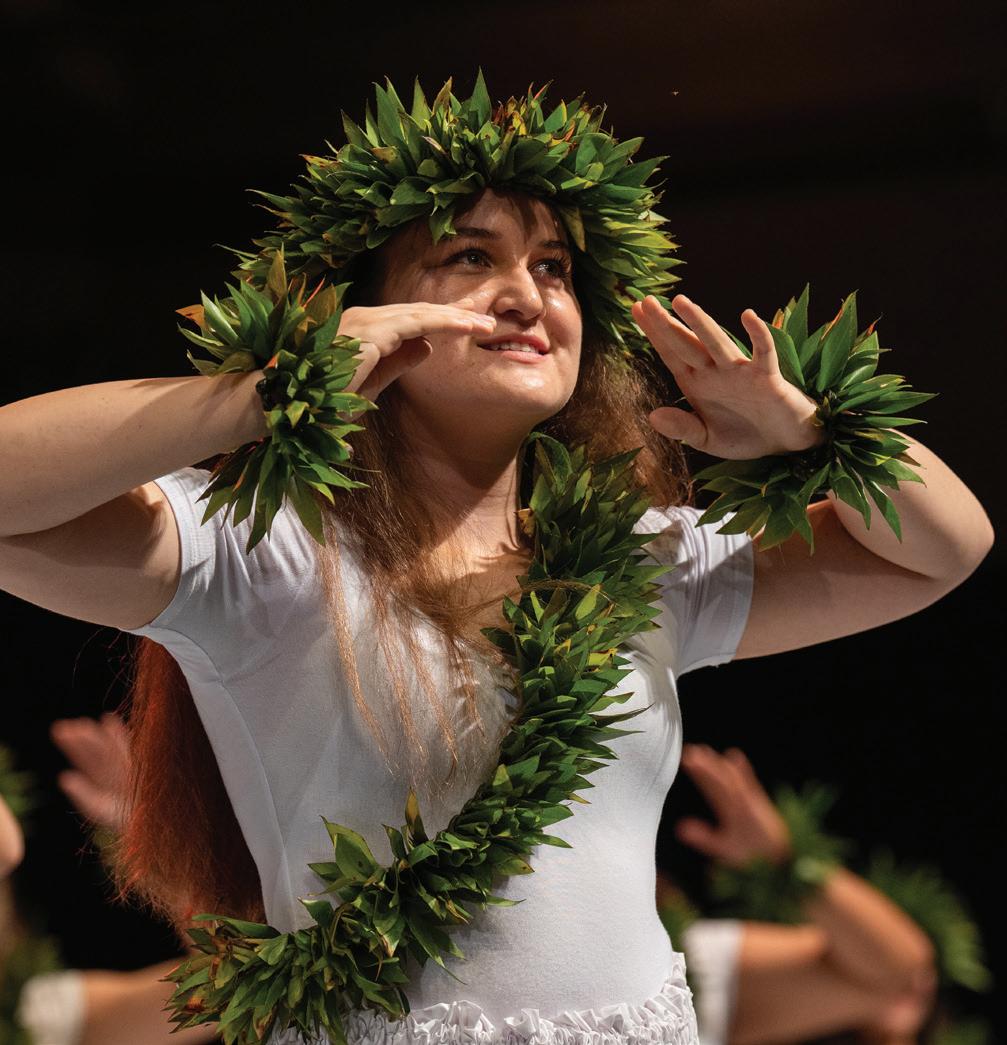

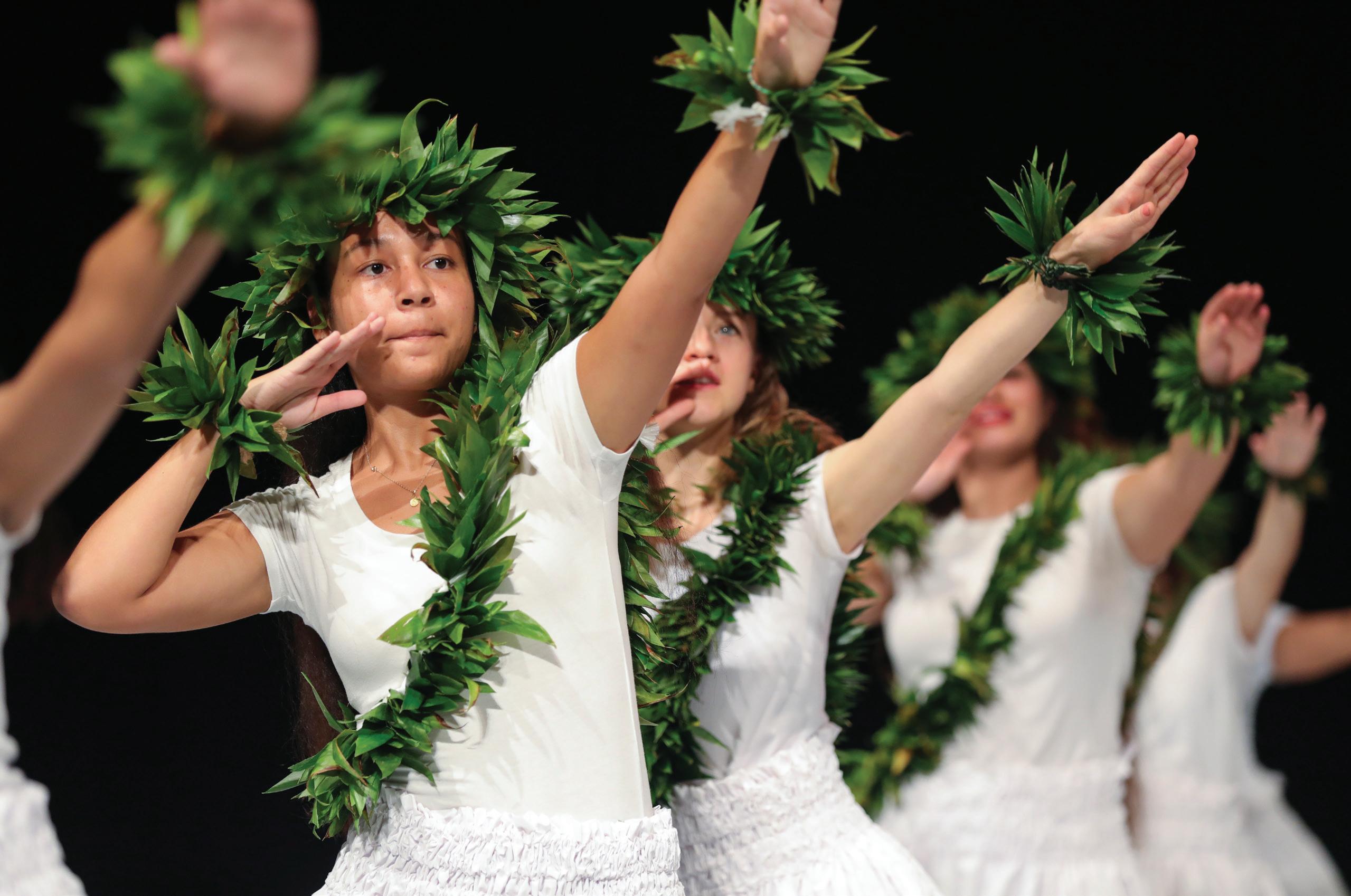
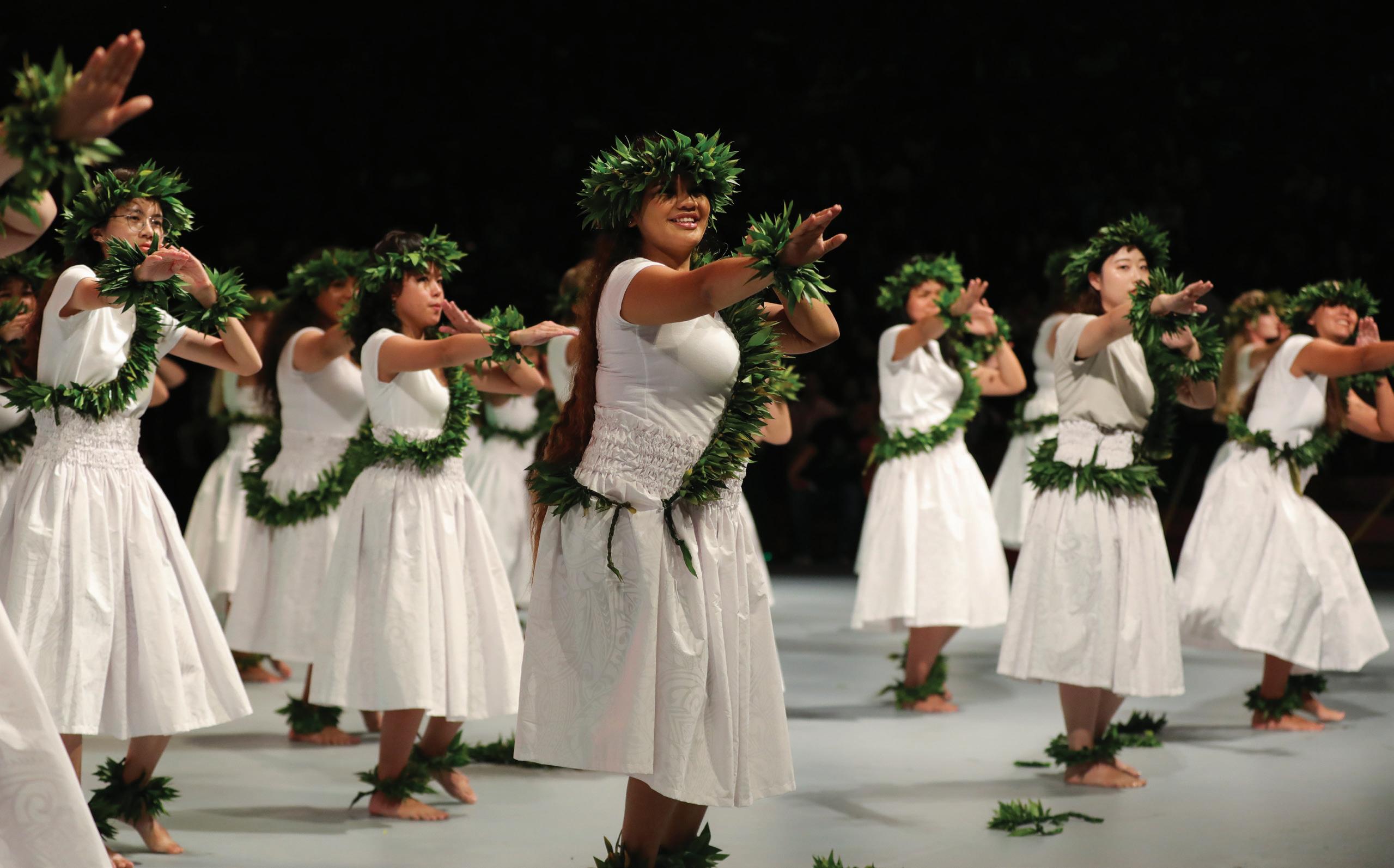
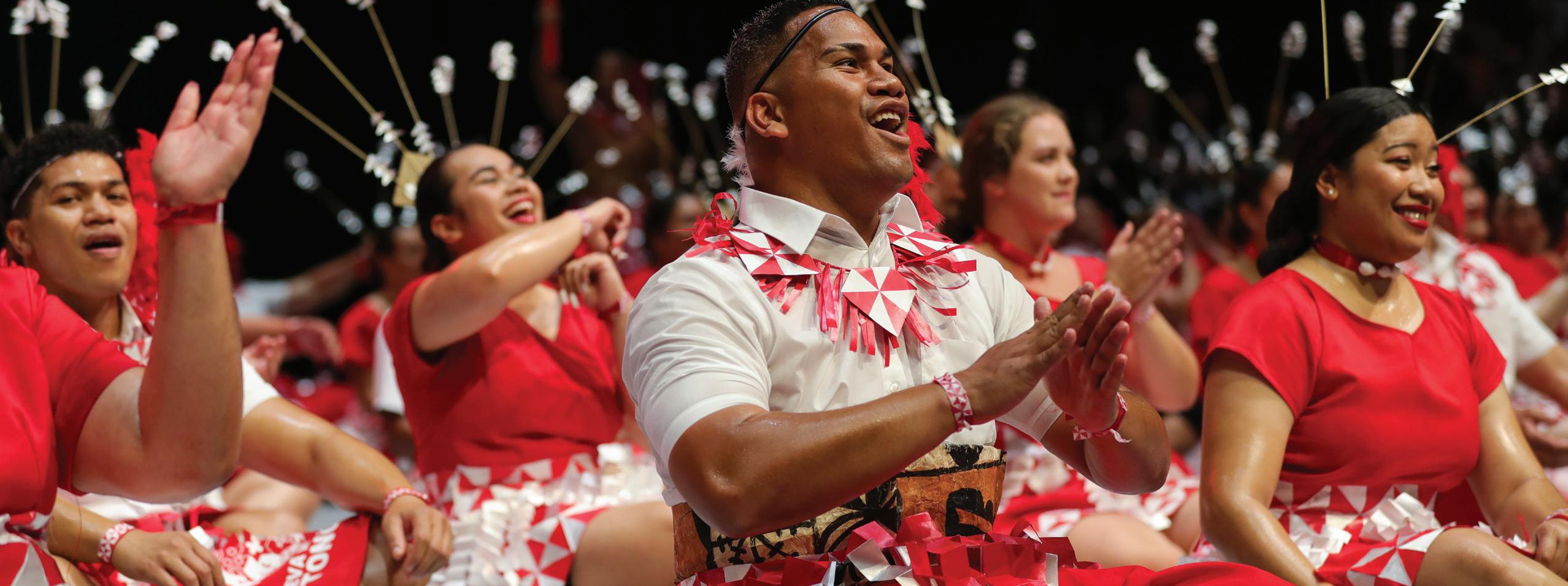
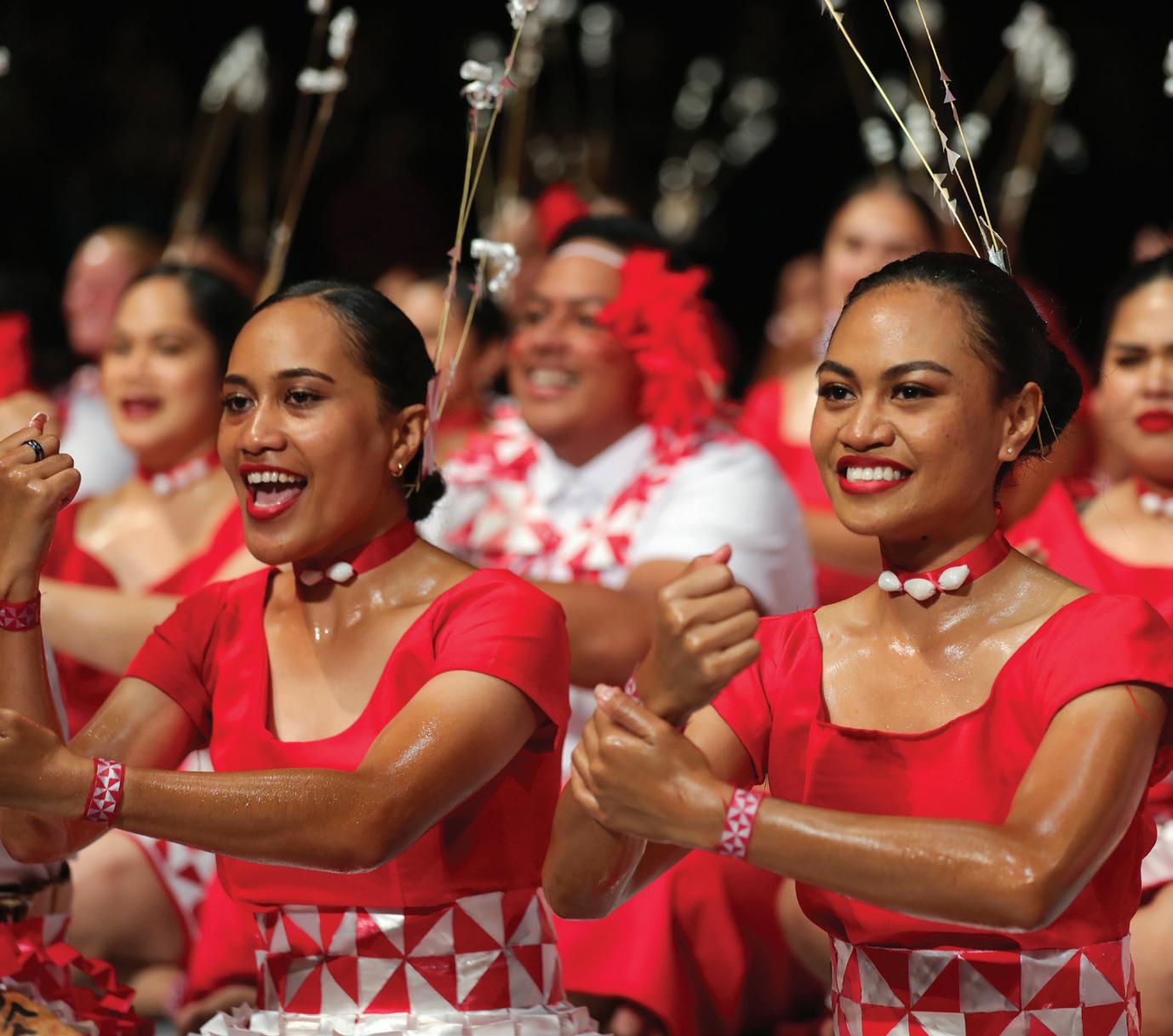



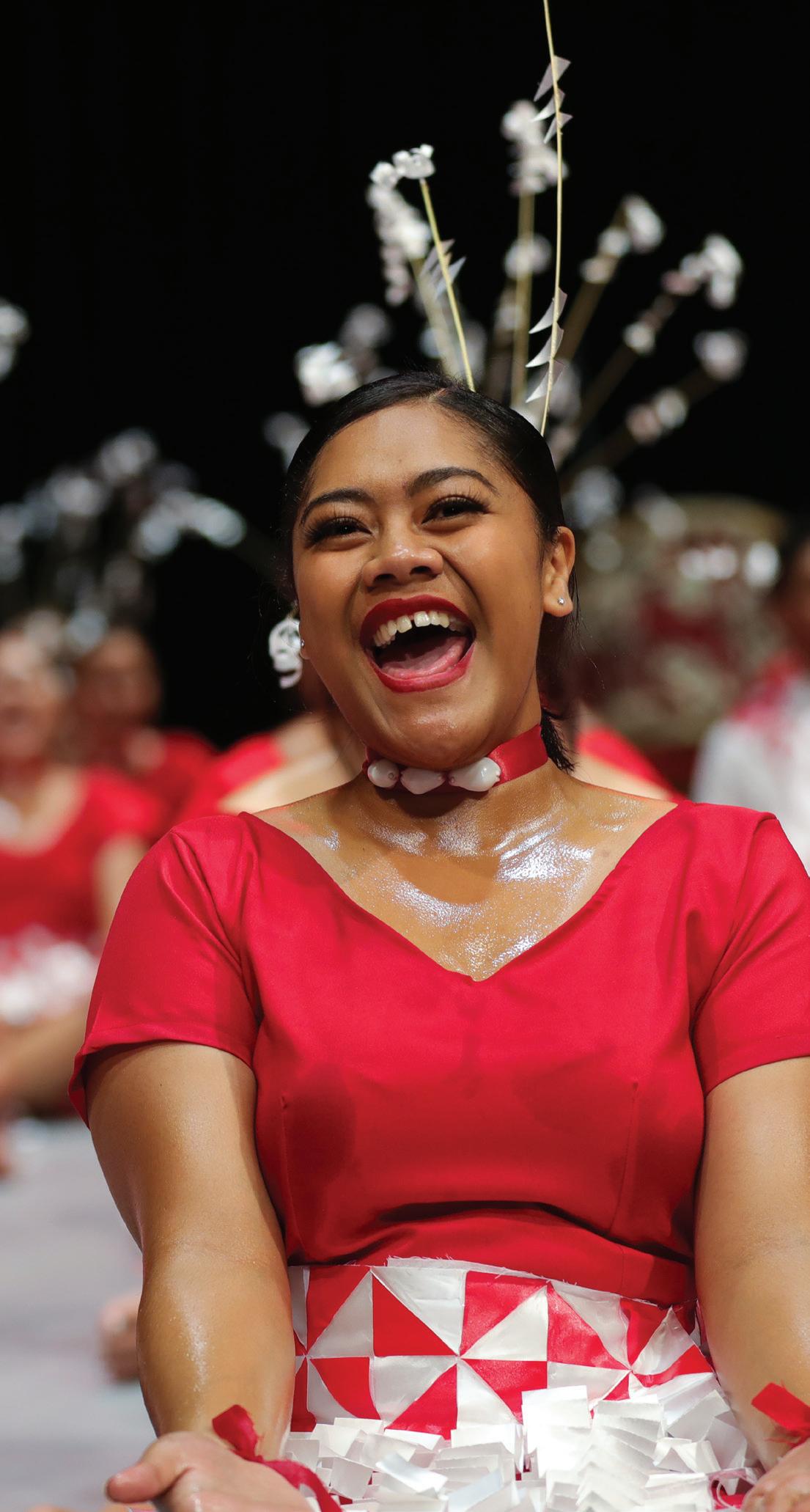
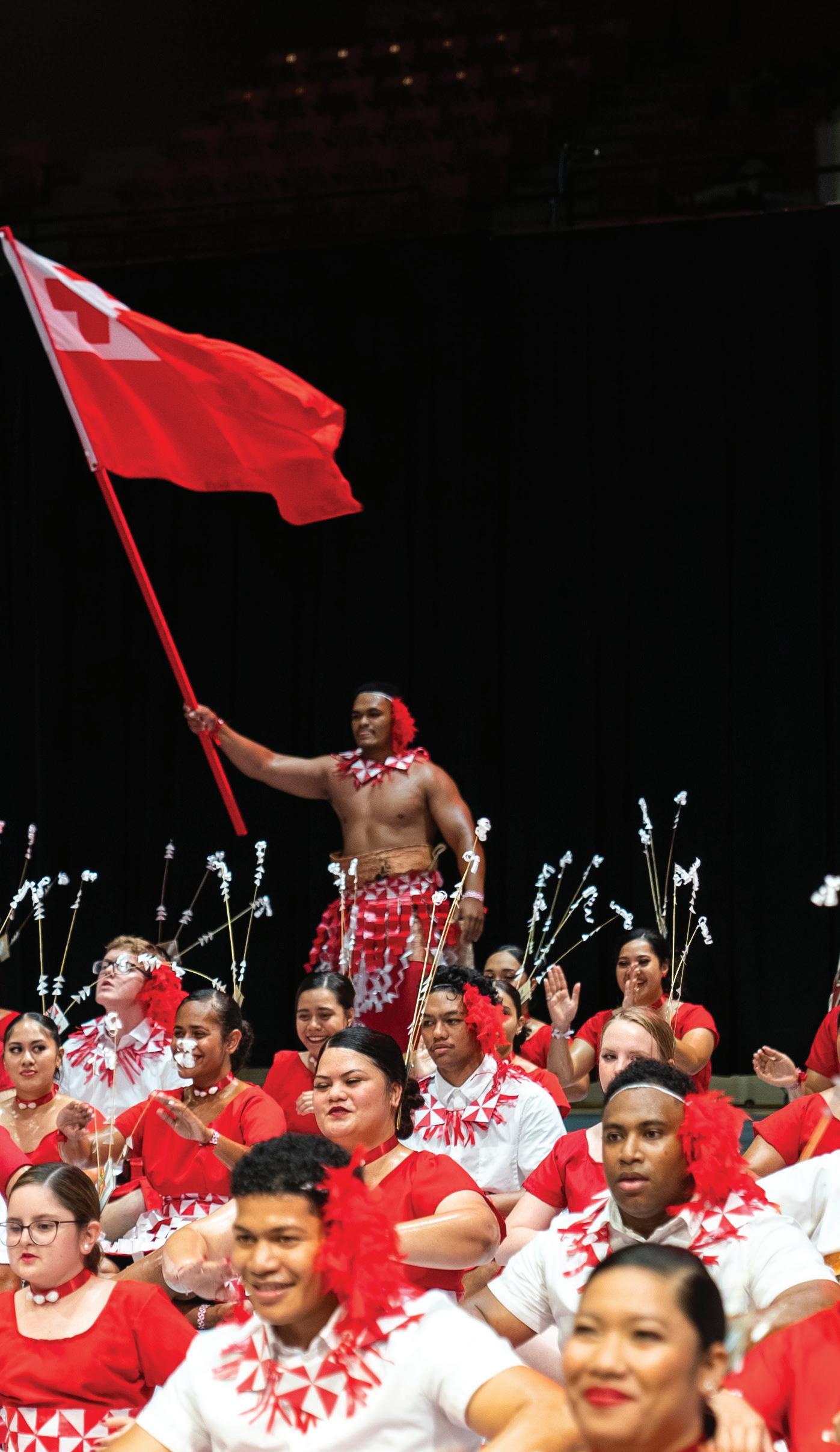

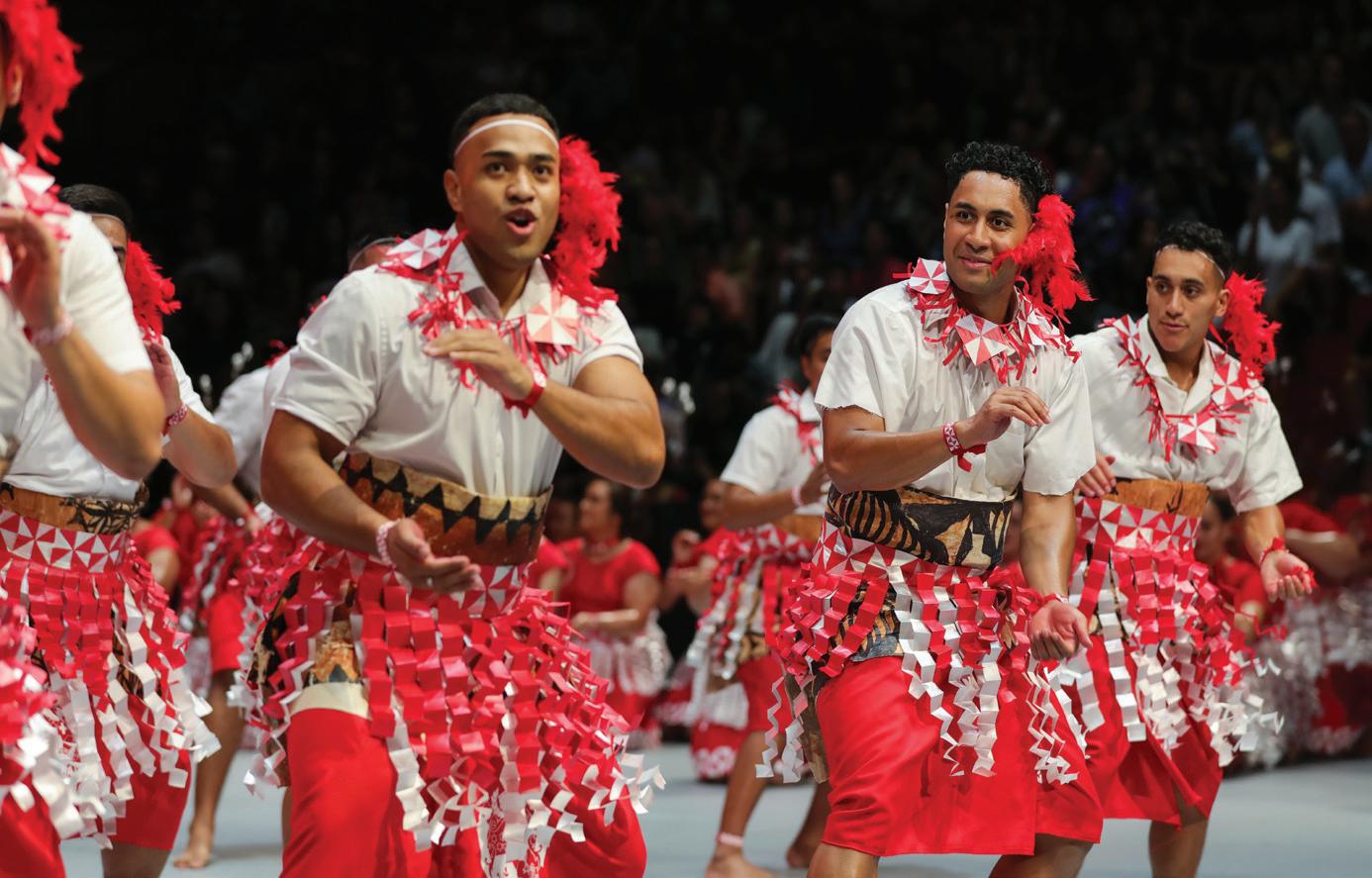


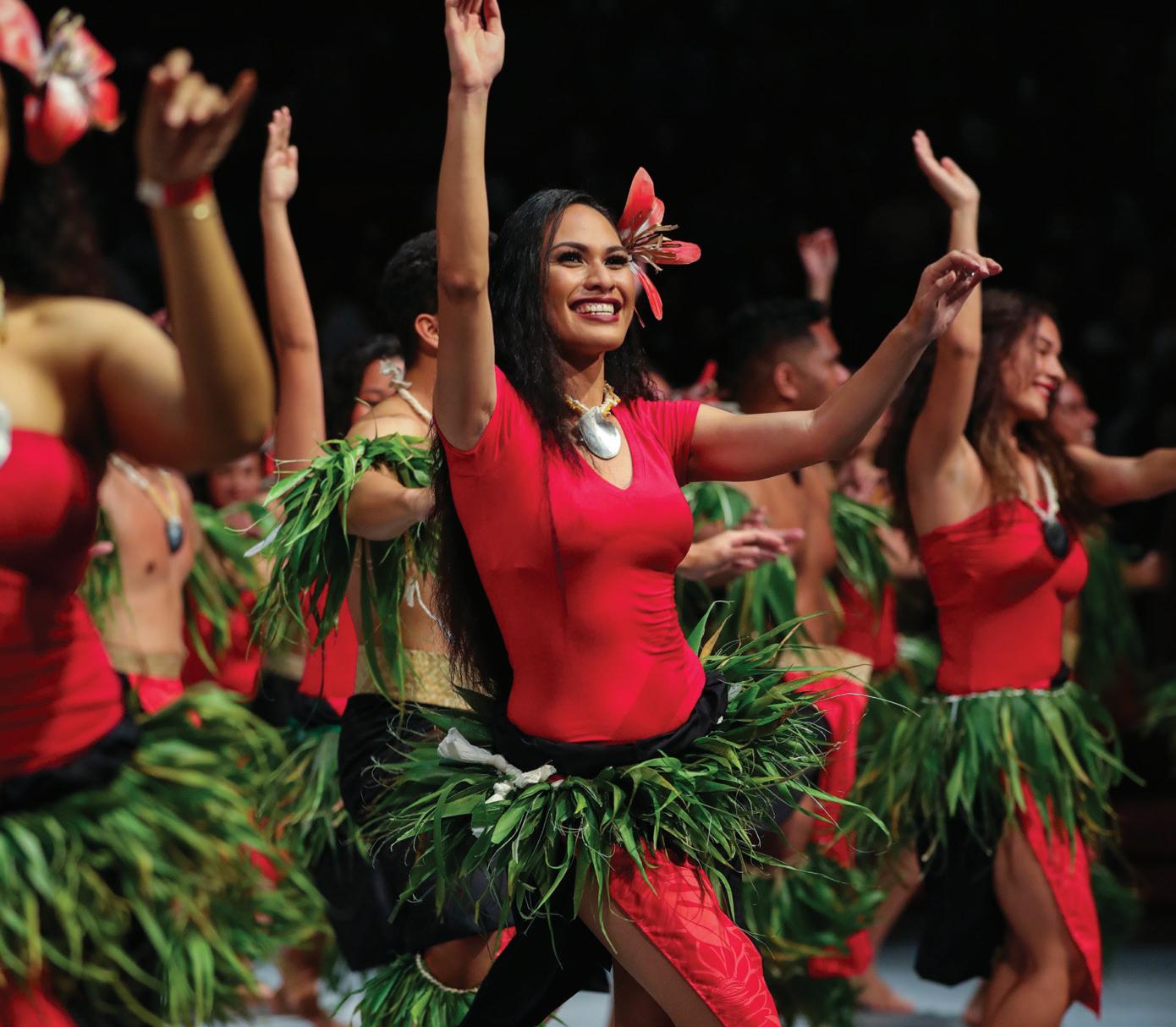
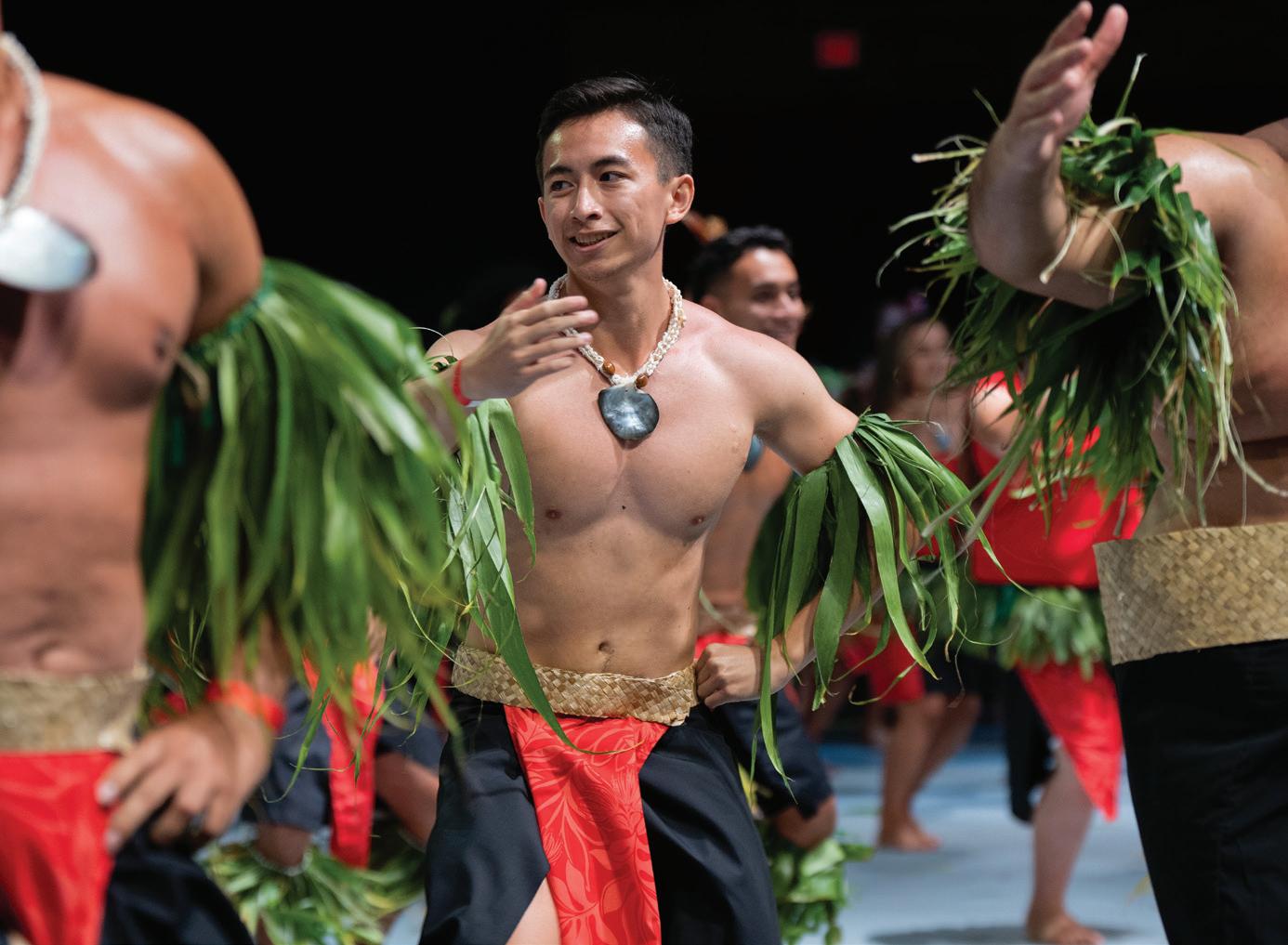

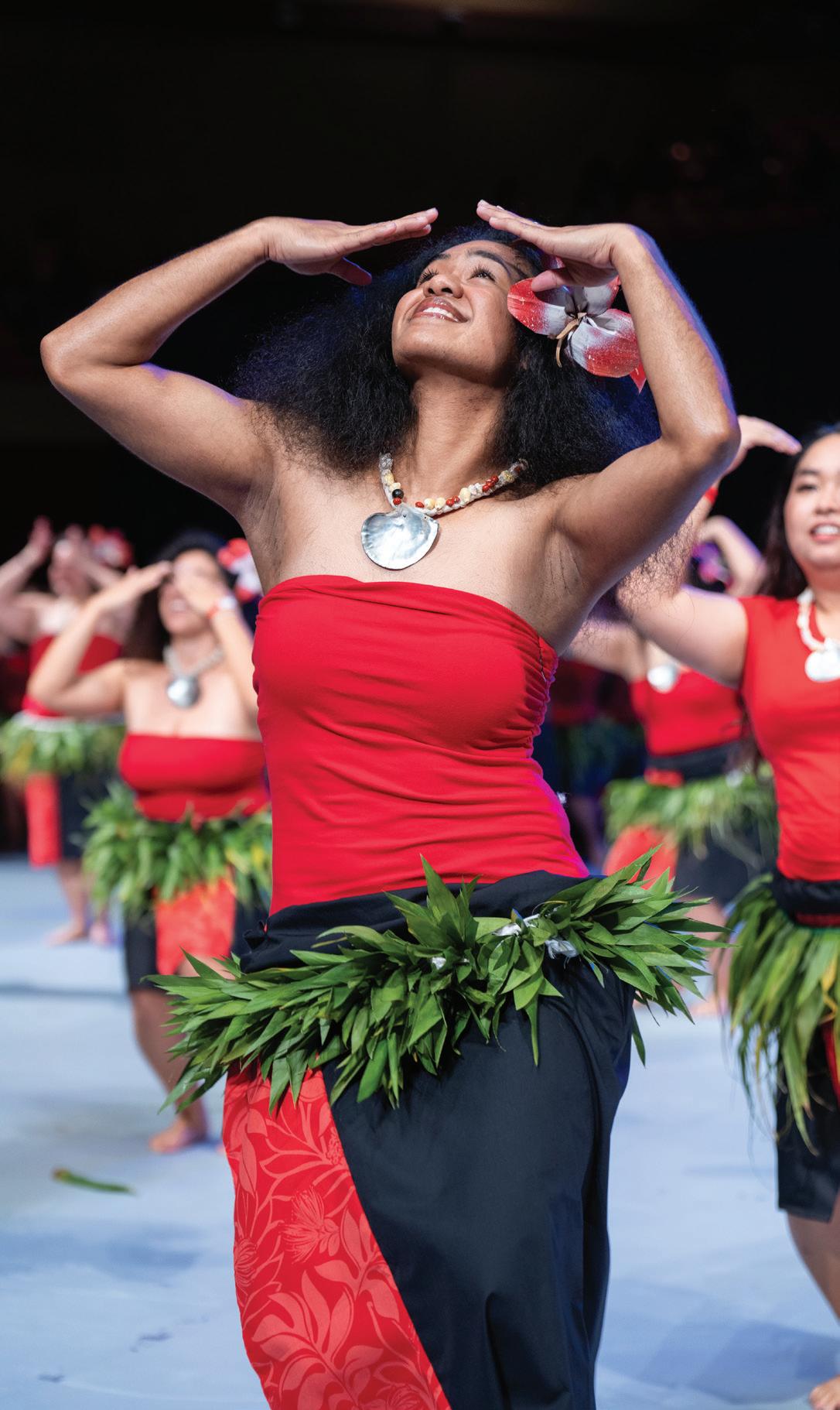
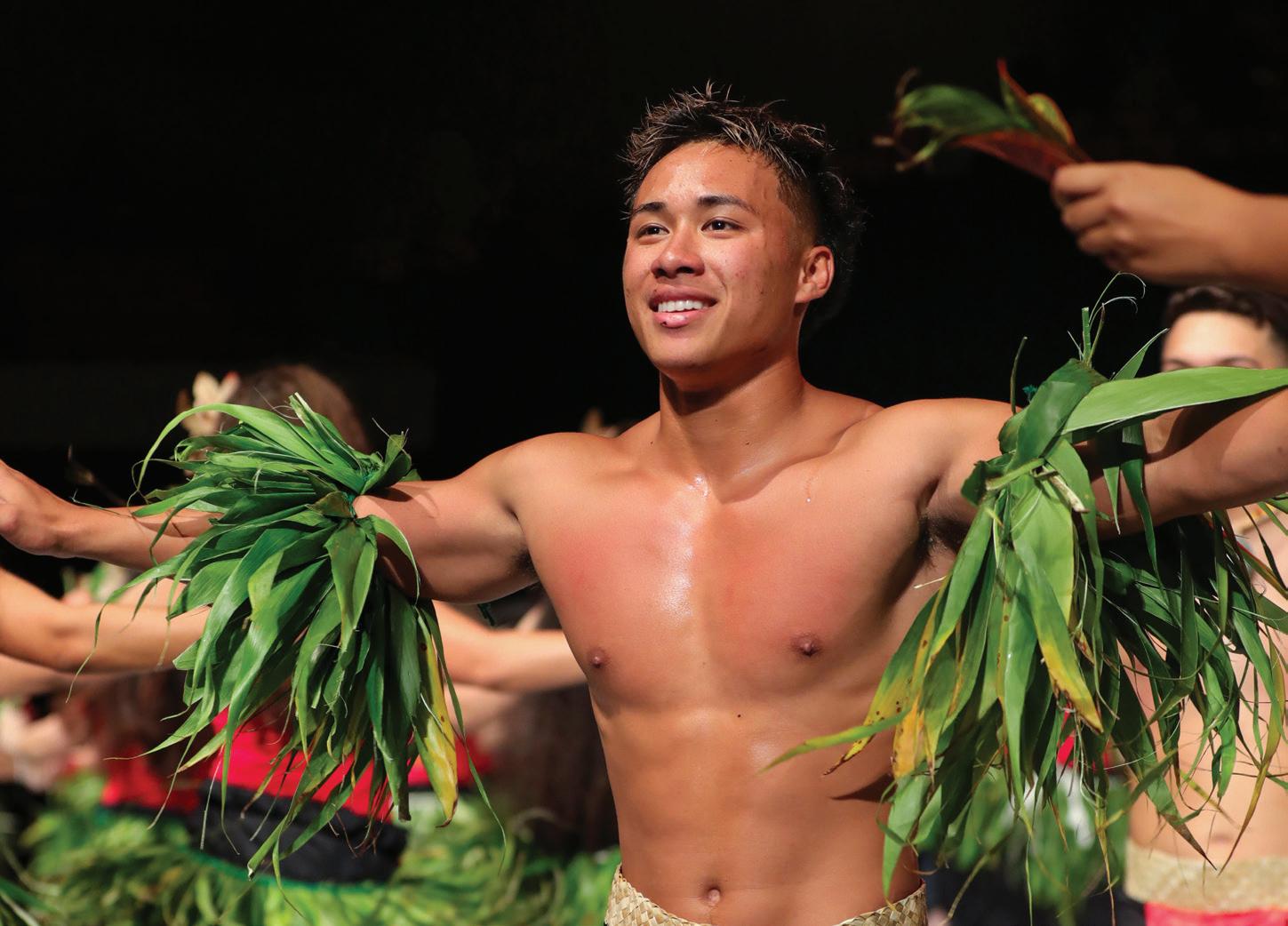
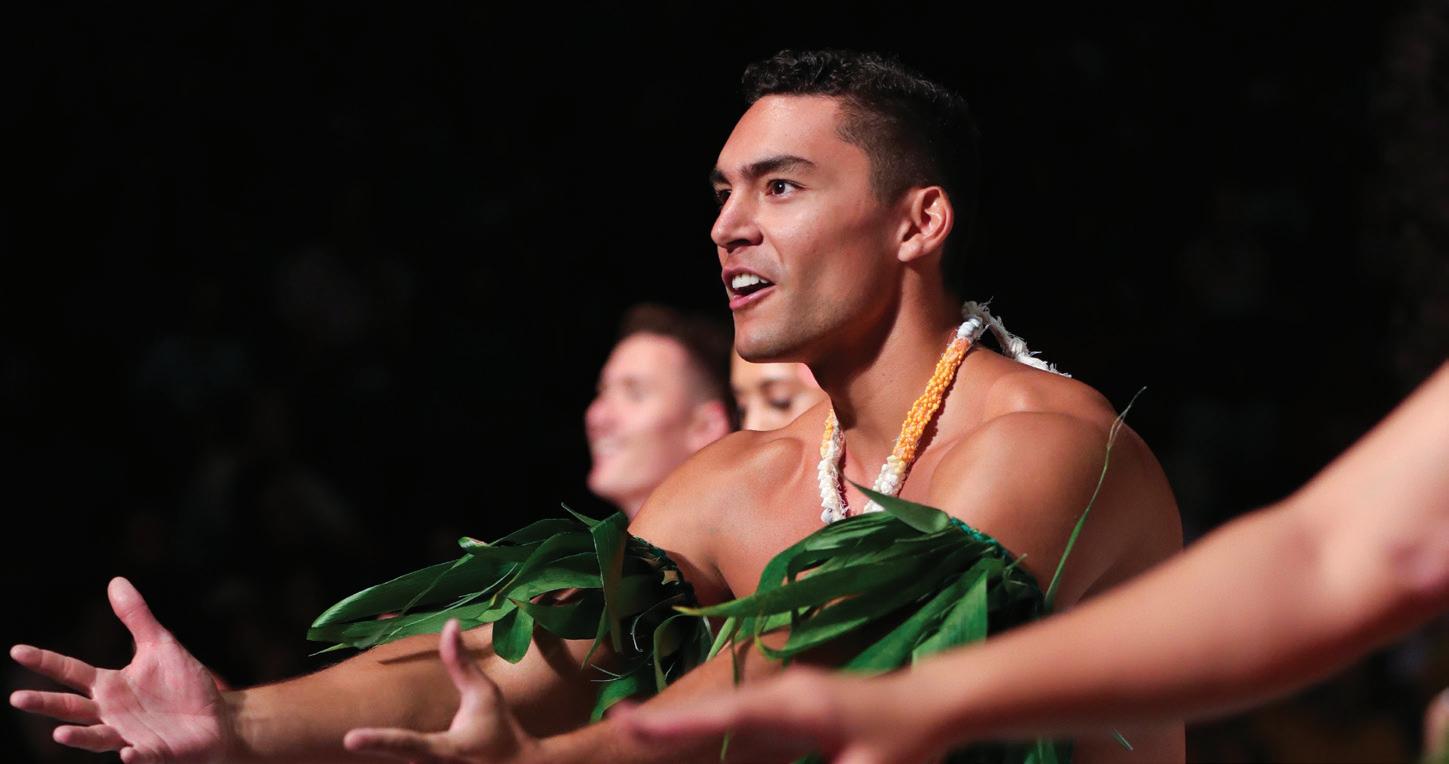

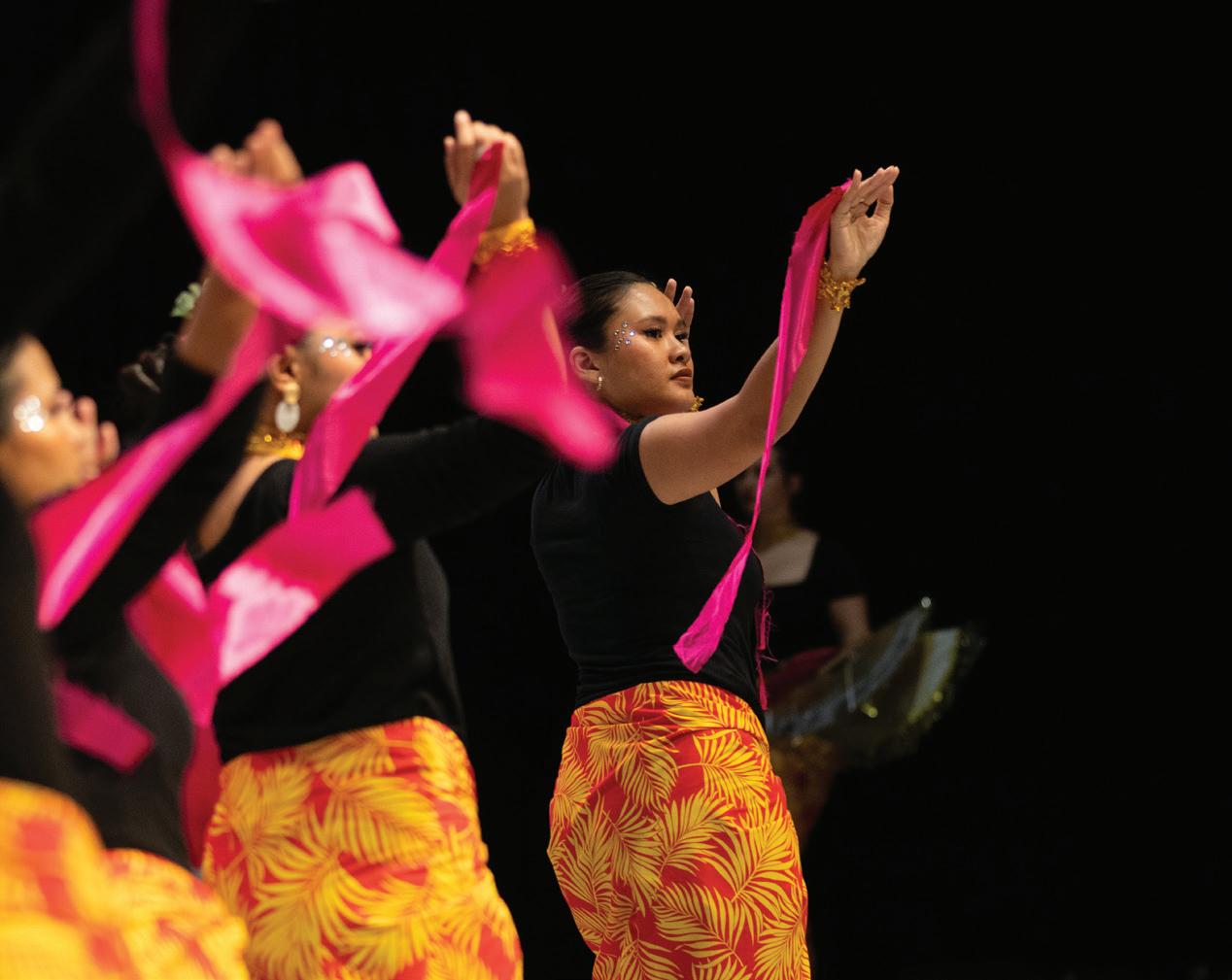
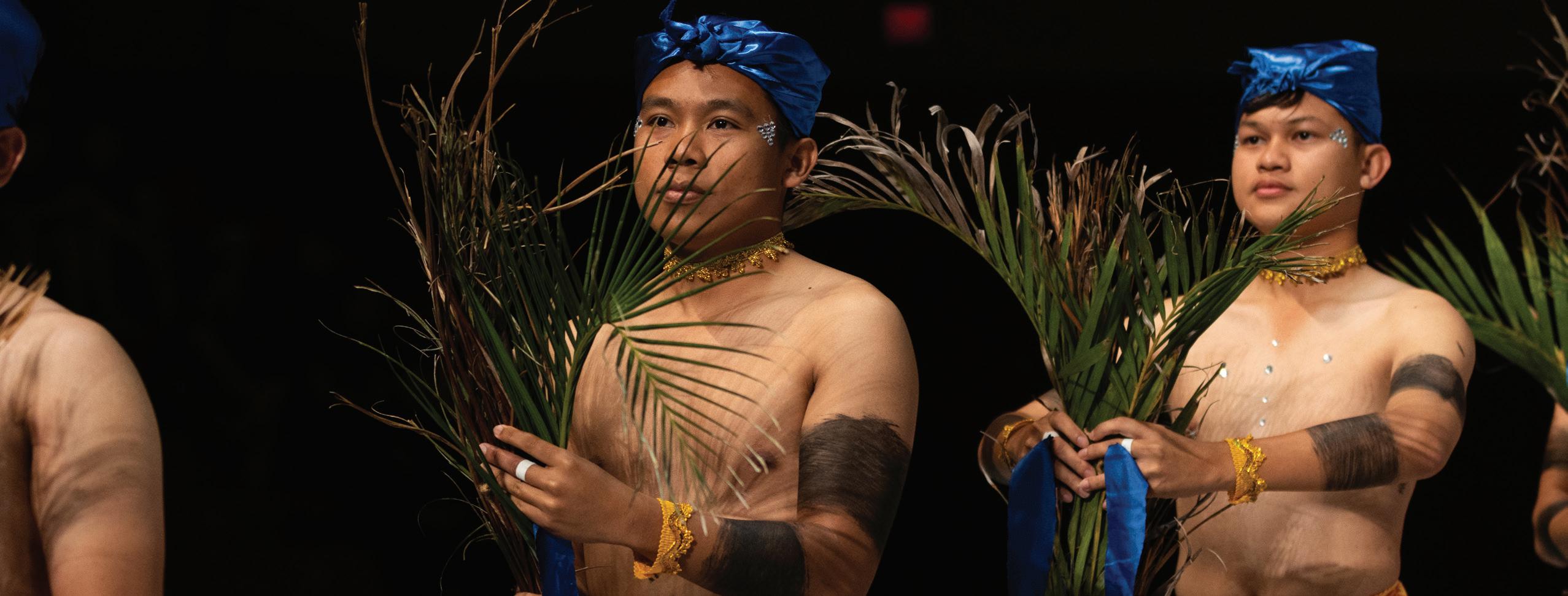
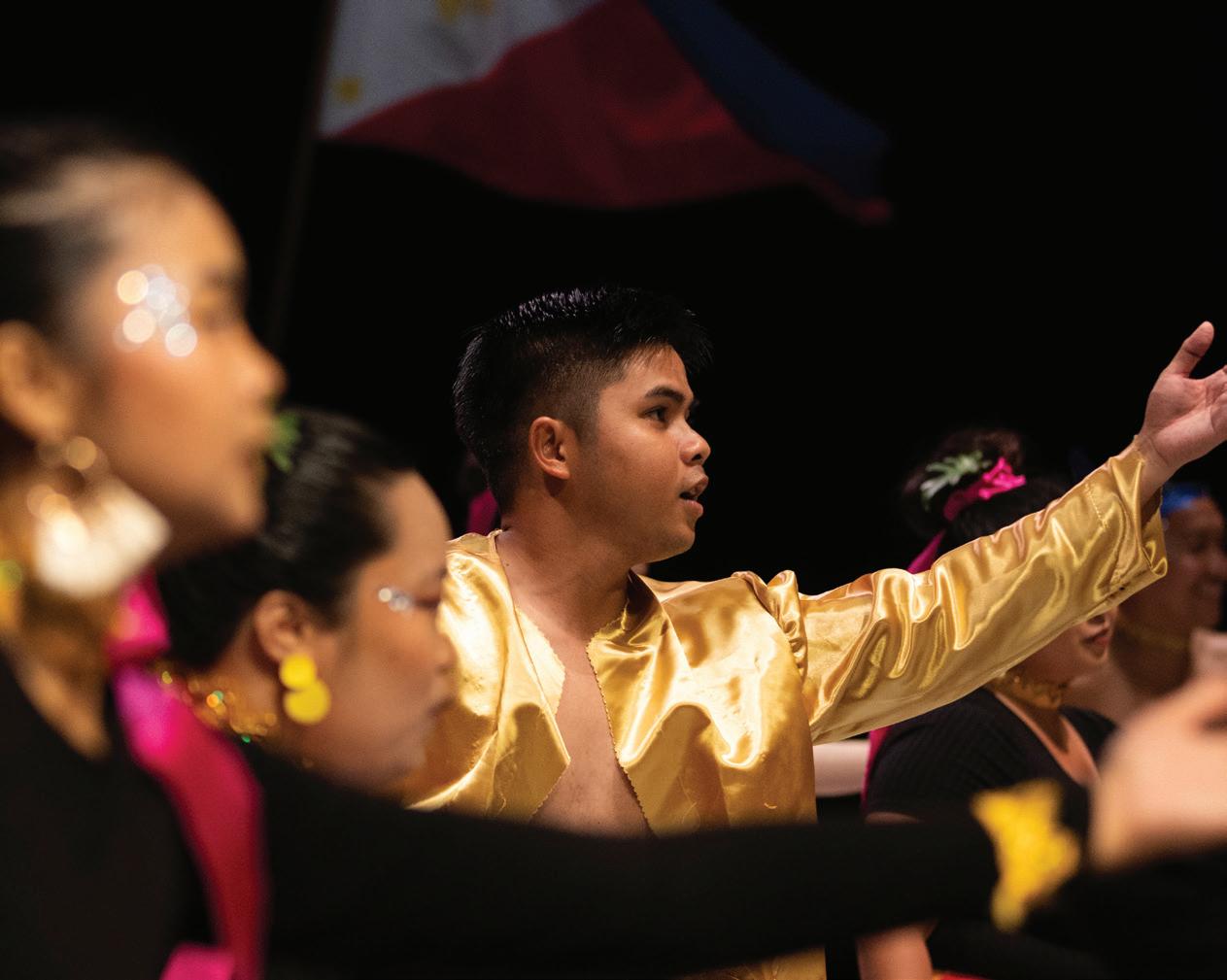
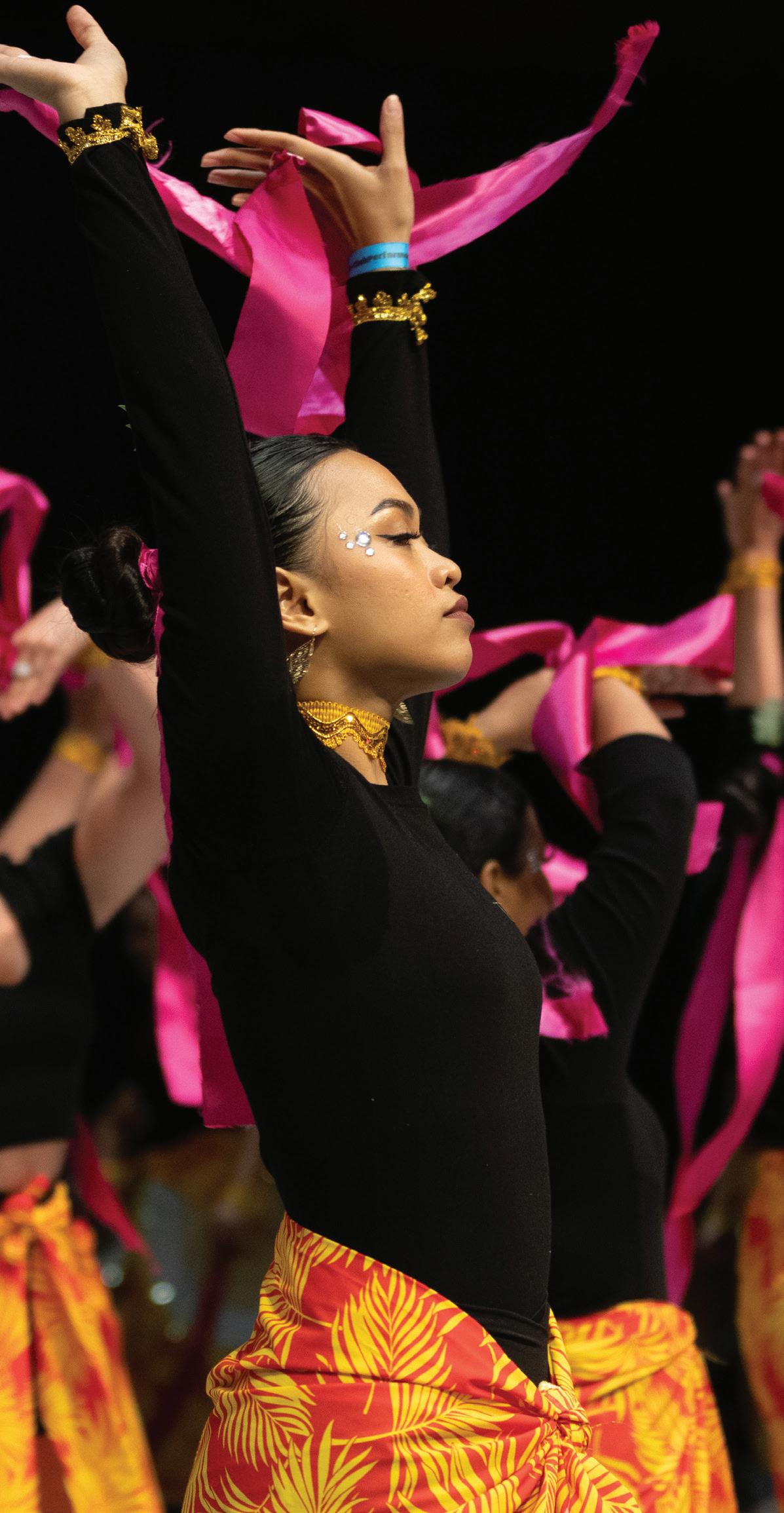

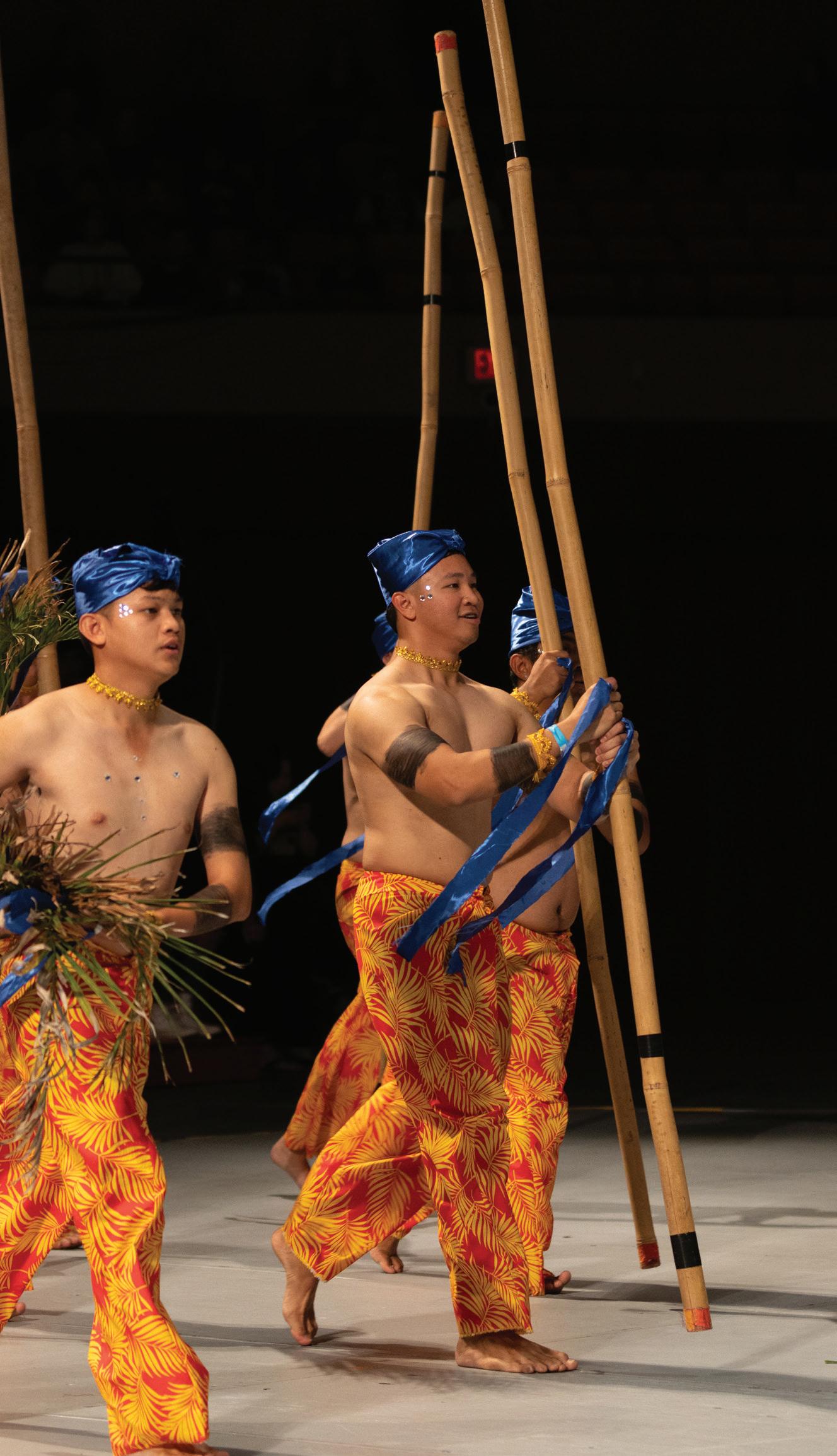
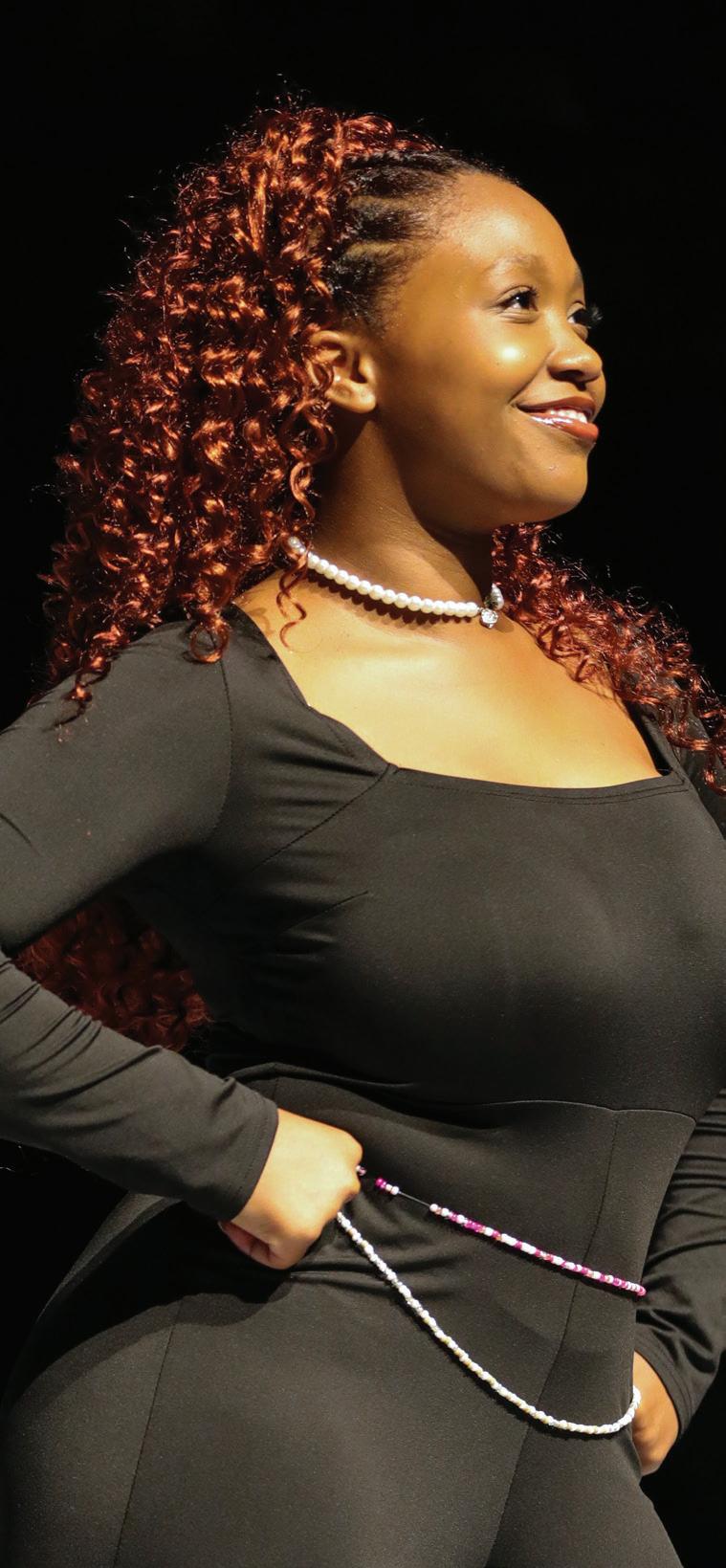

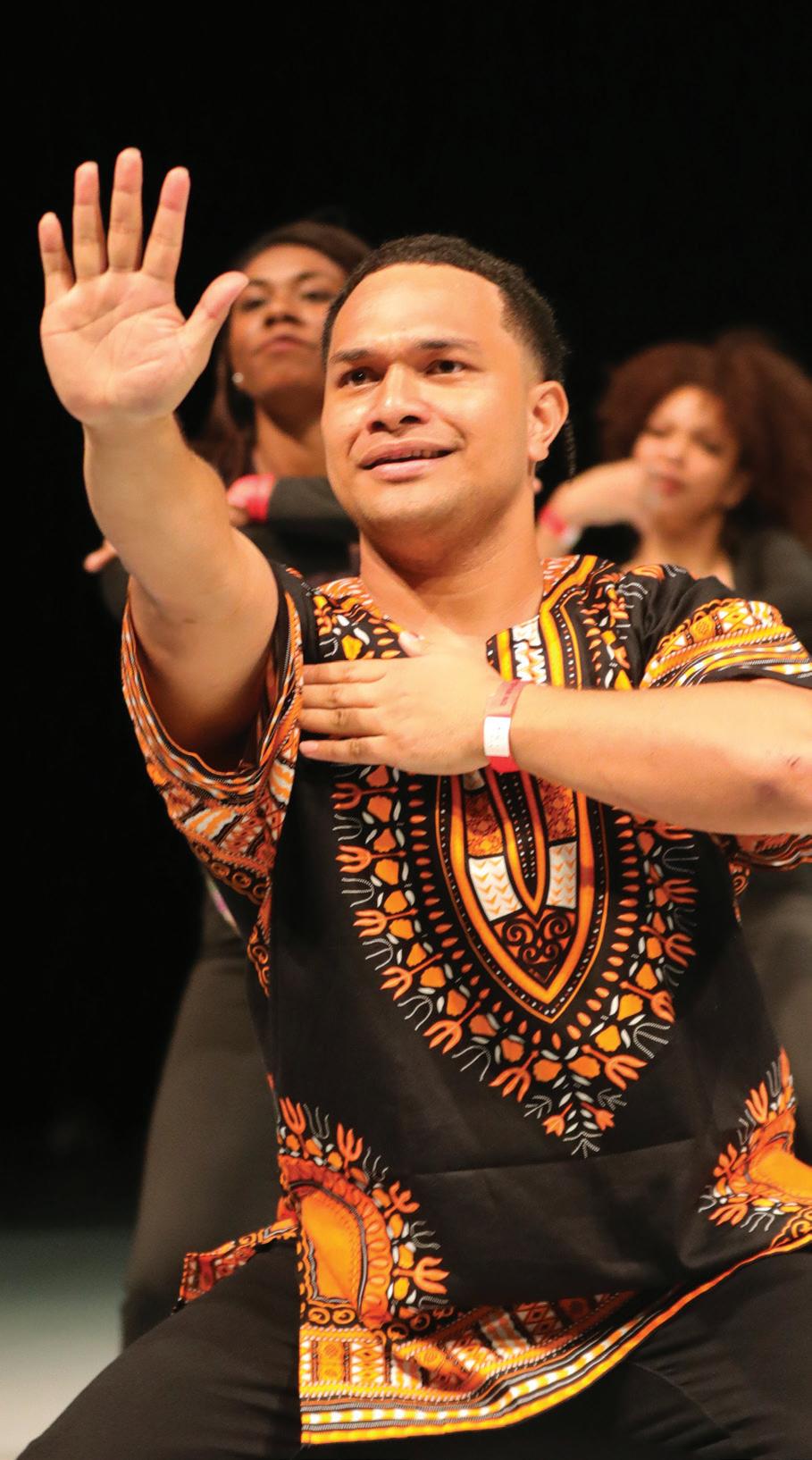

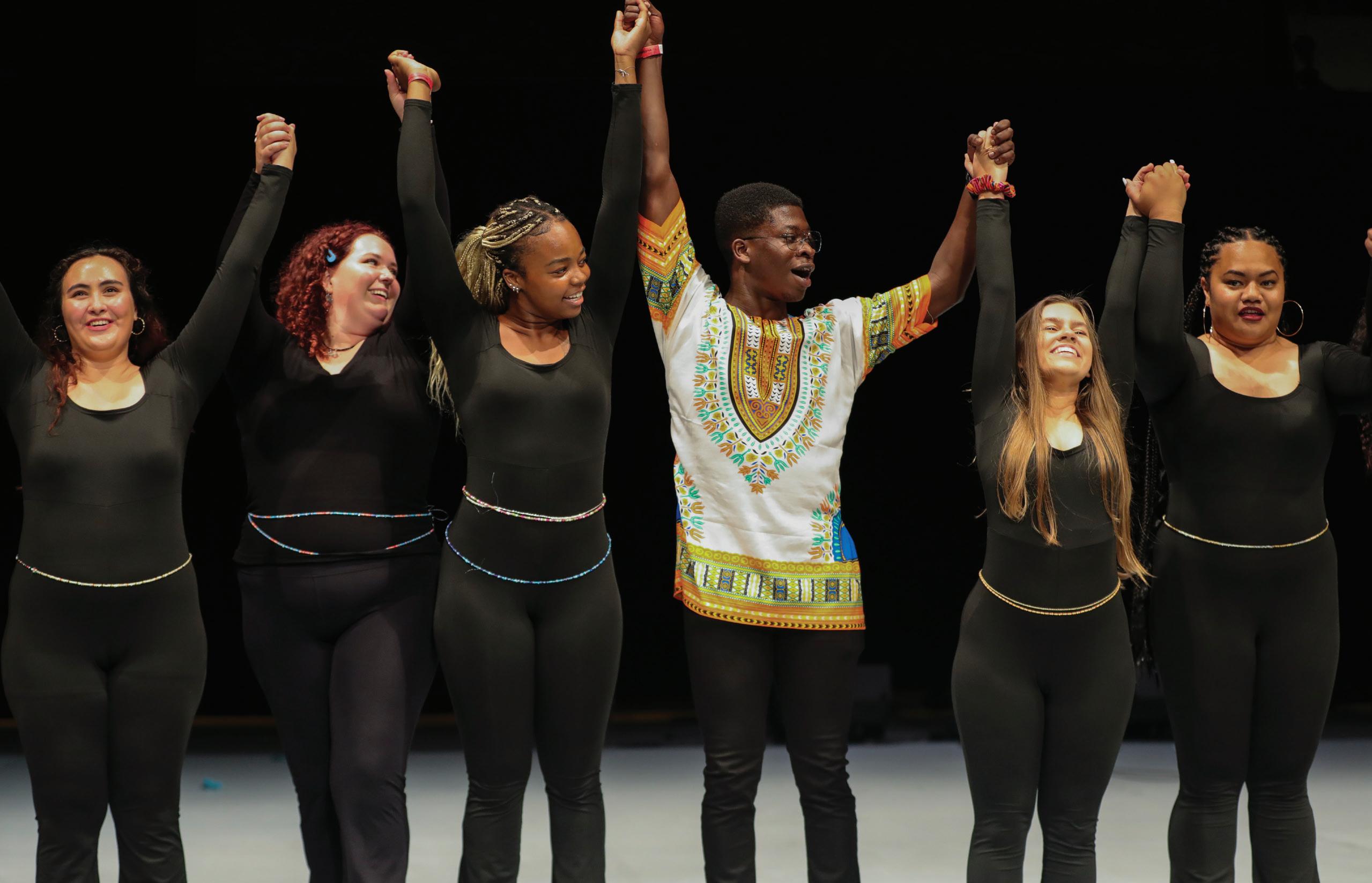
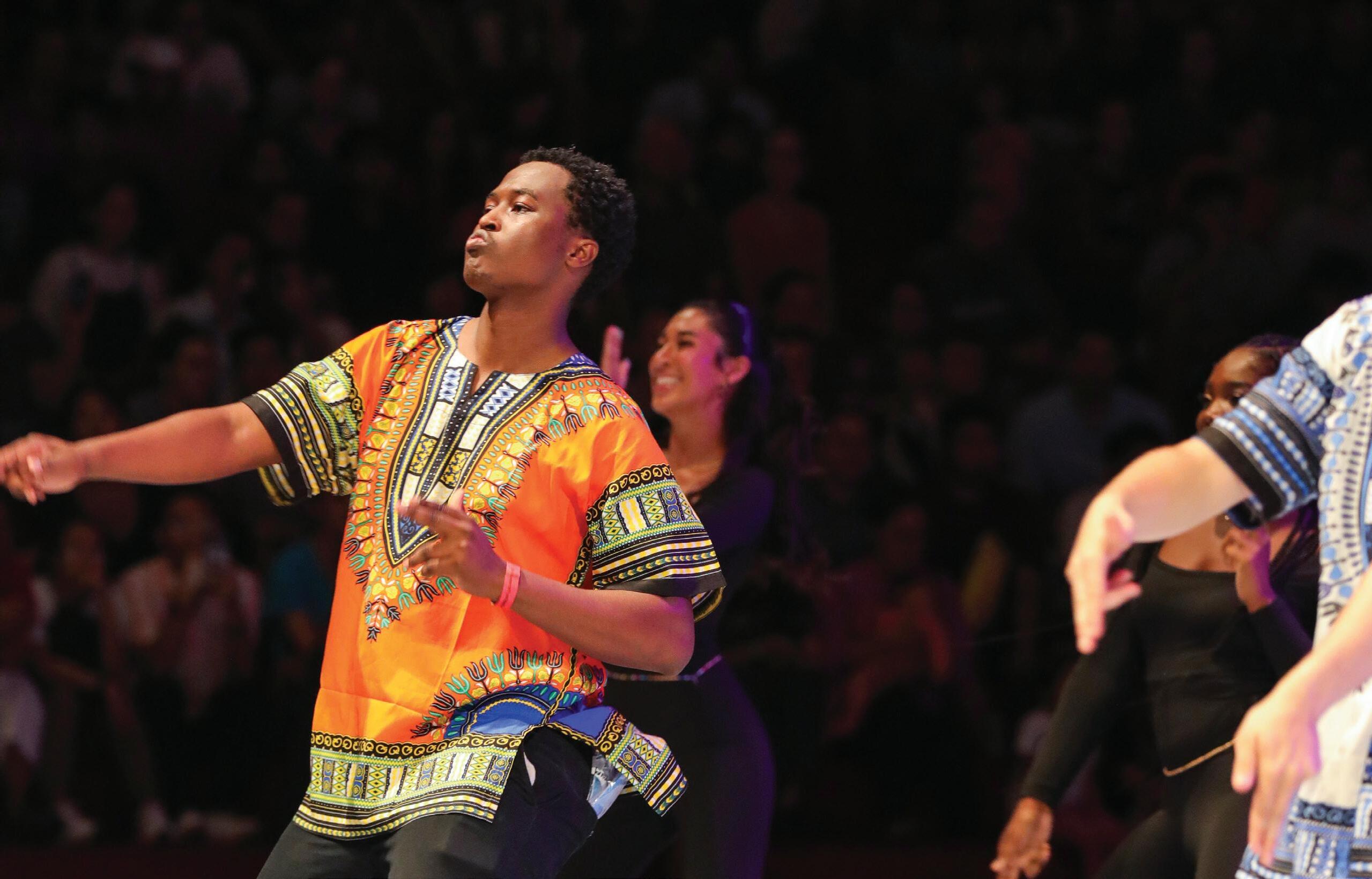

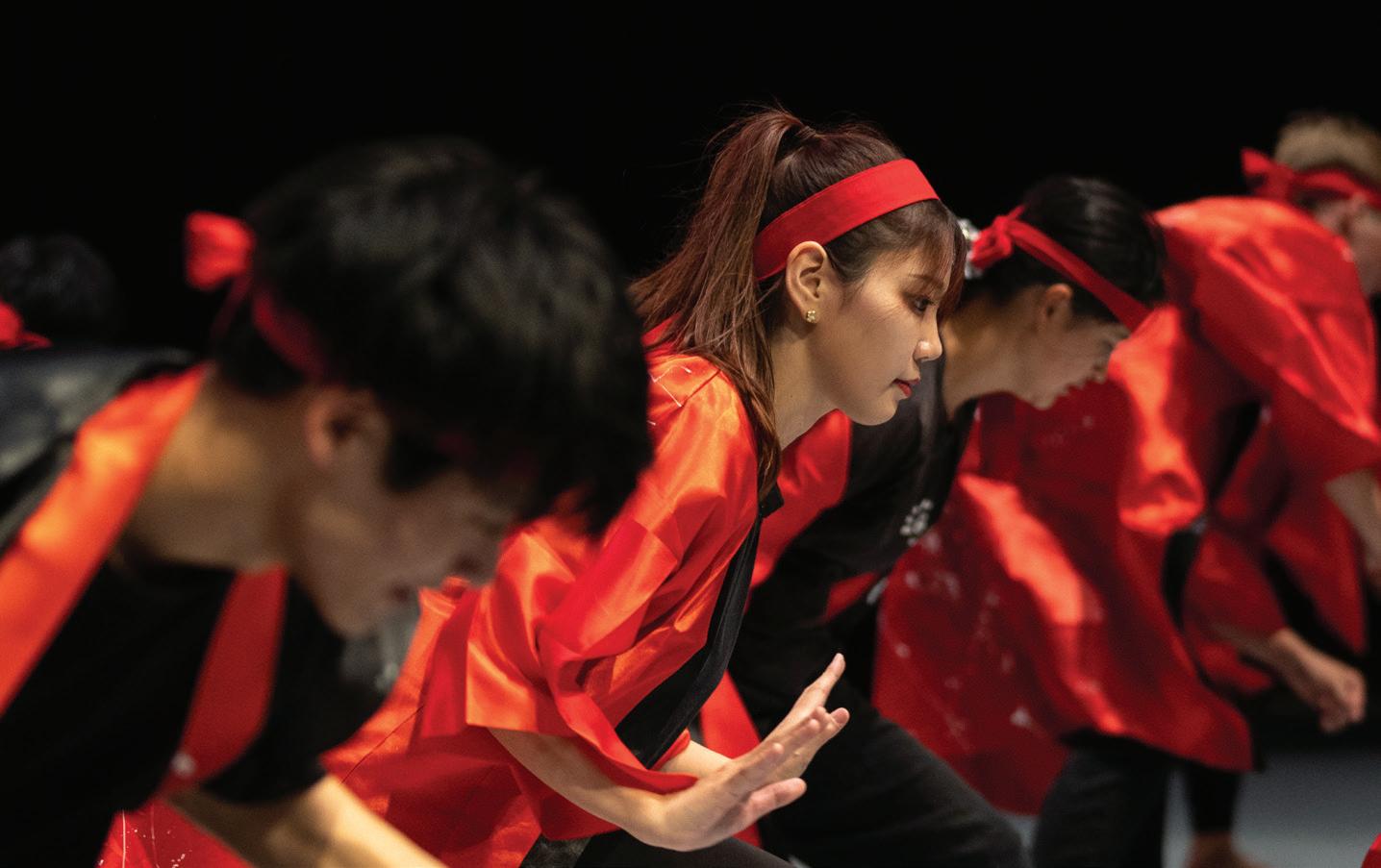



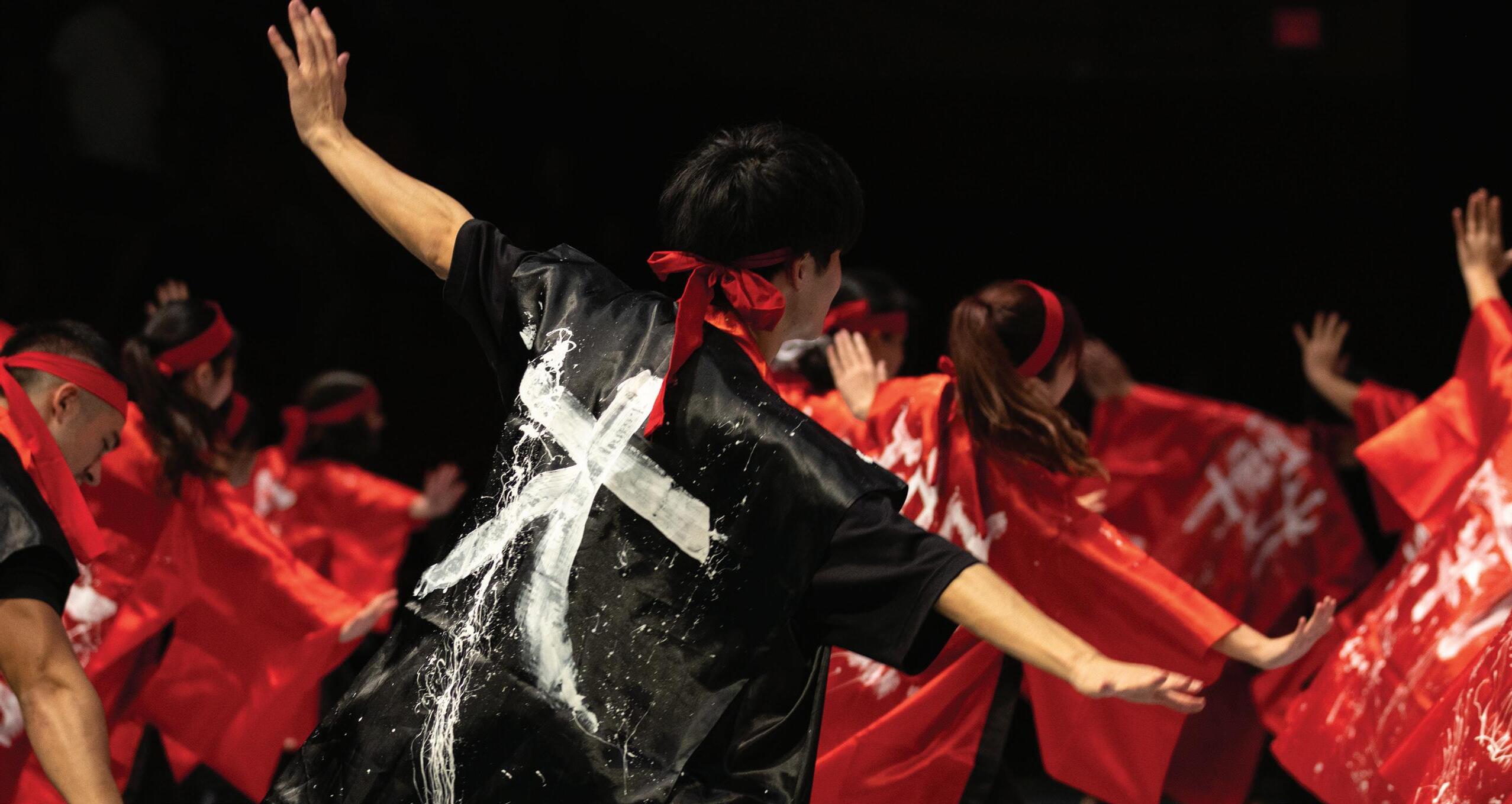
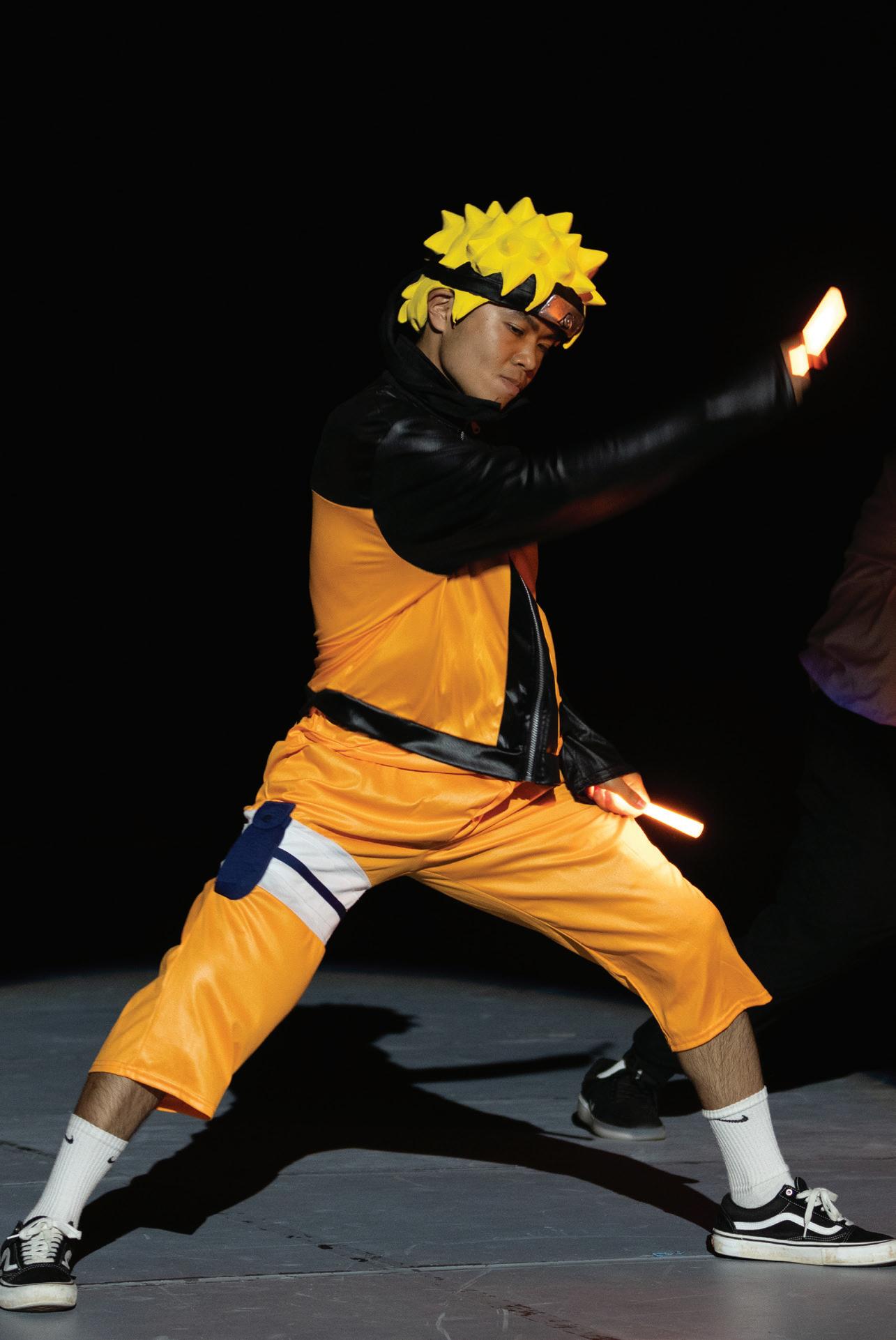
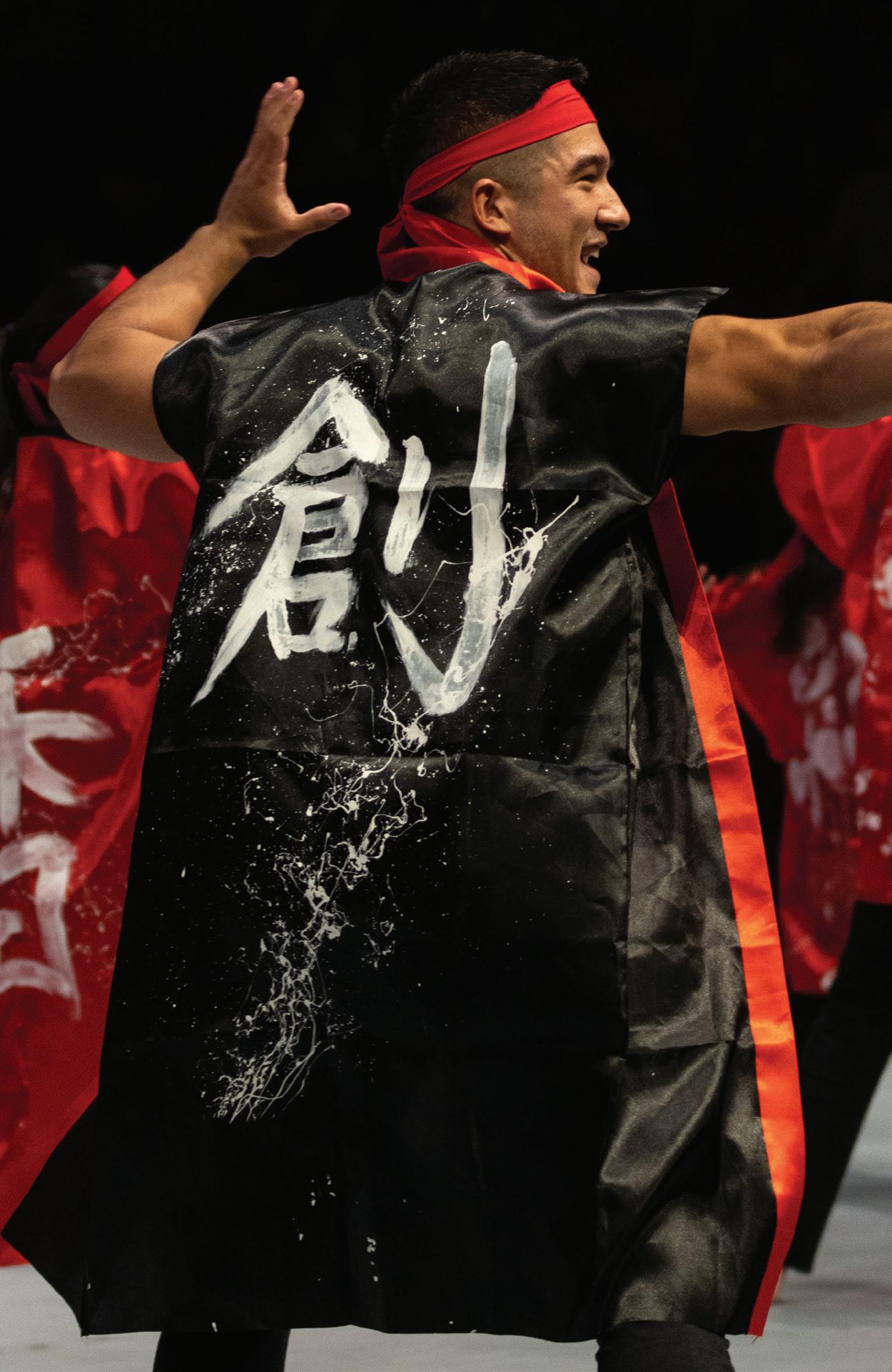
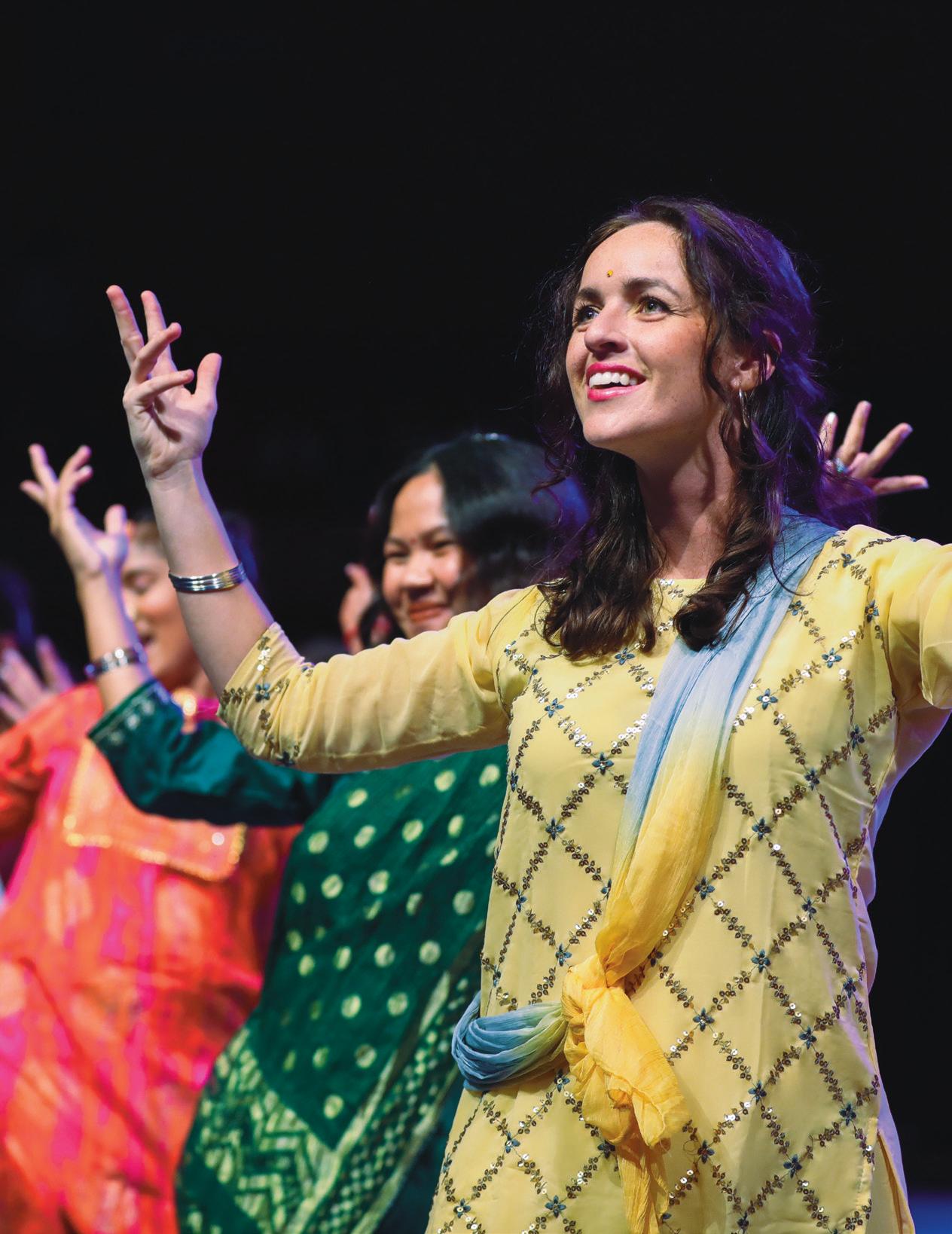
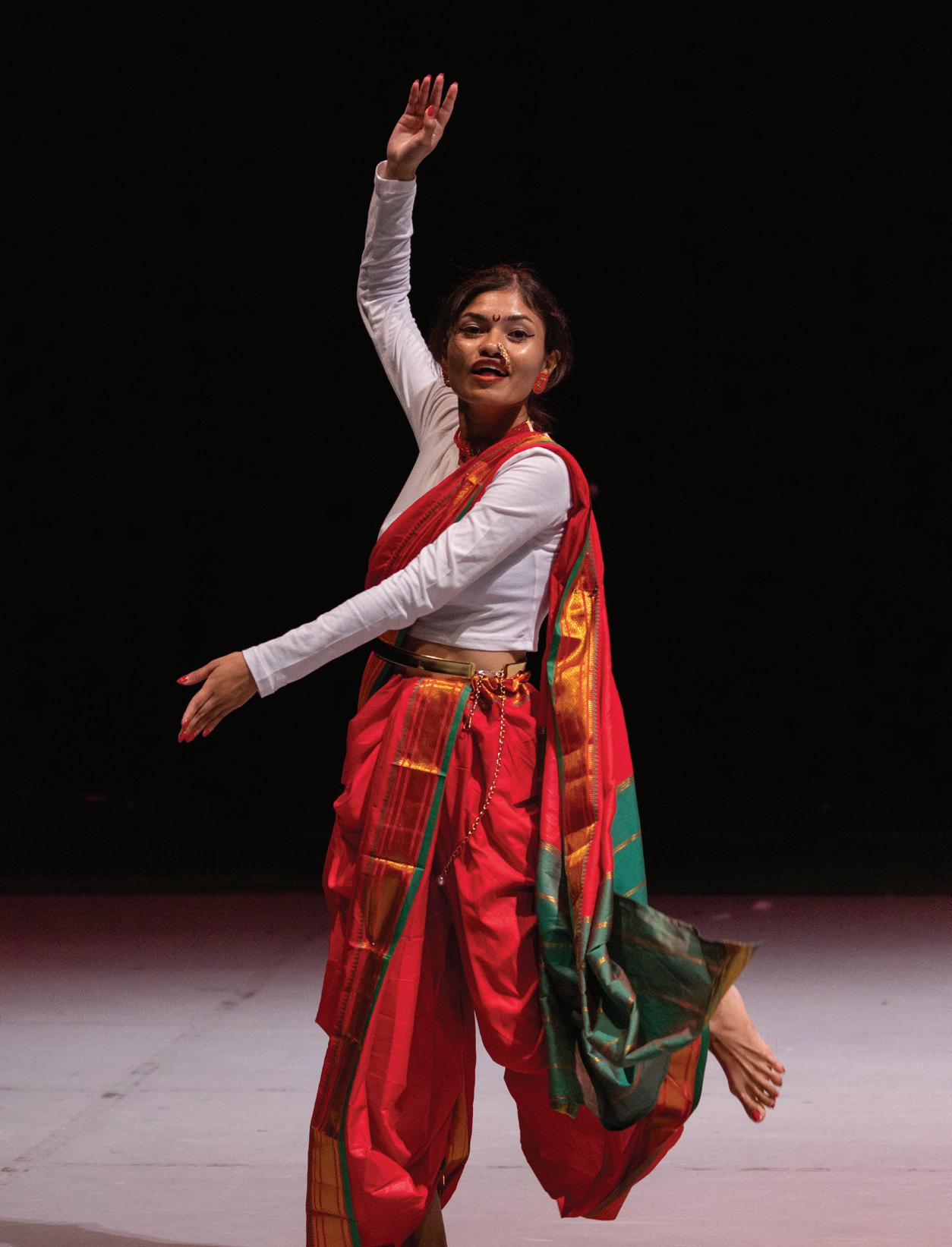

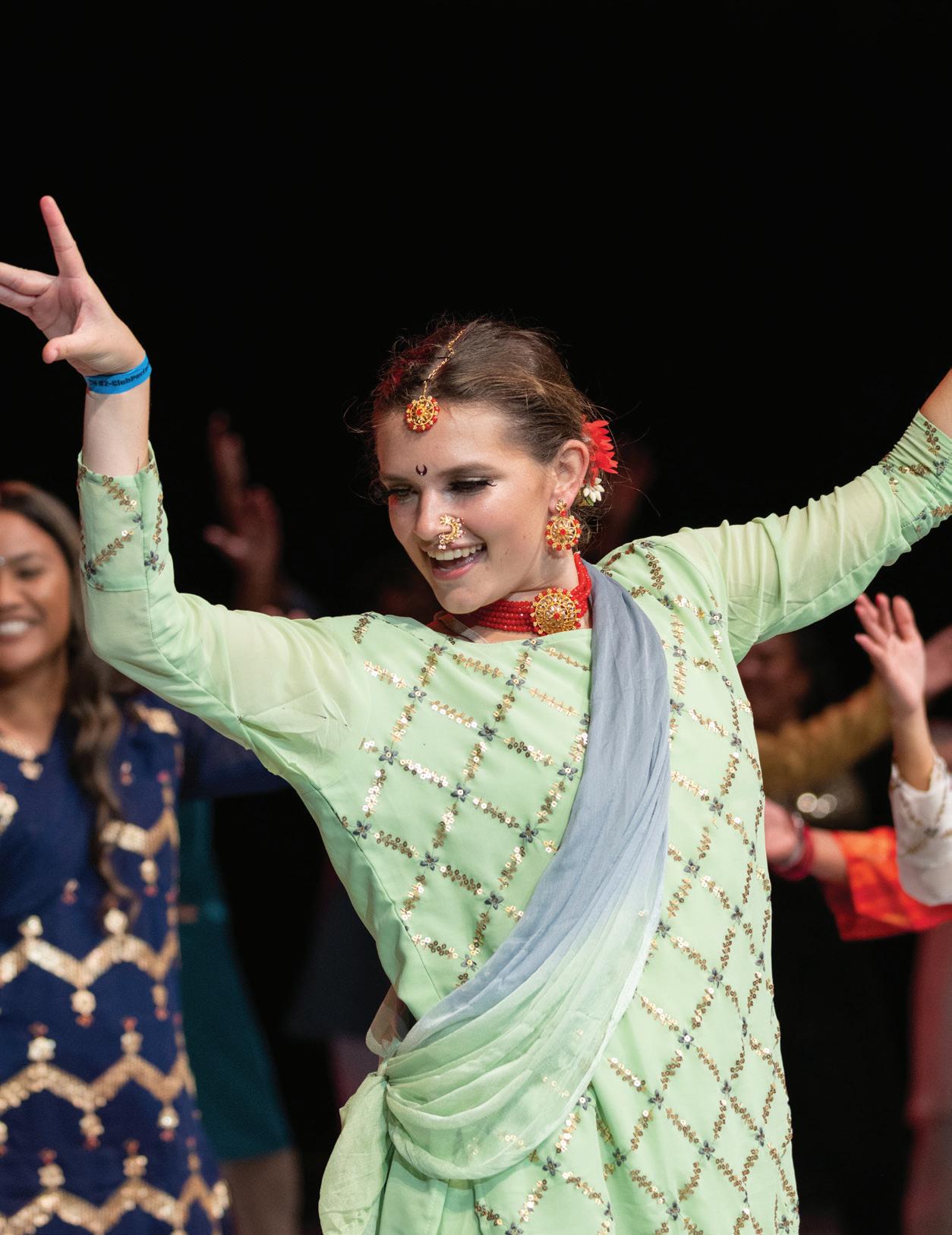

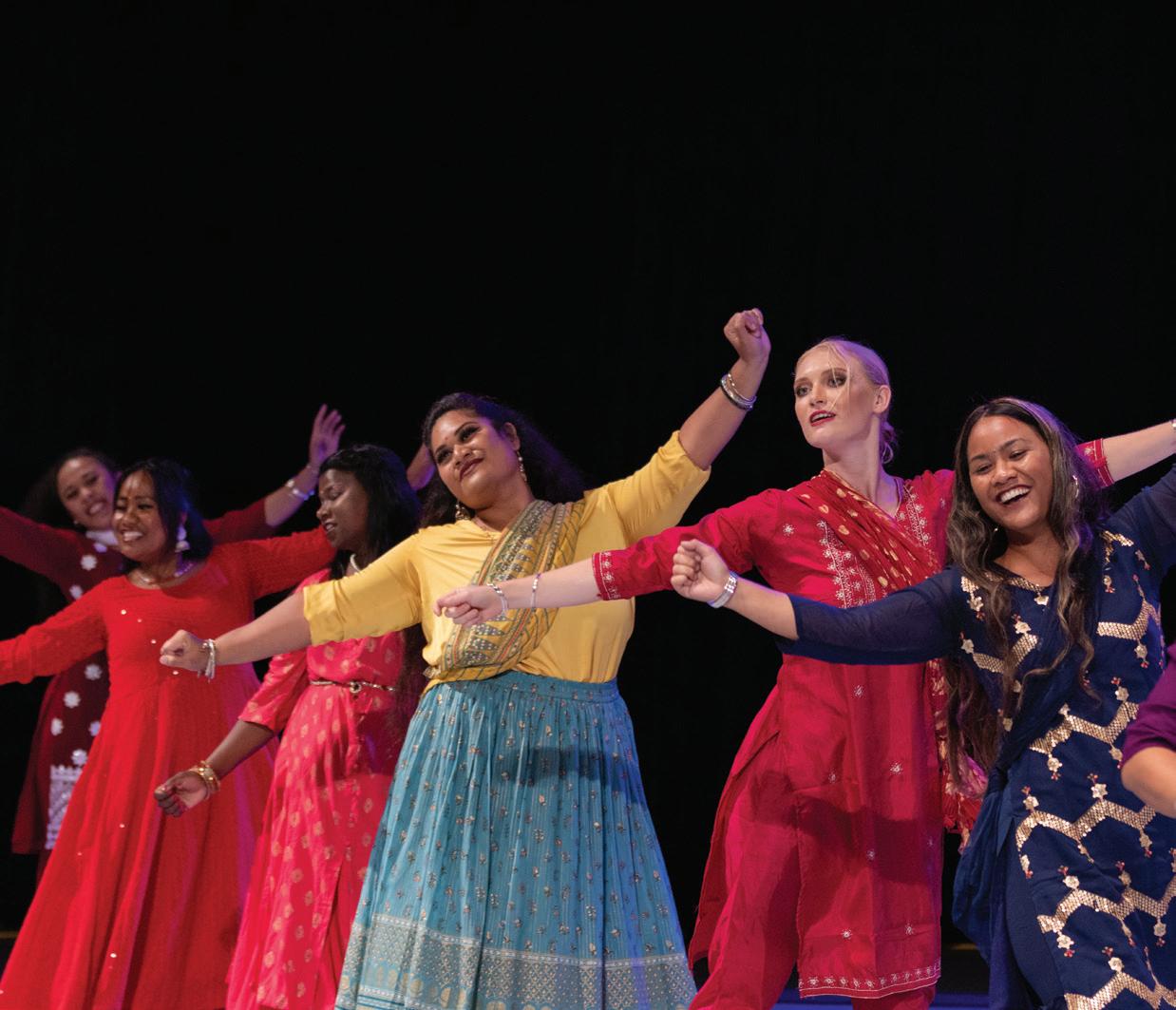
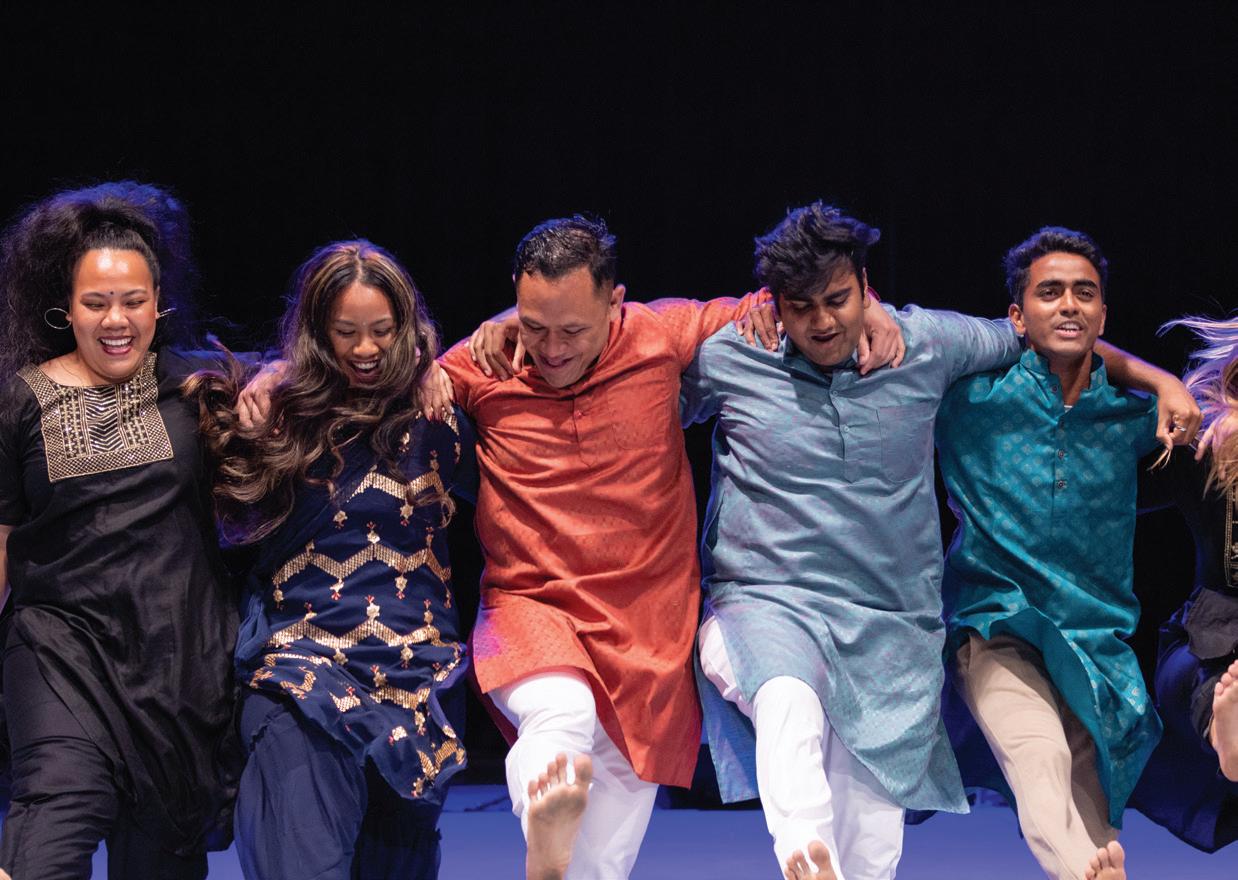
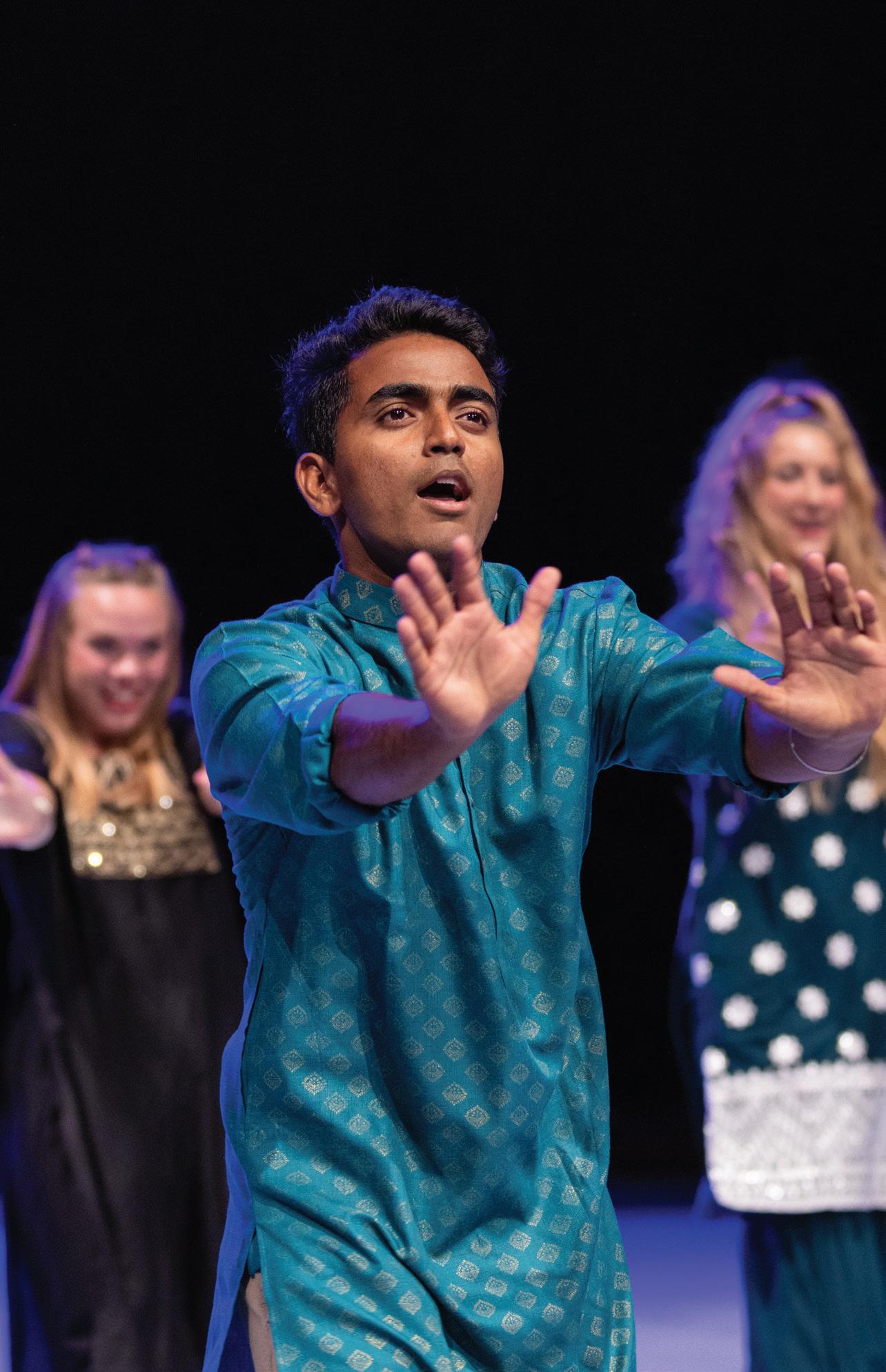
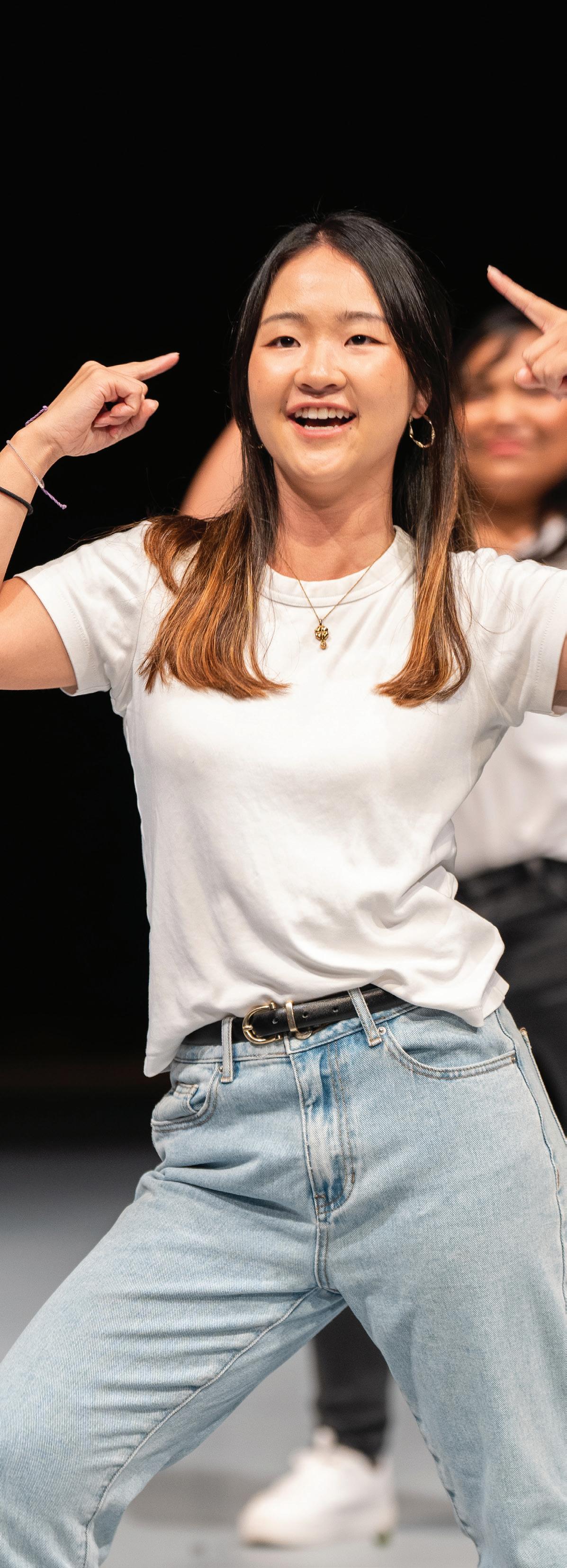
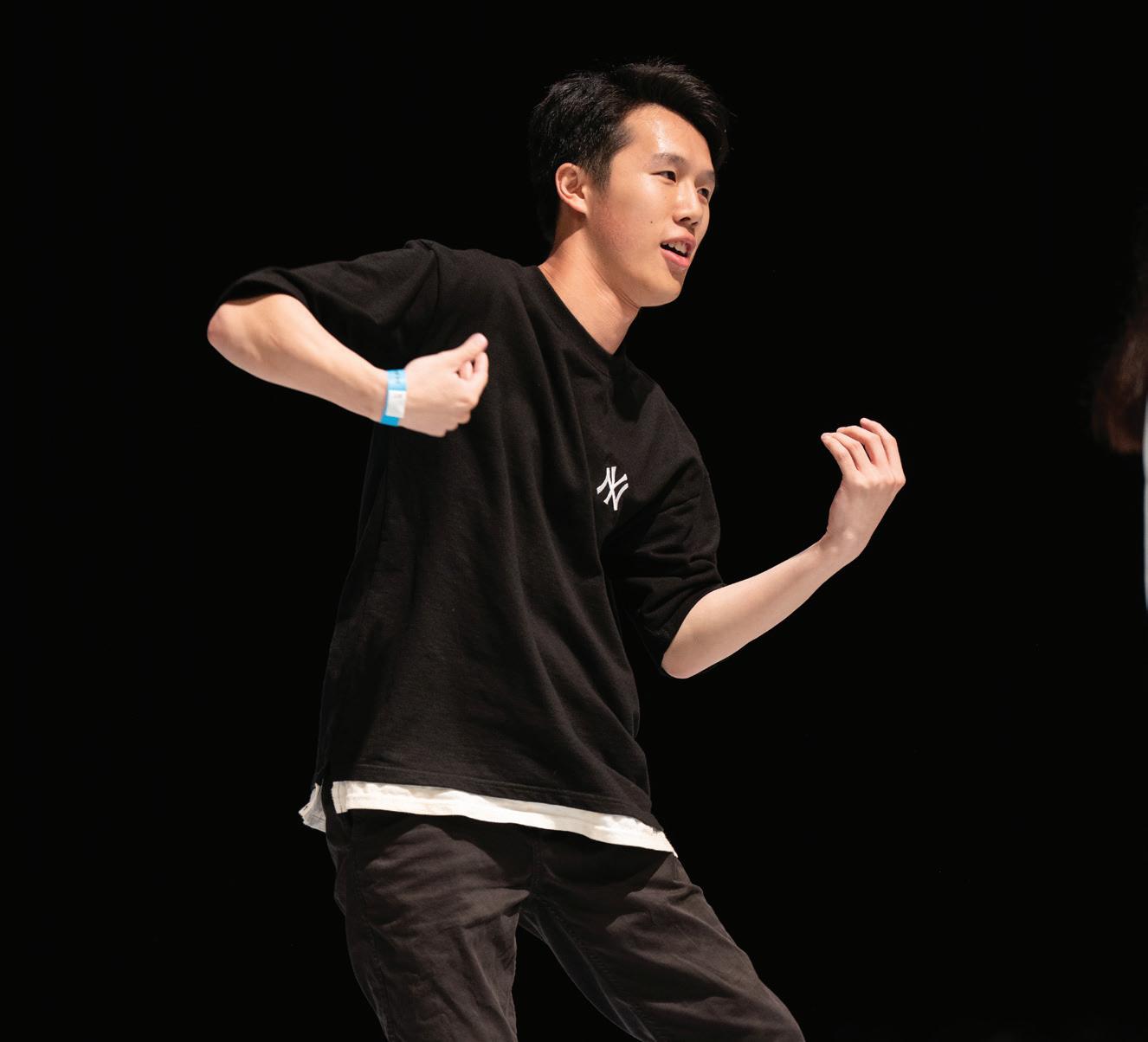


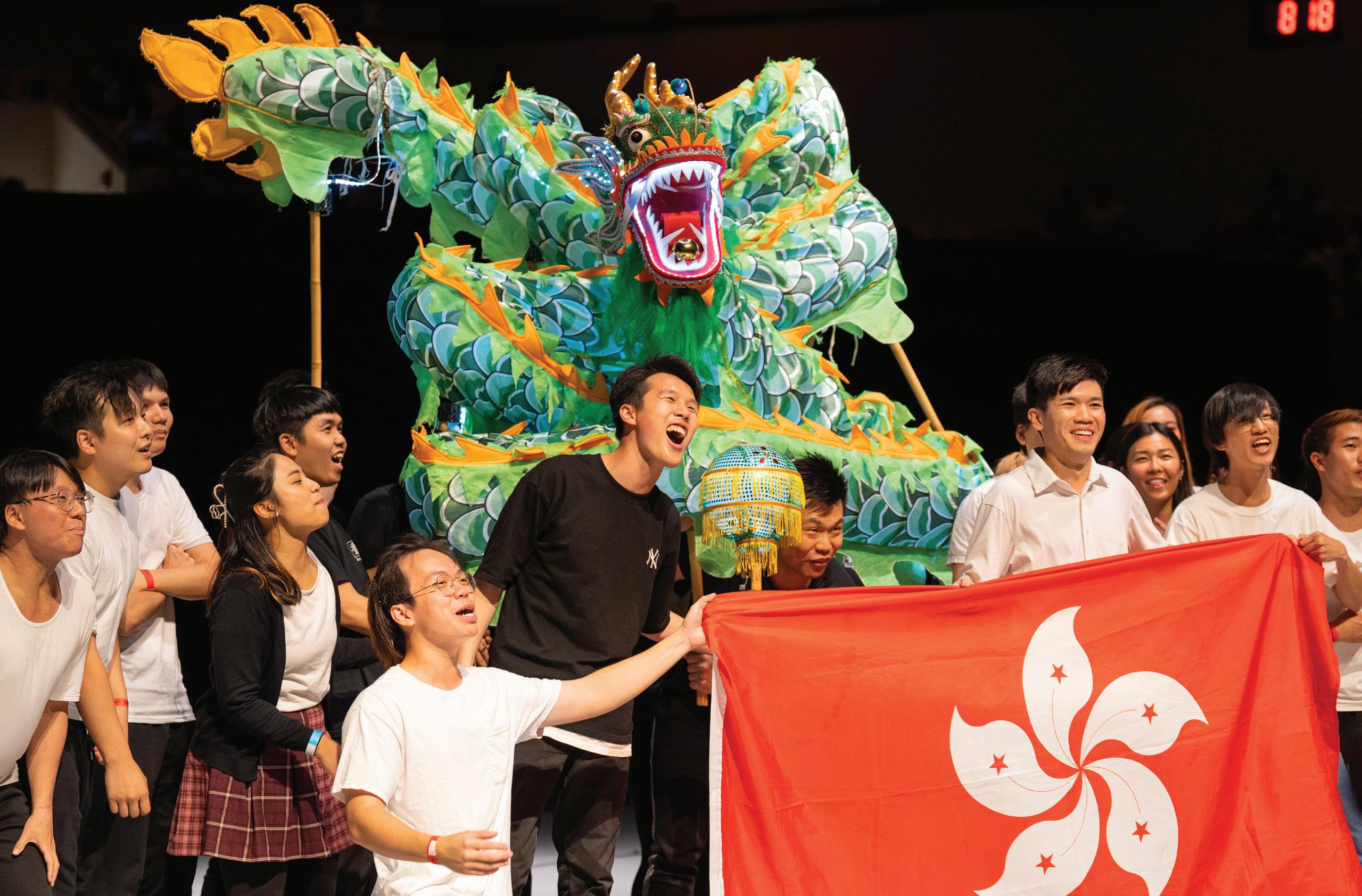
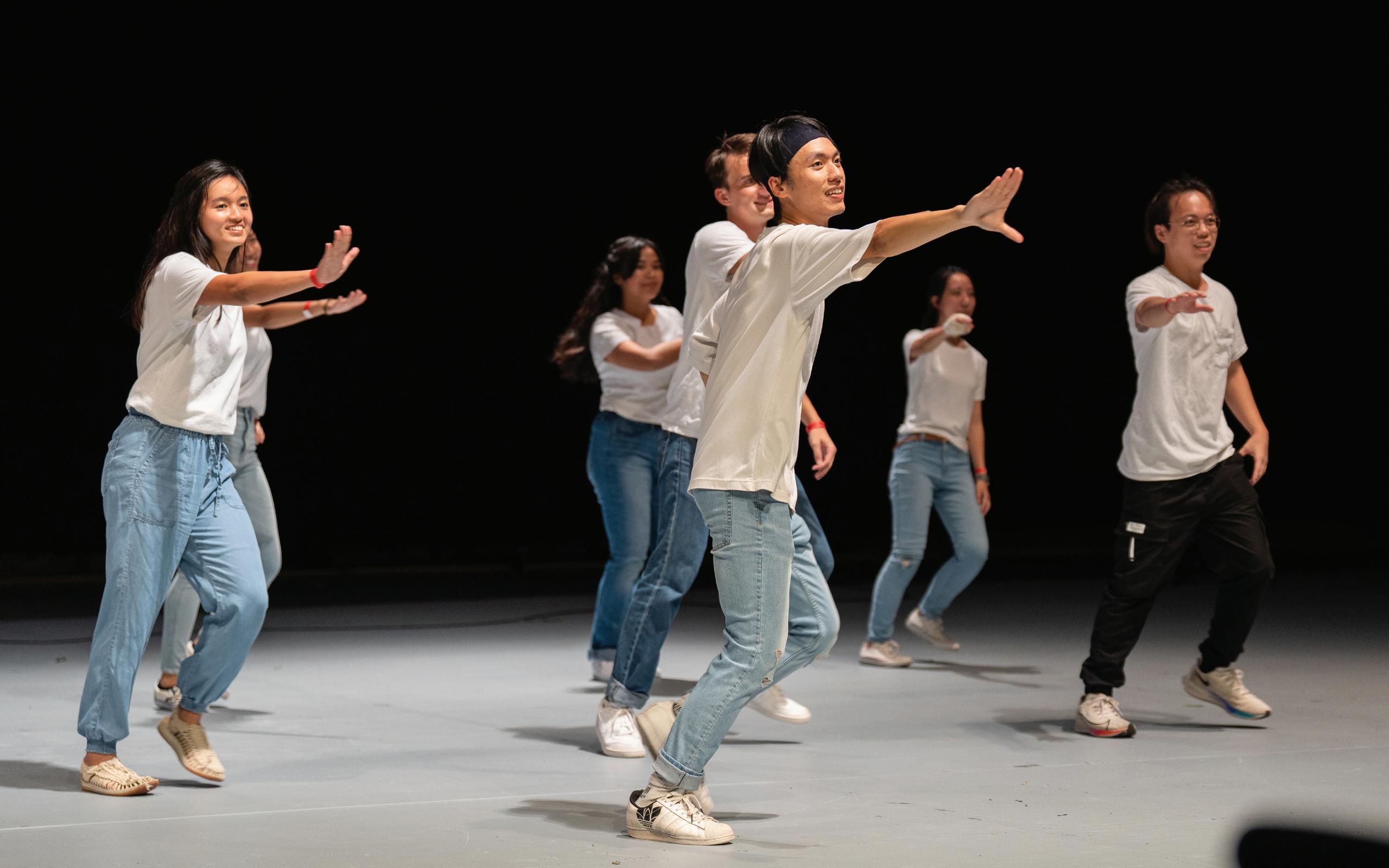

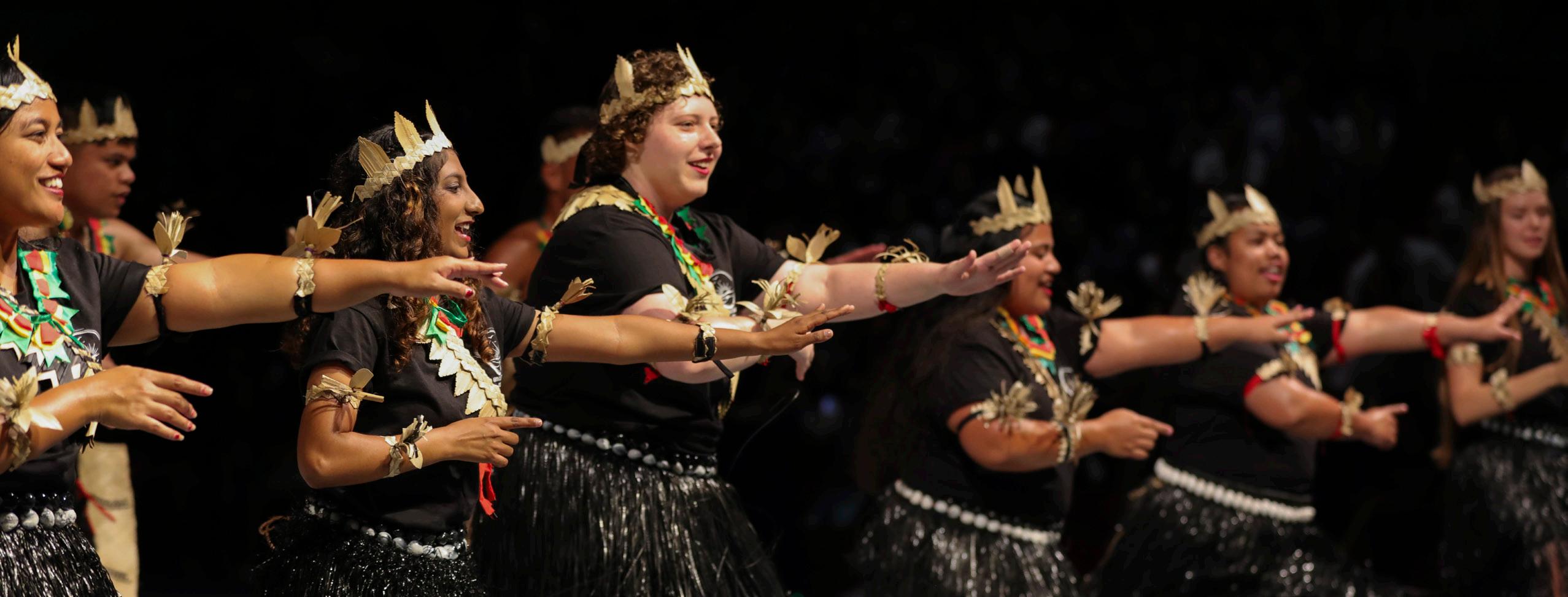
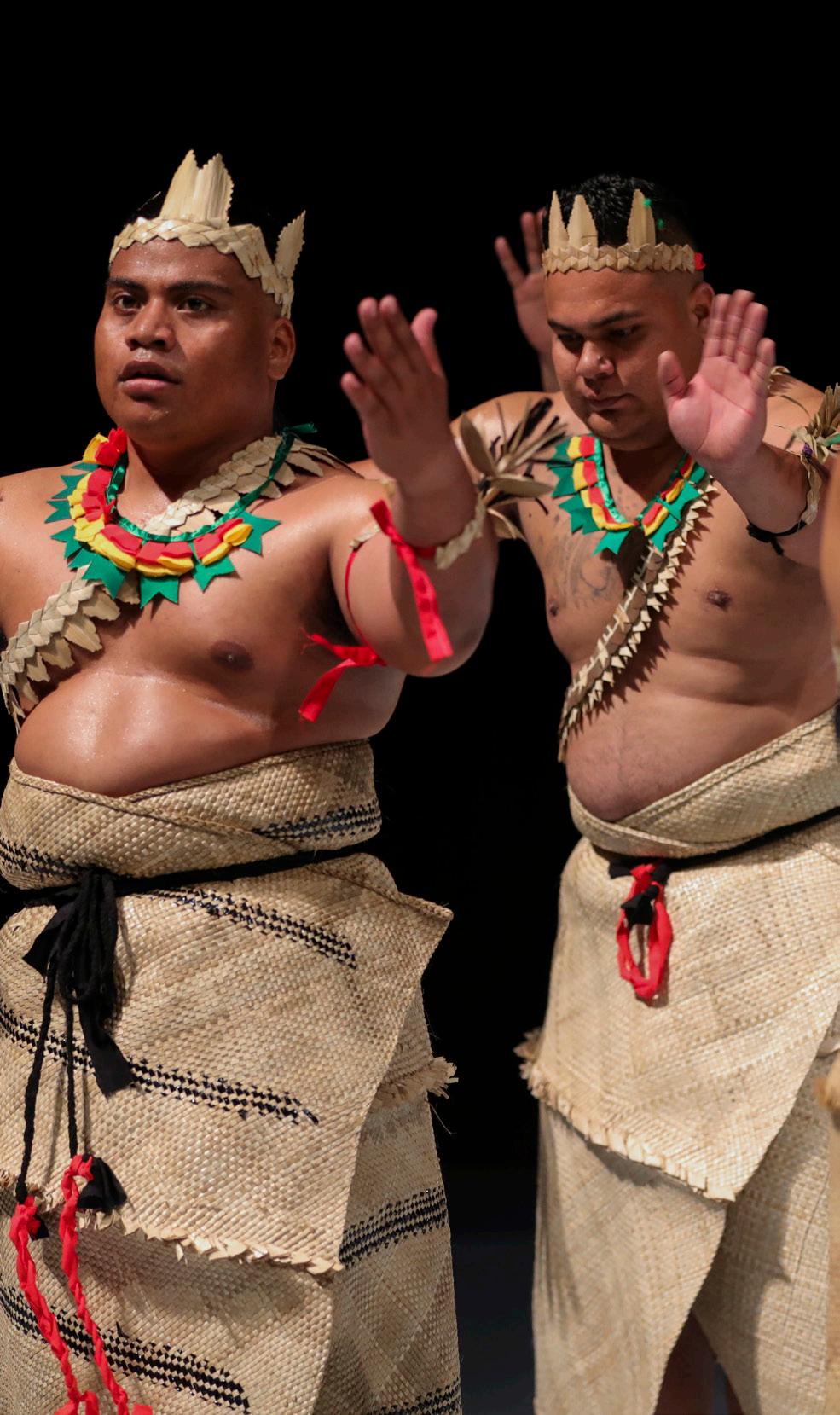

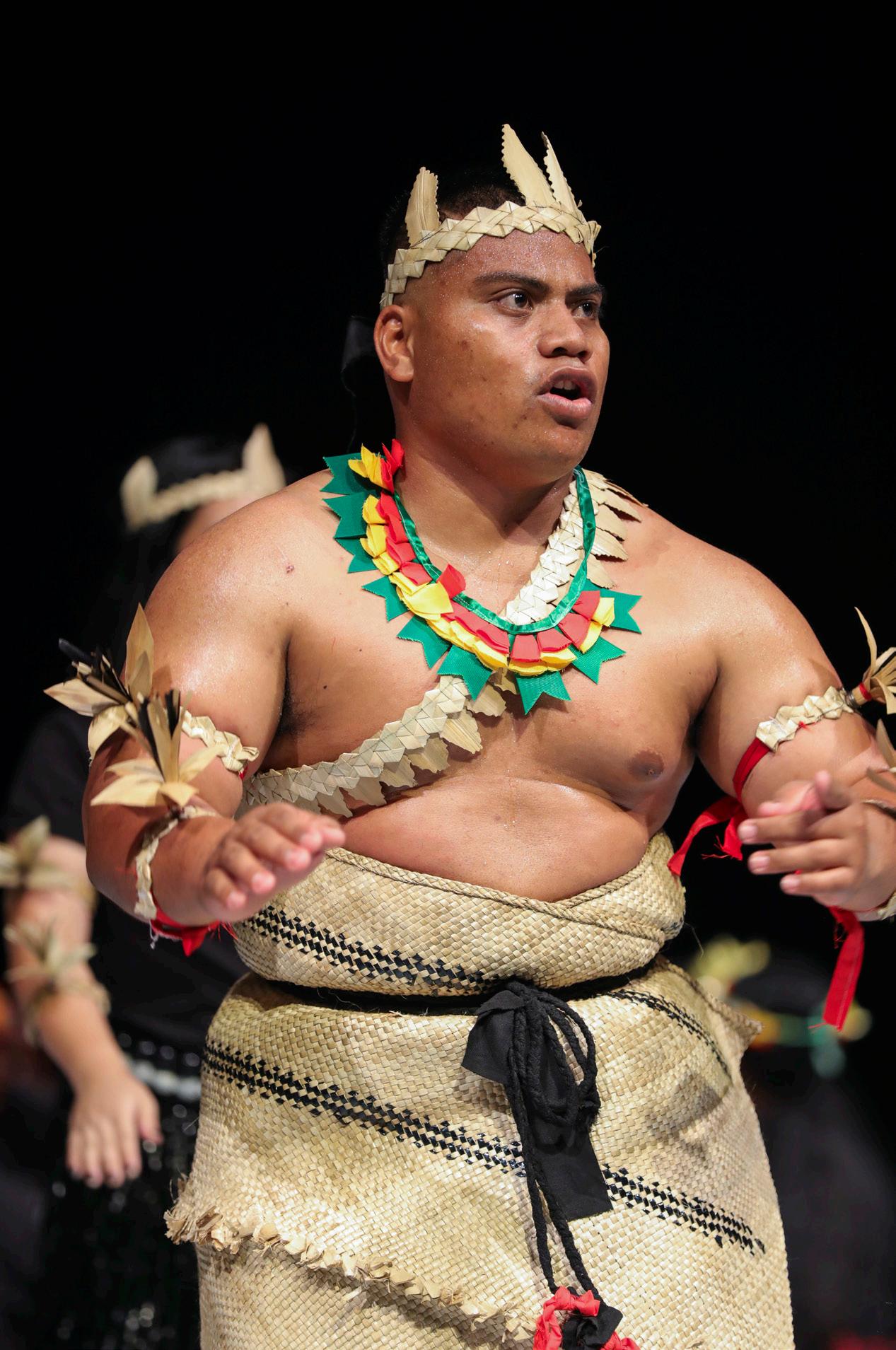
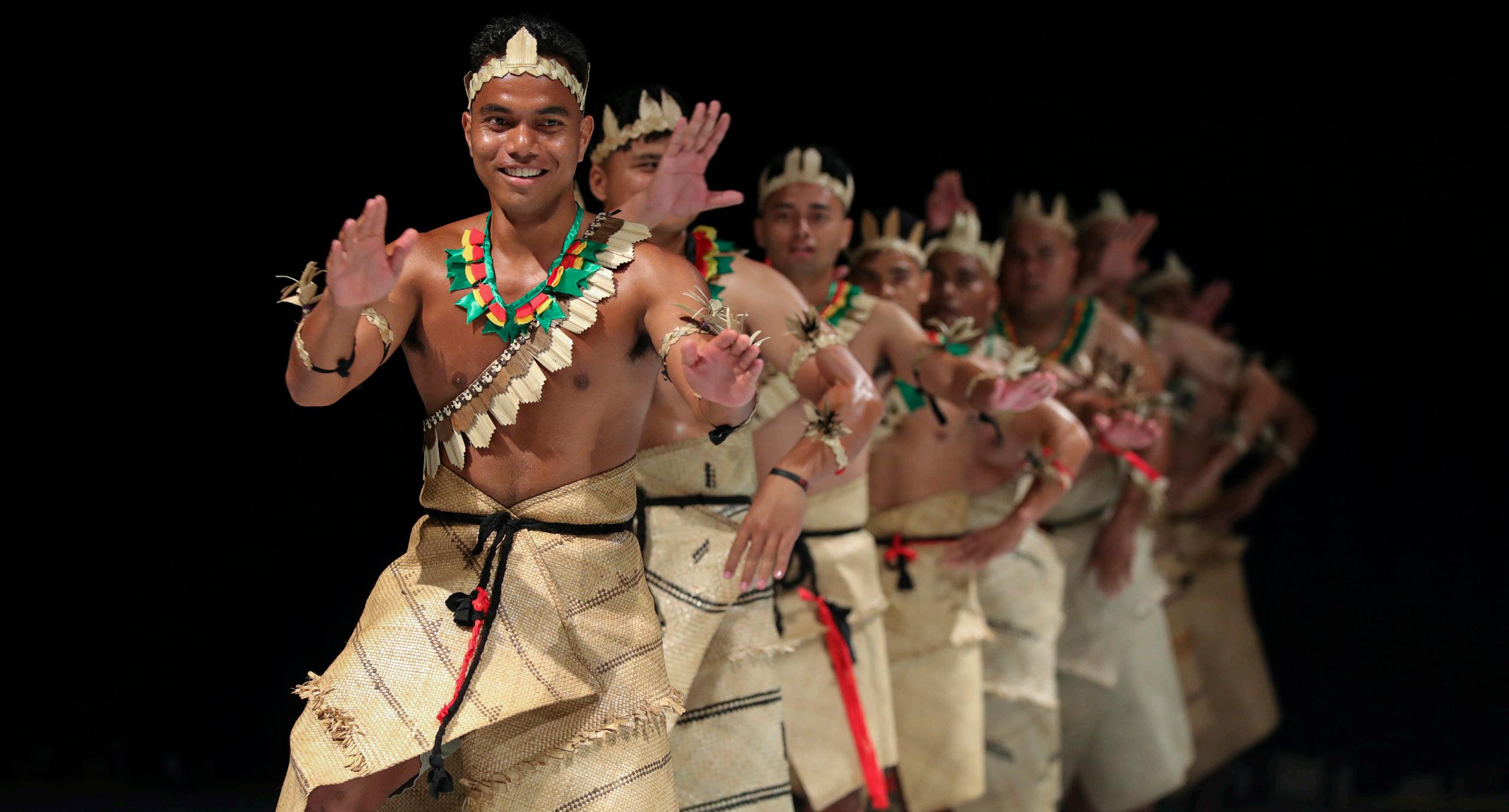
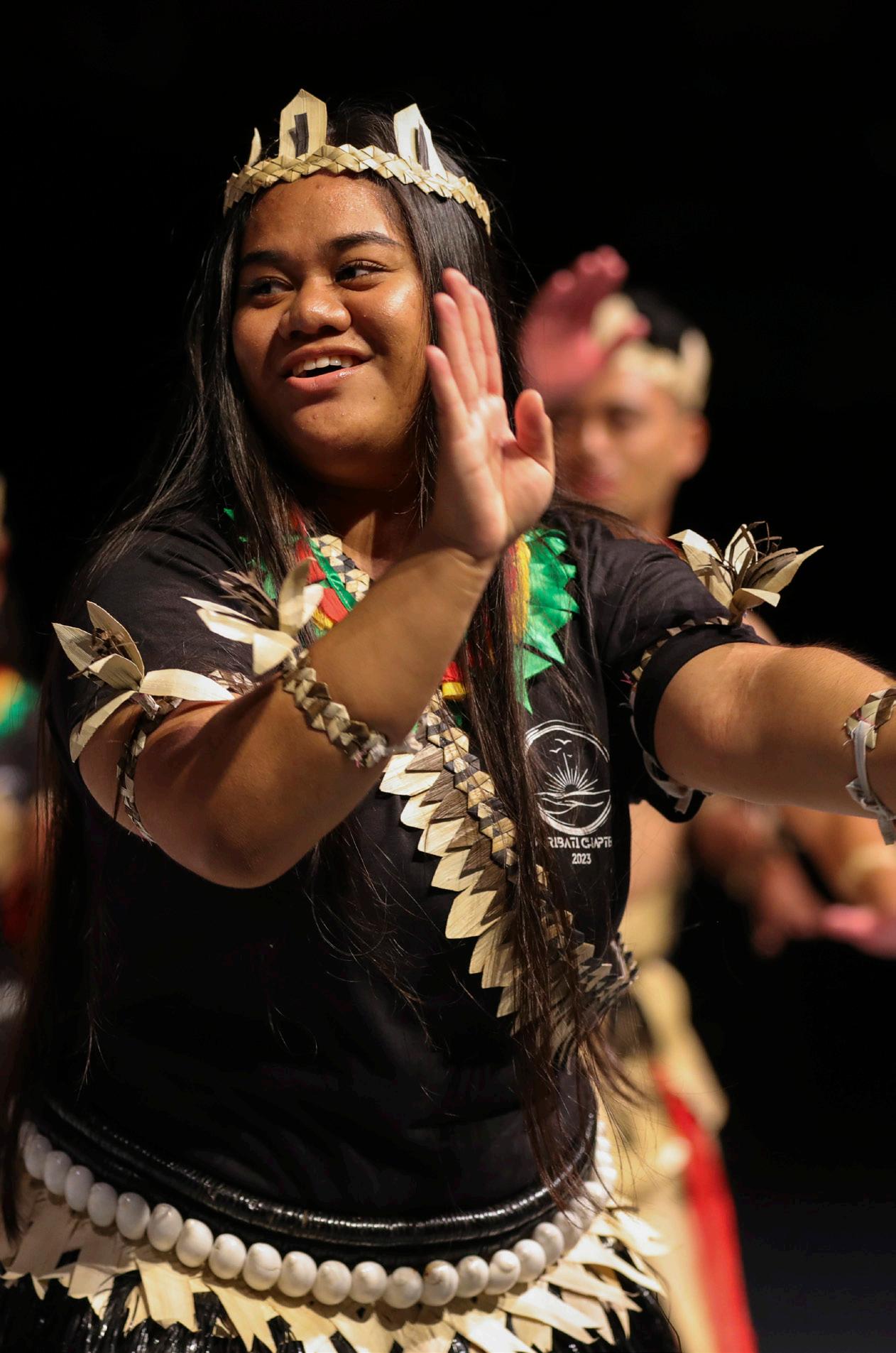



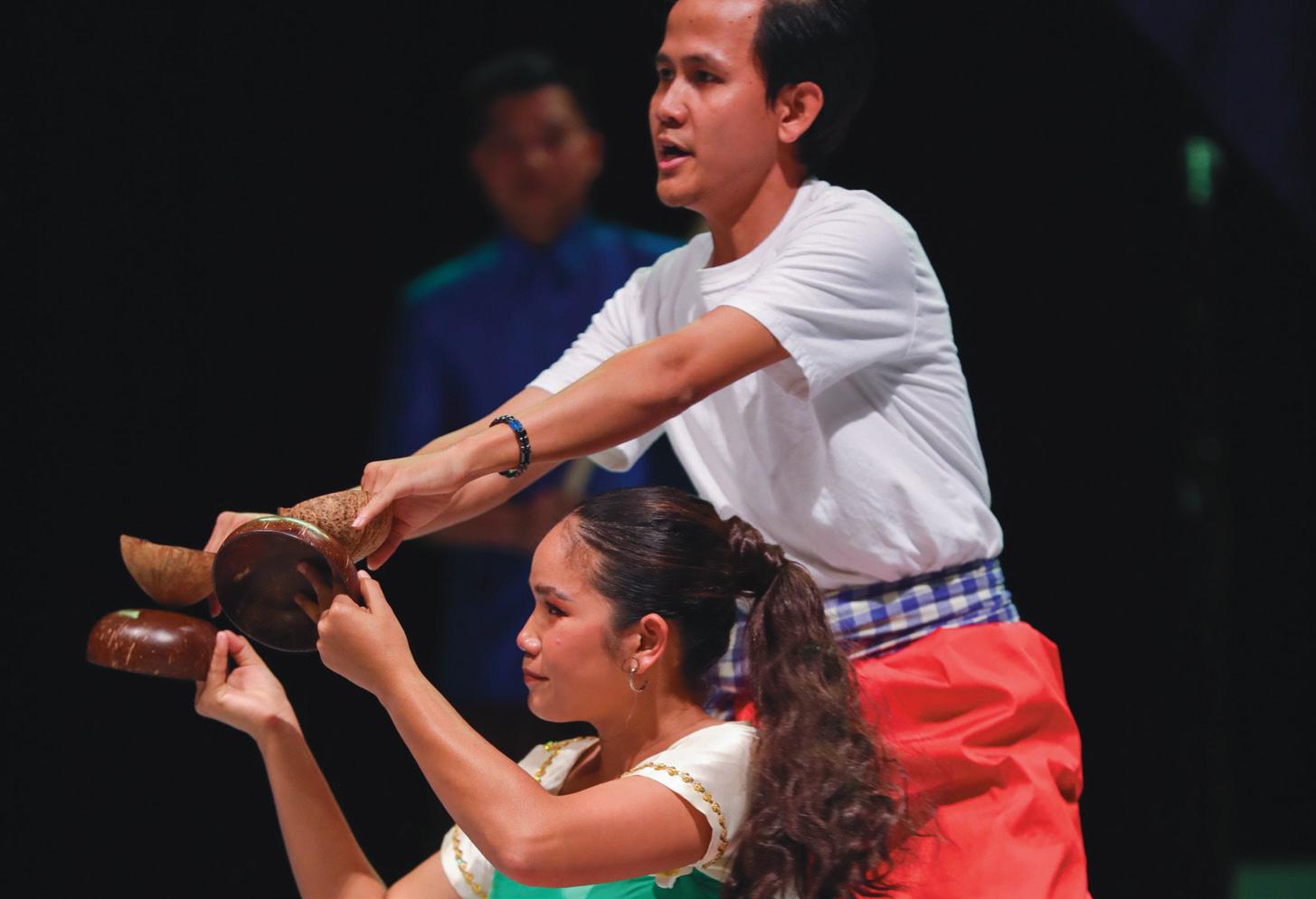
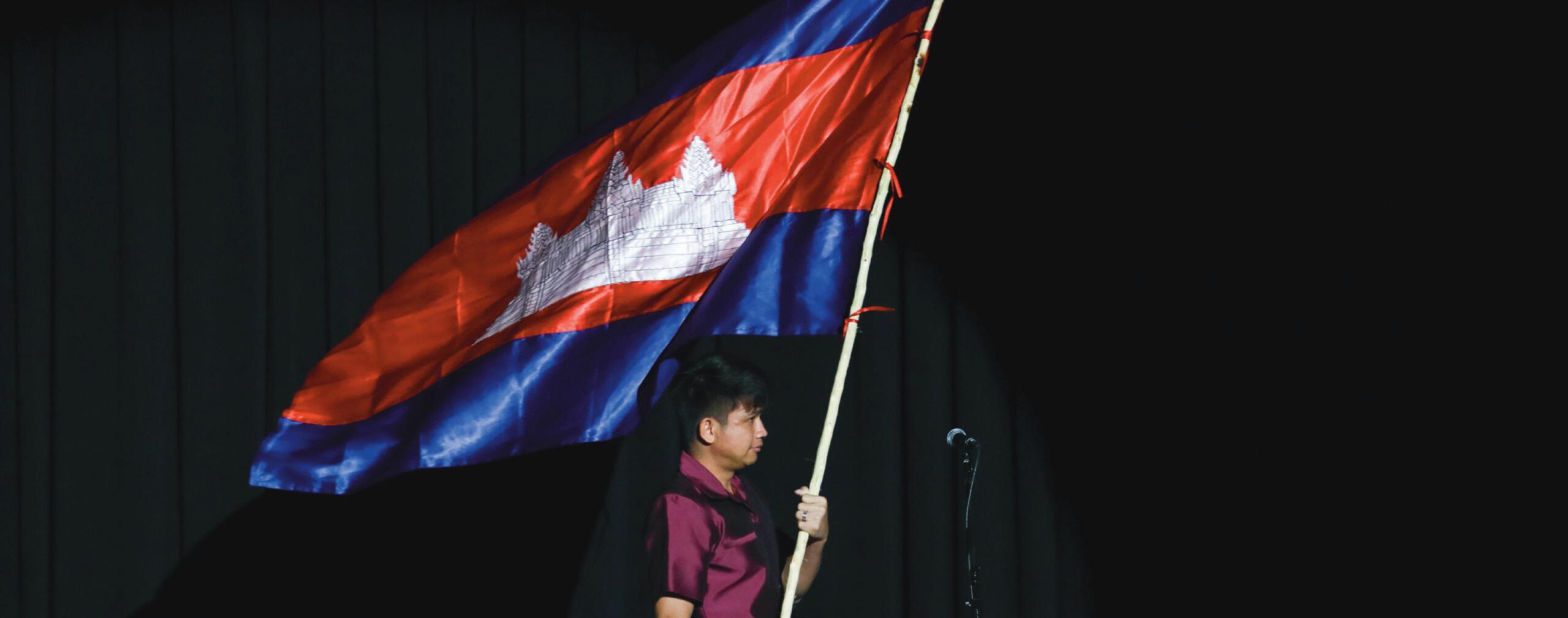
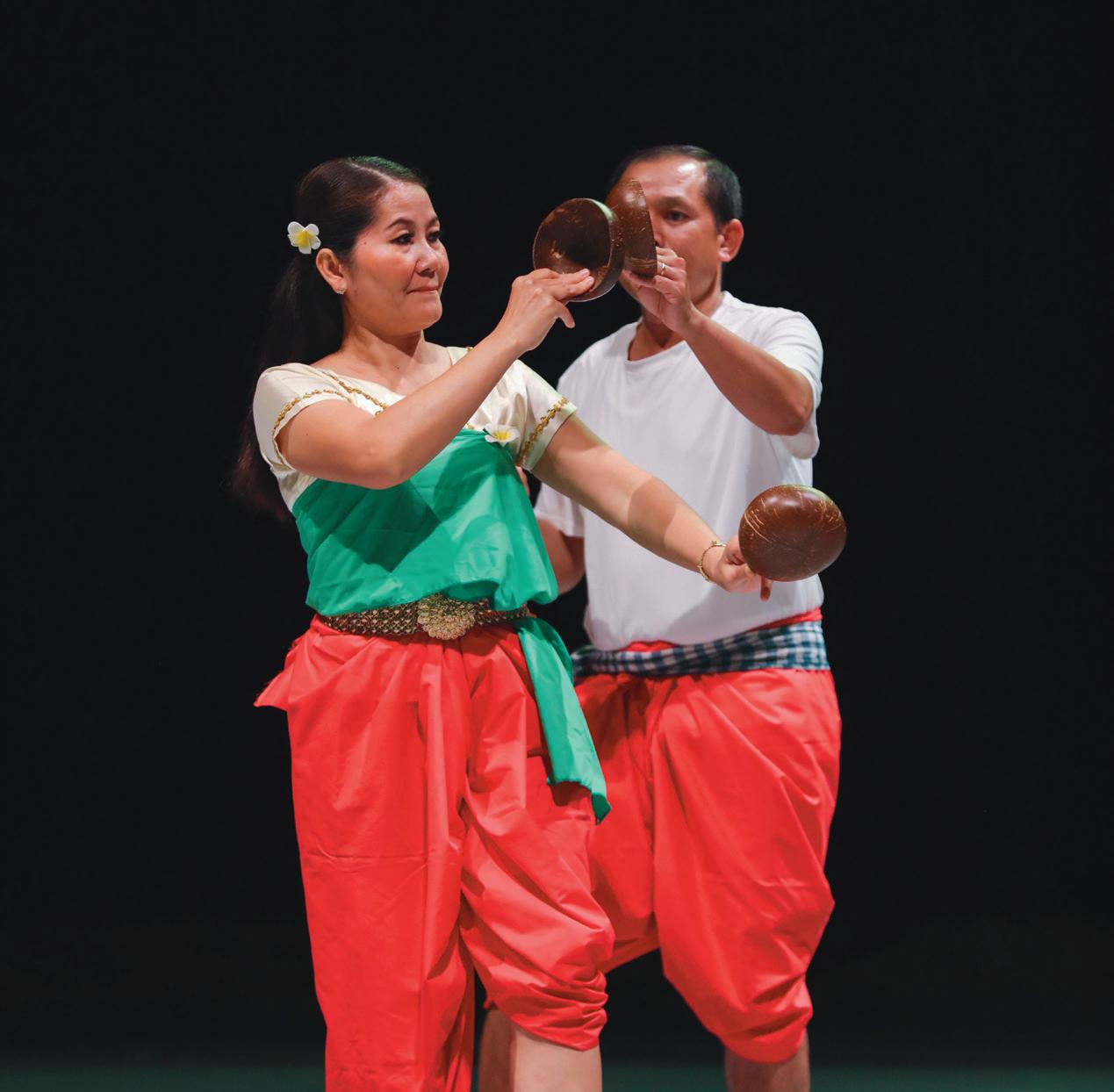
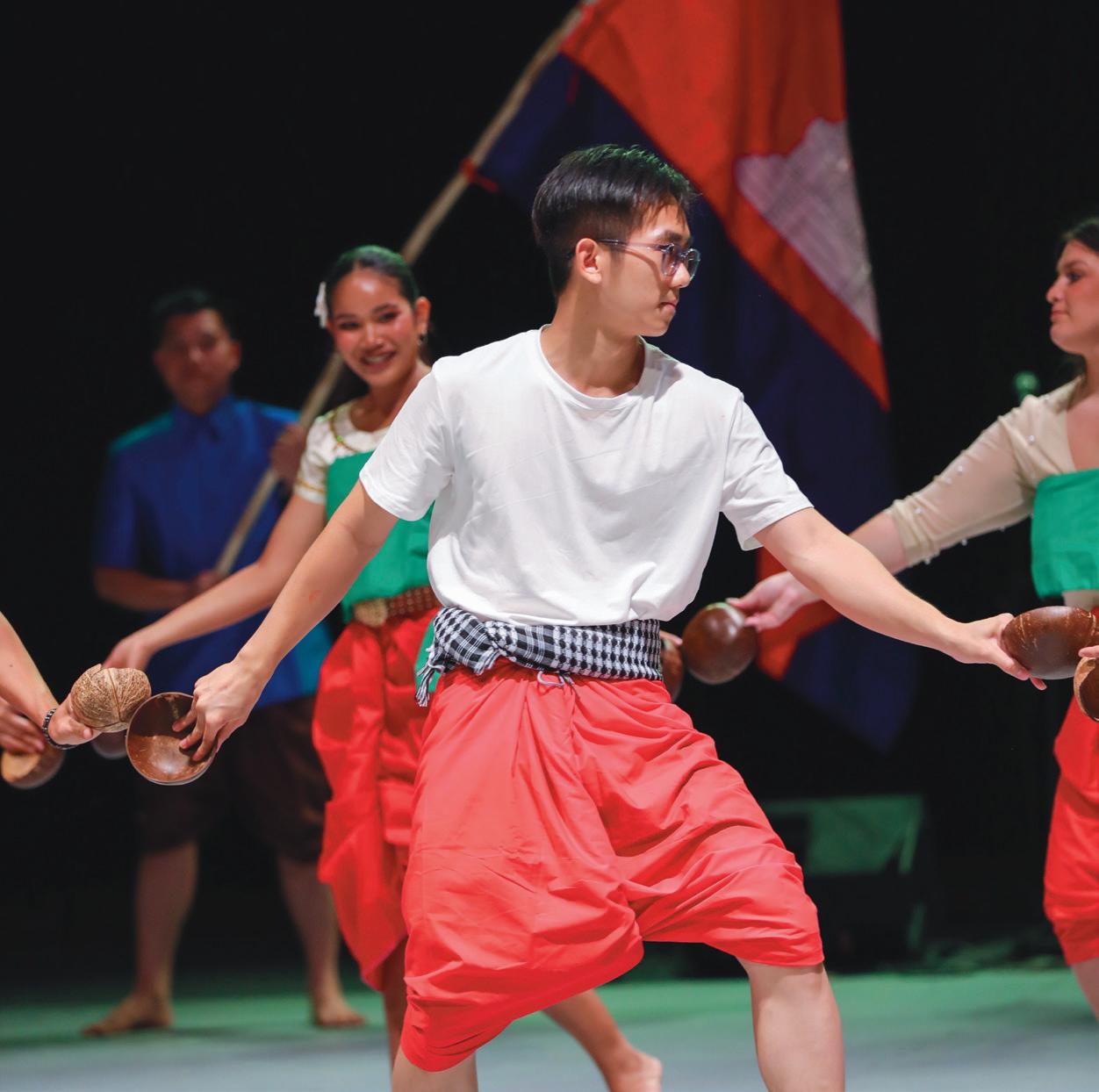
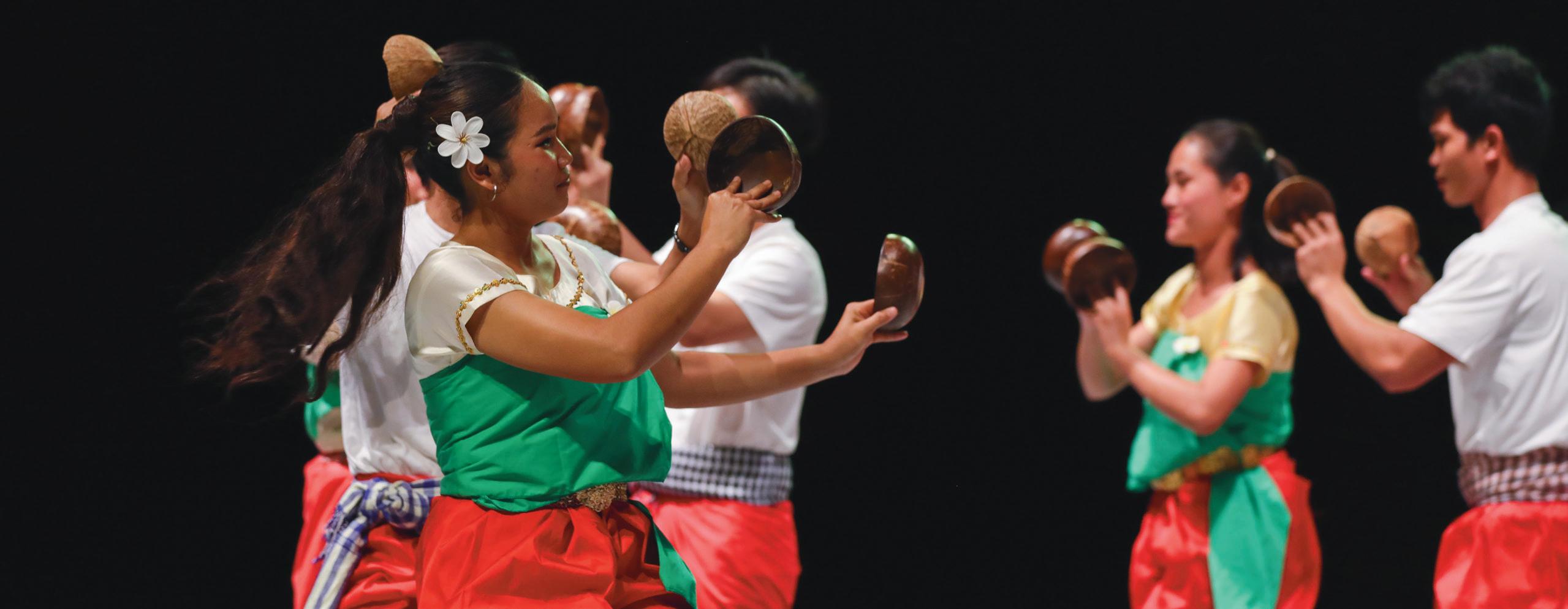
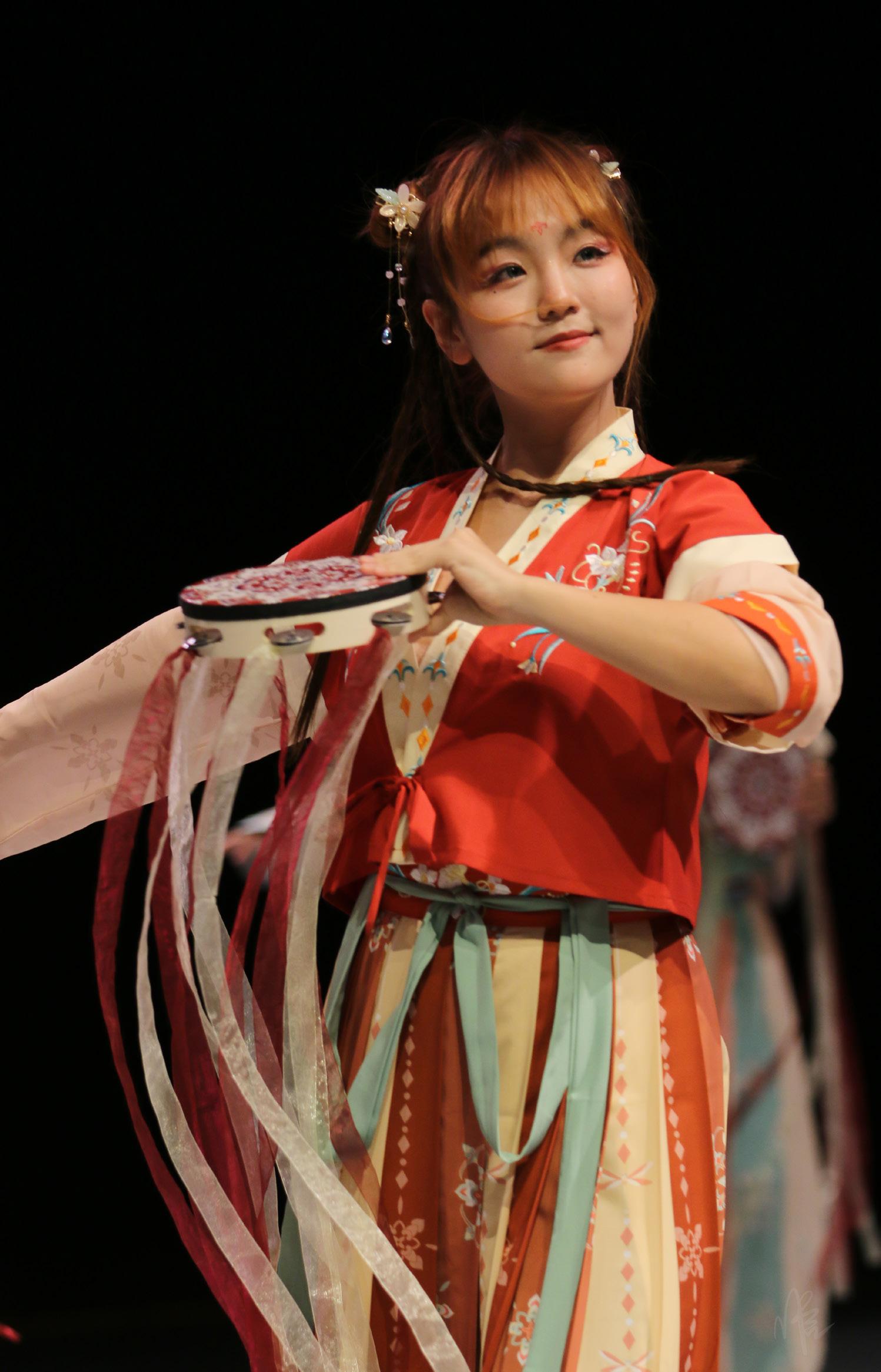
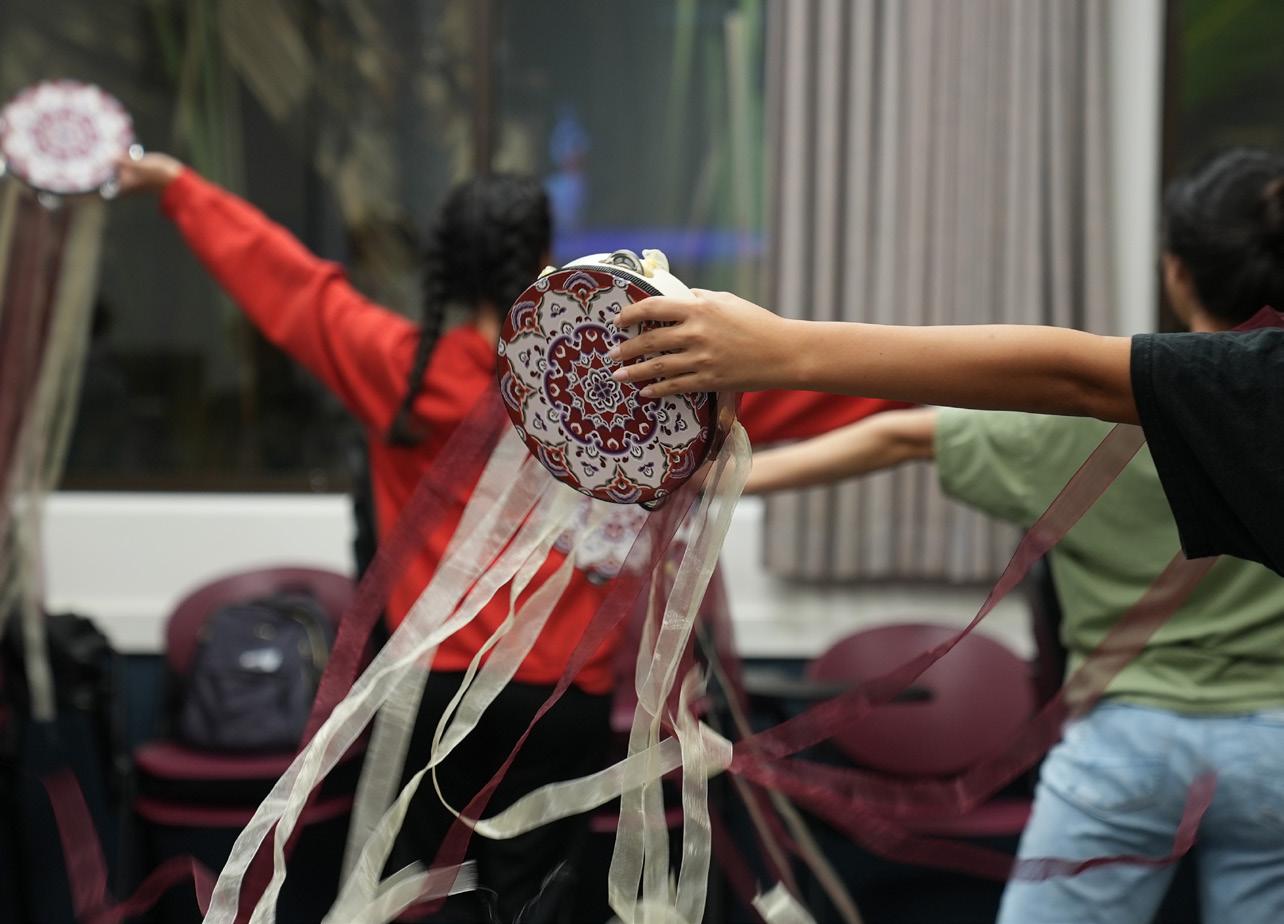
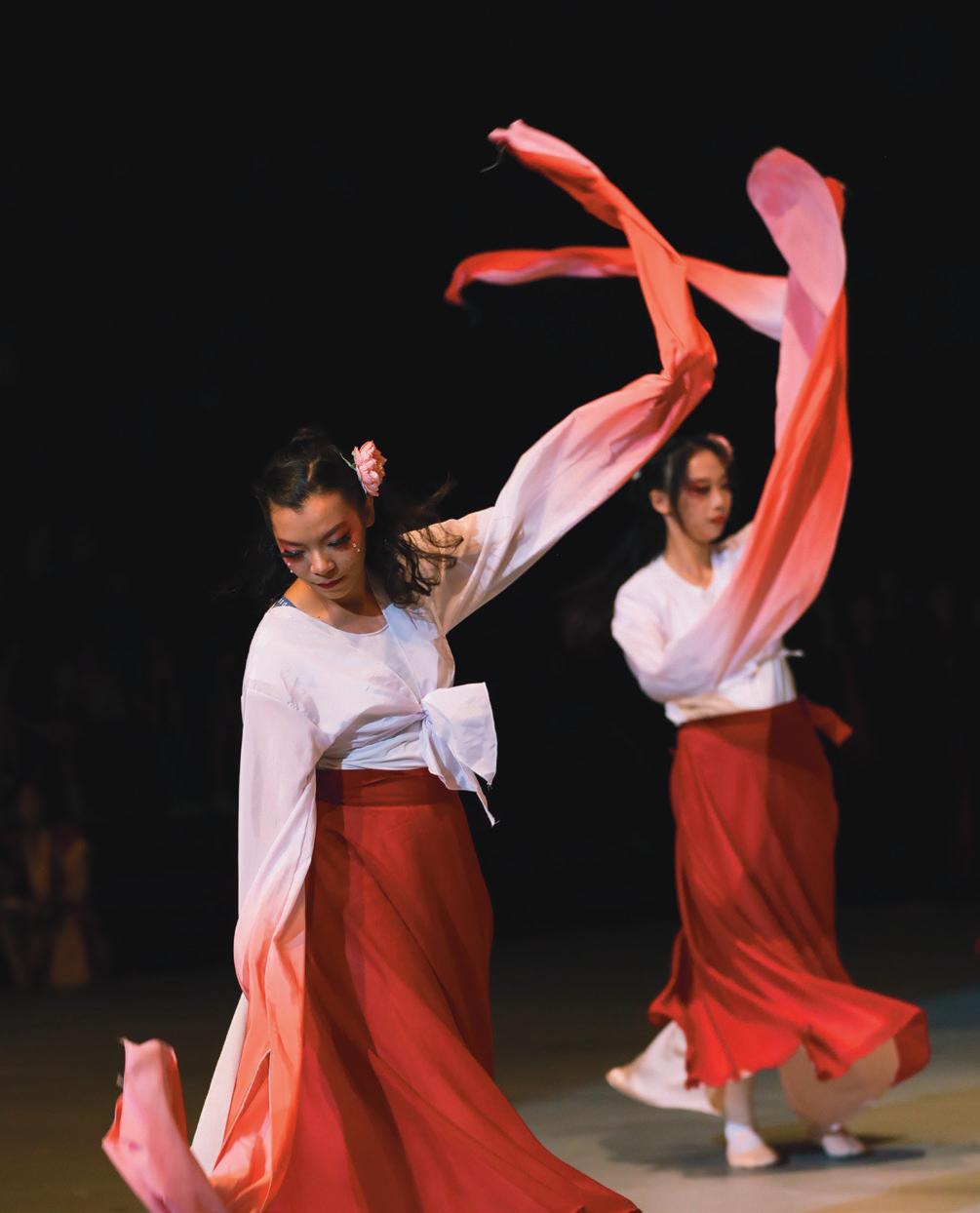
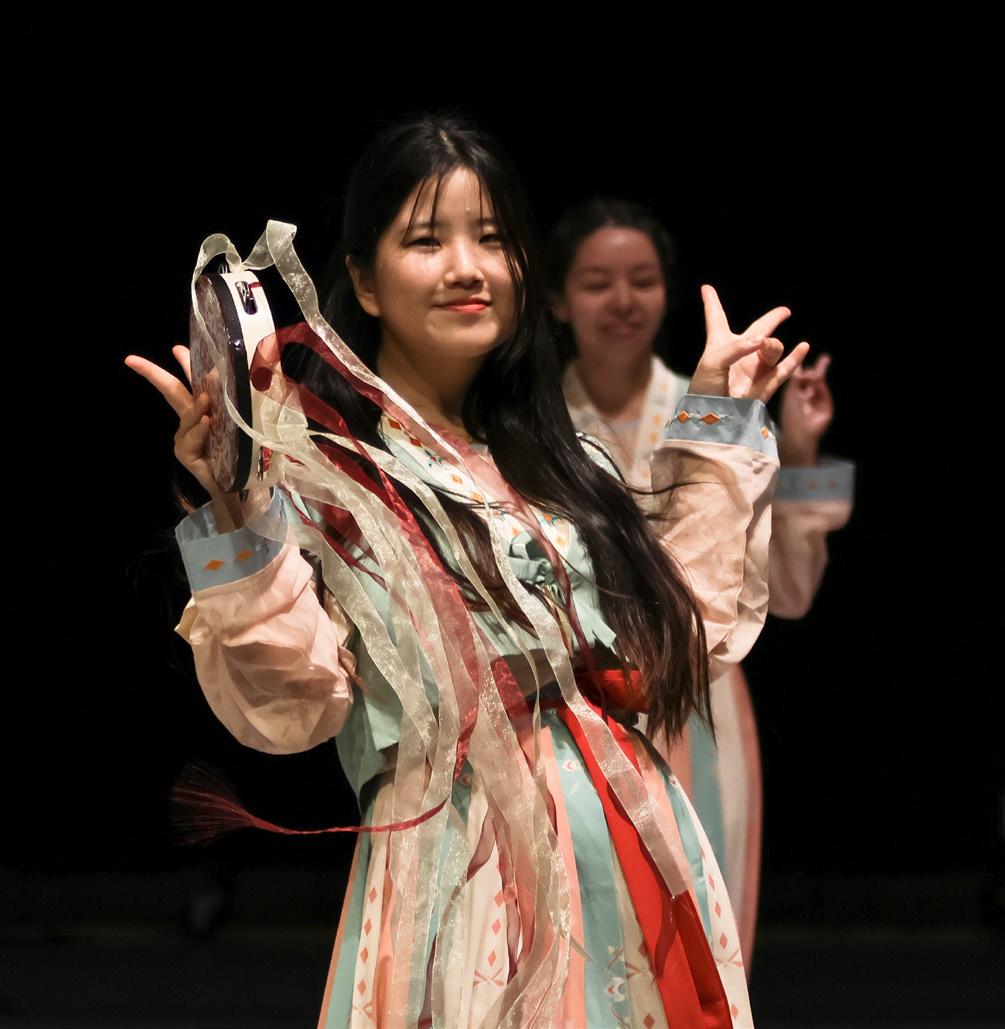

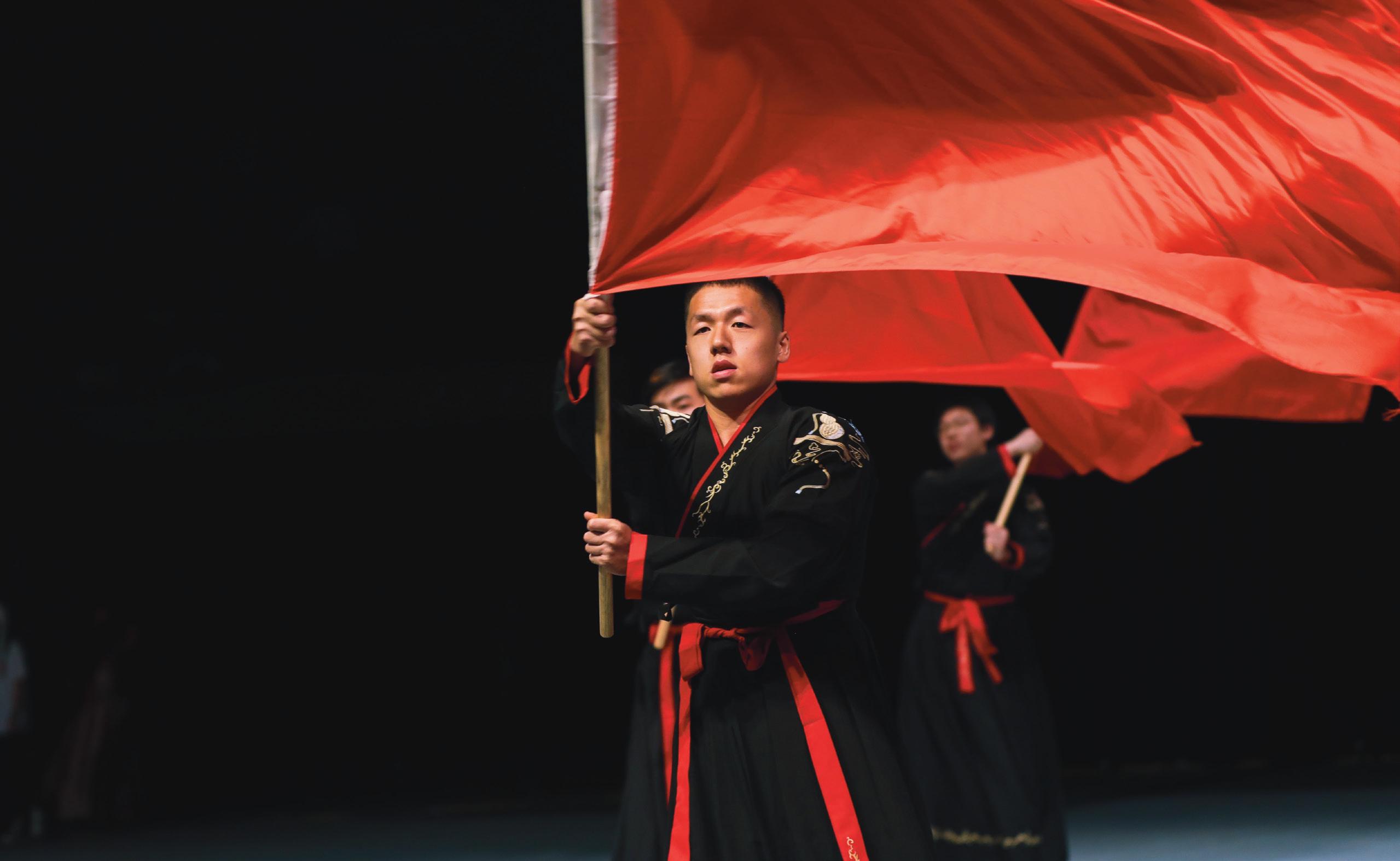
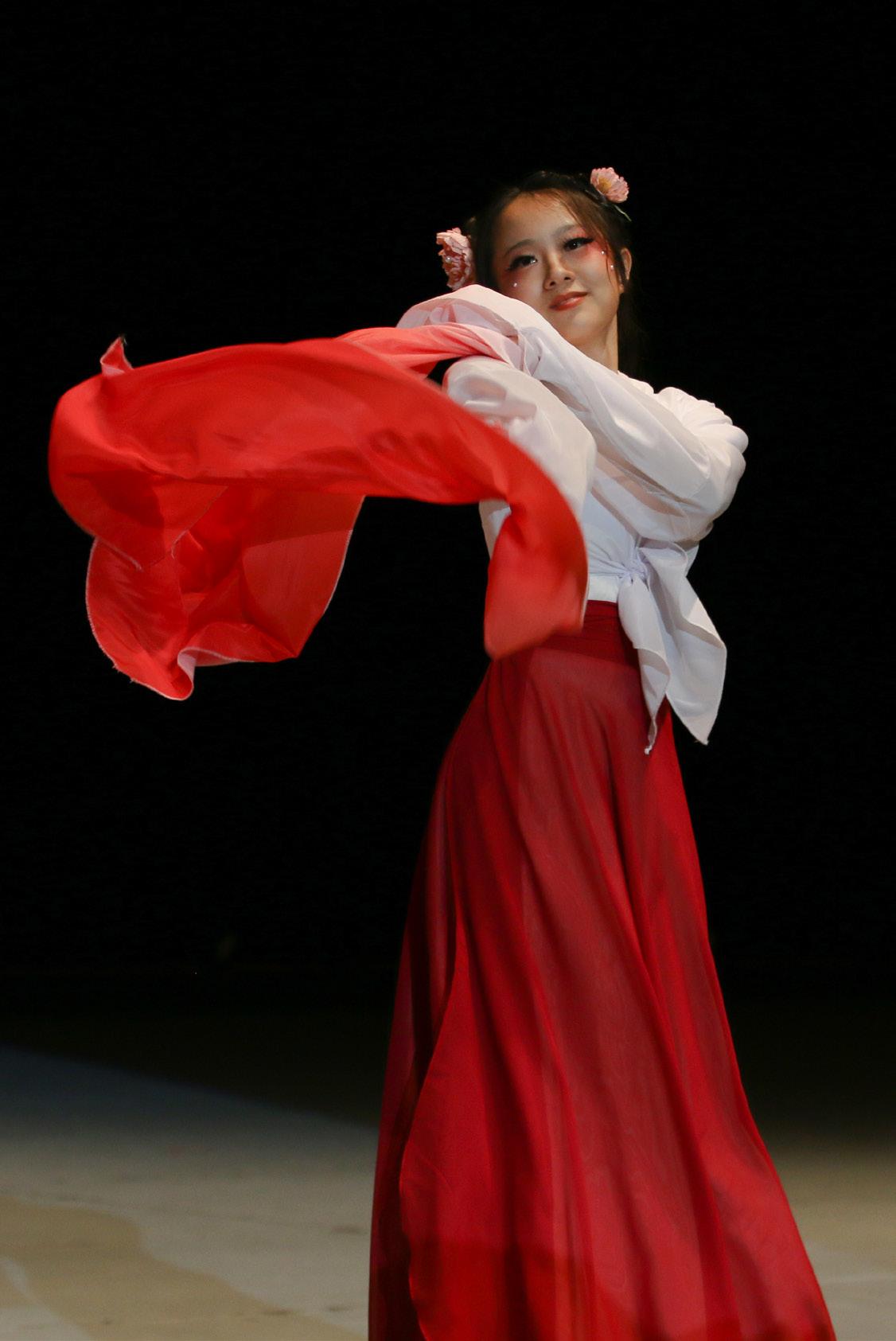
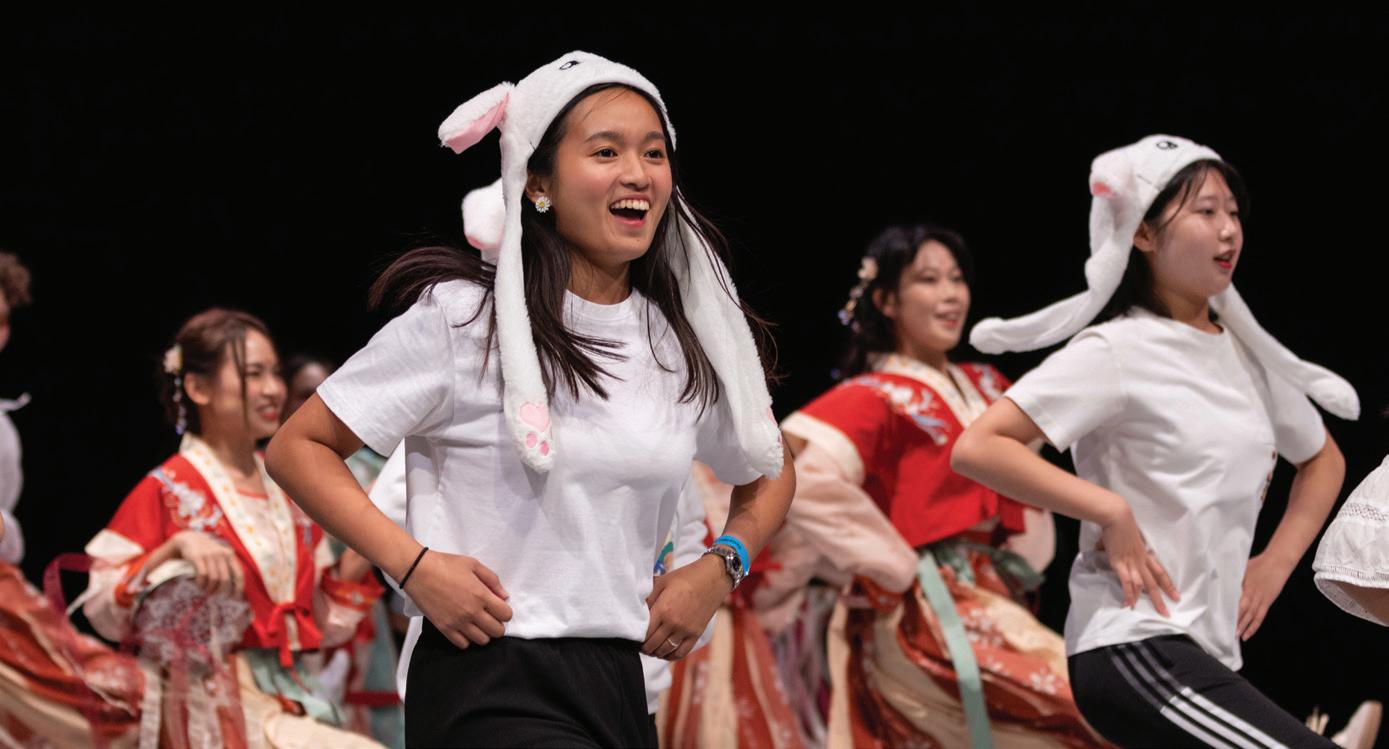
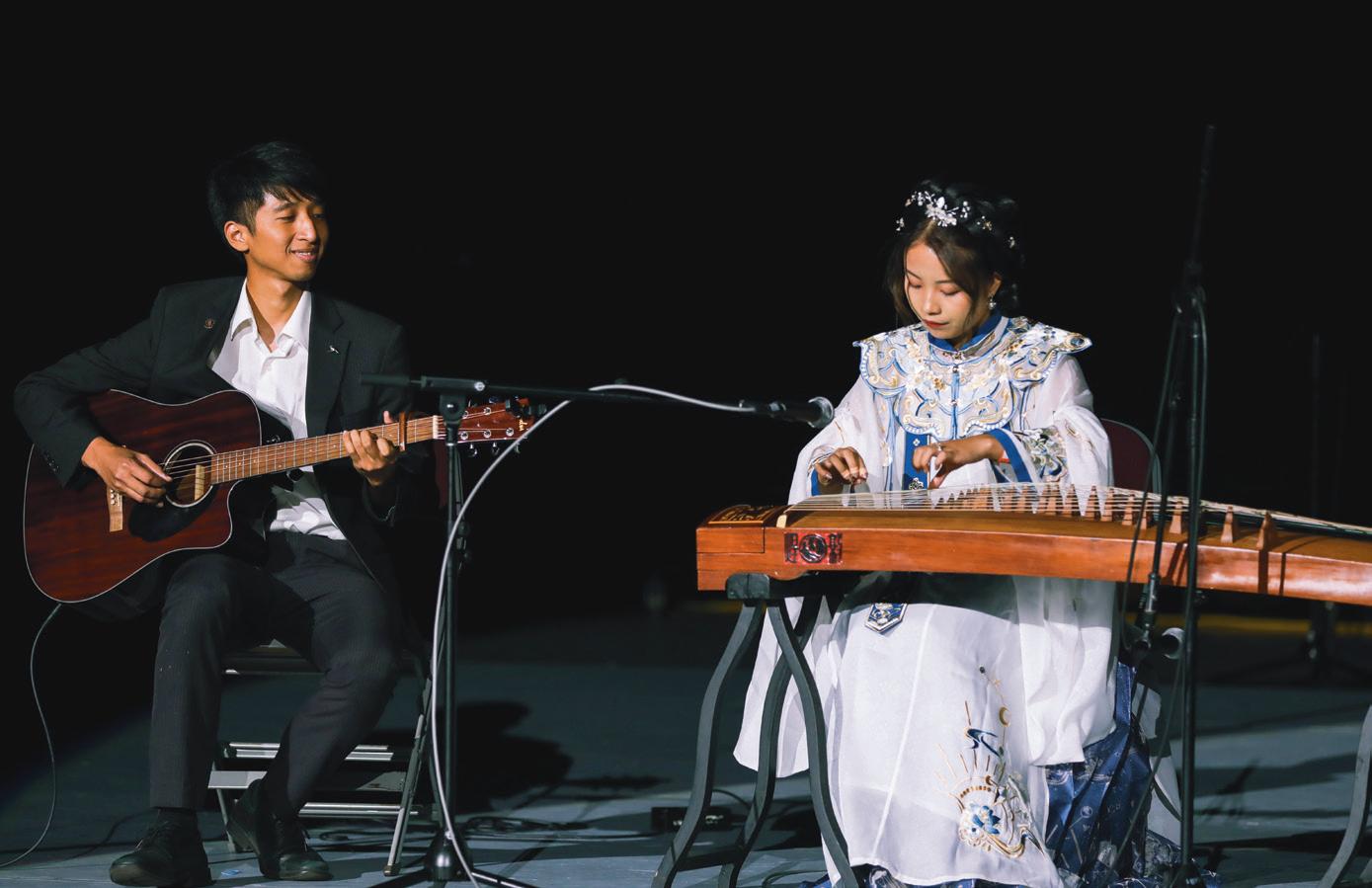
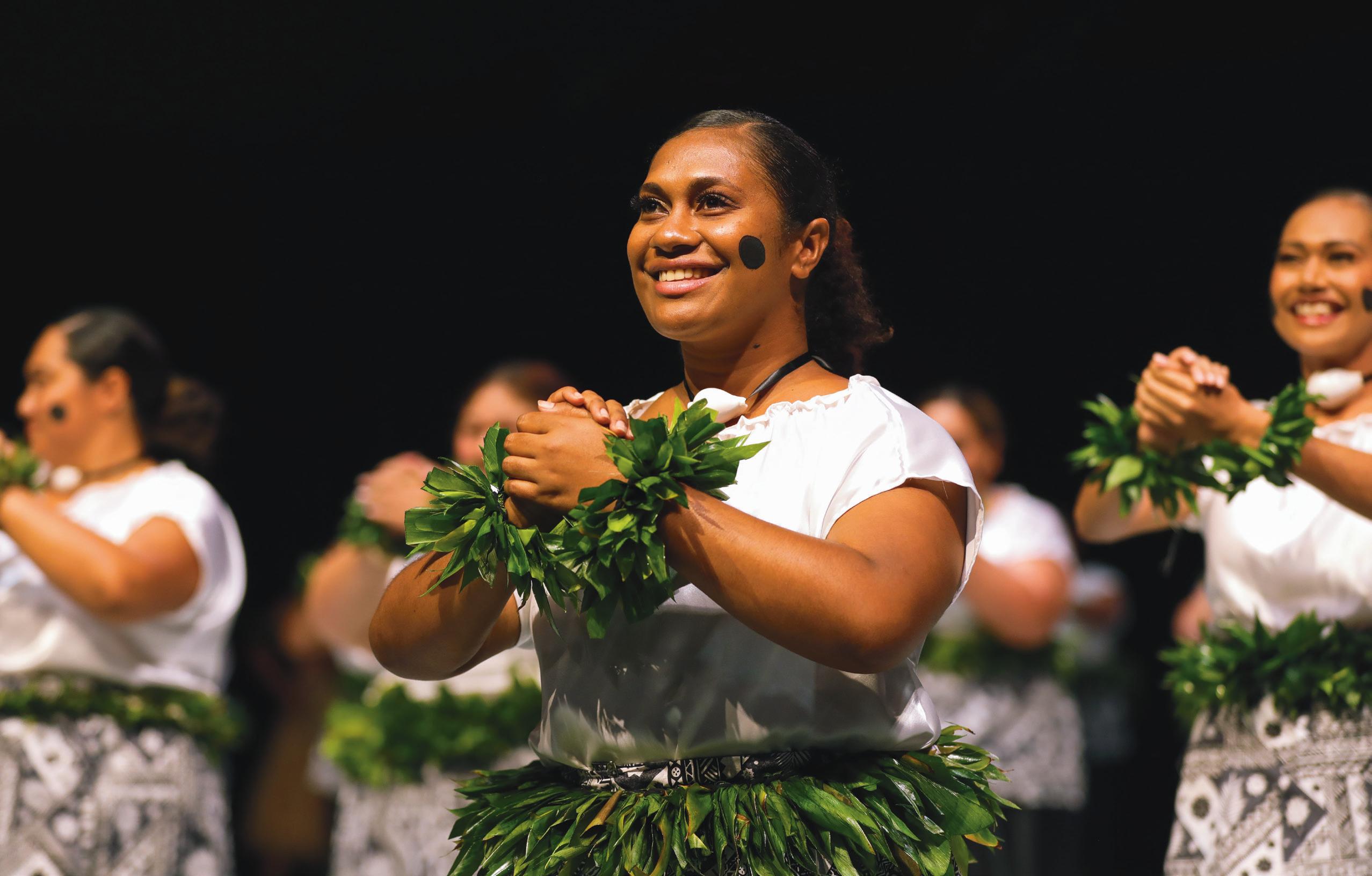
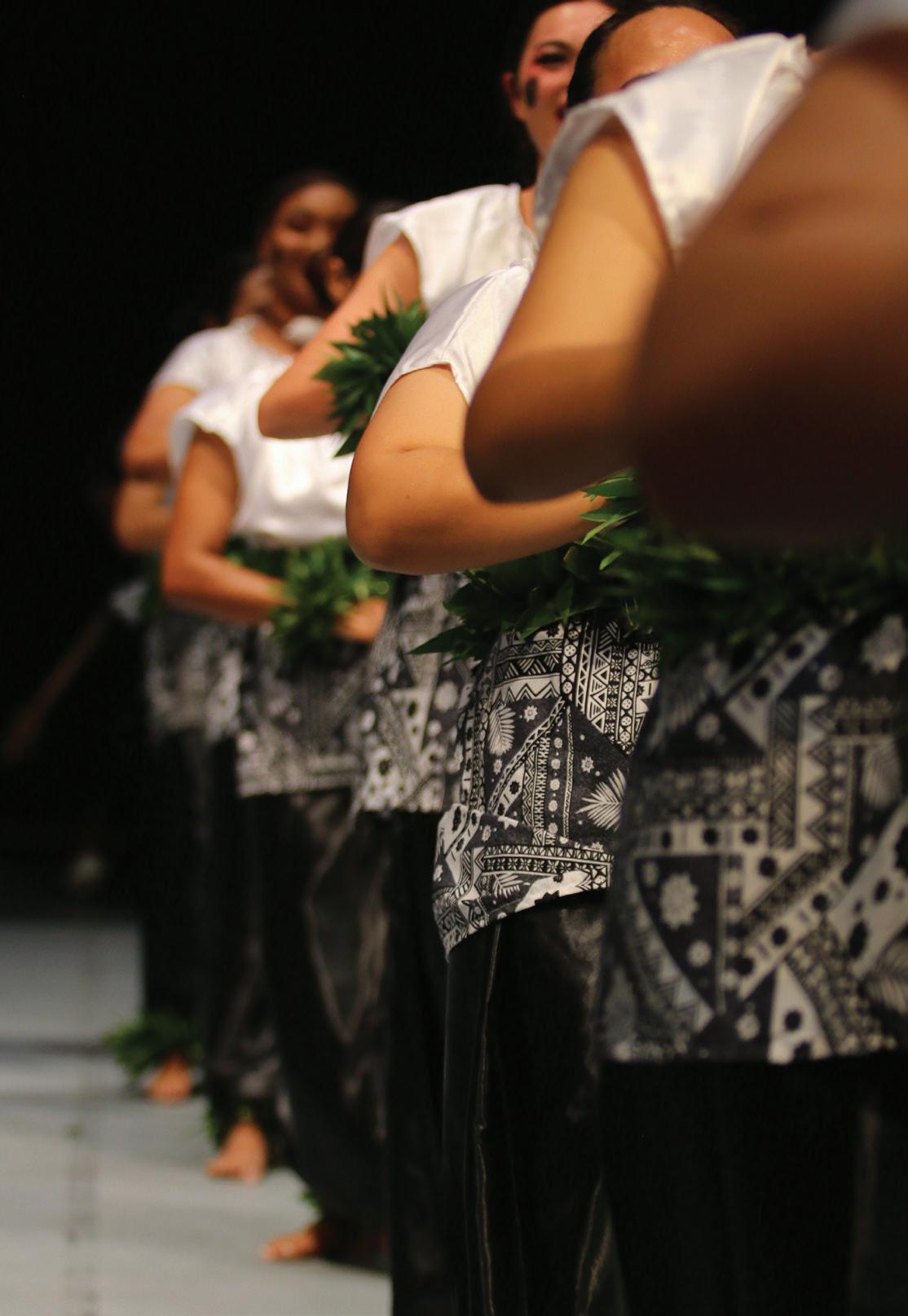

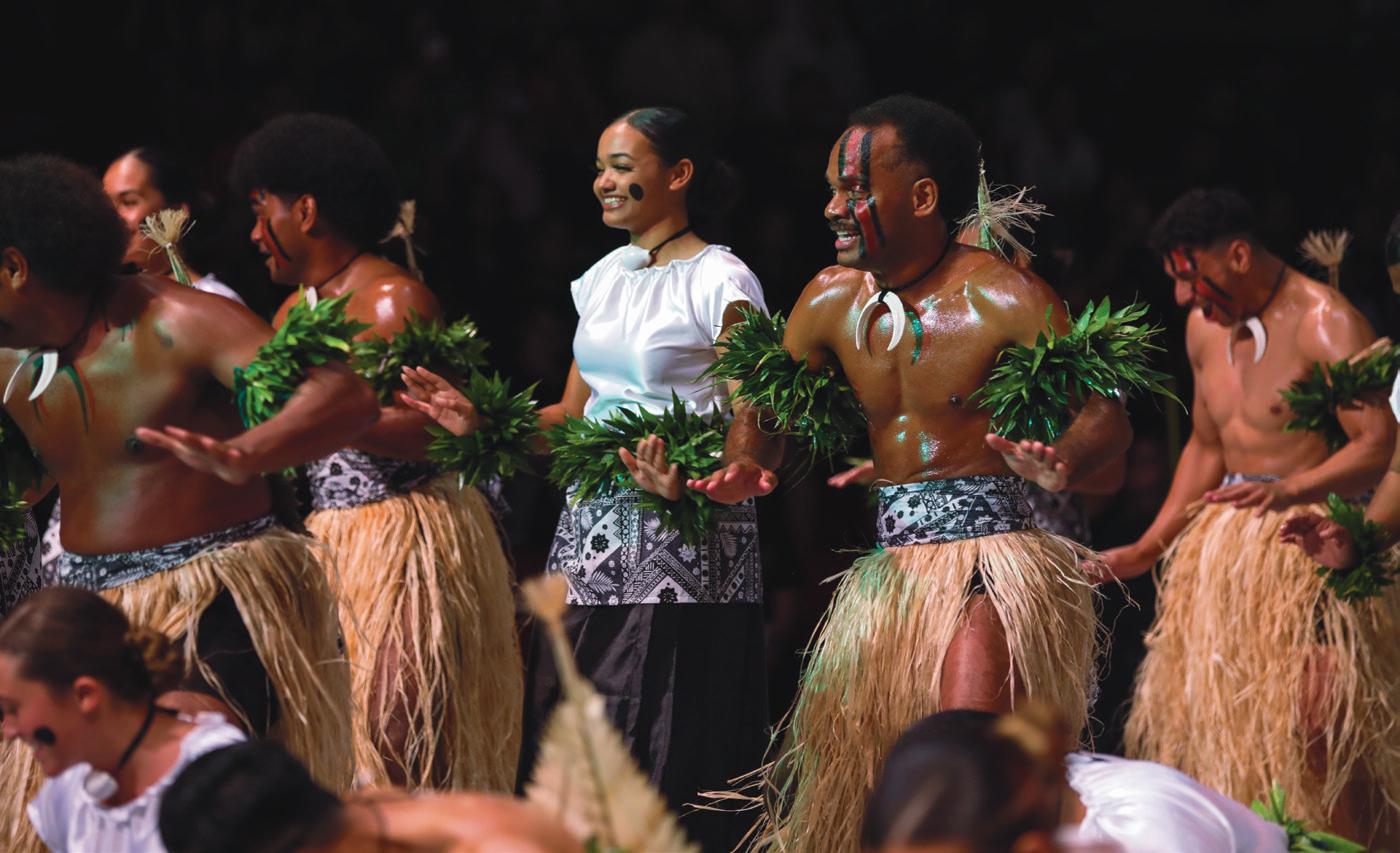
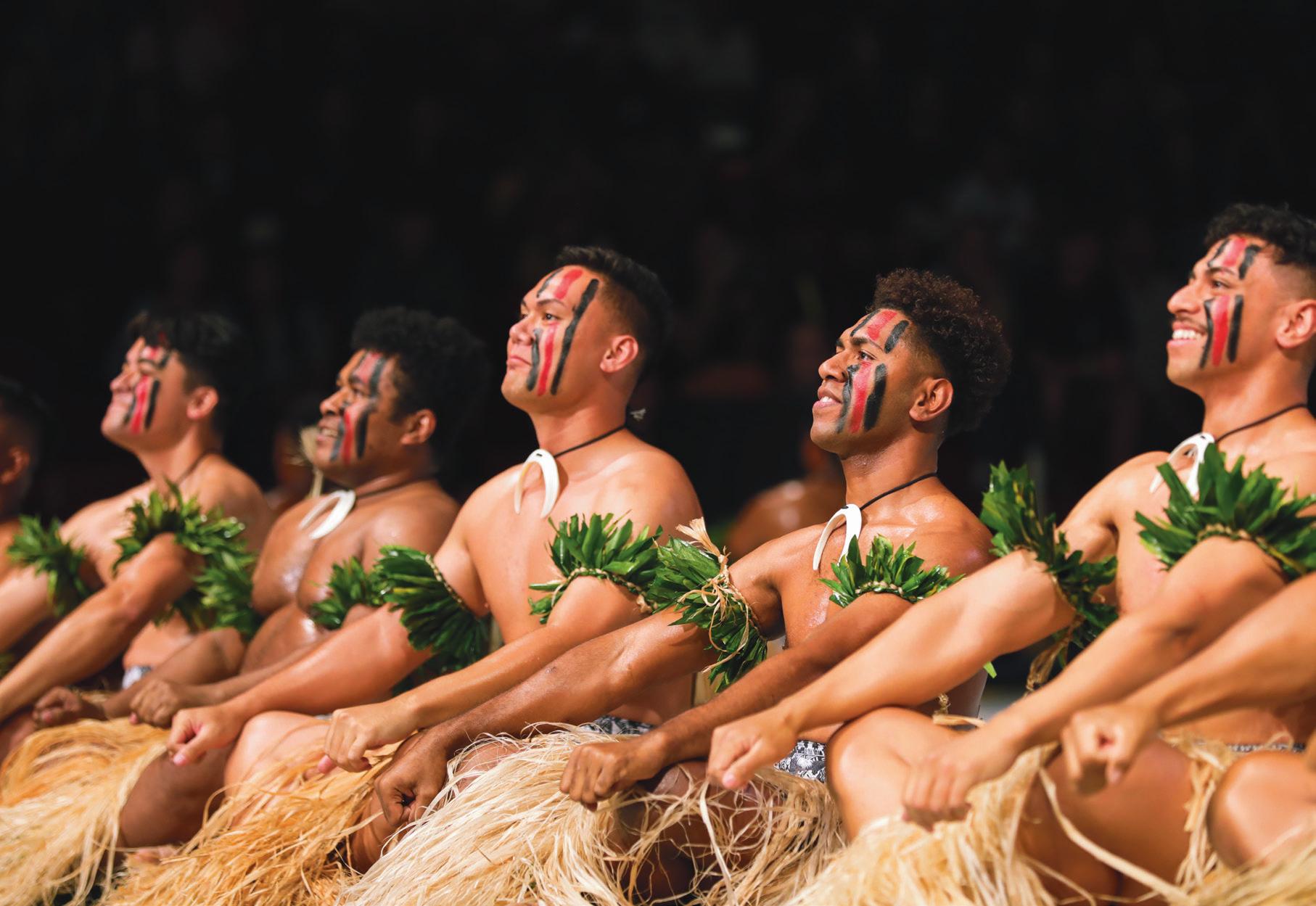

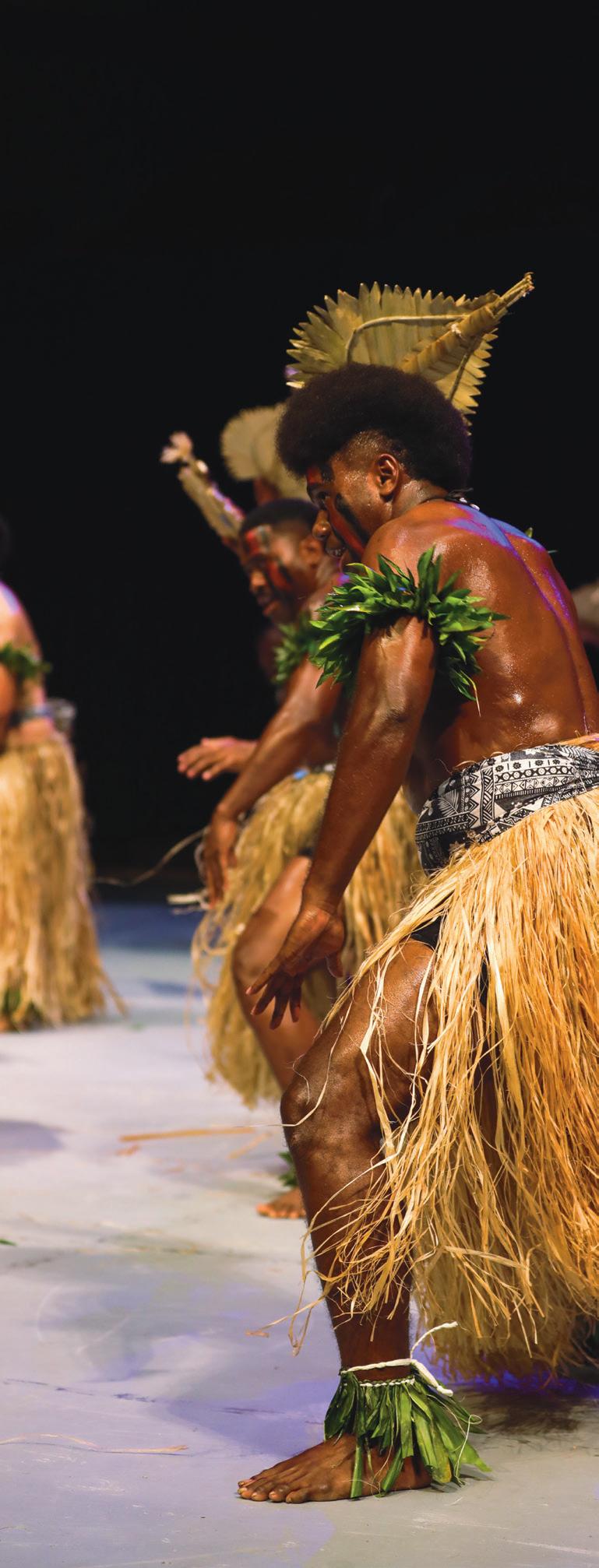
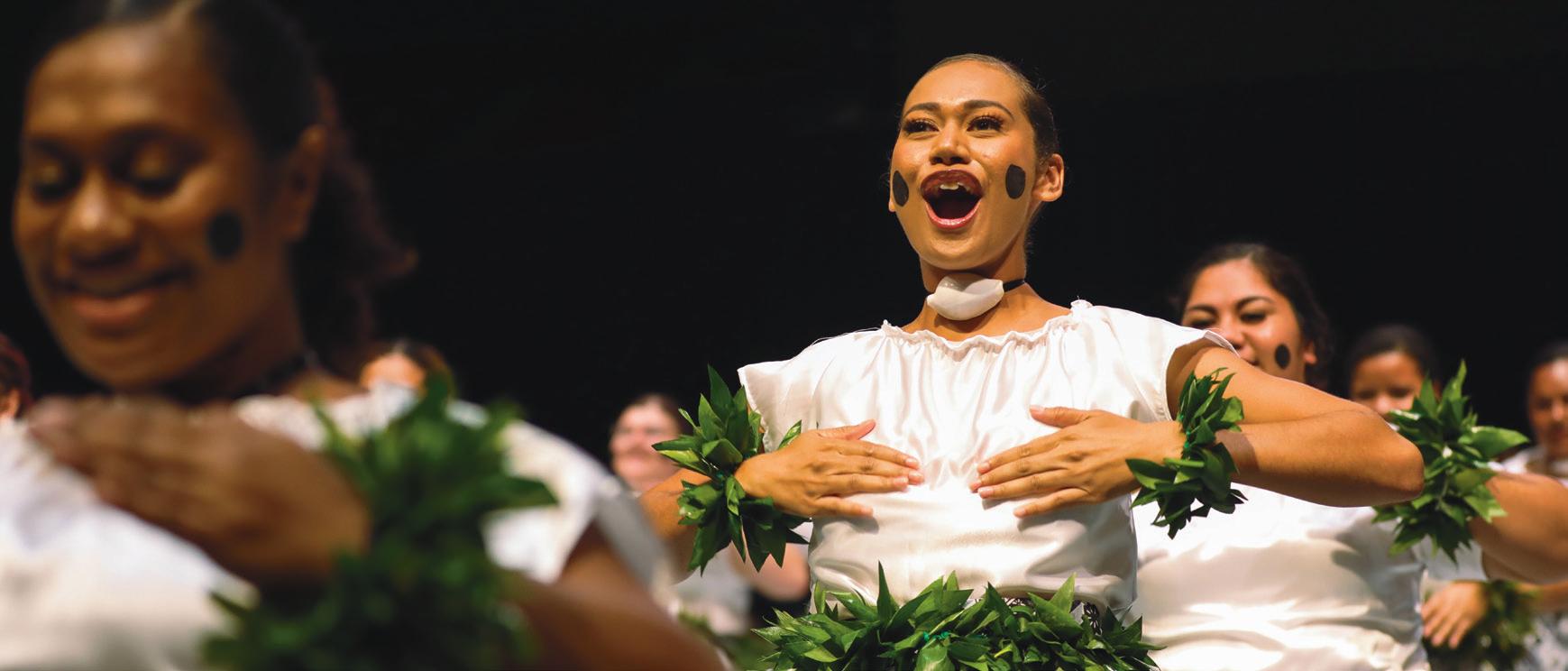
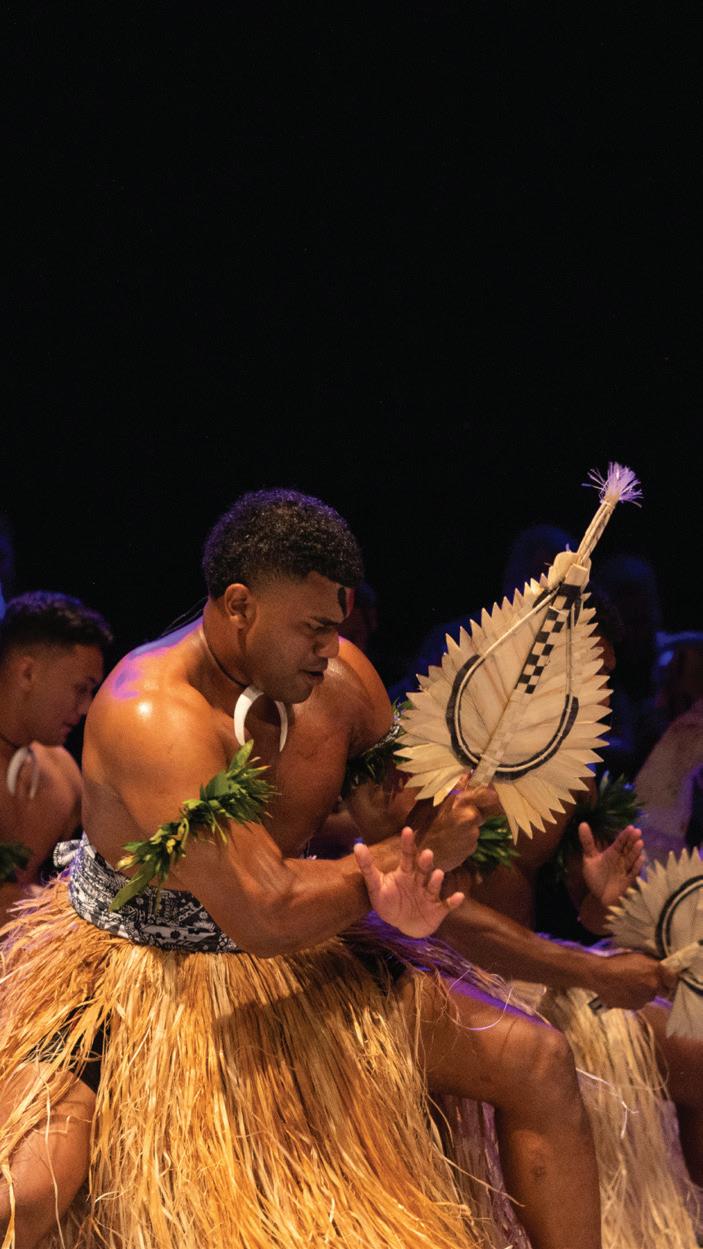
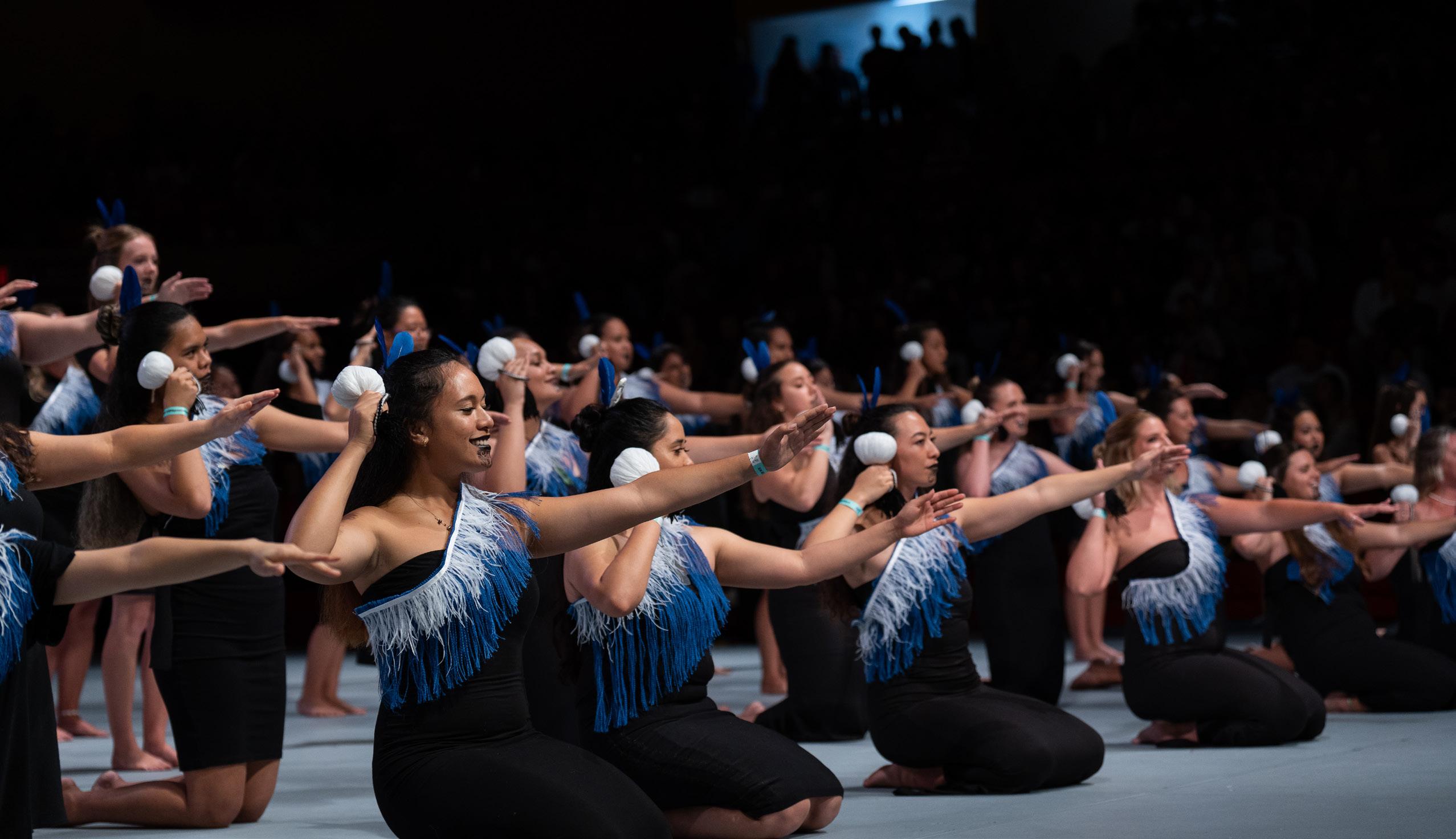


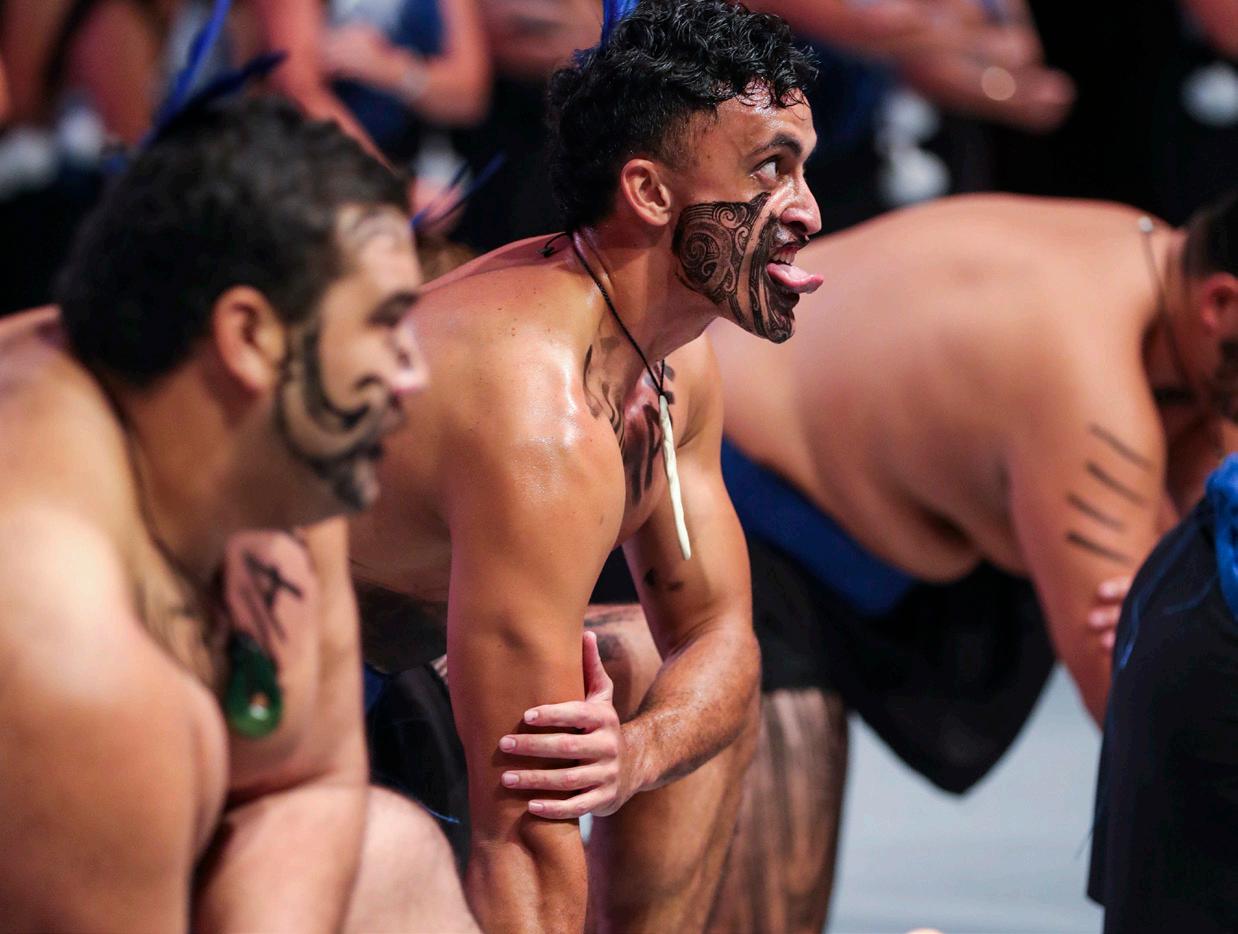
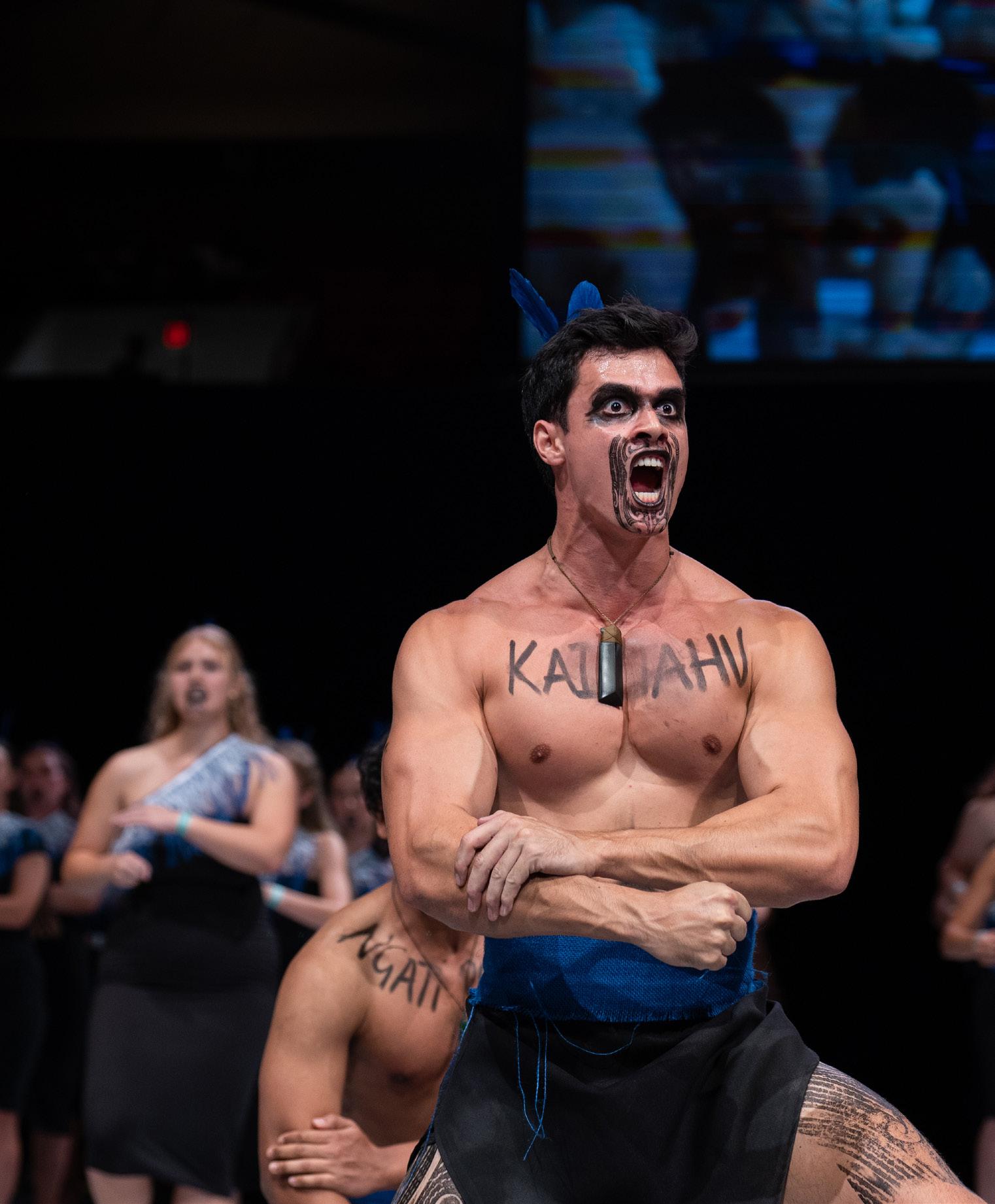
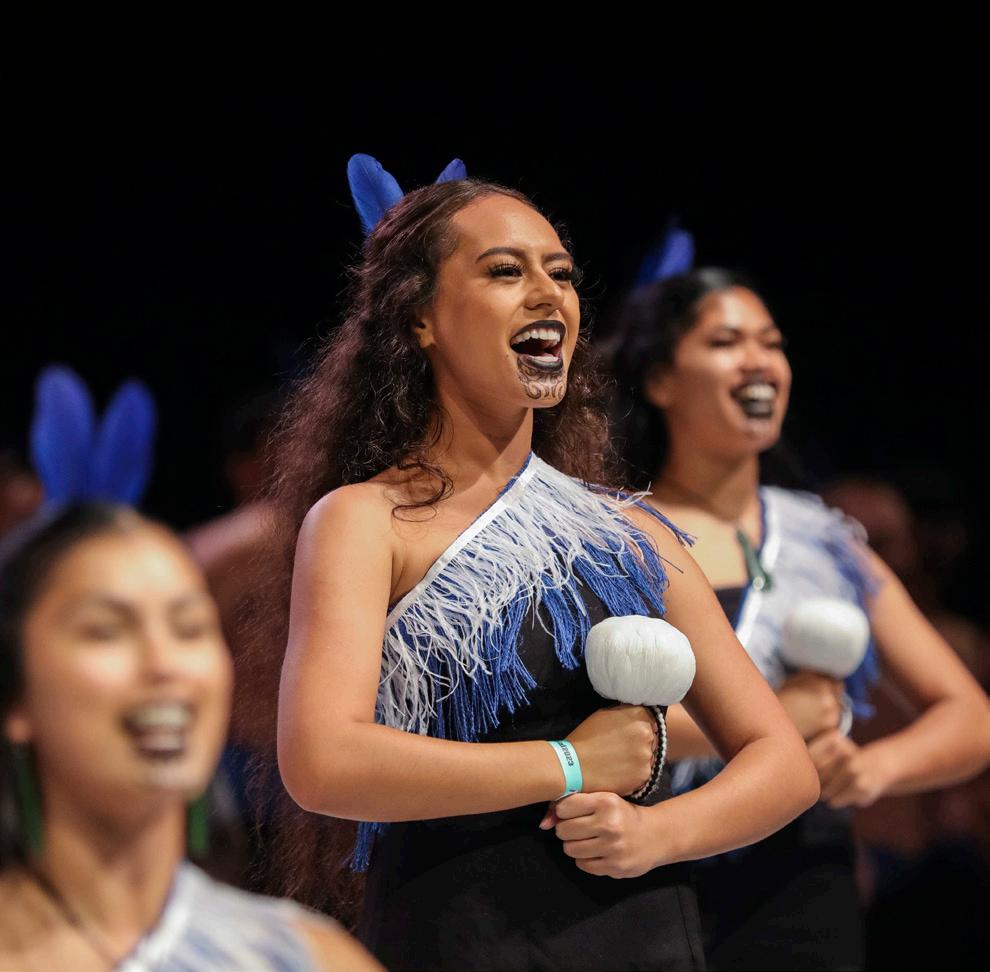

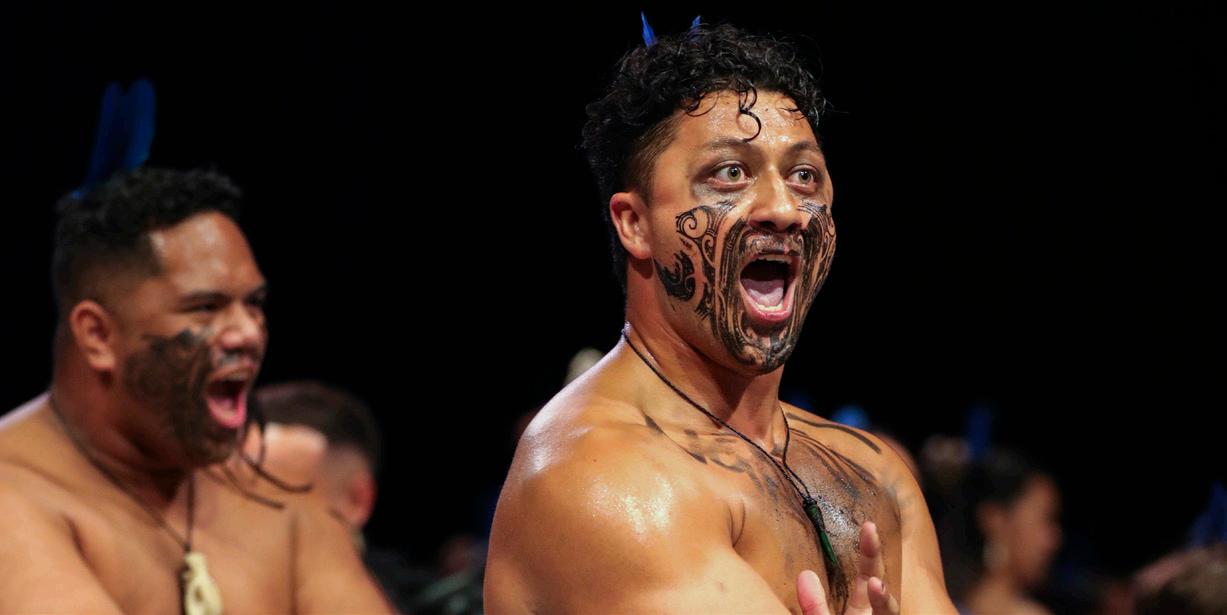
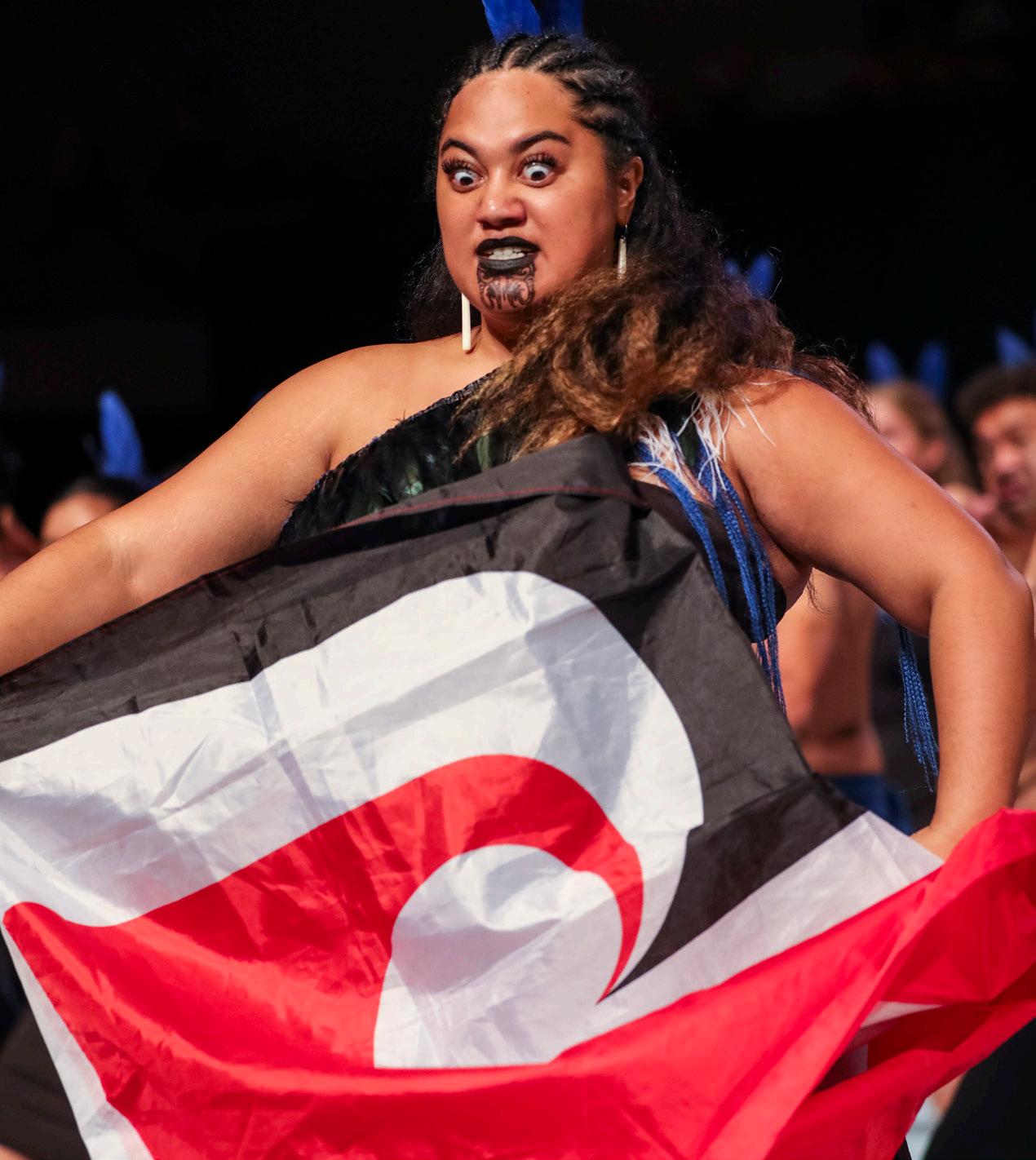
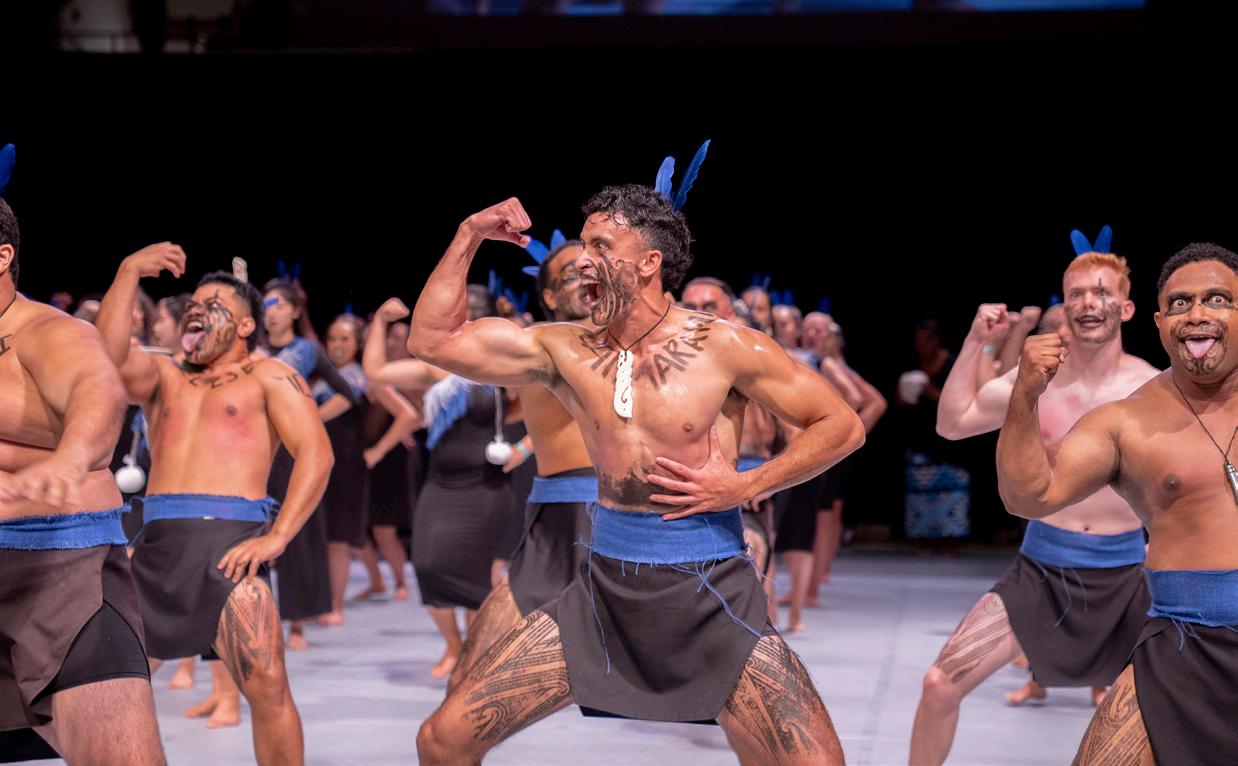
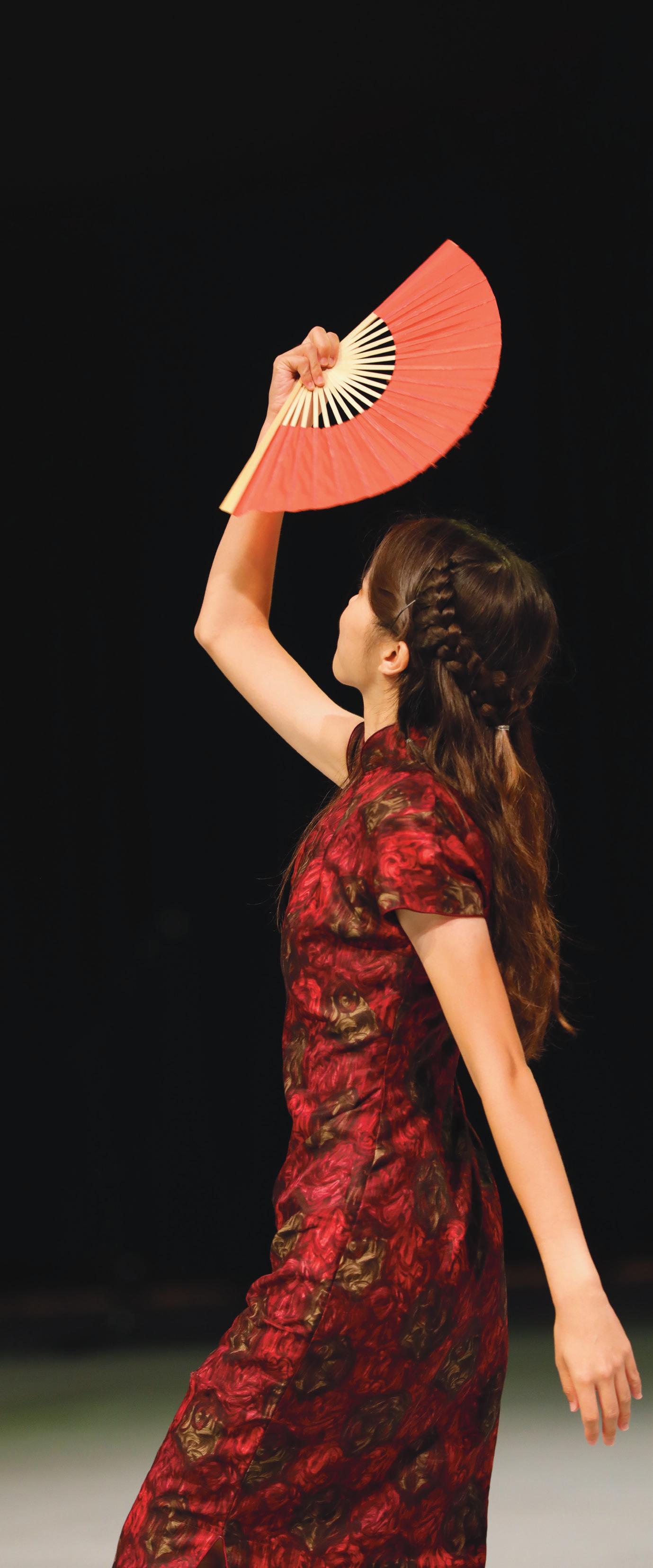
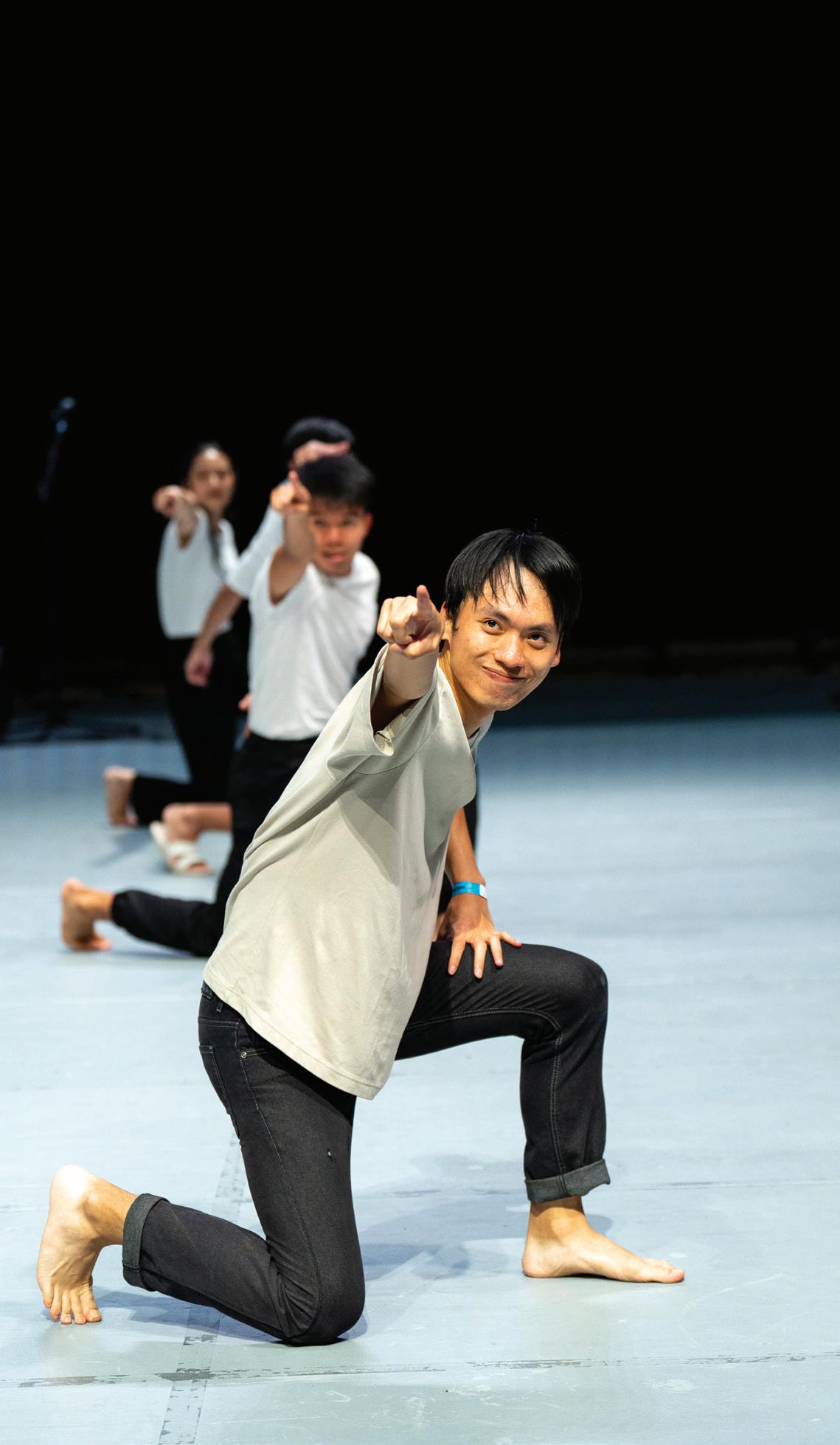

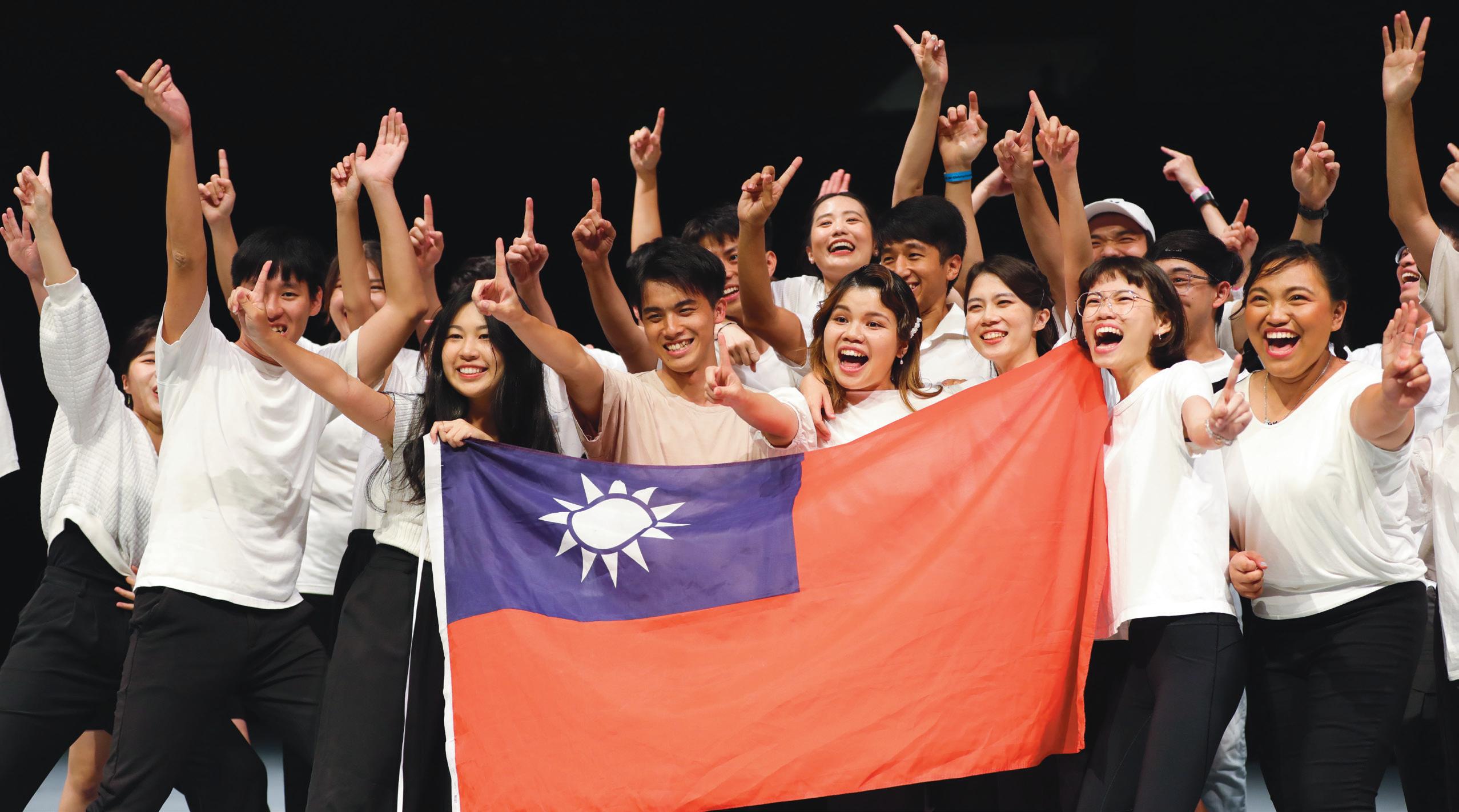

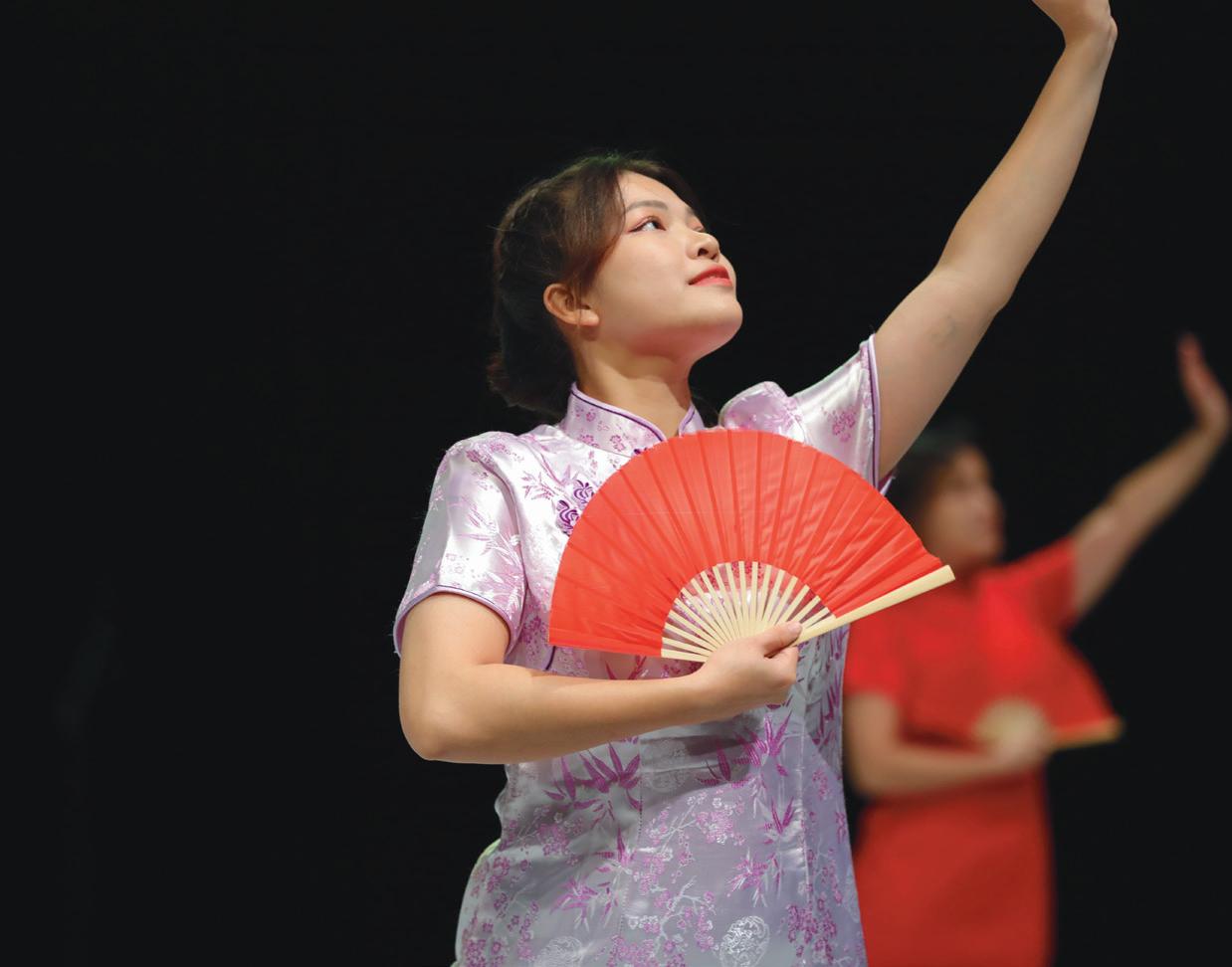

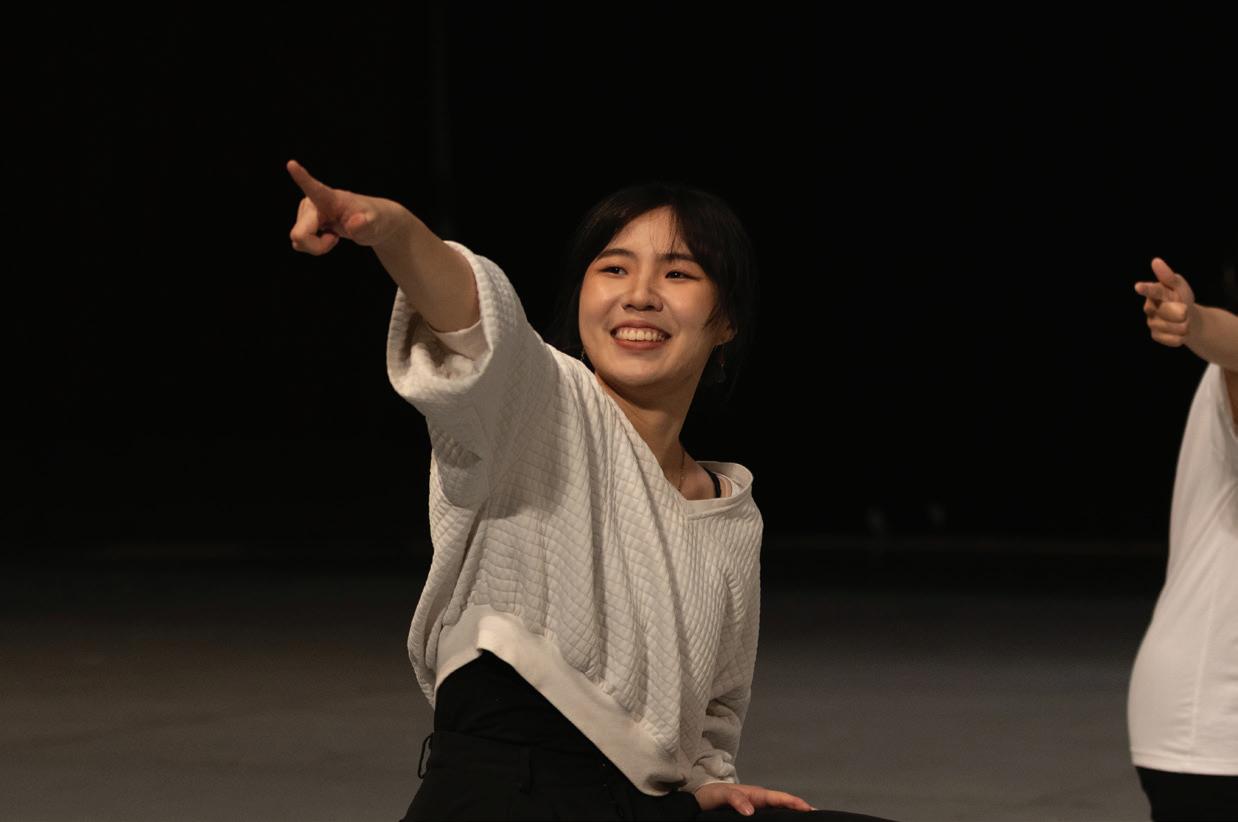
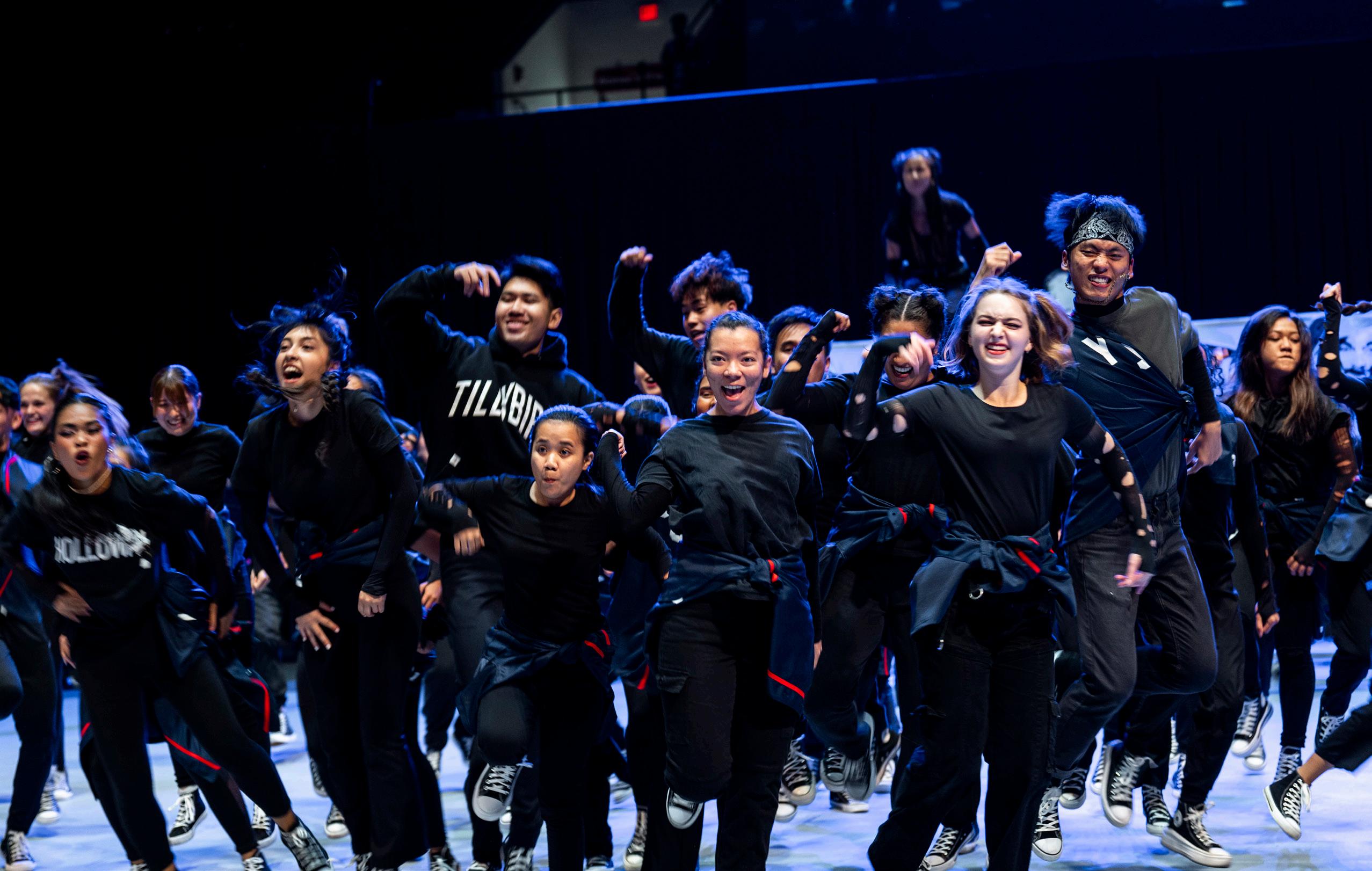


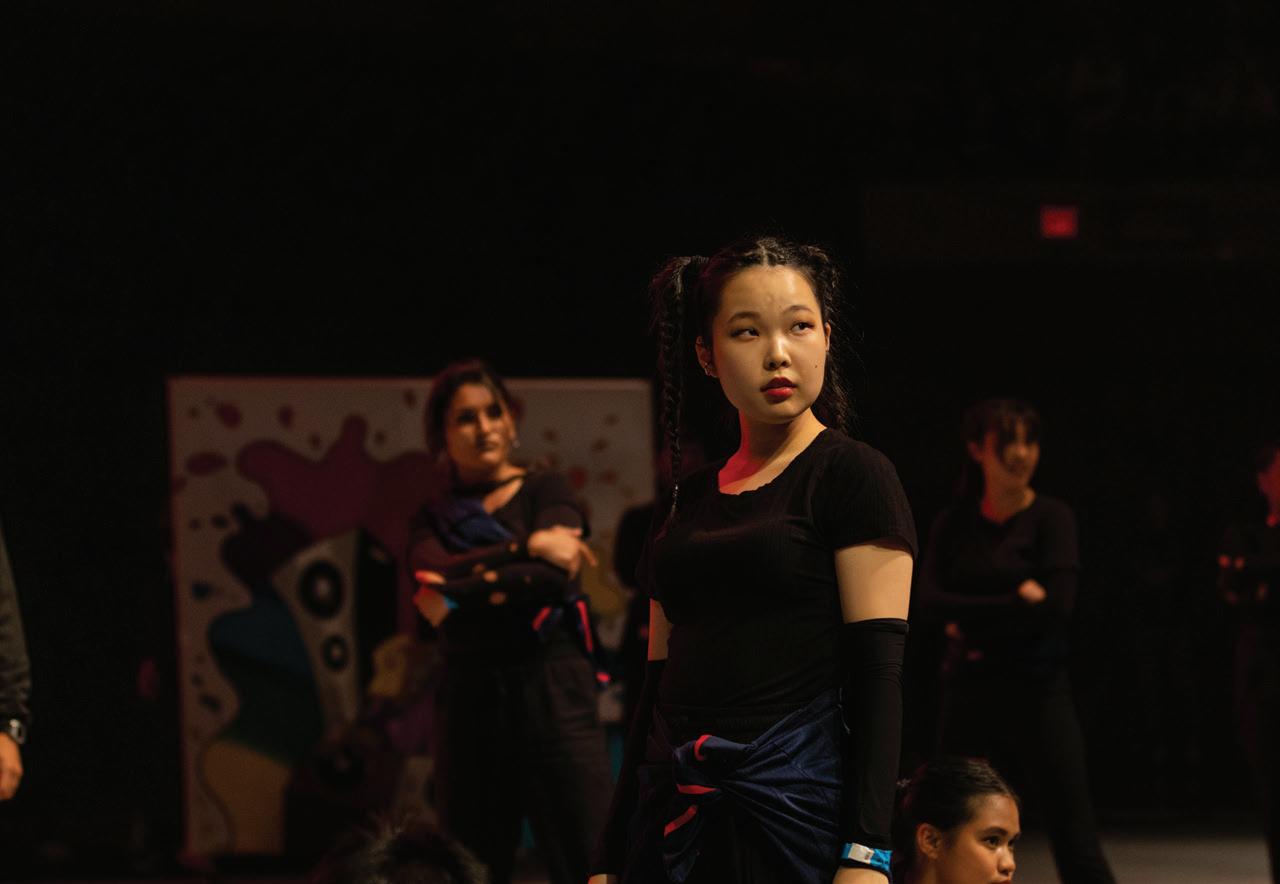

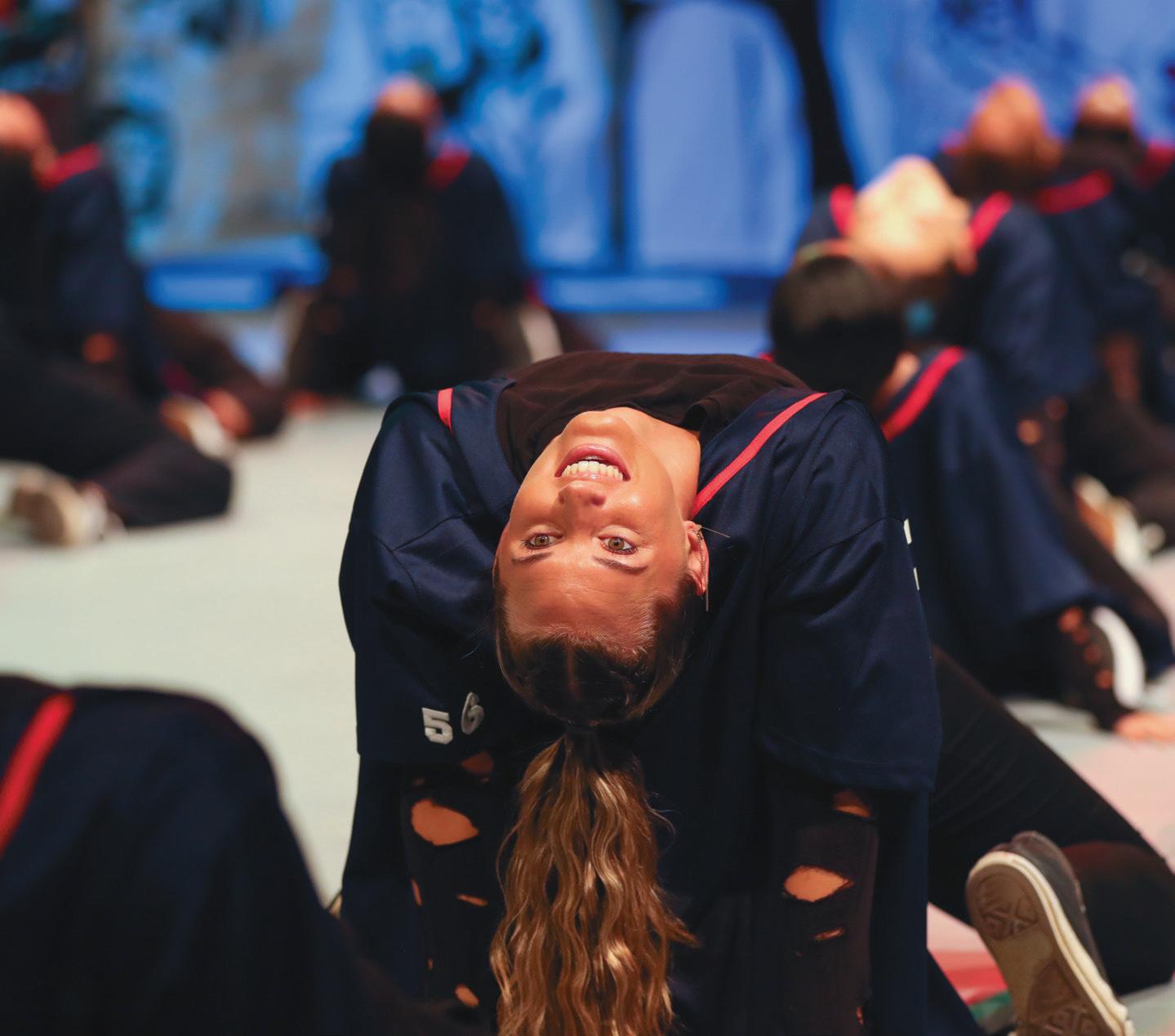
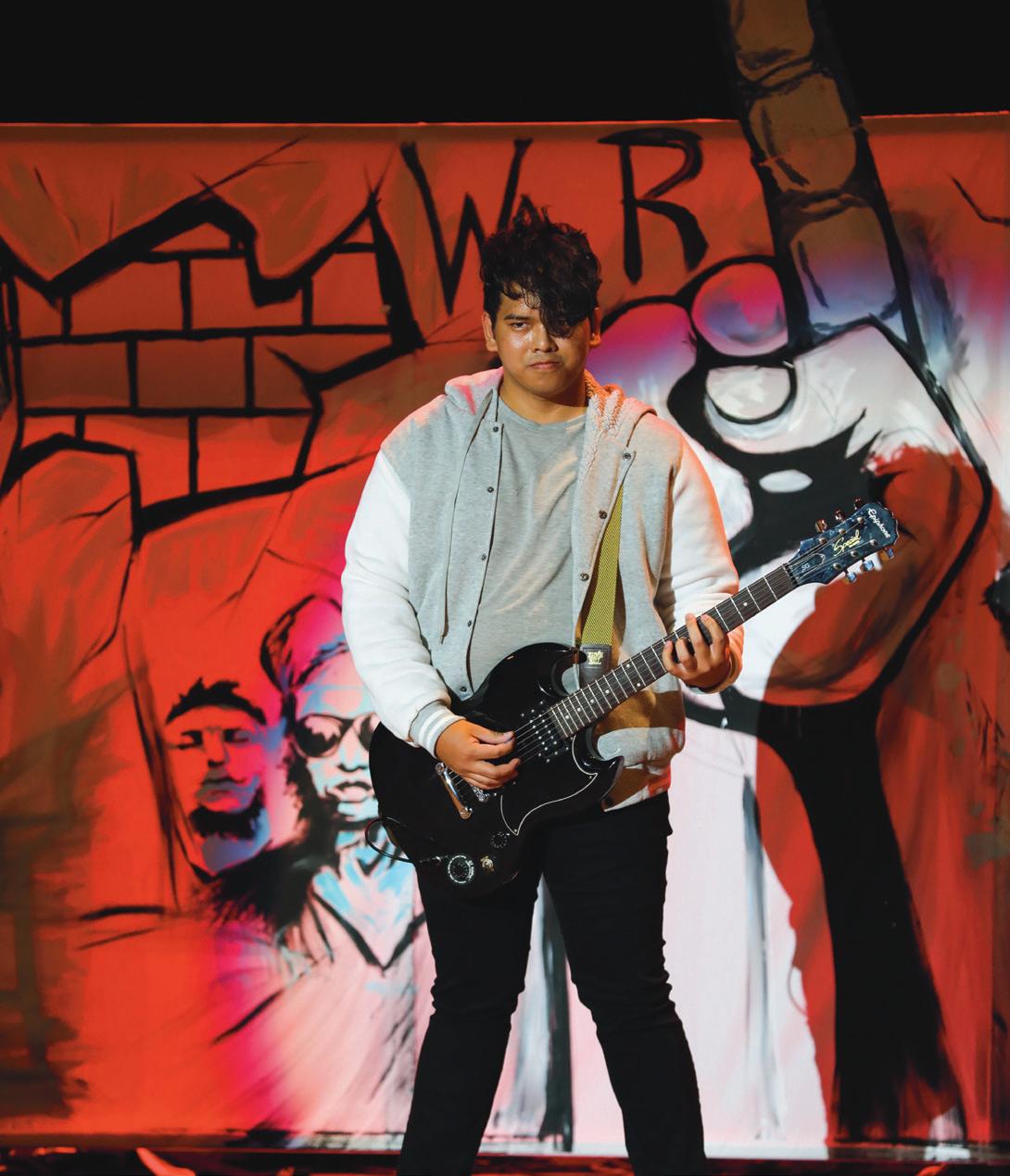
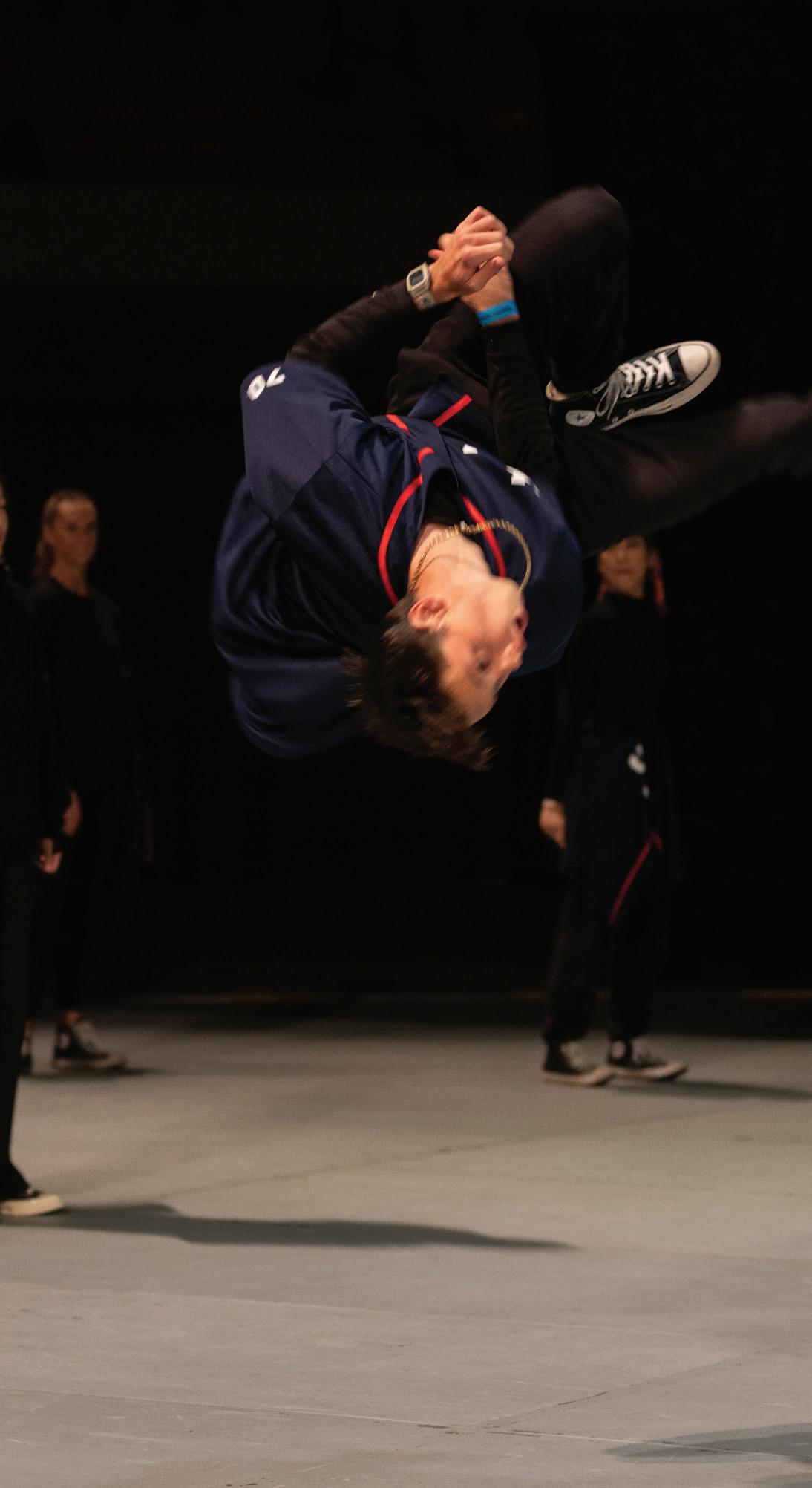
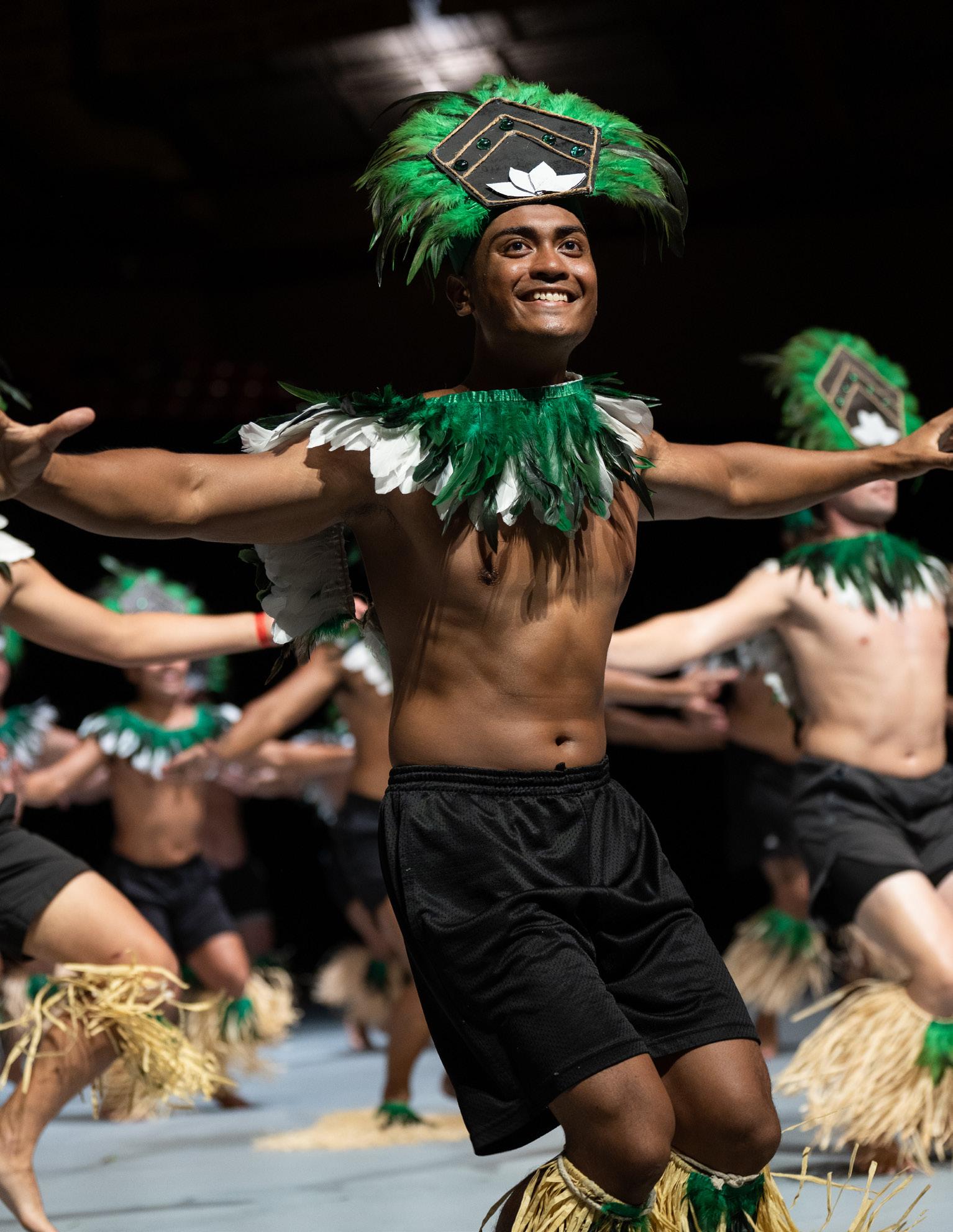
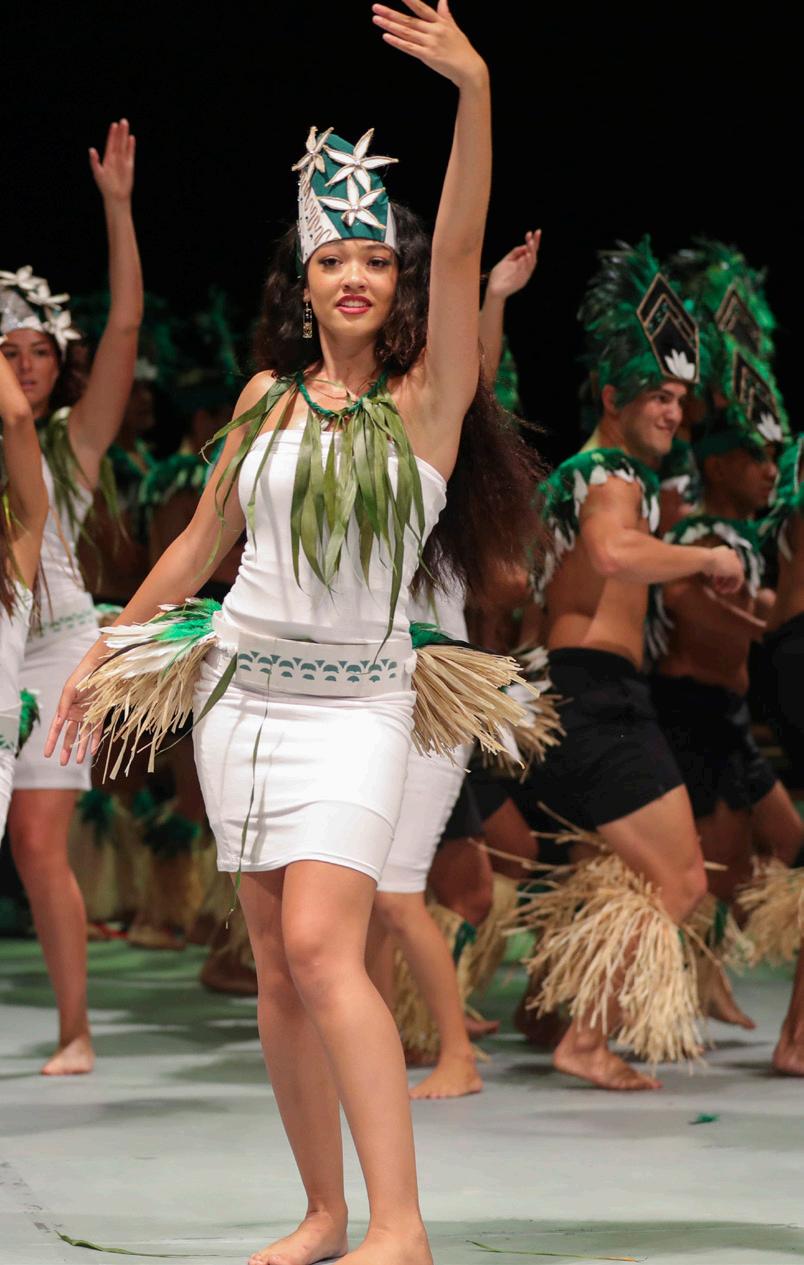
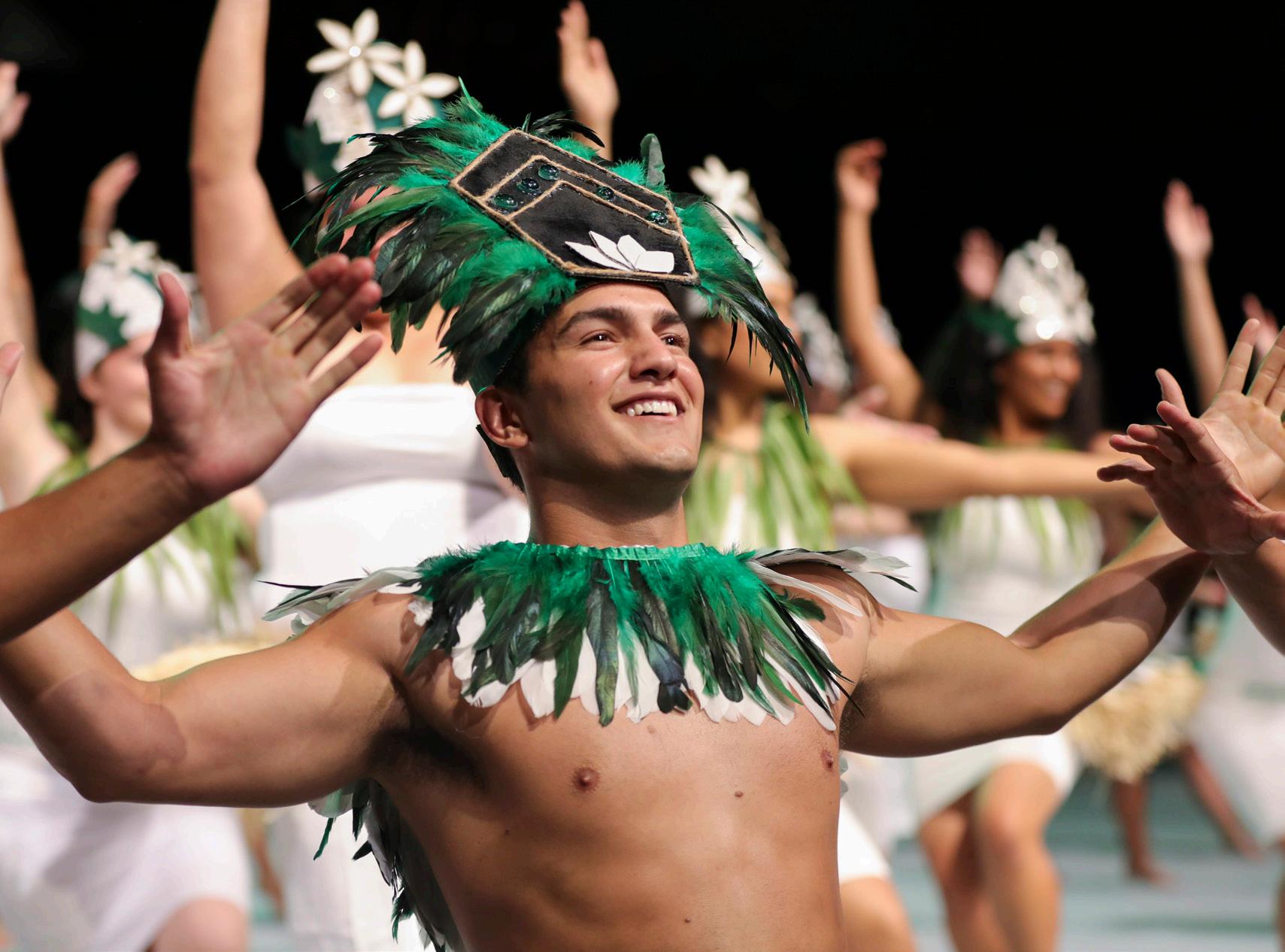
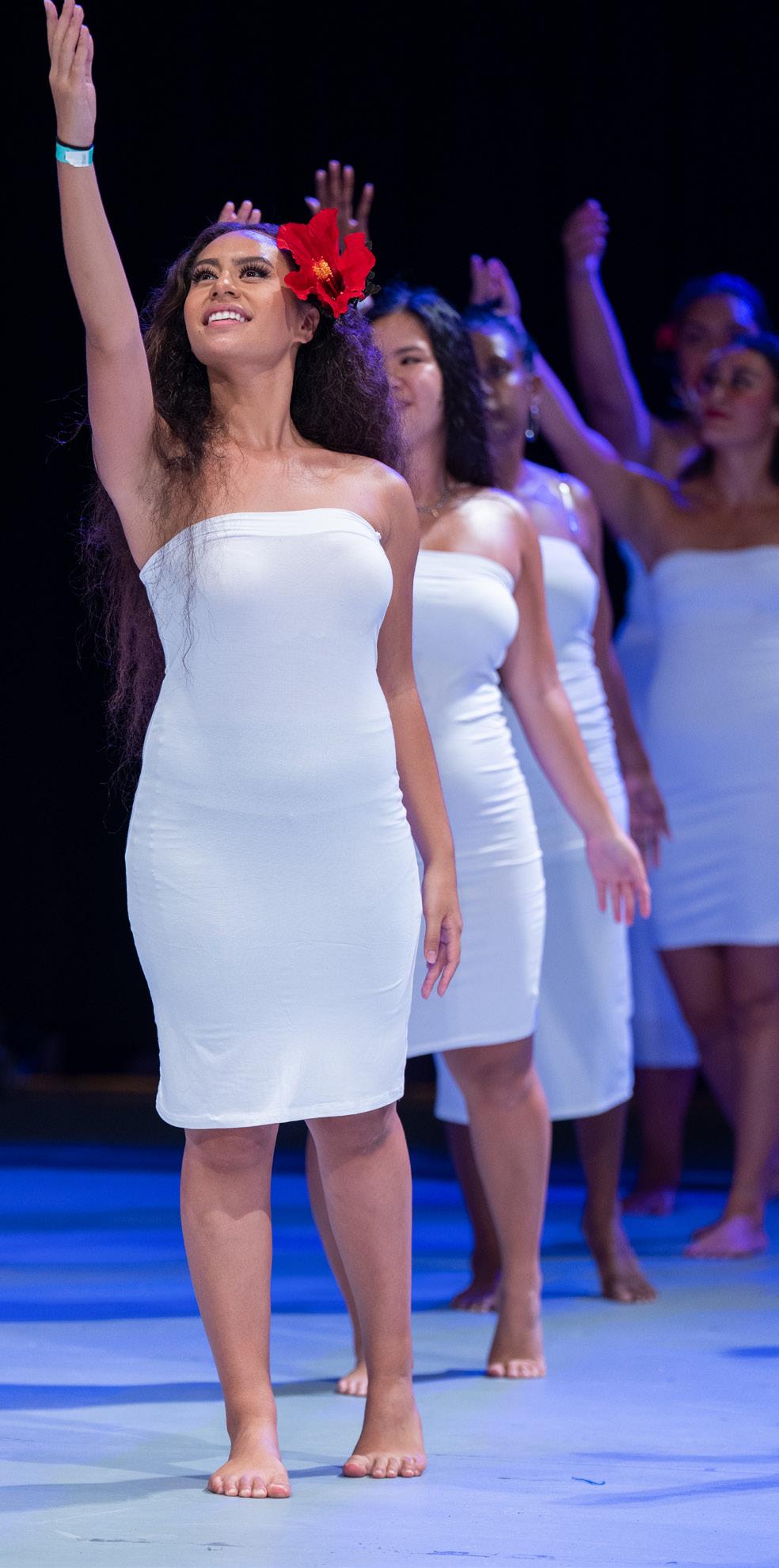
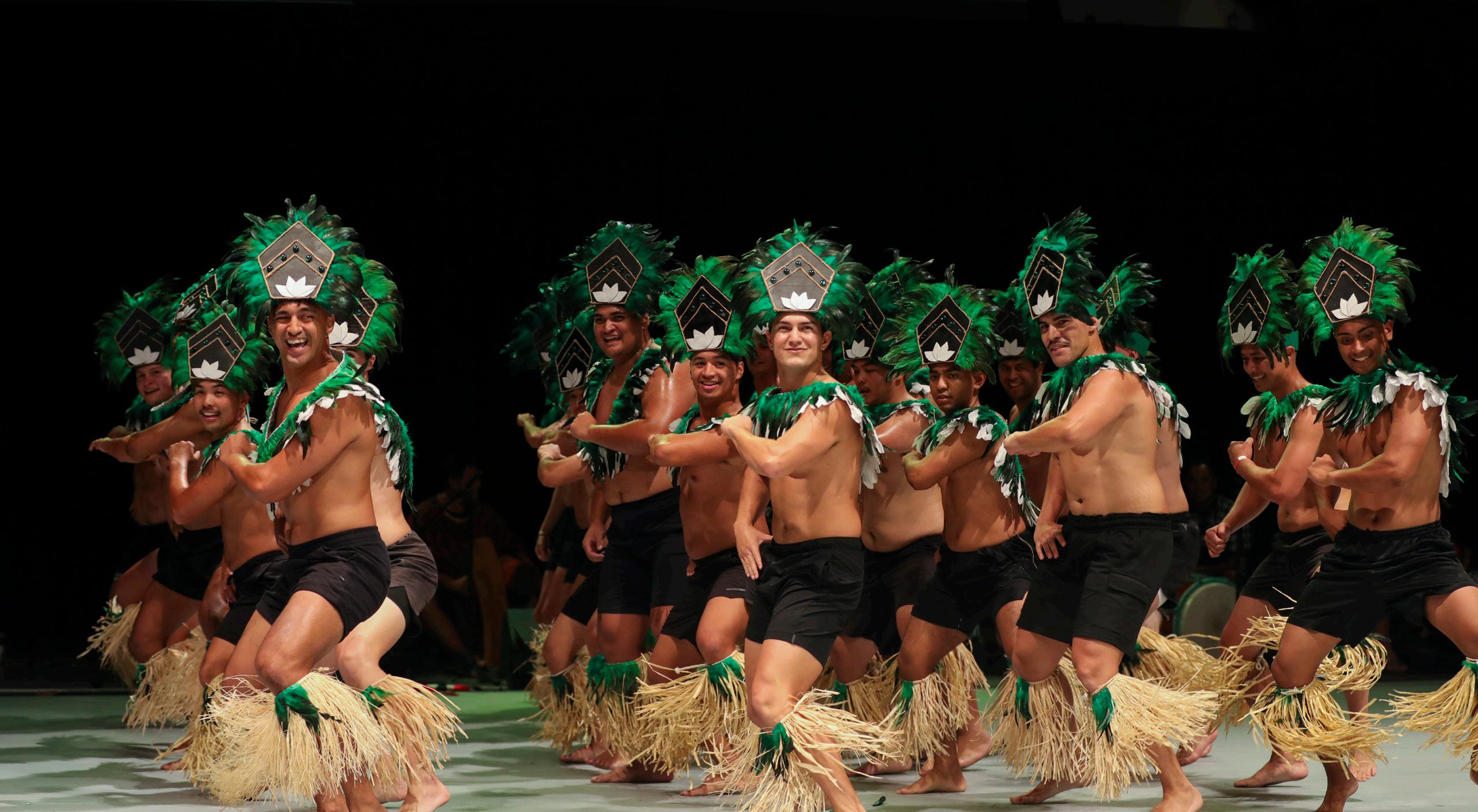

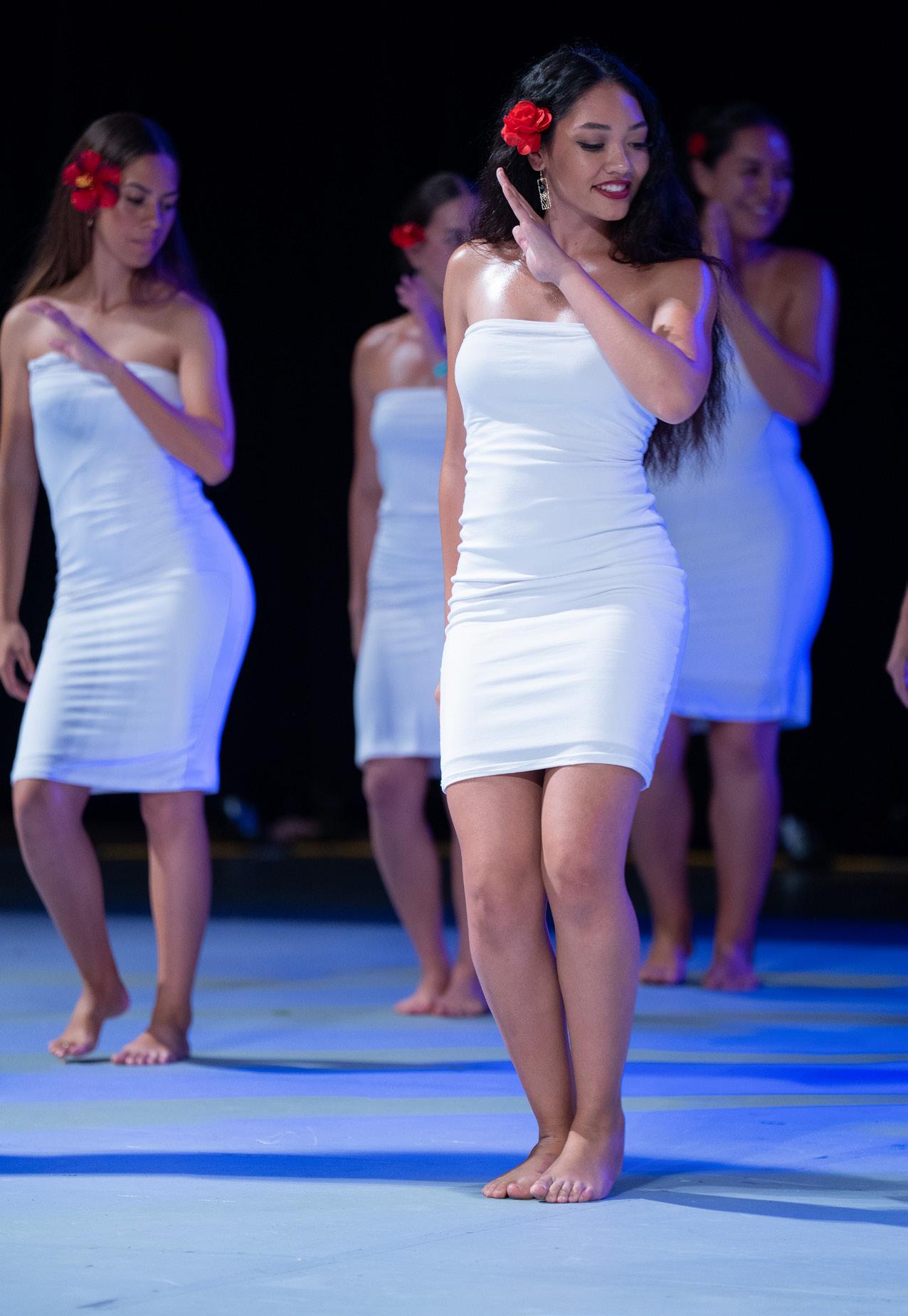
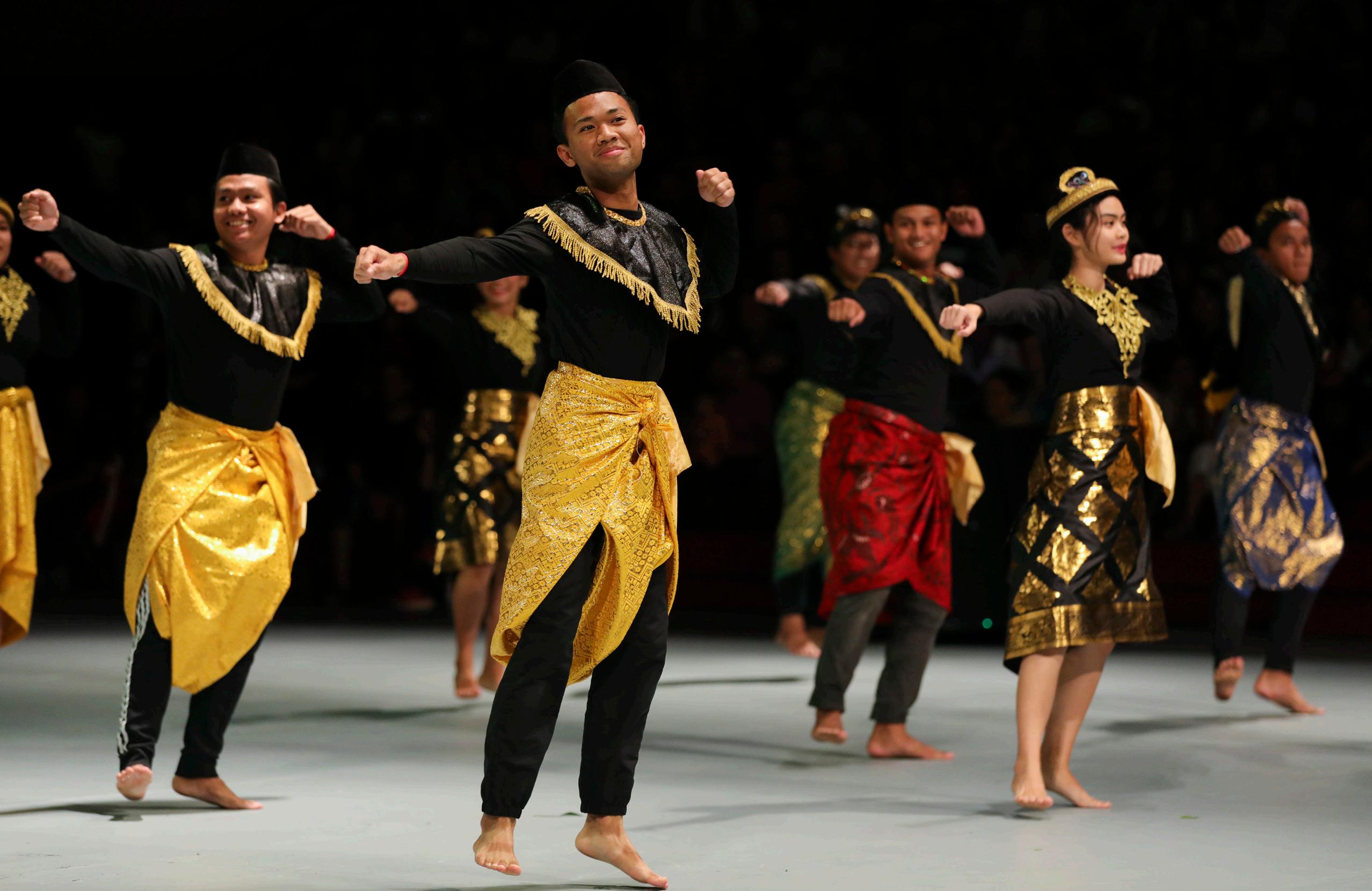
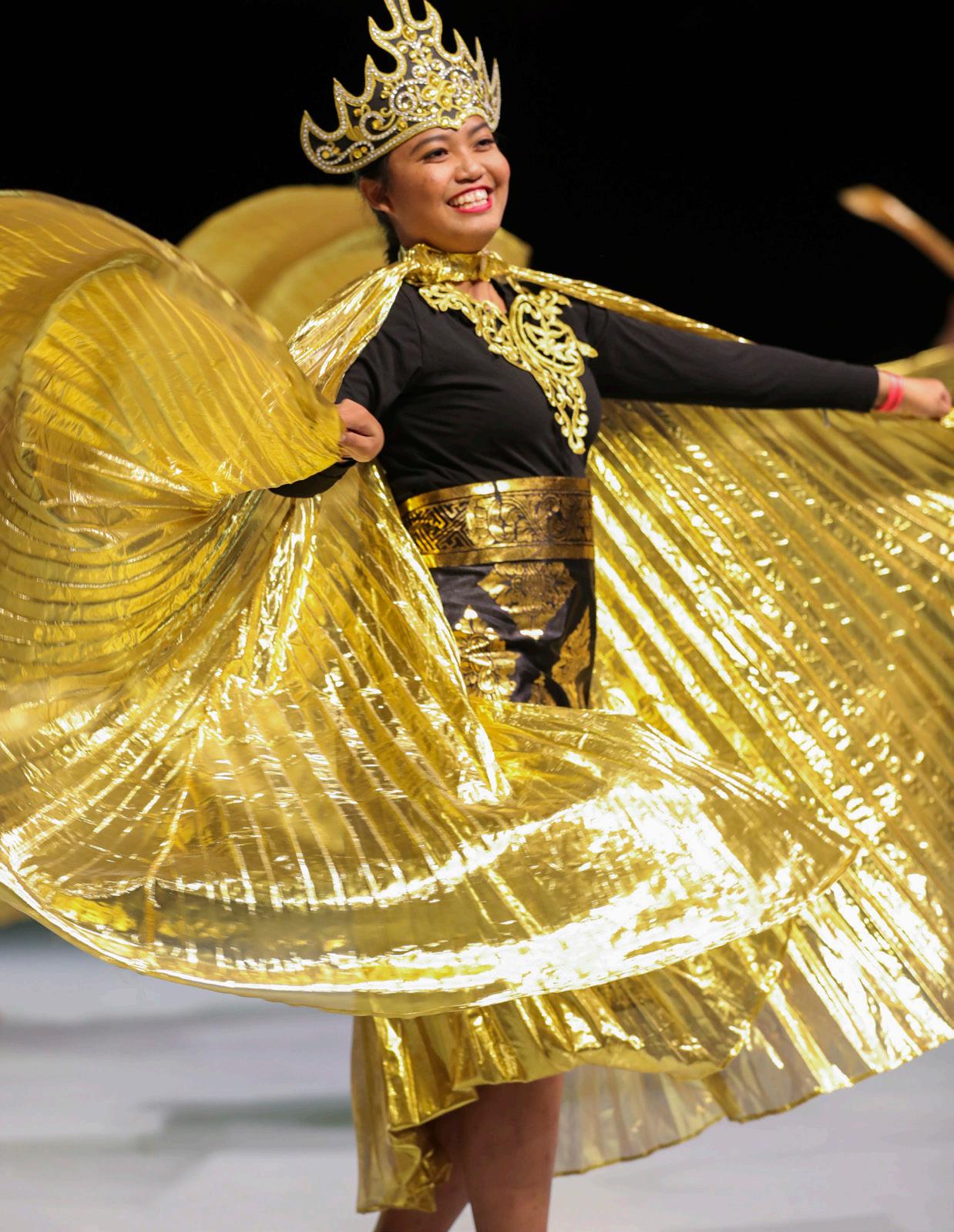
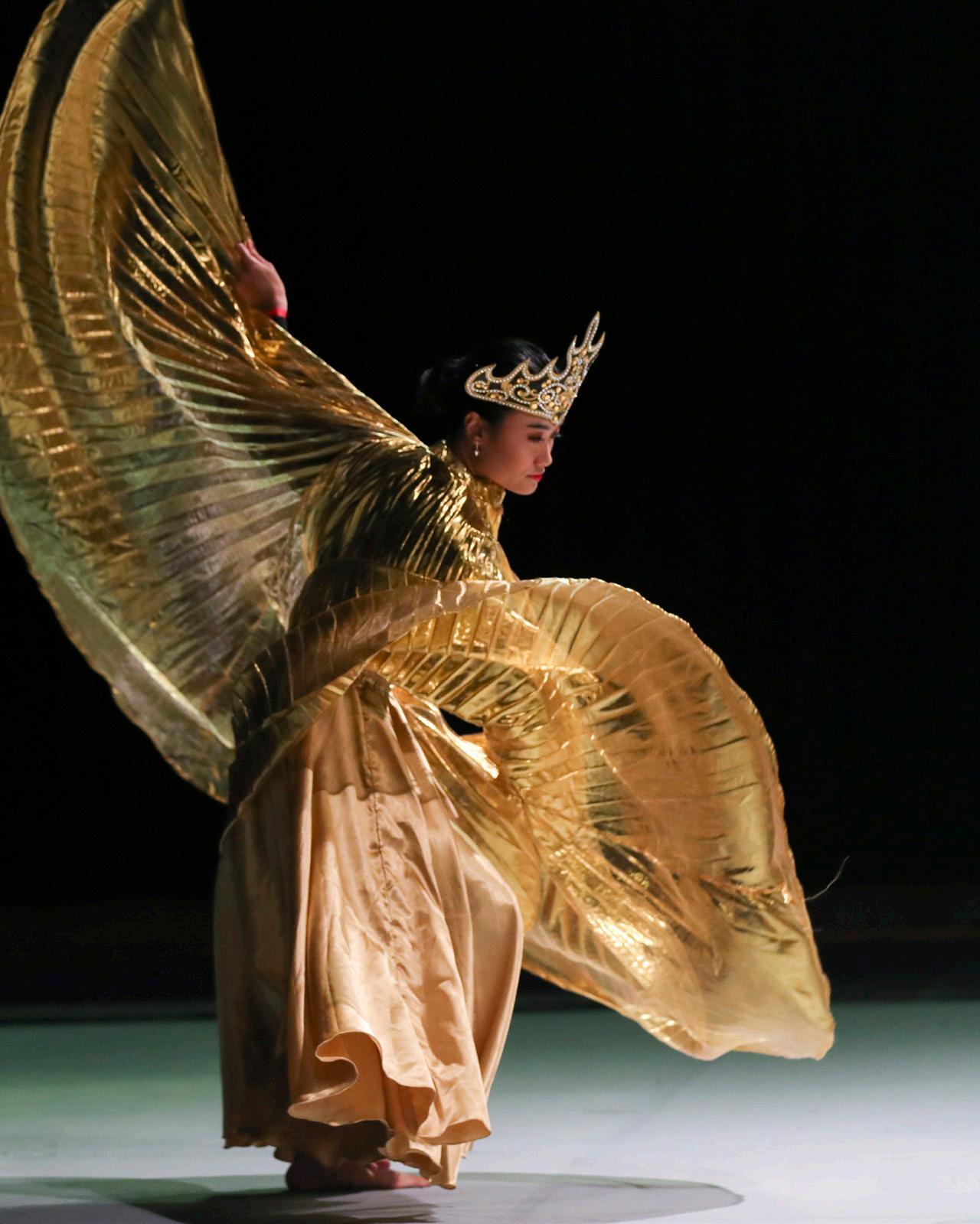


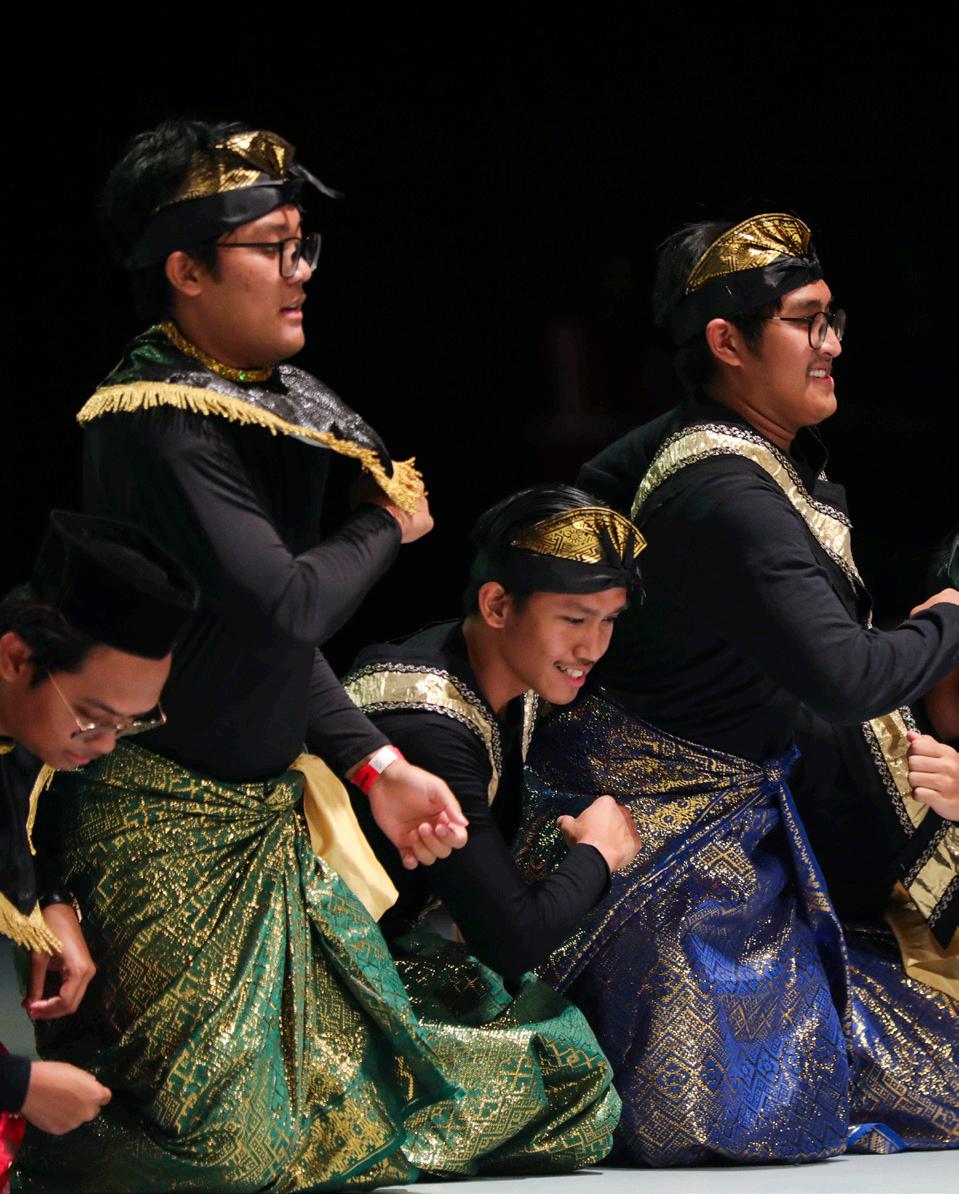
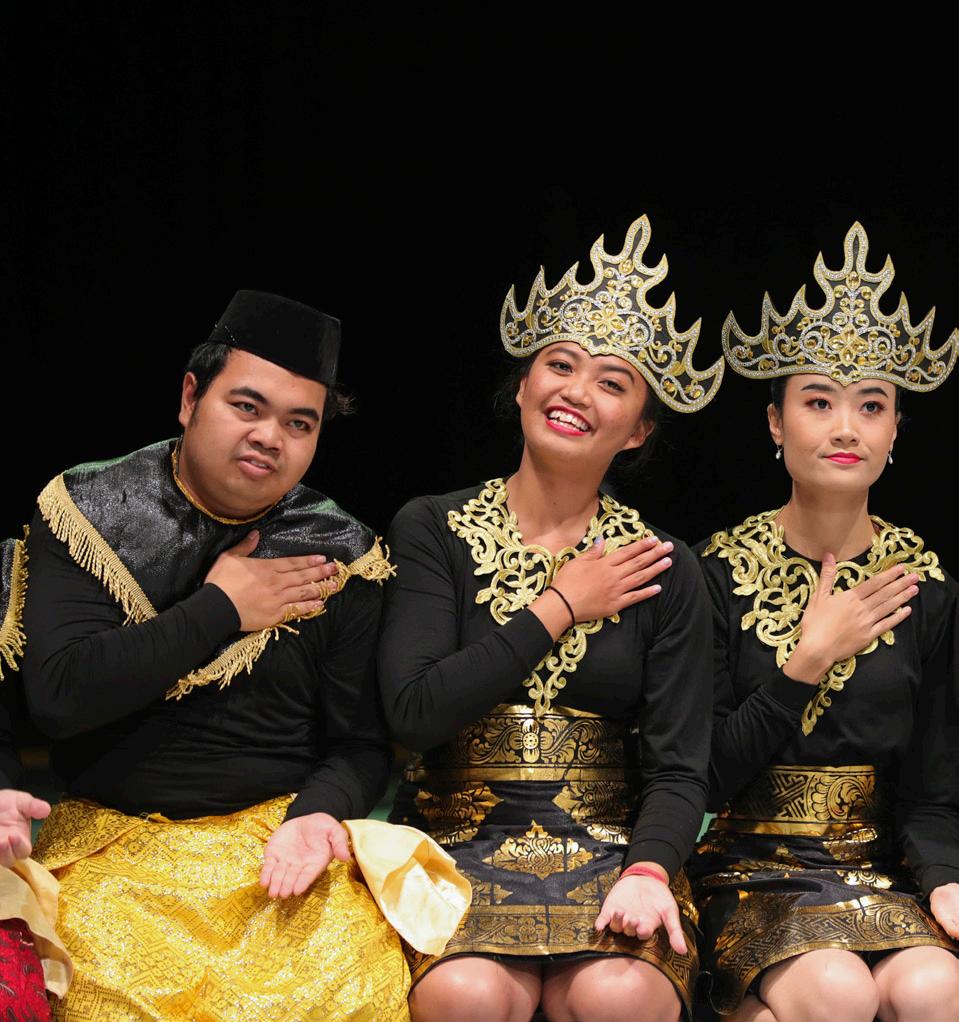
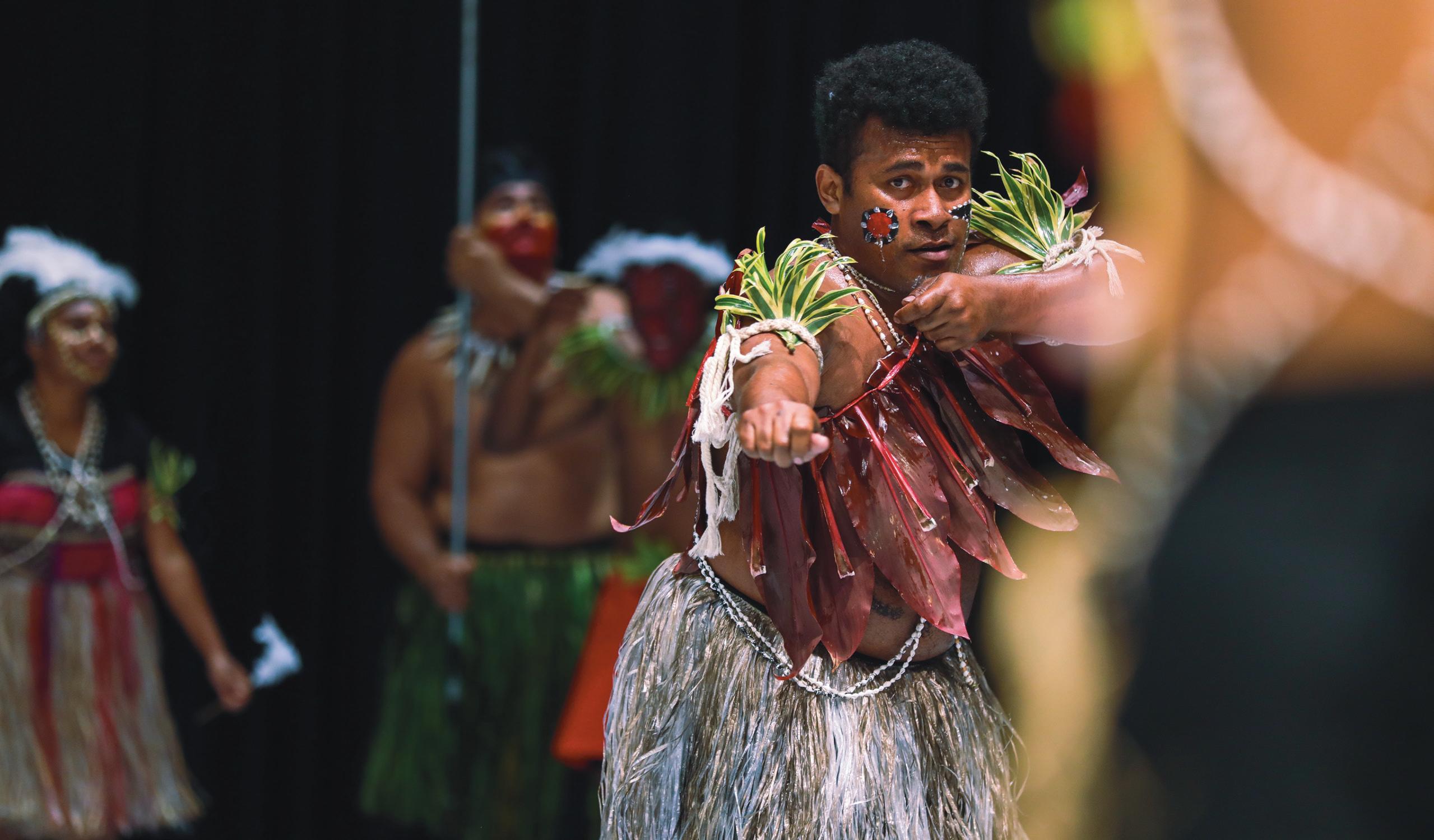

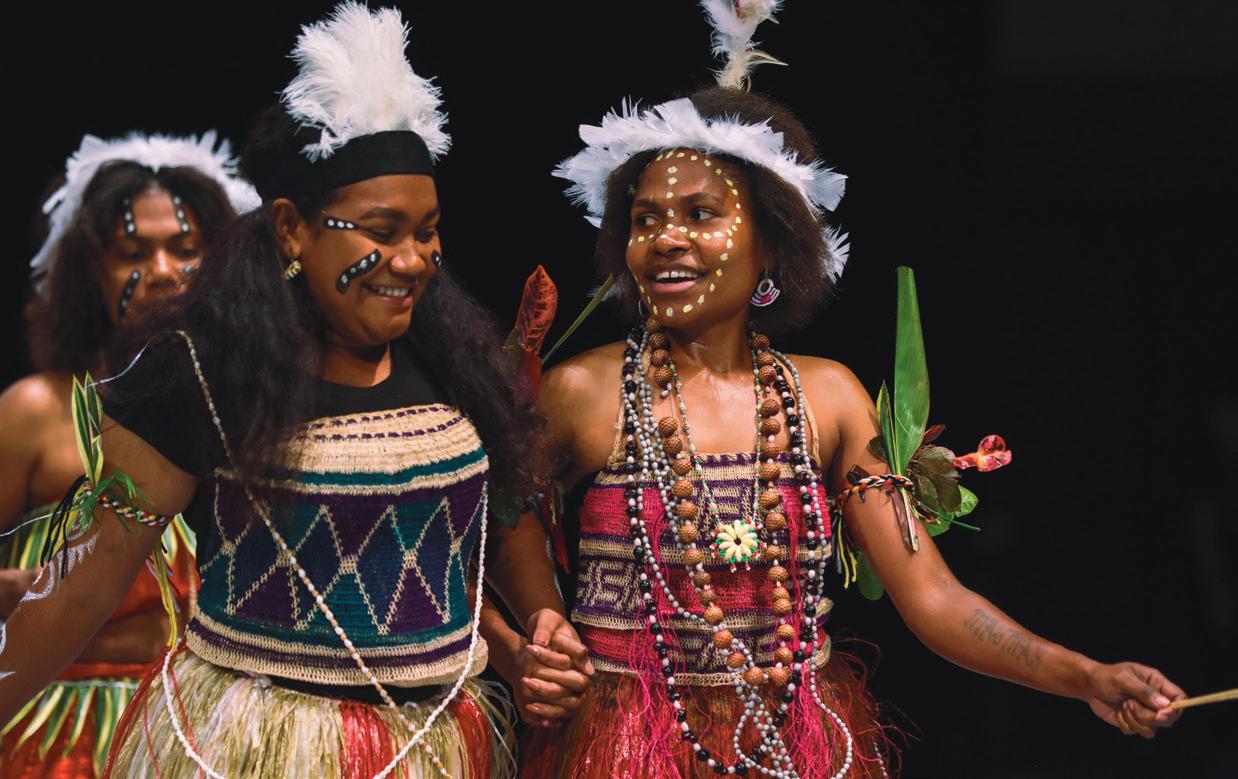
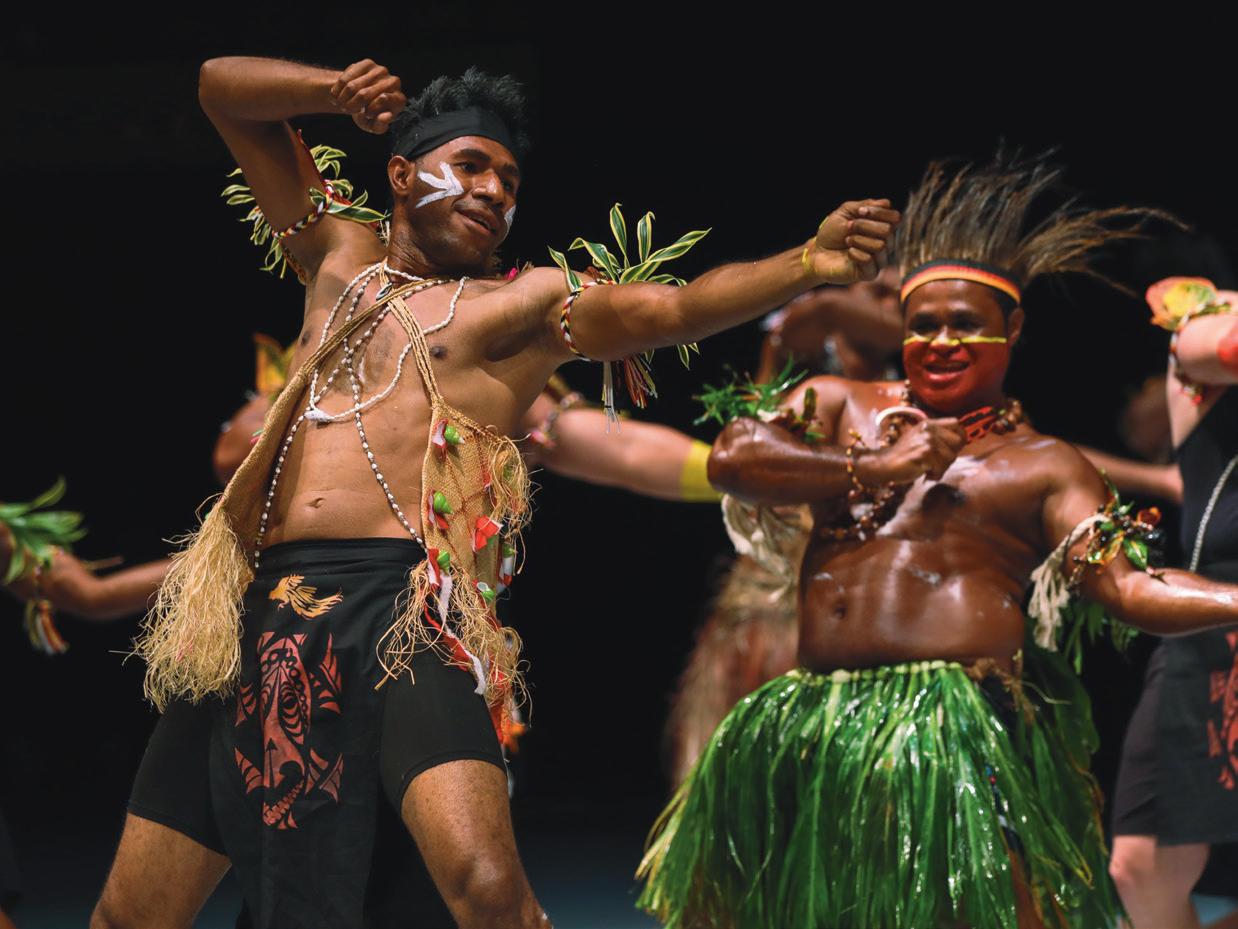
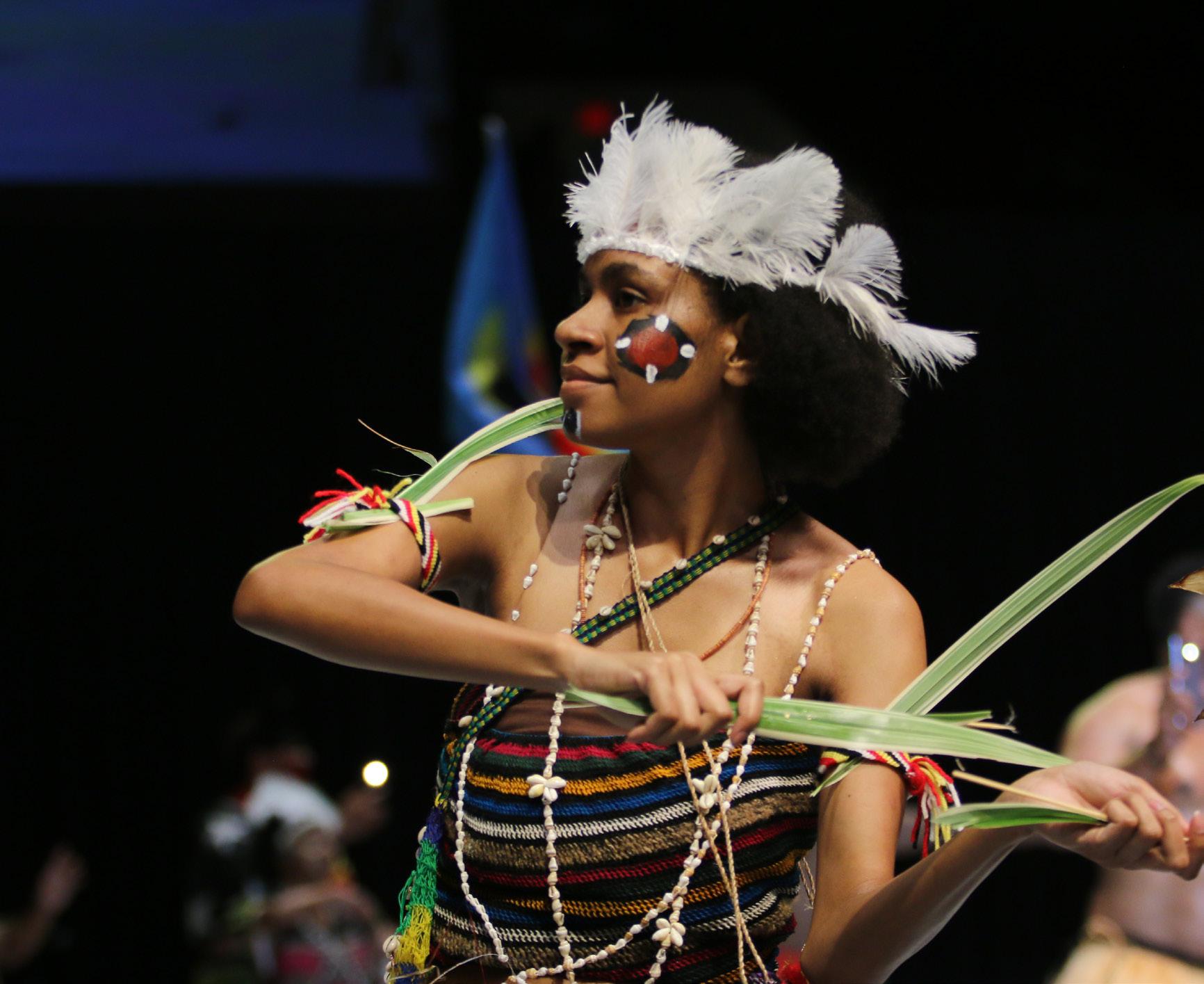

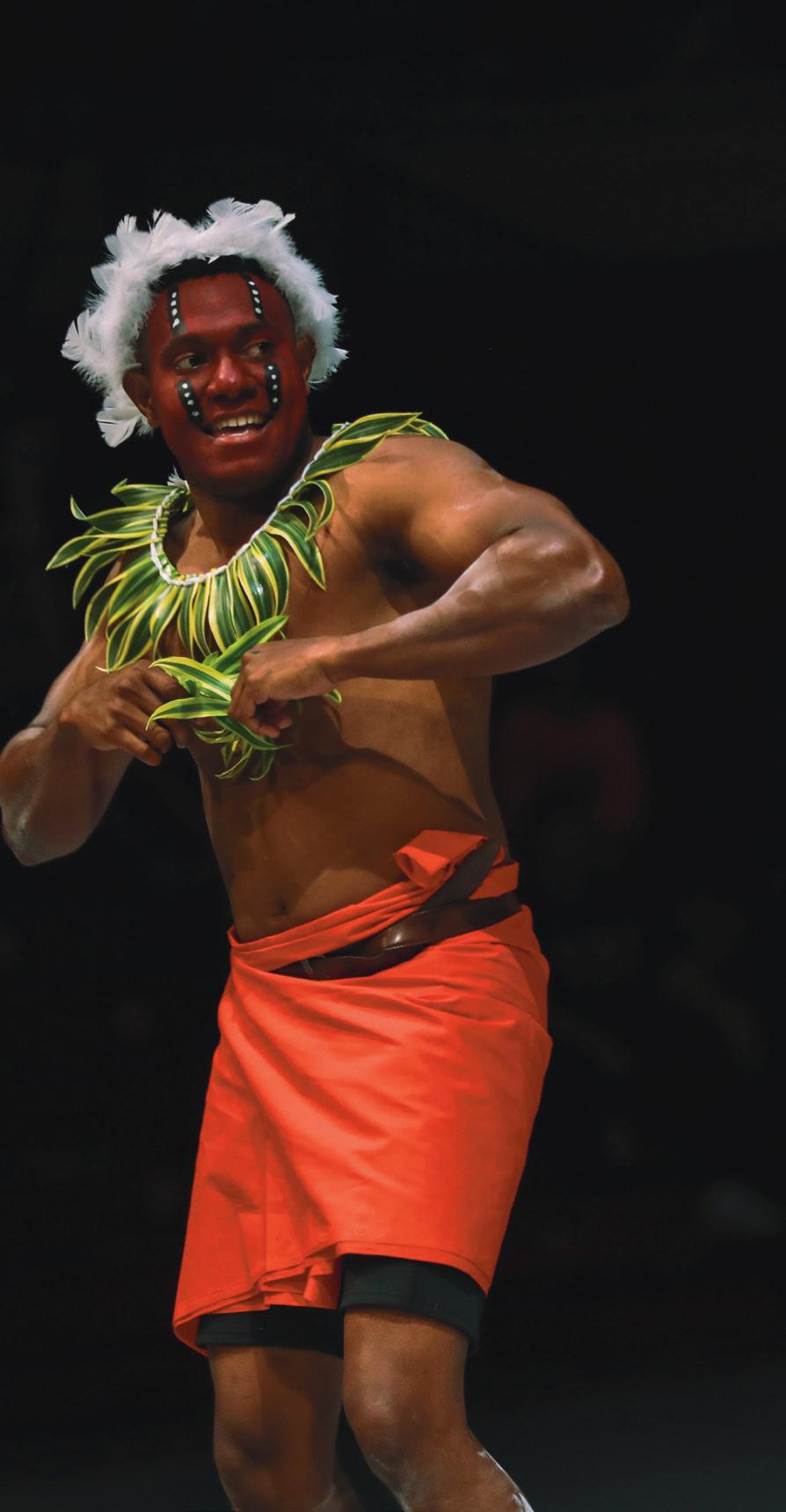
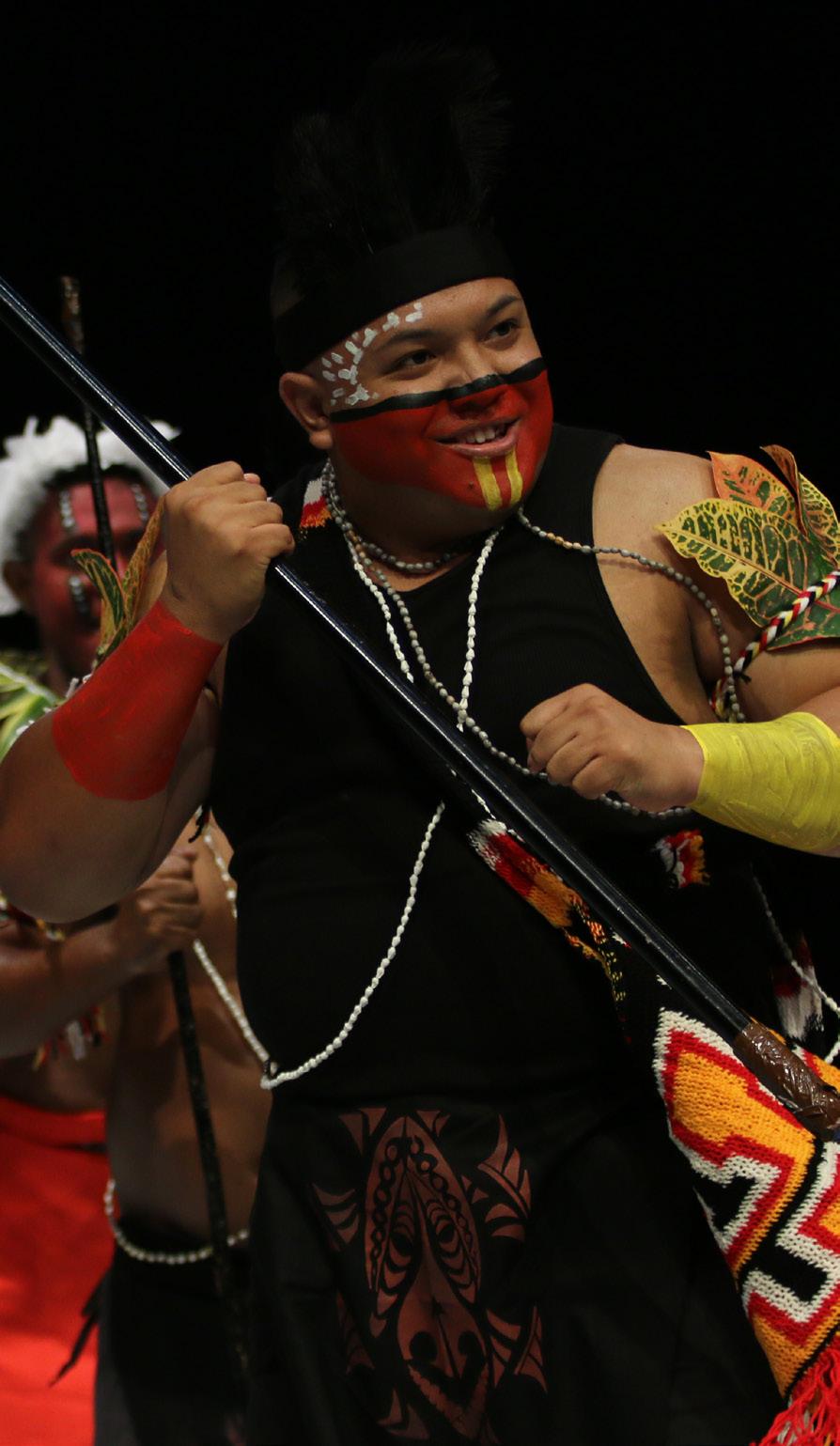
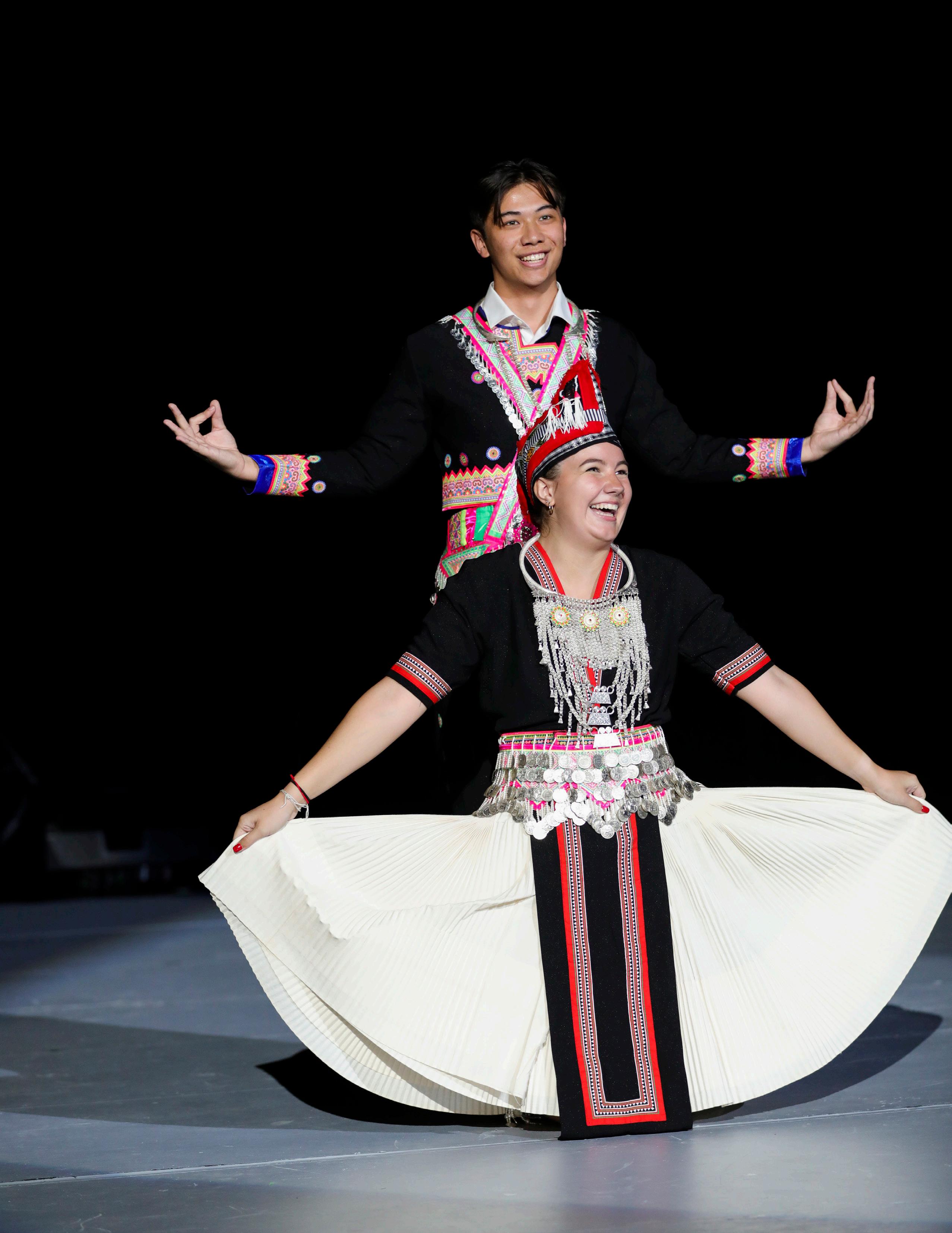 photos: Zane
photos: Zane



